The 10 most wonderful places to visit in Japan

Mar 28, 2024 • 6 min read
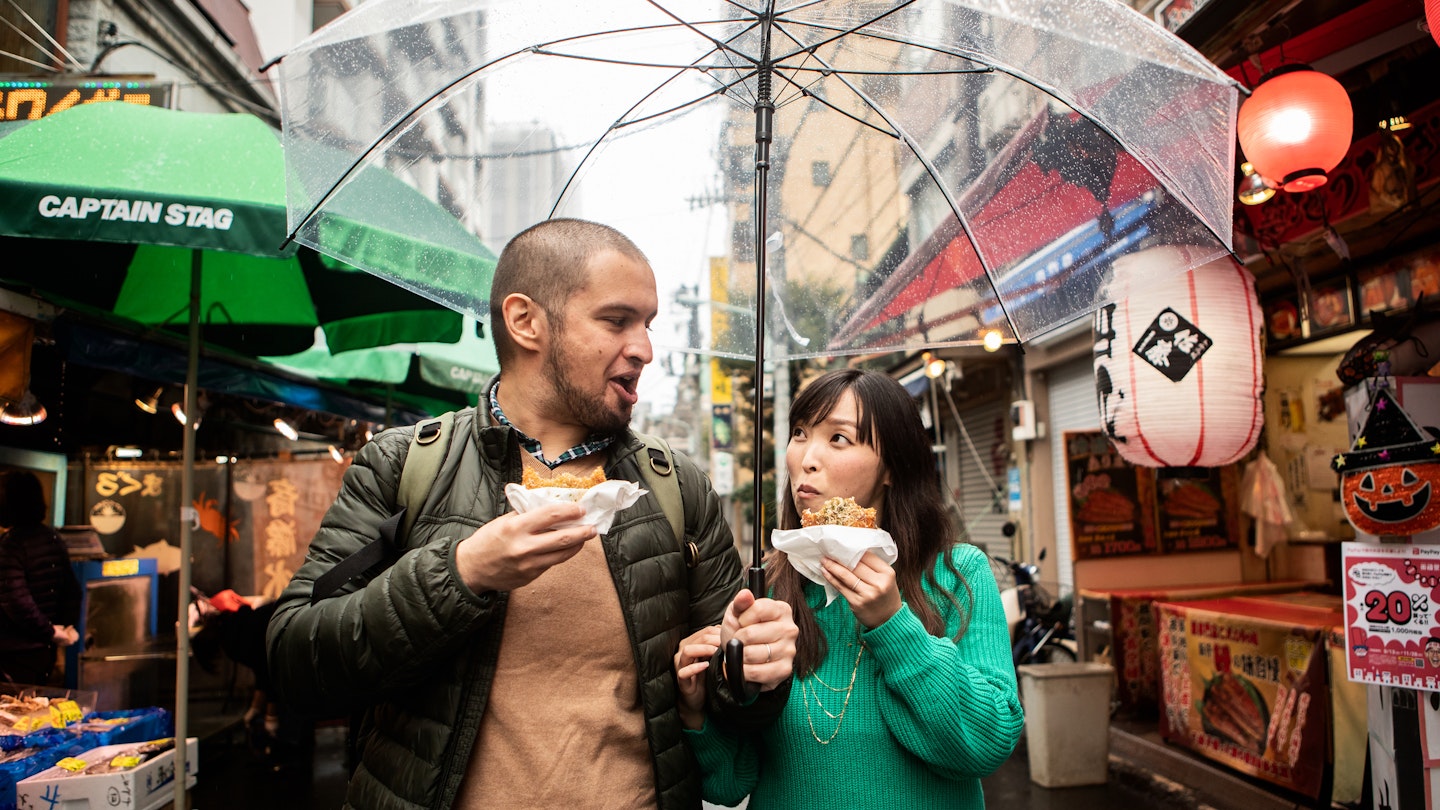
From buzzing cities to serene forest walks, these are our favorite places to visit in Japan © Taiyou Nomachi / Getty Images
Japan offers up a real feast for travelers, with mountainside onsen (hot spring) villages, beach-lined islands and buzzing megacities all on the menu.
You could arguably spend a lifetime sampling the country’s delights, but some towns and sights are staples – core ingredients to any great Japan trip. Here’s our pick of the 10 best places to visit in Japan .
Best for contemporary culture
Tokyo is a city forever reaching into the future, pushing the boundaries of what's possible on densely populated, earthquake-prone land, and building ever taller, sleeker structures.
It's Japan's top spot for contemporary art and architecture, pop culture, shopping, drinking and entertainment (and a tie with Kyoto for dining). But more than any other sight, it's the city itself that enchants visitors.
It's a sprawling, organic thing, stretching as far as the eye can see. Constantly changing with a diverse collection of neighborhoods , no two experiences of Tokyo are ever the same.
Planning tip: Tickets for sumo, kabuki and Giants baseball games usually go on sale one to two months in advance. The Imperial Palace and Ghibli Museum are other popular attractions that require prior planning.

Best for traditional experiences
Kyoto , Japan's imperial capital for a thousand years, is home to more than a thousand temples. Among them are the monumental, like Kinkaku-ji (an exquisite pavilion sheathed entirely in gold leaf), and the meditative, like Ryōan-ji , with its stark Zen rock garden.
And temples are only the beginning. There's the culture of tea, which you can appreciate at one of the city's many elegant teahouses; the art of the geisha, those iconic performers of traditional music and dance; and also a rich food culture, including kaiseki (Japanese haute cuisine).

3. Naoshima
Best for architecture
Naoshima is one of Japan's great success stories: once a rural island on the verge of becoming a ghost town, it's now a world-class center for contemporary art.
Many of Japan's most lauded architects have contributed structures, including museums, a boutique hotel and even a bathhouse – all designed to enhance the island's natural beauty and complement its existing settlements.
The resulting blend of avant-garde and rural Japan is captivating. It has also inspired some Japanese to pursue a slower life outside the big cities, relocating to Naoshima to open cafes and inns.
Planning tip: Try to plan your visit during one of the three exhibitions of the Setouchi Triennale festival, which happens during the spring, summer and fall every three years – the most recent was in 2022. Naoshima hosts various art, drama, music and dance events that make this festival really special.

Best for views and pilgrimages
Even from a distance, Mt Fuji will take your breath away. Close up, the perfectly symmetrical cone of Japan's highest peak is nothing short of incredible. Dawn from the summit? Pure magic.
Fuji-san is among Japan's most revered and timeless attractions. Hundreds of thousands of people climb it every year, continuing a centuries-old tradition of pilgrimages up the sacred volcano.
Those who'd rather search for picture-perfect views from the less-daunting peaks nearby will be following in the steps of Japan's most famous painters and poets.
Planning tip: The best time to climb Mt Fuji is during its official season, from July 1 through mid-September, which avoids the rainy season and snowfall. Always check for typhoon warnings before hiking in Japan.
5. Hiroshima
Best for introspection
Hiroshima today is a forward-thinking city with attractive, leafy boulevards. It's not until you visit the Peace Memorial Museum that the true extent of human tragedy wreaked by the atomic bomb becomes vividly clear.
A visit here is a heartbreaking, important history lesson. The park around the museum , much of which was designed by Japan's great modernist architect Tange Kenzō, offers many opportunities for reflection.
But the city's spirit of determination – as well as its food – will ensure that you'll have good memories to take with you when you leave.

6. Yakushima
Best for forest bathing
Yakushima, a small island off the coast of southern Kyūshū , is often described as magical and enchanting – otherworldly even. It's a place where words fail and clichés step in.
Home to some of Japan's last primeval forests, you'll find the yakusugi , an ancient cedar native to the island whose giant roots seem to form alien tentacles.
Hiking trails underneath them cover craggy terrain, often fuzzy with moss. The landscape here is believed to have inspired the iconic Studio Ghibli animated film, Princess Mononoke .
Detour: When you're not hiking, stop by the Yakusugi Museum to learn more about the importance of yakusugi to the islanders of Yakushima. An English audio guide is available.
7. Koya-san
Best for exploring temples
Riding the funicular up to the sacred Buddhist monastic complex of Kōya-san feels, appropriately, like ascending to another world.
There are over a hundred temples here, the highlight of which is Oku-no-in , where paths weave their way among towering cryptomeria trees and time-worn stone stupas covered in moss and lichen.
Other temples offer a different experience: the chance to spend the night, dine on traditional vegetarian Buddhist cuisine and wake up early for morning meditation with the resident monks.
Planning tip: Though Japanese temples and shrines do not have established dress codes, visitors are expected to stay relatively quiet in these sacred spaces.
8. Okinawa and the Southwest Islands
Best for beaches
Okinawa and the Southwest Islands offer a totally different experience from the rest of Japan. This semi-tropical archipelago forms an arch between Kyūshū and Taiwan .
Until the islands were annexed by Japan in the 19th century, they formed their own kingdom – the Ryūkyū Empire – and the cultural differences are apparent in everything from the architecture to the food.
This is where you'll find Japan's best beaches, like those on the Yaeyama Islands and the Kerama Islands, with sugar-white sand fringed with palms and turquoise waters. Bask in the sun, or snorkel and scuba dive.
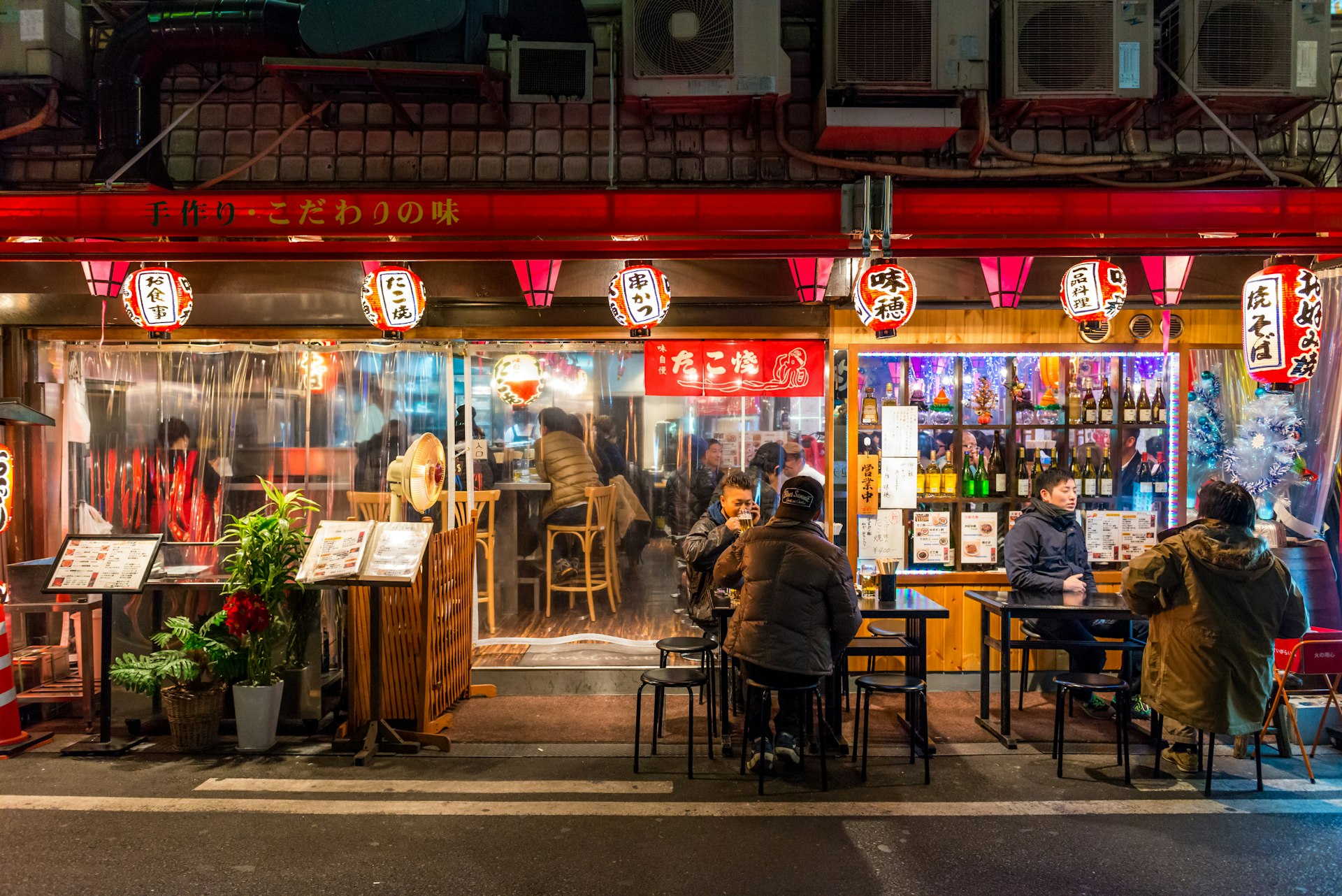
Best for street food and nightlife
Tokyo doesn't nab all the superlatives when it comes to urban experiences. Osaka , Japan's third-largest city, is tops for street food: don't miss its signature dish, takoyaki (grilled octopus dumplings).
It also has the most dramatic of nightscapes: a dazzling display of LED lights, animated signage and flashing video screens along the canalside strip Dōtombori .
The city, Japan's oldest merchant center, has a pace, spirit and zest for life all of its own; its unofficial slogan is kuidaore (eat until you drop).
Planning tip: In addition to nightly accommodation fees, Osaka hotels will typically charge an accommodation tax that varies depending on the standard nightly rate.
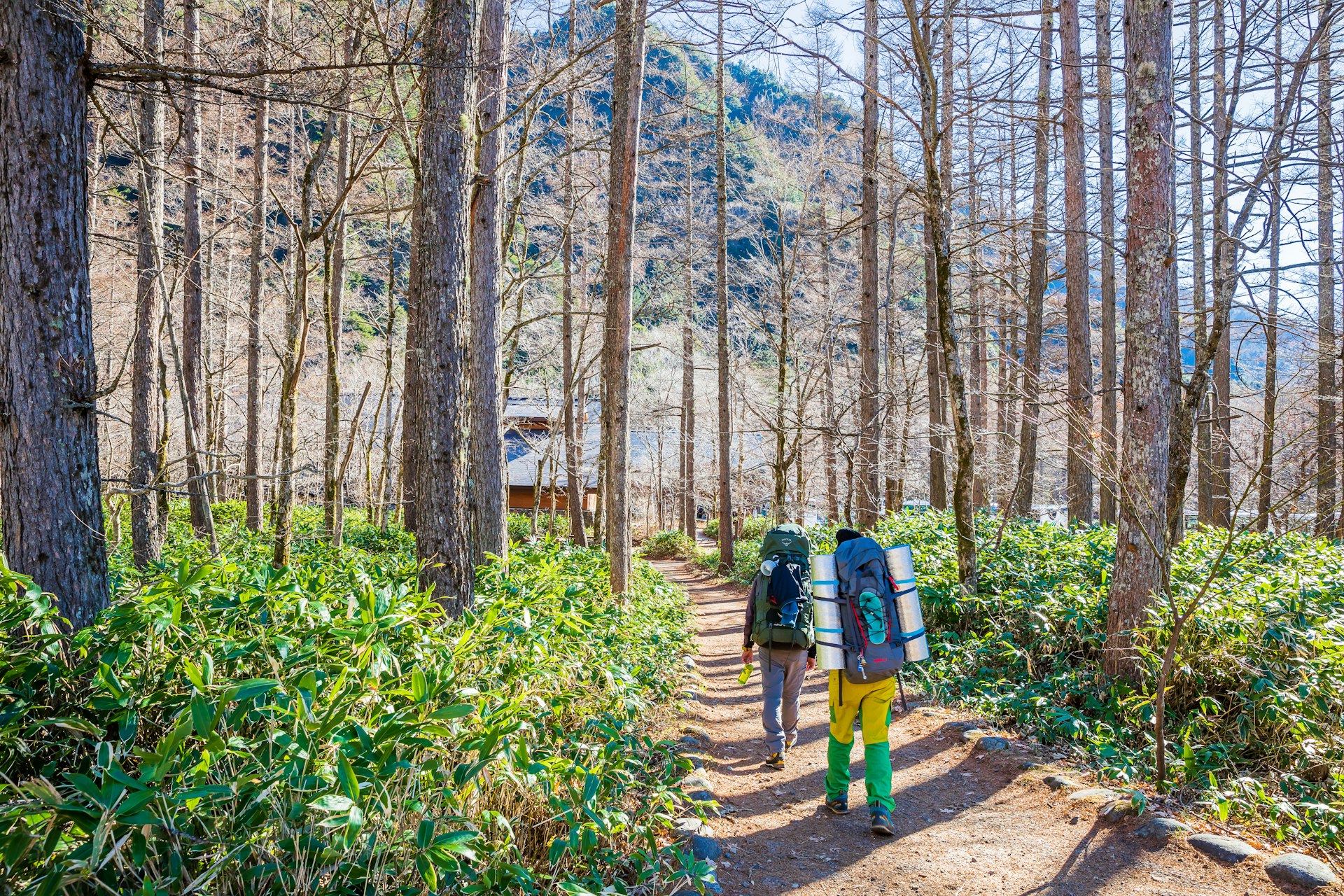
10. Kamikōchi
Best for mountain hikes
One of Japan's most stunning natural vistas, Kamikōchi is a highland river valley enveloped by the soaring peaks of the Northern Japan Alps .
Easy day hikes are possible along the Azusa-gawa, following the pristine river through tranquil forests of willow, larch and elm.
The birthplace of Japanese alpinism, Kamikōchi is also the gateway for more challenging treks up some of the country's tallest mountains, such as Yari-ga-take (3180m/10,433ft). Private cars are banned from Kamikōchi, which lessens the impact of the crowds.
This article was first published Apr 29, 2021 and updated Mar 28, 2024.
Explore related stories

Tips & Advice
May 23, 2024 • 12 min read
The stunning beaches of Seychelles are in close reach when you use points and miles. Here's how to get started.

May 3, 2024 • 14 min read

May 1, 2024 • 9 min read

Apr 14, 2024 • 6 min read

Apr 3, 2024 • 17 min read

Mar 31, 2024 • 7 min read

Mar 28, 2024 • 7 min read

Mar 26, 2024 • 8 min read

Protect Your Trip »
Best places to visit in japan.
Known as the Land of the Rising Sun, Japan's civilization dates as far back as 30,000 years. Today, the archipelago seamlessly blends its rich history with its ultra-modern present. And while its capital, Tokyo, is a must-visit for first timers, Japan has so much more to offer travelers of all types, from cherry blossoms to white sand beaches to soothing onsen (hot spring spas). U.S. News took into account cultural attractions, culinary options and accessibility (among other factors) to bring you the best places to visit in Japan. Have a favorite? Vote below to help decide next year's ranking.
Izu Peninsula

This metropolis is a feast for the senses. Neighborhoods like Ginza and Akihabara buzz with flashing lights and larger-than-life shopping, while Meiji Shrine and the Tokyo Imperial Palace give you a look into Japan's storied past. There are also a number of green spaces like Shinjuku Gyoen National Garden, which acts as a place to escape from the chaotic, concrete jungle. What's more, Tokyo is regularly regarded as a top foodie city thanks in part to its abundant Michelin-starred restaurants (the most you'll find in any city in the world), so come hungry.

Travelers most interested in Japan's history and traditions should head to Kyoto. Centrally located on the archipelago, Kyoto has long been considered the cultural capital of Japan. Here, you'll find more than 1,000 Buddhist temples and 400-plus Shinto shrines (you can't miss the Kiyomizu-dera Temple and Fushimi Inari Taisha), including a whopping 17 UNESCO World Heritage sites. You can also stroll through geisha districts like Gion and Miyagawacho, admire classic wooden architecture and visit traditional teahouses before checking out more modern attractions, such as the Kyoto Aquarium.

Nikko is the place to go to see lavish architecture surrounded by nature. Head to Nikko National Park, one of Japan's oldest national parks, to enjoy an up-close look at traditional structures situated alongside mountains, lakes, waterfalls and hot springs. The park is especially beautiful in fall when its trees display vivid shades of yellow, red and orange. The 103 Edo-era (1603–1868) temples and shrines in Nikko include world-renowned sites like Toshogu Shrine and Rinnoji Temple.

Situated about 35 miles southwest of Kyoto, this port city is worth a visit for its food alone. One of the city's most famous dishes, the tasty pancake-like okonomiyaki (which means "grilled as you like it" in Japanese), is made with batter, cabbage and your choice of meat and other toppings. After you've gotten your fill of the delectable local cuisine, explore the flashy Dotonbori neighborhood, check out the reconstructed 16th-century Osaka Castle or head to contemporary sights like Universal Studios Japan and the Osaka Aquarium Kaiyukan.

As Japan's second most populous city, Yokohama is often touted as a more approachable and more affordable alternative to Tokyo (located 22 miles northeast). As one of the country's first ports to open to international trade, Yokohama features unique culture fusions, including a sizable expat population, Western-style buildings in the Yamate area and the largest Chinatown in Japan (it has more businesses than residents). While here, visitors can explore Minato Mirai 21, the city's modern central district teeming with skyscrapers and shopping malls, and visit museums ranging from the Cup Noodles Museum to the Mitsubishi Minatomirai Industrial Museum.

More than 160 islands comprise Okinawa, a top destination for snorkeling and diving. The Japanese prefecture boasts proximity to multiple coral reefs teeming with fish, manta rays and hammerhead sharks that you can access from beautiful beaches like those found on Okinawa's Kerama Islands. These 20-plus islands are also ideal places to see migrating whales between January and March. Back on the main island, visitors will find one of the world's largest aquariums, several castle ruins and a museum that focuses on Okinawa's unique history and culture. And on the less developed Iriomote Island, adventurous travelers can hike to awe-inspiring waterfalls.

Spared from World War II air raids and the major natural disasters that have affected other Japanese cities, Kanazawa on the western coast is home to some of the country's best-preserved architecture from the Edo period. Sites like Kanazawa Castle, Seisonkaku Villa and Myoryuji temple are popular among visitors, as are the Higashi Chaya geisha district and Nagamachi Samurai District. Plus, no trip to Kanazawa would be complete without a visit to the resplendent Kenrokuen Garden. With its water features, bridges and a variety of flowering trees that add beauty to any season, Kenrokuen is often described as the perfect garden.

Nestled in the mountains of the Gifu prefecture, Takayama is ideal for visitors looking for a rural retreat with a dose of history. Start your visit with a rickshaw ride through the well-preserved old town, which features sake breweries, traditional residences and shops that date back to the feudal ages. Then, head to the Hida Folk Village, a former farming village with 30 gassho-style houses. When you've worked up an appetite, indulge in must-try local specialties including Hida beef and Takayama ramen. To further immerse yourself in Takayama culture, visit during the Takayama Festival, held for two days every spring and fall.

The country's tallest mountain and one of its most iconic landmarks is a popular destination for outdoor recreation. For centuries, Japanese artists and poets have been inspired by Mount Fuji's almost perfectly round form. The Fuji Five Lakes region at the foot of this UNESCO World Heritage Site makes a great base for the thousands of climbers who visit each year. Enjoy the area's museums and amusement park during the warmer months. Or, arrive in winter to soak in the onsen and ski Mount Fuji's slopes.

Located on Kyushu (Japan's third-largest island), Fukuoka offers travelers a mix of urban sprawl, sandy coastlines and ancient temples and shrines. Can't-miss sights include Tochoji Temple – home of the largest sitting wooden Buddha in Japan – and Nokonoshima Island, which features colorful flower fields and beautiful views of the surrounding bay. Fukuoka is also known for its incredible Hakata ramen, so be sure to try this tasty dish at one of the city's many food stalls. Plan your visit around one of Fukuoka's lively festivals, such as the Hakata Gion Yamakasa, which takes place throughout the first half of July.

Head to the smallest of Japan's four main islands if you're looking to get off the beaten path. Shikoku is best known for its 88 Temple Pilgrimage – a nearly 750-mile loop that covers sacred sites around the island. Whether you're trekking this path or creating your own, you'll encounter Shikoku's natural beauty (think: forest-covered mountains and an unspoiled coastline). Meanwhile, the city of Kochi features cheap eats and a well-preserved castle. If you're visiting in mid-August, add Shikoku's cultural pinnacle, Awa Odori, to your itinerary. One of the most famous festivals in Japan, this dance celebration in the city of Takushima is a must-do.

Mountainous Hakone is one of Japan's most popular hot spring destinations. Nestled within the Fuji-Hakone-Izu National Park, the town features 17 different hot springs, plus a hot spring theme park with unique baths like one with coffee and another with mulled wine. After you've dried off, visit one of Hakone's art museums, such as the Hakone Open-Air Museum, the Okada Museum of Art or the Hakone Museum of Art. No Hakone vacation would be complete without enjoying spectacular views of Mount Fuji from Lake Ashinoko and the Komagatake Ropeway.

After an earthquake caused significant damage to the city in 1995, Kobe rebuilt itself into a thriving cosmopolitan city. You'll want to remember to bring your appetite when you visit. Kobe is famous for its namesake beef, as well as its sake. It's also considered one of Japan's most attractive cities, with sleek architecture and beautiful green spaces like Sorakuen Garden. For some of the city's best views – especially at sunset – go to the top of Mount Rokko or ride the Kobe Nunobiki Ropeway. End your evening exploring Nankinmachi (Kobe's compact Chinatown) or dining at one of Kobe Harborland's waterfront restaurants.

For many, Hiroshima brings up memories of war, as the city is where the world's first atomic bomb attack occurred in 1945. But today, Hiroshima is a city of peace, with the vast Peace Memorial Park as the center for monuments and memorials like the the Children's Peace Monument and the UNESCO-certified Hiroshima Peace Memorial (Atomic Bomb Dome). It is also a city of great beauty. Travelers can take a scenic stroll through Shukkeien Garden, peruse the exhibits at the Hiroshima City Museum of Contemporary Art or visit Sandankyo Gorge to hike or boat past its beautiful waterfalls, caves and coves.

Tourists flock to the island of Miyajima (formally named Itsukushima) for its prime attraction: Itsukushima Shrine and its postcard-worthy torii gate. To see the shrine at its most picturesque, try to visit during high tide, when the gate appears to float on the water. Since the island is just a 30-minute ferry ride from Hiroshima, it makes for a great day trip. However, visitors may want to stay the night at a charming ryokan (Japanese-style inn) to experience Miyajima at its most serene and walk by the illuminated shrine at night.

An outdoor-lover's delight, Matsumoto is just 22 miles east of Kamikochi, an awe-inspiring valley in the Hotaka mountain range. But though it serves as a gateway to the Japanese Alps, this city in central Japan should not be skipped over. As the birthplace of contemporary artist Yayoi Kusama, known for polka dots and pumpkins, Matsumoto pays her tribute at the Matsumoto City Museum of Art. Meanwhile, those who prefer more ancient masterpieces can visit Matsumoto Castle, one of the oldest and grandest castles in the country.

Japan's first permanent capital is famous for housing the Great Buddha, a nearly 50-foot-tall bronze statue of Buddha. You'll find this jaw-dropping national treasure in Nara's Todaiji temple, which is the one of the largest wooden buildings in the world. While on the temple grounds, explore the deer-filled Nara Park and the ornate Kasuga Taisha shrine. Also save time for visiting Yakushiji Temple, one of Japan's oldest temples that dates back to A.D. 730.

This peninsula situated 62 miles southwest of Tokyo makes a great getaway from the busy city. It is popular among locals and tourists alike thanks to its relaxing hot springs and stunning beaches. These, along with various museums and ryokans, can be found in cities like Atami and Shimoda on the Izu Peninsula's eastern coast. During spring visits, travelers will also want to check out Kawazu's vibrant pink blooms at the Kawazu Cherry Blossom Festival. Meanwhile, on the southern and western coasts, vacationers will find more rugged yet equally scenic coastlines, such as Cape Irozaki and Dogashima.
Vote to Add these Destinations to the Rankings

Chubu Sangaku National Park

Shirakawa-go and Gokayama
You may be interested in.

Best Places to Visit in Asia

Best Places to Visit in Thailand

World's Best Places to Visit for 2023-2024

Africa & The Middle East
Best Places to Visit in Africa in 2023

Best Places to Visit in October 2024

Australia & The Pacific
Best Places to Visit in Australia and The Pacific in 2023
If you make a purchase from our site, we may earn a commission. This does not affect the quality or independence of our editorial content.
Recommended
The 28 Best Water Parks in the U.S. for 2024
Holly Johnson|Timothy J. Forster May 8, 2024

The 18 Best Napa Valley Wineries to Visit in 2024
Lyn Mettler|Sharael Kolberg April 23, 2024

The 25 Best Beaches on the East Coast for 2024
Timothy J. Forster|Sharael Kolberg April 19, 2024

The 50 Best Hotels in the USA 2024
Christina Maggitas February 6, 2024

The 32 Most Famous Landmarks in the World
Gwen Pratesi|Timothy J. Forster February 1, 2024

9 Top All-Inclusive Resorts in Florida for 2024
Gwen Pratesi|Amanda Norcross January 5, 2024

24 Top All-Inclusive Resorts in the U.S. for 2024
Erin Evans January 4, 2024

26 Top Adults-Only All-Inclusive Resorts for 2024
Zach Watson December 28, 2023

Solo Vacations: The 36 Best Places to Travel Alone in 2024
Lyn Mettler|Erin Vasta December 22, 2023

26 Cheap Beach Vacations for Travelers on a Budget
Kyle McCarthy|Sharael Kolberg December 4, 2023

The Top 15 Destinations to Visit in Japan
:max_bytes(150000):strip_icc():format(webp)/jessicaesaprofile-7bb1d24acee44aa5839ac875cb2e0bff.jpg)
There are so many fascinating cities and towns in Japan that it’s difficult to choose which one to visit. It’s a country with thousands of years of history and food culture, some of the best winter sports and diving in the world, and national parks featuring unusual and diverse landscapes. From northern Hokkaido down to the south in Okinawa, you’ve got sites worth making a trip for. Pick your base wisely and you might be able to visit more than one of these top destinations in Japan.
Matias Sanchez / Getty
An easy day trip from Osaka or Kyoto, Nara is a compact city that feels like a step back in time. It was the first permanent capital of Japan and retains many of its historical shrines and temples. It’s often associated with the famous deer of Nara Park that bow to visitors and look for a delicious biscuit in return! From the park you can access Kasuga-Taisha Shrine—one of Japan’s most sacred sites—and Todaji Temple, home to the world’s largest bronze buddha.
Shan.shihan/ Getty
Kyoto is everything you hope it’ll be and more. You can see thousands of years of history by exploring temples like the Kinkaku-ji and historic sites such as Kyoto Imperial Palace. Visit some of Kyoto’s beautiful shrines, including Fushimi Inari, before catching a maiko show in Gion, the city's geisha district. Aside from history, Kyoto is also a modern city filled with izakayas, wine bars, and art museums. There's so much to do, be sure to plan a few days here.
Matteo Colombo/ Getty
There are endless things to do in Tokyo , so get ready to dig in. The capital is as bustling, busy, and bright as you might expect—but there are also quieter neighborhoods where you can still find the Tokyo of old. Some of the highlights include Shibuya and Shinjuku, neon-soaked wards that promise nightlife, restaurants, and shops aplenty. Nearby, Tokyo’s public gardens like Shinjuku Gyo-en offer a peaceful respite. Within the city, you can enjoy theme parks like Disneyland and Disney Sea, or celebrate Japan's animated film legacy by checking out Studio Ghibli Museum.
Nikko National Park
A picture-perfect and highly spiritual destination, centuries-old Buddhist temples and Shinto shrines are surrounded by sweeping natural landscapes in Japan’s original national park. Some of the highlights include Toshu-gu, a lavish shrine and the final resting place of the first Tokugawa shogun, and the Buddhist temple Rinno-ji, founded in the eighth century. Don’t miss the Yomei-mon, also known as Sunset Gate, one of Japan’s national treasures featuring five hundred hand-carved figures. These exceptional sights are set within one hundred hectares of nature, where you’ll find waterfalls, over a dozen hot springs to sink into, and great lakes. One of the most iconic sights here is the red Shinkyo Bridge, which stretches across the Daiya-gawa River.
Amanohasidate
Westend 61/ Getty
Most people head to Kyoto city and don’t get a chance to explore the wider prefecture—but Amanohashidate is one of the most impressive sites in the area. Head over to the coast to see the famous three-kilometer sandbar, classified as one of Japan’s most scenic views. There are many viewpoints to enjoy here; for the best, meander over to the cable car and head up for a birds-eye view.
DoctorEgg / Getty
Head up to Hokkaido to visit one of Japan’s most famous ski resorts , which receives the lightest, driest snow in the region and borders the breathtaking Daisetsu-zan National Park. Not just a winter destination, Furnao is famous for its wine production; thanks to the expansive lavender fields that cover most of the region, wine infused with the herb is popular here. Combine that with beautiful, rolling hills, and you’d be forgiven for thinking you’d stepped into southern France.
Chiara Salvadori/ Getty
With over a hundred baths, this is one of Japan’s favorite onsen towns . Enjoy traditional Japanese accommodation by booking a stay at any one of the town's ryokan, some of which have been around since 1879. Each of the ryokan have their own private baths to relax in, with some offering special facilities including mud, sand, and steam baths.
But there's more to Beppu than bathing. Here, you can try unique food that’s been cooked in volcanic waters, making for interesting new flavors. Just 25 kilometers (about 16 miles) from Beppu you can reach Yufuin, a mountainous town that’s filled with boutique shops, cafés, and restaurants.
Yiming Chen/ Getty
Fukuoka is a perfect city for foodies and is considered one of the major culinary destinations in the country. Make sure to try Fukuoka’s famous Hakata ramen, a form of creamy tonkotsu ramen that has made waves locally and internationally. Head to Hakata yatai stalls where more than two hundred vendors serve up the tastiest dishes in intimate lantern-lit surroundings. This is a great city to enjoy the coast, with beaches, water sports, and nearby island adventures. Visit Shikanoshima for historic monuments and shrines, or Nokonoshima, famous for its seasonal flowers.
Thanyarat07/Getty
A convenient trip from Tokyo and Mount Fuji, Hakone has a lot to offer for those who love mountain views, hot springs, tea houses, and romantic ryokan . Yunessun and Tenzan are two of the most popular hot springs, but there are plenty of onsen to enjoy as well, including novelty baths with wine, herbs, milk, or coffee. There are more than a dozen art museums here ranging from the quaint (like the Museum of Saint-Exupéry and The Little Prince) to expansive (like the Open Air Museum). There are plenty of walking options, including routes up The Great Boiling Valley, where you can try Hakone’s signature black eggs; there’s also a gondola up for an easier ride.
Kerama Shoto National Park
Ippei Naoi/ Getty
There are about two dozen islands surrounding Okinawa, Japan's favorite vacation spot. The Kerama Islands, an archipelago of approximately 30 islands, are surrounded by healthy coral reefs and a diverse ecosystem that makes for perfect diving and snorkeling adventures. With pine forests, sheer cliffs, and mountains, the landscape offers an endless amount of photo spots and hiking options. Many of the islands are inhabited, so you’ll find hotels, restaurants, and tour agencies in this subtropical paradise.
Miyajima Island
Aladimirzakharov/Getty
Off the coast of Hiroshima, Miyajima Island has long been regarded as one of the most scenic spots in Japan. It’s often associated with images of the torii gate of the sixth century Itsukushima Shrine; during low tide, you can walk up to the gate, but when the tide is high, it appears to float. There are many places to go hiking at Mount Misen, where you can get spectacular views of the city. The Daisho-in Temple complex sits at the foot of the mountain and is just one of the spiritual sites you can see on the island. Omotesando shopping street attracts those looking for local handmade crafts as well as street food lovers.
Aladimirzakharov/Getty
There’s a lot to see in Hiroshima even though it’s often associated with the atomic bomb that fell on August 6, 1945. The Hiroshima Peace Memorial Parks is a must-visit for this reason; here you’ll find museums, various monuments honoring those that died, and the A-Bomb Dome that survived the blast.
Hiroshima is also famous for its ramen, particularly the Onomichi style; make sure you seek out some of these tasty noodles loaded with flavor. For a different side to Hiroshima’s history, pay a visit to the beautiful Hiroshima Castle and grounds, just a 15-minute walk from the peace park.
Annhfhung/Getty
Often described as "Little Kyoto," Kanazawa largely escaped the bombings and so has retained most of its historic buildings and sites. Here you can explore preserved Edo-period, geisha, and samurai districts as well as winding streets and beautiful buildings. Take some time to wander the pedestrian street between Katsurazaka and Renchimon gates for regional crafts, restaurants, and cafés. Later, take a stroll through what’s considered one of Japan’s three best landscape gardens. With its varied flowers and foliage, Kenrokuen, established in the 18 th century, is lush in any season. Follow the paths to higher ground to get views over the garden and visit nearby Kanazawa castle.
Suttipongs Sutiratanachai / Getty
Whether you see the majestic Mount Fuji from afar or climb to the top of this famous peak, there’s nothing quite like seeing one of the world’s most famous mountains for yourself. Climbing Mount Fuji was once considered a pilgrimage, and as you climb up, you can see shrines and monuments dating more than a hundred years. There are four routes you can take to the top, but the Yoshida Trail is one of the most popular.
You can even hop on a bus at Shinjuku in Tokyo to get halfway up the peak. If you just want to see the mountain, then take the bus to one of the small towns beneath it like Fuji Yoshida, or get a look at it from Lake Kawaguchiko .
Edwin Gimpel/ Getty
A UNESCO World natural heritage site, this island nature reserve features Japan’s oldest Yaku cedar trees, mossy wooden bridges, waterfalls, and streams. The Shiratani Unsuikyo Ravine inspired parts of the animated film Princess Mononoke , and it’s easy to imagine forest spirits hiding within the dense woodland. There are many hiking trails and routes to choose from of varying difficulty. For a view of the island and a bit of challenge, you can hike up Taiko rock and see the trees spread out below you.
If you're not into hiking, head to the coast of the island to enjoy the hot springs and the beaches where loggerhead turtles come to lay their eggs.
18 Best Things to Do in Japan in Summer
48 Hours in Tokyo: The Perfect Itinerary
Every Neighborhood to Know in Tokyo
Kyoto Guide: Planning Your Trip
The Best Time to Visit Japan
The Top 18 Things to Do in Tokyo
15 Must-Try Dishes in Tokyo
The Top 25 Things to Do in Japan
The Top 12 Day Trips From Osaka
The Top 15 Things to Do in Hiroshima
The Top 12 Day Trips From Kyoto
Your Trip to Hiroshima: The Complete Guide
One of the Best Ways to Visit Japan Is Through a Culinary Train Tour
The 10 Best Places to Shop in Tokyo
How to Stay at a Ryokan
The 15 Best Day Trips from Tokyo

The 15 BEST Places to Visit in Japan (2024 Guide)
- Last Updated: January 27, 2024
From seeing a geisha show or walking the famous Fushimi Inari shrine in Kyoto to exploring the bustling metropolis of Tokyo or staring out at Mount Fuji, here’s our list of the best places to visit in Japan.
Japan is a close-knit island nation that is known for its beautiful cities, unique food, amusement parks, temples, shrines, hot springs, and more.
Hidden gems and beautiful palaces are scattered around the country, from tiny villages right up to the commercial areas in Japan, such as Hiroshima, Osaka or Tokyo.
Travellers flock to Japan to see the beauty of cherry blossom season, or to hike Mount Fuji, ski in the Japan Alps, eat delectable sushi, and more.
But there are lots of unexpected things to do in Japan as well.
Character or animal cafés, vending machines offering a vast array of items, and aquariums showcasing rare and unique marine life are just a few of the best and most interesting things you can view while in Japan.
Don’t travel to Japan without reading our ultimate travel guide!

Table of Contents
4) Yokohama
9) hiroshima, 12) fukuoka, 13) kanazawa, 15) okinawa, anything to add to this list of great places in japan, the best places to visit in japan.
Overall, there are so many must-see and must-experience places to visit in Japan due to the nation’s rich history, location, and culture.
If you’re planning a trip, make sure you use this list to make the most out of your travel to Japan.
Tokyo, the capitol of Japan, is obviously one of the best places to go in central Japan. While Kyoto is viewed as the spiritual center of Japan, Tokyo is seen as the most popular, busiest, and most significant city in the country, and there is no question why.
If you are wondering just what to do in Japan, it’s common knowledge that starting in Tokyo would have you covered as a perfect introduction to the country.
Of course, the city is largely commercialised and there are endless activities to do, especially if you are looking for UNESCO World Heritage Sites.
On a clear winter day it is even possible to have views of Mount Fuji in the distance!
It is important, however, to not forget the little things you can visit and explore – from simple and quiet parks to humble and interesting cafés or the occasional shrine or temple.
One unique place to visit in Tokyo would be Neko JaLaLa, a cat-themed cafe that offers more than your usual coffee destination in Tokyo.
There should be no question as to why Tokyo is famous and beloved for its several towers and overall interesting architecture. Buildings like the Tokyo Tower and the Tokyo Skytree should definitely be places on your travel list.
Both structures are known as Japan tourist spots and two of the best places to visit in Japan.
A trip to the Tokyo Tower offers a beautiful and breathtaking view.
The tower lights up beautifully and elegantly throughout the night, which is also a nice touch and a perfect photo scene.
The Tokyo Skytree offers several experiences throughout its tiers, aside from observation and obtaining a beautiful view.
If you are looking for a less-commercialised and more cultural Japan attraction that is located in Tokyo, the Kaneji Buddhist temple is one of the best things you can do.
Complete with intricately designed gardens, hallways, and statues, this temple is ideal for anyone looking for some relaxation time while in Tokyo.
Also consider taking a day trip to see Mount Fuji, the iconic symbol of Japan.
It doesn’t matter if your stay in Japan is for 48 hours or two weeks, visiting Tokyo is a Japan must-see.
READ MORE: Check out our complete guide to the best things to do in Tokyo .

Check out our Japan Vlog on going to a crazy robot restaurant in Tokyo in Japan.
Osaka is a port-based city that is full of interesting museums, attractions, and a fascinating variety of activities for any visitor to Japan.
No tour of the best places to visit in Japan would be complete without a trip to Osaka.
One thing to enjoy about this city is its versatile points of interest, and great opportunities for the Cherry Blossom season.
Whether it be the classic Osaka Castle or a fun amusement park such as Universal Studios Japan, Osaka really seems to have it all.
Dotonbori should ultimately be your first stop due to the influx of street food vendors, arcades, and shops.
After visiting the many wonderful fantasy worlds of Universal Studios Japan, you go go-karting around the streets.
Other popular attractions in Osaka are the beautiful and grand Tempozan Ferris Wheel, the peaceful Expo Commemoration Park, and the educational and intriguing Osaka Museum of History.
You haven’t completed Japan sightseeing until you’ve made your way to Osaka. And from here it is just a short train ride to the famous city of Kyoto.
READ MORE: Check out our detailed guide on the best things to do in Osaka .
If you are looking for elegant cherry blossoms, peaceful Buddhist temples or the occasional Shinto shrine, then Nara is the ideal travel location for you.
Just a short distance from either Kyoto or Osaka, Nara City is the capital of the Nara prefecture and is one of the most captivating and interesting places to visit in Japan.
Shrines surrounded by peaceful, well-kept canals and ponds are a popular sight. As are long the beautiful and friendly deer that roam freely throughout the prefecture – which are one of the most unique things to see in Japan.
It is apparent that Nara might truly be one of the most peaceful, down-to-earth cities in the world.
Nara Park is a central park located within the city that is full of deer that peacefully roam the park. They are a beautiful and adorable sight to visitors.
One staple of Nara would have to be the several palaces, temples, and Buddhist shrines. Todai-ji is a perfect example and is located right in the city of Nara.
This temple is one of the largest in the area, and plays a great role in its history.
Deer are frequently seen in surrounding areas around the temple, which is a nice touch.
By far, the greatest feature with Todai-ji, however, is the addition of the largest known bronze statue modelled after Buddha.
READ MORE: Here’s our ultimate list of things to do in Nara, Japan .

Yokohama is one of the more authentic places to visit in Japan if you would like a taste of Japanese culture, some history, and a tad bit of everything else.
One example of how Yokohama stands out against other popular cities and tourist spots in Japan would be the inclusion of Yokohama Chinatown.
Similar to Dotonbori, the Yokohama Chinatown area is ideal for those who love to experience street food as it is popularly offered and sold throughout the area.
If you are looking to take a quiet and enchanting walk, a stop at the Sankeien Garden in Yokohama couldn’t hurt as well.
A trip through this park can help relax you after a long day of exploring and visiting different streets and locations throughout the city.
The design of the garden is very traditional and reminiscent of older gardens and contains a beautiful pond surrounded by lush trees and shrubs.
One might enjoy viewing the Tempozan Ferris wheel light up at night. And Yokohama offers beautiful fireworks shows available during specific seasons.
Due to Yokohama being a port city for trading, these shows easily take place in Yokohama at the Yamashita Park, and are enjoyed greatly by both tourists and locals alike.
READ MORE: Here’s our brand new article featuring the best things to do in Yokohama .
As Okinawa is known for its glorious beaches, the small town of Hakone is known for the natural beauty of its mountainous terrain, waterways, and hot springs.
By far the most prominent and well-known attraction is Lake Ashi that makes Hakone one of the most fun places to visit in Japan.
The lake paired with other attractions makes Hakone one of the most beautiful and captivating cities to spend some time during your next vacation.
The picture-perfect and relaxing scenery also helps it make the list as one of Japan’s tourist spots. With views of Mount Fuji, Hakone is one of the best places to see and do it all.
Lake Ashi is surrounded by beautiful mountains, which help to compliment the glistening blue water.
The Hakone Open-Air Museum is also another great reason to visit Hakone, as it compliments the feel and aesthetic of the place due to the large collection of creative artwork.
READ MORE: Here’s our guide to the best things to do in Hakone !
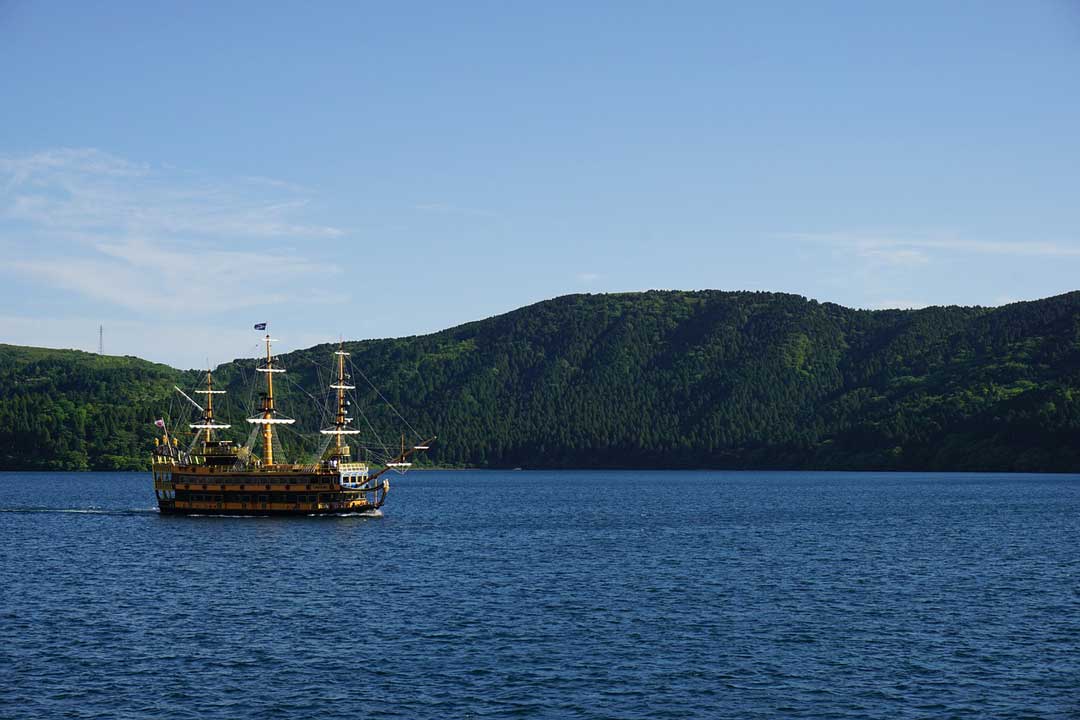
The capital city of Hokkaido, Japan’s northernmost island, is an absolute gem and one of the best cities on our list of Japanese tourist spots.
Whether it’s your first or fifth time to this fascinating country, make sure you spend some time in Sapporo, a metropolis that is buzzing with excitement and culture.
Whether you want to check out Japan’s biggest zoo or visit the marvelous winter snow festival, you’ll find no shortage of attractions here.
It’s also a great jumping-off point for exploring more of Hokkaido, so definitely use it as a base to plan your next moves.
READ MORE: Here’s our travel guide to the top things to do in Sapporo .
With destinations like the Nagoya TV Tower and the Nagoya Castle, this area can easily be compared to Osaka and Tokyo based on the famous and must-see landmarks.
There is even a museum dedicated to science: Nagoya City Science Museum.
This museum may sound a bit general. But its complex and interactive activities help engage and educate visitors and is home to what is known as the world’s biggest planetarium – making it a famous gem of Japan.
Perhaps the highlight of Nagoya and one of the best things to do is to tour the Nagoya TV Tower.
This tower consists of five floors and is a beautiful sight with its glowing appearance during the night.
The sky deck, which is at the topmost floor of the tower, offers a grand view of the city and famous mountains in the area.
The Nagoya Castle is the heart of Japan and another great symbol within the nation of Japan. You wouldn’t be able to miss this elegant structure in Nagoya.
This specific castle stems all the way from the Edo period and is lined with alluring Japanese artwork that is lit and brightened up greatly by the strategically placed windows and shading.
Be careful to not forget the entertainment halls and theatres, so you can enjoy a great concert or show while in Nagoya.
And if you’re looking for views of Mount Fuji then you can add this place to your list. Nagoya offers gorgeous views of the famous Mount Fuji!
READ MORE: Here’s our list of the best things to do in Nagoya .
While there is much to do on the island of Honshu, Kyoto is almost always at the top of the list of places to see in Japan.
Based on the prominent pagodas, the influx of cherry blossoms, and the rich history included, it is no wonder why Kyoto was once the capital of the great nation of Japan.
Due to the extravagant history Kyoto has throughout wars and harsh time periods, castles and unique Japanese structures have come to cover the region.
By exploring Kyoto , you have the choice to learn about Japan, its people and its culture in a very motivating, intriguing, and interesting way.
Geishas are also a prominent entertainment force in Kyoto, making it one of the best places in Japan to view a show.
The Sento Imperial Palace is a peaceful palace that offers a tour that is free and is a fantastic way to discover and learn about Japanese palaces and history while exploring the area.
If you are looking to buy some authentic and quality Japanese goods, Kyoto should also be in mind. Many tourists buy keepsakes or tokens from their trip here, as shopping is fantastic.
The Kitano Tenman-Gu flea market is the perfect shop for this as it offers a wide range of products such as intricately designed fans, umbrellas, and yukatas.
Of course, no trip to Kyoto is complete without visiting Fushimi Inari, an important Shinto shrine known for its temple and the thousands of brightly coloured torii gate.
READ MORE: Don’t miss our complete guide to the best things to do in Kyoto !

Recent history hasn’t been kind to Hiroshima, a city that is most famous for having the atomic bomb dropped on it during World War II, completely decimating the city.
But for such a tragic event, Hiroshima has fully rebuilt itself, and today is one of the top selections for where to go in Japan. The Hiroshima Peace Memorial Park is one of the top Japan tourist attractions.
The Hiroshima Peace Memorial Museum, the main feature of Hiroshima Peace Memorial Park, is one of the best known places in Japan. Memorializing a terrible event near the end of World War II, this UNESCO World Heritage Site is one of the more sacred places to visit in the city.
Nearby Miyajima Island is a fantastic place to spend a day and definitely worth a visit. The Hiroshima Castle is sure to wow you as well.
In terms of unique sights and tourist attractions, the Itsukushima Shrine really stands out, literally, by rising out of the water.
Don’t let the idea of a crumpled city stop you from visiting – Hiroshima is truly an incredible spot to explore.
READ MORE: Check out our complete guide to the best things to do in Hiroshima.
When visiting Kobe, on the island of Honshu, trying their world-famous beef is a must. You can even have it along with Ramen or other traditional dishes.
Kobe could perhaps be the food destination highlight of your trip finding the best places to visit in Japan, aside from Dotonbori.
Another street to visit in Kobe would be their version of Chinatown, which offers another great opportunity to try street food.
The Kobe City Museum is also a great way to explore the great city of Kobe and its history.
Kobe’s most popular harbour known as the Kobe Harborland is the best outdoor hub for entertainment and shopping alike.
The harbour even boasts a beautiful Ferris wheel that adds a nice touch. If you are searching for a more scenic addition in Kobe, you must visit Mount Rokko. Although it pales in comparison to Mount Fuji, there are great trails and scenery to enjoy.
This landmark is favoured both by tourists and locals, and is unique in its structure when compared to various other mountains scattered throughout the great nation of Japan.
Kobe is also located near Himeji Castle, which in and of itself is a top location in Japan. Take a day trip from Kobe to the famous grounds of Himeji Castle!
READ MORE: Here’s our guide to all the top things to do in Kobe !
Otaru doesn’t always make the list of places to visit in Japan. But its canal scenery is so romantic it could even rival that of Italy.
Different vendors and stores offering a vast array of Japanese goods paired with various restaurants help to make the canal a must-stop destination.
Aside from the canal, be sure to enjoy a wonderful experience and performance at the Otaru Music Box.
The Otaru Aquarium can help finish off your trip with some educational facts and a great view of various marine life.
READ MORE: Check out our complete guide to the best things to do in Otar u
Fukuoka is a fantastic city on the Kyushu island of Japan, and well worth a visit on your next trip to Japan.
With great surfing opportunities, a fascinating samurai history and plenty of sumo wrestling matches to check out, you’ll be amazed at all the great things to do in Fukuoka.
READ MORE: Here’s our guide to the top things to do in Japan
Kanazawa is located on Honshu Island and bordered by the Sea of Japan. Deriving its name from “marsh of gold” after legend claims a potato farmer dug up gold instead of potatoes in his field one year.
Kanazawa Castle is the city’s most notable feature and one of the best places to visit in the city. It stands tall among various other buildings that were surprisingly spared during bombings in WWII.
The original castle was destroyed in a fire in 1888. But the existing castle still stands after being rebuilt.
Kanazawa is also known for its Edo-period architecture, temples, geishas and cuisine. You can’t go wrong to add Kanazawa to your list of places to visit in Japan.
READ MORE: Check out our complete guide to the best things to do in Kanazawa.
Tohoku is located northeast of Tokyo on the island of Honshu. Very much off the beaten track for most travellers, Tohoku makes the list of best places to visit in Japan for its simplicity and relationship with nature.
Those who travel here know Tohoku for its spectacular coastlines, inviting natural hot springs and intricate cave systems. It is also a great place to see some of the best cherry blossoms in Japan – without all of the crowds you will find elsewhere.
And if you are into studying where modern history meets science, Tohoku is the jumping-off point for exploring the impact of the 2011 tsunami, most notable for it’s destruction of the Fukushima nuclear reactor.
No doubt if you are looking for a place where fewer travellers visit, particularly in spring, then you absolutely must add Tohoku to your list of places to visit in Japan!
Okinawa is Japan’s most tropical island and definitely one of the more unique places to visit in Japan. Surrounded by beautiful beaches and crystal blue ocean water, Okinawa City is a paradise for people of all ages.
A variety of restaurants are scattered all throughout the city, which is perfect if you plan to have dinner and see a show.
Koza Music Town is perfect for those looking for supreme entertainment and shows.
Besides Koza, Okinawa is simply just a paradise for music lovers due to the many different venues and shows that are offered, especially with the famous bars and clubs scattered about.
The Shurijo Castle is a must-see if you are visiting Okinawa. This palace was dedicated to the Ryukyu Kingdom, and boasts a bright red colour and an intricately paved red walkway leading up to the grand entrance of the castle.
If you’re looking for adventure on your next travels to Japan as well, then Okinawa is the place for you. This island is definitely where to go for surfing, scuba diving, kiteboarding and swimming with whale sharks!
READ MORE: Check out our complete guide to the best things to do in Okinawa .
In conclusion, Japan is a vast island nation that is known for its mountain scenery, unique architecture, cherry blossoms, and booming cities.
While travelling there are so many places to visit in Japan and experience on each island and in each city. But it is important to not overlook the small hidden gems in the rural Japan.
Sites and areas like small traditional villages and temples can really add to your overall experience. Whether you visit castles, Buddhist temples or Shinto shrines, enjoy a hot spring or two or come to see the natural beauty of cherry blossom season you understand why the island of Japan and its people are so special.
Aside from trying food in Dotonbori and shopping in the popular streets and stores in Tokyo, be sure to mark the small villages, historic sites, and grand areas for.
Visit the Hiroshima Peace Memorial, stroll beneath the torii gate of Fushimi Inari in Kyoto and find your favorite shrine or temple in any number of smaller villages and towns.
Do you have anywhere else you’d add to this list? Leave a comment below and let us know your favourite places to visit in Japan!
DISCLAIMER: Some of the links in this article are affiliate links, which means if you book accommodation, tours or buy a product, we will receive a small commission at no extra cost to you. These commissions help us keep creating more free travel content to help people plan their holidays and adventures. We only recommend the best accommodations, tours and products that ourselves or our fantastic editorial team have personally experienced, and regularly review these. Thanks for your support, kind friend!
Gabby Boucher
Hi, We’re Alesha and Jarryd!

We’ve been traveling the world together since 2008, searching for the planet’s best destinations and adventures.
Love Travel?
Sign up for our free weekly newsletter for the best travel tips, ideas and deals!
We respect your privacy. Unsubscribe at any time.
READ MORE...
19 BEST Things to Do in Osaka, Japan [2024 Edition]
The Perfect 3 Days in Tokyo Itinerary
The Best Day Trips from Every City in Japan [2024]
Related Posts
25 awesome things to do in tokyo, japan, the ultimate travel guide to oita, japan (2024 edition), ryokan ochiairo review – is this japan’s best ryokan, 8 reasons why you should visit tohoku, japan on your next trip, 22 thoughts on “the 15 best places to visit in japan (2024 guide)”.
Yes I have read this article and very informative article.
Glad you liked the article 🙂
My Granddaughter dream is to go to Japan since she was 11 years old, May 2022 she will be 18 and graduating High School. I want to take her there as a gift to her, because her dream has not wavered, Problem is, I am limited on income and terrified to go to another country, where I know nothing of culture or the language, I understand it is very expensive. Could you give me advice on what we could do to make this memorable for her..without it draining my bank account and where a lot of people speak English. We are country people dont know to much of the outside world, so this will be a culture shock for us. I want to respect their values as well. Any advice will be much appreciated. Food, Places to stay, Sightseeing, cherry blossom, I am leaning on traveling April 4th 2022.
Hi Connie, What an amazing gift. An experience of a lifetime. I am originally from country WA and know exactly what you mean. Japan can be expensive but it also can be reasonable on the budget side. We have an article that has a lot of information that may help you out but I will add a few more tips in. Travel Guide – https://www.nomadasaurus.com/travel-guides/travel-to-japan/ (at the bottom of this article is lots of other Japan posts) Budget – https://www.nomadasaurus.com/budget-travel-in-japan/
There are a lot of people that speck English in the major cities. But menus will be in Japanese sometimes you will find English but the prices may be more expensive. We recommend downloading Japan to English google translate. This will help you out so much. If you are connected to the internet you can hover your camera over a menu and it will translate the writing to English. You can pick up an internet dongle from the airport and have wifi where ever you go for your stay. They can be expensive. Another option is buying an international SIM card. Just check your plan and that there is no extra costs. Your phones plans may charge you international roaming and this will be very expensive. Happened to me in Ireland when I first travelled, costs nearly $1000. I had no idea. Lucky they cut it down but it was a wake up. Transport – I would look into the JR pass. This is a great way to get around the country and you can use it on local transport within the cities too. The train system is incredible and so comfortable. Stops are in English so you can read where you need to get off and at what stop. https://www.jrailpass.com/maps Getting around cities – I would recommend hopping on a city tour or do a free walking tour to get your bearings and ask advice from the guides. The guides would be able to tell you get (and cheap) local restaurants to try. We try to do this in a lot of cities when we first arrive. Getting the public trains are easy enough to get around the cities. Put some maps on your phone or print out a map before you arrive. Food – There are so many amazing stalls. These are the best local food options. They look a little questionable but if it is busy with locals then go there. We ate at a lot of machine meals. This is when you enter the restaurant and choose a meal off a machine, collect your receipt, sit down and a person will collect your receipt and then deliver your meal. These places were great. Do not miss Kyoto and Nara. We really enjoyed these places. The temples, gardens, traditional houses and the culture. When we got off the plane in Japan we went straight to Kyoto and we were so happy we did. Explore Tokyo at the end of your trip. Hope this helps. If you have anymore questions please don’t hesitate to message us. Japan is an amazing country. The people there are so welcoming and helpful.
These are great places for tourism. I must say, your post is like my tour guide now. Thank you for sharing this post with us. Thanks.
Hi Franca, glad you liked the post. Japan has so many wonderful destinations. Have a wonderful trip when you go. Take care. 🙂
Japan has been on our travel bucket list for years now but already planning to visit next year so this gave me a good idea where to go apart from Tokyo and Osaka.
You need to go Julia. I think you would love it. There is so many amazing places to see. We didn’t spend much time in Tokyo and Osaka as we are not city people. We loved Kyoto for the culture. I know it is a city but it did not feel like it. Stay in Gion District if you go. Was amazing. We would get up early and wonder around. Felt like we were the only people there sometimes. Happy planning.
I’m planning a trip to Japan and your blog has been very helpful so far! The first time I was there I mostly went from big city to city, so this time I would like to try smaller towns and your description of Shirakawa makes it sound so lovely. The problem is that Google Maps is showing me two Shirakawa towns! Did you visit the one in Fukushima or in Gifu? Thanks!
Hi Jennifer, sorry about the late reply. This is in the Gifu Prefecture. Thank you for this. I will note it in the paragraph. 🙂
We are heading to Tokyo for the Olympics in July of next year and have a little more than three weeks in Japan with 9 days at the Summer Olympics. We have been to Tokyo and Kyoto before and did most all of the sites that one would, so the timing of this article was perfect as we were looking for more to explore outside of Tokyo and Kyoto next summer after the hustle and bustle during the Olympics. Thanks for giving us a great starting point with the overview of these prefectures. Much Aloha and Kokua for the insight
Hi Dan, so sorry your comment was missed. I know your plans are obviously are cancelled as the Olympics are postponed til next year. I hope you have rescheduled and are still going. If you have time do check out Nakatsugawa. It has a traditional trail. It is beautiful and not far from Tokyo. Check out Sado Island. The coastline and hiking is so beautiful. You can catch a flight down to Oita Island and explore this off the beaten path area. Lots of onsens and great hiking. You do need to rent a car to get around as transport is very limited. Have a great time when you go to Japan.
Truly your shared all these fabulous places are the best for travelling and tourists can enjoy some time with buddies. I also enjoyed myself while I was visiting this kind of places.
So glad you enjoyed your time in Japan. Thanks for reading. 🙂
Thanks for sharing such a beautiful article. It packed of all the information required for the first time visitors and information mentioned above in the article are more than enough gain knowledge about Japan. The article has surely helped me a lot. It would be great if the images of the all places mentioned above were there. Thumbs up for the effort.
Glad we could help. All the best
Thanks for sharing this information regarding travel and tour. I really found this very interesting. And your blog is very useful for us.
Thank you so much. Glad you found the article helpful. Happy travels
I have visiting a few cities in Japan on my bucket list. I shared the blog. The pics are awesome and I enjoyed reading the brief overview of the different cities. I get excited about everything from historical areas, to scenic, and most of all the food. Thanks for the recommendations of Dotonbori and Yokohama chinatown for popular street food.
Thank you so much David. Natalia wrote a great article and made us very jealous. Japan looks like a wonderful place. We are heading there later this year. We can not wait. 🙂
I really like to share your all these adorable images which views very fabulous and cool. I also spent a really good time at ONOMICHI during my last journey and came back with great memories.
Thank you so much. Glad the article brought back good memories for you. 🙂
Leave a comment Cancel reply
Save my name, email, and website in this browser for the next time I comment.
- Things to Do
- Tourist Spots & Attractions
Best 30 Tourist Attractions to Visit in Japan According to Travelers

- Keisuke Tsunekawa
Whether it's your first or fifth time in Japan, you'll find yourself looking for the top places to visit during your travels. This article will give you the run down on the best tourist attractions in Japan as voted by international travelers on TripAdvisor, one of the world's largest tourist information sites. We hope you can use this list when planning your trip to Japan!

This post may contain affiliate links. If you buy through them, we may earn a commission at no additional cost to you.
Our Top Tips
JR Pass for Whole Japan
Explore Japan in the most convenient and economical way with a Japan Rail Pass! It is valid for the majority of railways and local buses operated by JR.
1. Fushimi Inari Taisha (Kyoto, Kyoto Prefecture)
Fushimi Inari Taisha is famous for its countless Senbon Torii gates that extend throughout the grounds. Many local and international visitors come to see this path of torii gates and to capture a photo of the mysterious scenery here. Around 2.7 million visitors on average come to the shrine for hatsumode (first shrine visit in the New Year) every year, which is almost as much as Meiji Shrine in Tokyo .
When looking at the Senbon Torii paths, you may wonder why so many of these were built. One theory is that, in the past, the custom of offering torii gates to the gods spread due to the metaphorical connection to the idea of "going through"; passing through a torii gate contained the hope that your prayer would "pass through" to the gods, or conveyed gratitude that a granted prayer had "gone through".
The grounds of the shrine are very vast, as Mt. Inari as a whole has become a site of worship. At around 4 km in length and 233 m in elevation, the course takes around 2 hours to walk. Fushimi Inari Taisha has many shrines that offer blessings, so while you walk the grounds you can visit a range of sub-shrines, including Ganriki Shrine, dedicated to the god of eyes, Oseki Shrine, dedicated to the god of throats, and Yakuriki Shrine, which is said to grant sound health. In addition to walking the Senbon Torii, visiting these shrines and exploring the mountain is a way to experience the true essence of Fushimi Inari Taisha. The shrine doesn't have any closing hours, so you can experience the scenery here any time of the day or night.
2. Hiroshima Peace Memorial Museum (Hiroshima, Hiroshima Prefecture)
Hiroshima Peace Memorial Park is a historical museum in Hiroshima that opened in 1955. This museum was built to preserve the memory of the many victims of the August 6, 1945 atomic bombing of Hiroshima for future generations. Monuments, cenotaphs, photos and belongings of the victims, and other material related to the bombing are displayed here.
There are exhibits that convey the tragedy of the atomic bombing, including doll reproductions of victims, a photo of a girl who suffered burns, and documents that explain the historical background that lead to the atomic bombing. Many visitors come to learn about the horrors wrought by atomic weapons and war and the value of peace. Entry beyond the gate that surrounds the Atomic Dome is prohibited to the general public, but you can view the dome from outside the gate at any time.
3. Itsukushima and Itsukushima Shrine (Hatsukaichi, Hiroshima Prefecture)
Located in Hatsukaichi City, Hiroshima Prefecture, Itsukushima is counted as one of the Three Views of Japan, along with Amanohashidate in Kyoto Prefecture and Matsushima in Miyagi Prefecture. Commonly known as Miyajima, this island is also registered as a World Cultural Heritage site. At around only 30 km in circumference, this small island has been worshipped as a god and considered a sacred site since ancient times.
Itsukushima Shrine (Miyajima Shrine) was built around the year 1400. It's extremely popular with tourists from all over the world, and is known for the magical sight of the torii gate that seems to float on the water at high tide. Just like Nara Park, a popular sightseeing area in Nara Prefecture, Itsukushima Shrine is also famous as a spot where you can interact with the wild deer that roam the island.

4. Todaiji Temple (Nara, Nara Prefecture)
Todaiji Temple's biggest attraction is its Daibutsuden Hall. Built of wood and reaching 15 m in height, this hall is said to be one of the biggest of its kind in the world. A giant statue of Buddha that serves as an object of worship for those of the Buddhist faith is enshrined here. Two Kongorikishi warrior statues stand guard on both sides of the 25 m high Nandaimon gate located on the path that leads to the Daibutsuen. Visitors are sure to find these magnificent statues a very impressive sight. Todaiji Temple is located in Nara Park. This large, 502 hectare park is managed by Nara Prefecture and is entirely free to visit. Another attraction at Nara Park and Todaiji Temple are the park's friendly wild deer. The approximately 1,200 deer that inhabit the park are registered as a protected species of Japan.
5. The Hakone Open-Air Museum (Hakone, Kanagawa Prefecture)
Hakone is an area where you can experience stunning natural landscapes in every season. Taking advantage of these natural surroundings, the Hakone Open-Air Museum opened in 1969 as Japan's first open air museum, and is celebrating its 50th anniversary in August 2019.
Its biggest attraction is the outdoor sculpture exhibition. The chance to enjoy works of art in these wide, open outdoor spaces is the key to why this spot charms so many tourists. The lush, 70,000 sq.m. gardens, overlooked by the Hakone mountains, has around 120 pieces of modernist and contemporary sculpture on permanent display, including works by Auguste Rodin, Antoine Bourdelle, Henry Moore, and Japanese artist Taro Okamoto.
The Hakone Open-Air Museum also has indoor exhibition spaces, including the Picasso Pavilion that exhibits its world-class collection of 319 pieces on a rotating basis. Natural hot springs and foot baths are also available here, making this a very restful and relaxing place to spend some time.
6. Shinjuku Gyoen (Shinjuku, Tokyo Prefecture)
Shinjuku Gyoen was built in 1906 as a private garden for the Imperial household. This modernist Western style garden is one of Tokyo's most popular, and the Japanese aesthetic that existed during the turn of the 20th century remains here today.
Shinjuku Gyoen, which is 58.3 hectares wide and 3.5 km in circumference, adopts a range of styles in its design, including the formal garden style developed in Italy and France in the 16th century, the landscape garden style developed in England in the 18th century, and traditional Japanese garden styles. Around 10,000 trees grow thickly in these lush gardens.
The fact that visitors can retreat from the bustling Shinjuku streets to enjoy the seasonal landscape here is a key to its popularity. Inside the park, there are also many buildings connected to the history of the Imperial household, including the Western Old Imperial Rest House, which was built as a rest area for the Imperial household, and the Taiwan Pavilion (Kyu-Goryo-Tei) that was built to celebrate the marriage of the Showa Emperor.
7. Sanjusangen-do (Kyoto, Kyoto Prefecture)
Sanjusangen-do is a Buddhist temple that was built around 1200 and today is recognized as a national treasure. Visitors are fascinated by the sight of the approximately 1,001 statues of Kannon found in the grand hall, which measures approximately 16 m high, 22 m wide, and spans 120 m from north to south. Other highlights are the sculptures of Fujin and Raijin, the gods of wind and lightning, which are the oldest of their kind in Japan. If you're interested in Japanese Buddhist sculptures, don't miss a visit to Sanjusangen-do.
8. Mt. Koya Okunoin (Koya, Wakayama Prefecture)
Okunoin Temple is located at Kongobuji Temple, the Koyasan Shingon sect's head temple in Wakayama Prefecture. This is said to be the most sacred area in the World Heritage site of Mt. Koya, and is known as a holy place where the Buddhist mausoleum for Kobo Daishi, the founder of Shingon Buddhist sect, is situated.
The path to Okunoin Temple starts from the Ichi no Hashi bridge to the mausoleum, and is just under 2 kilometers each way. The temple path takes around an hour and a half to walk both ways, and is lined with over 200,000 tombstones, stone monuments, cenotaphs, and lanterns that create a solemn atmosphere. The cenotaphs here include some dedicated to famous military commanders from the Japanese Warring States period, including Oda Nobunaga, Toyotomi Hideyoshi, Takeda Shingen, and Uesugi Kenshin. In the evenings, many enjoy the elegant scenery created by the gentle light from lanterns that faintly illuminate the path ahead. Many worshippers come each day to experience the mysterious atmosphere that surrounds this mausoleum.
9. Himeji Castle (Himeji, Hyogo Prefecture)
Himeji Castle is located in Himeji, Hyogo Prefecture. This castle is registered as a World Cultural Heritage site, and has also been selected from Japan's many castles for inclusion in Japan's Top 100 Castles list in recognition of its importance as a cultural asset. This national treasure is said to be a masterpiece of traditional Japanese fortress construction techniques, giving the castle important historical value as well. After being first constructed in 1609, the castle has been continually maintained and repaired so that its original form remains today. The elegant sight of this white plastered castle has been likened to the sight of a heron taking flight, which is the origin of Himeji Castle's nickname, Heron Castle. The beauty of the rampart and elaborate castle tower captures the hearts of those who visit.
10. Kinkakuji Temple/Rokuonji Temple (Kyoto, Kyoto Prefecture)
Built in 1397 as a residence for the shogun Ashikaga Yoshimitsu, Kinakuji Temple (officially named Rokuonji Temple), is an extremely valuable building that is listed among the Historic Monuments of Ancient Kyoto UNESCO World Heritage Sites. Of course, its attraction is the fact that this temple is covered inside and out in gold leaf.
The elegant atmosphere created by the sight of Kinkakuji Temple, which is surrounded by a pond and lush gardens, is a true highlight. Another charm of this temple is how its appearance changes each season, whether surrounded by cherry blossoms in full bloom in spring, luscious greenery in the summer, fall foliage in the fall, and covered in snow in the winter.
11. Kenrokuen Garden (Kanazawa, Ishikawa Prefecture)
Along with Korakuen Garden in Okayama and Kairakuen Garden in Mito, Kenrokuen Garden is one of the Three Great Gardens of Japan. It's also designated as an Important Cultural Property and Site of Scenic Beauty in Japan. The symbol of the garden and its biggest highlight is the two-legged stone lantern called the Kotojidoro. The surface of the pond that stretches out as though surrounding the lantern with autumn leaves overhead is a deeply elegant sight that feels almost as though the beauty of nature has been condensed into one scene.
In winter, you can also see traditional rope structures called yukizuri that are built to protect the tree branches from the weight of the snow. In spring, you can enjoy the garden scenery surrounded by cherry blossoms in full bloom. Visitors can also enjoy tea and meals unique to the gardens at the garden's tea houses.
12. Naritasan Shinshoji Temple (Narita, Chiba Prefecture)
Narita Airport, familiar to many international visitors to Japan as their gateway to Japan, is located in the city of Narita, Chiba Prefecture. It takes around 15 minutes by train from the airport to Narita Station. As you make your way from Narita Station, you'll start to catch sight of Naritasan Shinshoji Temple in around 10 minutes.
Naritasan Shinshoji Temple, said to provide good fortune and ward off evil, is worth visiting in and of itself, but the castle road further towards Shinshoji Temple is definitely worth a trip as well. Lined on both sides with quaint historical buildings, this road is so atmospheric, you may feel as though you're walking through a town as it was during the Edo period 400 years ago. There are plenty of souvenir and food stores to visit here. Enjoy a visit to Shinsoji Temple and stroll through these charming streets for an undeniably elegant way to spend the time before or after your flight.
13. Hasedera Temple (Kamakura, Kanagawa Prefecture)
Hasedera Temple enshrines a statue called the Juichimen Kannon, one of the largest wooden statues of Kannon in Japan. First opened in 736, this temple is sometimes known as the Flower Temple for its seasonally flowering plants. Its known as one of the best spots for hydrangeas in Japan, and there are around 2,500 plants from 40 varieties to admire along the scenic walkway that also offers a view of Yuigahama Beach. It's a famous location for autumn leaf viewing, too! You can enjoy the magical sight of the illuminated autumn trees during the temple's evening opening period from late November.
True to its nickname, there are a range of flowers to enjoy year round, including wisterias, peonies, and azaleas. The observation deck that gives a view over the Kamakura ocean and townscape is also a popular stop. The sight of the many hydrangea varieties in the early summer rainy season, as well as the view of Sagami Bay in the distance as you climb the scenic walkway, has earned Hasedera Temple attention as a leading scenic site in Japan.
14. Nara Park (Nara, Nara Prefecture)
Many consider Nara Park to be an unmissable part of any visit to the Kansai area. The park opened in 1880 and is one of Japan's most popular sightseeing destinations, with over 13 million visitors from Japan and overseas each year. Vibrant landscapes spread throughout the expansive 502 hectare park grounds, and it is also the site of historical structures like Todaiji Temple and Kasuga Taisha Shrine. Its most famous feature is the wild deer that inhabit the park. As of 2019, there are a total of 1,180 deer living in the park, with 256 stags, 715 doe, and 226 fawns.
The details behind why these deer inhabit the park are not known today. However, there is a legend that Takemikazuchi, the god enshrined at Kasuga Taisha Shine, rode a white deer. The Manyoshu, Japan's oldest poetry anthology that was compiled in the year 750, also mentions deer.
You can experience feeding the deer with the special "shika senbei" deer feed that is available to buy in the park. Many other animals inhabit the park, including squirrels, tanuki (raccoon dogs), wild boar, giant flying squirrels, and more, so if you're lucky you may have the chance to see some of these, too.
There are also a variety of plants to enjoy here including the protected Mt. Kasuga Primeval Forest, pine trees, cherry trees, Japanese maple, crape myrtle, Chinese tallow, lily-of-the-valley, cedar, plum, camphor, and cypress trees. You could say that a visit to Nara Park gives you an experience of Nara Prefecture's natural environment all in one place. Guide for interacting with deers at Nara Park: - Don't tease the deer by hitting or chasing them. The deer are wild animals, and may attack in response. Please take particular care to supervise small children. - Do not feed the deer anything other than the deer senbei (rice crackers) sold in the park. - Please give the deer senbei to the deer right away. Deer may grow angry if teased with food. - Don't litter: there is a risk of the deer eating it and becoming sick.
Japan Shinkansen, Narita Express (N'EX) & Express Train Tickets
Plan ahead by booking your shinkansen, airport train, and express train tickets online in English. Have the tickets sent to you by mail or collect them at the station once you're in Japan.
15. Toshogu Shrine (Nikko, Tochigi Prefecture)
Nikko Toshogu enshrines the Warring States Period military commander, Ieyasu Tokugawa. There are many historical buildings here, eight of which are designated as National Treasures, and 34 of which are classified as Important Cultural Properties. In 1999, Toshogu Shrine was registered as a World Heritage site, solidifying its position as a treasury of cultural assets and one of Japan's most important sites.
You can see a variety of structures here that give an experience of the beauty of Japanese adornment techniques. The shrine's symbolic Yomeimon Gate, with its covering of colorful carvings, is said to be a condensation of Japanese building techniques, and looks just like an art piece. Another national treasure, Karamon Gate, is decorated with gold leaf and painted with white pigment made from seashells.
Carvings with an animal motif are a characteristic of Toshogu Shrine. There are a total of eight monkey carvings here, which are said to be a satire of human life. Among them is the Shinkyusha Sanzaru, a famous carving that was the origin of the symbol of the Three Wise Monkeys and their "see no evil, hear no evil, speak no evil" proverb. There are many other unique small pieces with an animal theme, including the Sleeping Cat, which represents a guardian deity that pretends to sleep while protecting the house from danger. The sparrows on the carving represents peace, as the cat sleeping through the fluttering of sparrows nearby is a symbol of peaceful coexistence.
Another charm of Toshogu Shrine is the chance to try local foods. You can enjoy Nikko's specialty, yuba (tofu skin), at Kishino restaurant, which serves this local delicacy with soba noodles.
16. Shukkeien Garden (Hiroshima, Hiroshima Prefecture)
Shukkeien Garden is a historical park first created in 1620. While this garden is located in the center of the city, the lush scenery feels far removed from the hustle and bustle, and these gardens are visited every day by sightseers from all over the world. You can enjoy the seasonal scenery as you walk the grounds and view the traditional tearooms including Seifu-kan and Meigetsu-tei. A tea house that serves light meals such as tea and udon is located in the park, and many people choose to drop in during their stroll.
Head to the adjoining Hiroshima Prefectural Art Museum to enjoy works that have been designated Important Cultural Properties, including the "Foliate Bowl with Floral Design in the Kakiemon Style" and "Folding Screen with Itsukushima Design". There are also exhibitions of artworks related to the Hiroshima area, and pieces by artists like Salvador Dalí.
17. Daishoin Head Temple (Hatsukaichi, Hiroshima Prefecture)
Miyajima, one of the Three Views of Japan, is very famous for the red torii gate at Itsukushima Shrine, which is a World Heritage site. While some people may come all the way to Miyajima and leave after seeing Itsukushima Shrine, there is another important temple known among insiders as a hidden "power spot" on the island. This temple is gaining particular popularity among international visitors, and there a wealth of items said to grant blessings here. Among them is Henjokutsu, which is located in a cave below the Daishido Hall and said to grant great blessings to those who worship here, and Ichigan Daishi, a Jizo statue said to grant you a single wish.
Cooking-related items are also found here, including a large wooden pestle that is said to crush klesha, or polluting thoughts, if you turn it three times, and a kitchen knife mound where worshippers express thanks to their used knives and ceremonially dispose of them.
Daishoin is also known as a place to see beautiful autumn leaves, and its Daishoin Momiji Festival is held each year in November and December.
18. Lake Kawaguchiko (Fuji Kawaguchiko, Yamanashi Prefecture)
Lake Kawaguchiko is located at the north foot of the world famous Mt. Fuji and is visited year round by sightseers. Lake Kawaguchiko is one of the Five Lakes of Mt. Fuji, and is located at the lowest elevation of the five. It is a very beautiful lake that is famous for the elegant way Mt. Fuji appears reflected in reverse on its surface. It can be reached in around two hours from Tokyo, and the area has plenty of hotels and hot spring accommodations, making it a popular spot not just for day trips but for longer stays as well.
In 2013, Lake Kawaguchiko was registered as part of the Mt. Fuji group as a World Heritage site, and in 2017, there were over 4.5 million recorded visitors. This area has long flourished for its picturesque scenery, and there are many tourist attractions such as scenic hot springs, galleries, and museums in the area. Highlights include Oishi Park, with its beautiful views of the lake and Mt. Fuji beyond, Kawaguchiko Music Forest Museum, where you can see exhibits of music boxes, and the Fuji Q Highland theme park.
19. Shirakawago Thatched Roof Village (Shirakawa Village, Gifu Prefecture)
The thatched-roof villages of Shirakawa-go and Gokayama are popular sightseeing destinations. They were registered as World Heritage sites in 1995, and have also been awarded three Michelin stars.
Shirakawago's most well-known feature is the buildings made with a traditional Japanese building style called gassho-zukuri. The word "gassho" means pressing one's hands together in prayer, which the shape of the roofs here is said to resemble. The Shirakawago area is known as having some of the highest snowfall in Japan, and the steep slope of these roofs is a clever display of Japanese ingenuity that protects against damage from heavy snow. If you climb to the Tenshukaku Observatory, you can see an unbroken view of these many gassho-zukuri houses spread out along the rice fields. Another highlight is the Wada House. Built over 300 years ago and maintained in its original form, this residence is designated as an Important Cultural Property. Inside Wada House, you can see educational displays about the silk industry that supported the development of this region.
In recent years, this area has become more well known due to a range of media coverage, and improvements to the transport network has meant that many people are now visiting from all over the world. You can deeply feel the rural culture, lifestyles, and customs in this traditional Japanese "hometown" that looks just as it did in the past.
20. Shoshazan Engyoji Temple (Himeji, Hyogo Prefecture)
Shoshazan Engyoji Temple is one of the stops on the Saigoku Kannon Pilgrimage, which covers 33 sites in the surrounding Kinki region. Shoshazan Engyoji Temple is the largest of these 33 sites, and is positioned as a temple with a special statues within the Buddhist Tendai sect. This temple is also known for being a location for the Hollywood movie, The Last Samurai.
A highlight of the Engyoji Temple is the three halls that have been designated Important Cultural Properties of Japan. The first is the 2 story, 15 room Jikidou (Dining Hall), which is used by training monks. The second is Daikodo Hall, which enshrines an image of Gautama Buddha flanked by two monks. The third is the Jogyodo, a dojo used by monks during training. You can receive a goshuin temple stamp and try your hand at copying sutras on the first floor of the Jikidou.
Experience the spiritual atmosphere at Engyoji Temple as you walk along the temple road surrounded by trees that have grown here for hundreds of years.
21. Sensoji Temple (Taito, Tokyo Prefecture)
Sensoji Temple is known as the oldest temple in Tokyo. Its biggest highlight is the temple's main gate, Kaminari-mon, with its giant red lantern and the two Kongorikishi guardian statues on each side. You'll see a crowd of sightseers taking photos in front of this impressive gate every day.
On the road to the main temple building, you'll find a retro, 250 m-long shopping street called Nakamise-dori. Nakamise-dori has many long-standing shops that have operated here for many years, so you can shop here for the perfect souvenir while enjoying Asakusa street food specialties like ningyoyaki, dorayaki, and kaminari-okoshi rice crackers
When you leave the shopping street, you may catch sight of people bathing in the smoke that rises from the jokoro incense burned here, which is said to purify and heal the body. Once you've finished worshipping and taking pictures of the Kaminari-mon and the equally photogenic main temple, test your luck by buying an omikuji fortune.
22. Meiji Shrine (Shibuya, Tokyo Prefecture)
Meiji Shrine was built in 1920. It's said to grant blessings spanning many aspects of life, such as love, study, and business, and locals and foreigners alike flock to pray here. During the new year, it's known as the most popular spot in Japan for hatsumode. In 2019, 3.2 million people came to pray here during this period.
One of its biggest attractions is its location in the center of Harajuku, Japan's major trendsetting area, which is full of popular restaurants and flagship fashion stores. When you step inside the grounds, you'll feel the shrine's calm and solemn atmosphere. This is a chance to experience history and nature without leaving the city center. This shrine is known as a "city oasis" and makes the perfect spot to rest and recover from your sightseeing and shopping in the Tokyo crowds.
23. Shiratani Unsuikyo Ravine (Yakushima, Kagoshima Prefecture)
Yakushima is a world-famous island off the coast of southern Kagoshima Prefecture. Its most popular sightseeing destination is the Shiratani Unsuikyo Ravine.
The symbol of this area is the Yakusugi, which has been designated a Special National Monument of Japan. The beautiful and spiritual forest was used as the setting for the Studio Ghibli film Princess Mononoke. It attracts many sightseers who come to seek a restorative experience in this lush natural environment.
The island is 90% covered in forest, and has a number of native plants, including Yakushima bamboo and Yakushima rhododendron. Many animals also inhabit the island, including Yakushima deer, Yakushima monkeys, Yakushima thrush, and tane robin. You might say that Yakushima is like a natural garden created by Mother Nature herself.
24. Otagi Nenbutsuji Temple (Kyoto, Kyoto Prefecture)
Otagi Nenbutsuji Temple is a sightseeing destination located in Kyoto's Arashiyama, an area known for its picturesque seasonal scenery. Otagi Nenbutsuji Temple is known for the approximately 1,200 stone Buddhist statues enshrined here.
The adorable Arhat statue here looks just like a cute cartoon character, and seeing the different facial expressions on each stone statue is a highlight in and of itself. The main temple has an over 800-year history, and is registered as an Important Cultural Property of Japan. Its Senju Kannon statue is said to ward off evil. The temple's sense of history and the sight of the autumn foliage spread out over the grounds makes for an elegant scene that draws many tourists.
25. Chureito Pagoda (Fujiyoshida, Yamanashi Prefecture)
Chureito Pagoda is a five story pagoda built at Arakurayama Sengen Park in 1962 to comfort the spirits of those who died in battle. Over 650 Yoshino variety cherry trees cover the grounds here, and the sight of these trees in full bloom alongside the pagoda and in view of Mt. Fuji makes for the ultimate photo spot.
Many people visit every day to try and capture a picture of this quintessential Japanese scenery. You can also see the autumn leaves in the fall or the powerful image of Mt. Fuji and the Chureito Pagoda covered in snow in the winter.
26. Kyoto Station Building (Kyoto, Kyoto Prefecture)
Kyoto Station Building is linked with the gateway to the city, Kyoto Station. While you may not expect to find much of interest at a regular train station, there are many shops and restaurants full of Kyoto's unique charm here. Highlights include Nakamura Tokichi, a long-standing tea house first founded in 1854, and the Kyoto Ramen Alley, which features popular ramen restaurants from all over Japan. You can also enjoy Kyoto cuisine and teppanyaki in the luxury of Hotel Granvia Kyoto, take in a musical or visit the theatre at Kyoto Gekijo, or see some works of art at Museum Eki Kyoto. Particularly popular among tourists are the large flights of stairs that are considered the symbol of the Kyoto Station Building. At night, the stairs are illuminated with 15,000 LED lights, making for a gorgeous scene.
27. Byodoin Temple Phoenix Hall (Kyoto, Kyoto Prefecture)
World Heritage site Byodoin Temple was built in 1053 with the assets of the influential Fujiwara no Yorimichi. This popular sightseeing destination allows you to experience the luxurious lifestyles of the Japanese dynasties that lived 1,000 years ago. Byodoin Temple has such a high cultural value that an image of it is even used on Japanese currency. Its highlights are the buildings and artifacts that have been registered as national treasures, including the Phoenix Hall in the main building, the 2.8 m high Amida Buddha statue, the wall and door paintings in the Phoenix Hall's Cho-do Hall, and the 52 "Praying Bodhisattva on Clouds" statues.
In addition to these national treasures, the Byodoin Garden that surrounds the temple charms many viewers. The sight of the Phoenix Hall reflected on the Ajiike Pond is a scenic spot that makes many tourists stop to take a picture.
28. Eikando Temple (Kyoto, Kyoto Prefecture)
Eikando Temple is the head temple of the Jodo-shu Seizan Zenrin-ji sect. Its long history began in 853 when the Buddhist priest Shinjo, a disciple of Kobo Daishi, took over what was the former residence of Fujiwara Sekio. It has important historical value, and many cultural assets including the Mikaeri Amida (Amida Looking Back) statue, and "Yamagoshi Amida Zu", a colored silk hanging scroll. Eikando Temple is also known as a famous spot for autumn leaves.
The beauty of the autumn foliage here was also the subject of poetry included in the classic Heian period (794-1185) anthology, the Kokin Wakashu. Even 1,000 years later, Eikando is still famous for this autumn scenery. Countless autumn trees surround the pond at the center of the grounds, and in clear weather, the reflection of the red leaves on the water makes for a gorgeous sight to enjoy. If you climb the two story pagoda located at the highest point in the grounds, you can see a panoramic view of Eikando's autumn foliage. This temple has also become popular in recent years with international visitors, and it has been chosen as the best autumn leaf viewing area in Japan by travelers. The autumn leaf season falls around the end of November each year, and the nightly illumination display during this period is also recommended.
Visitors can enter the garden and a number of the precinct's halls, excluding the Gasen-do, monk's quarters, baths, and Eikando Hall. Parts of the temple may also close periodically for special events.
29. Ritsurin Garden (Takamatsu, Kagawa Prefecture)
Ritsurin Garden is a cultural asset that has been designated as a Special Place of Scenic Beauty. The large park, at around 16.2 hectares, has many highlights, including the artificial Hirahou Hill, the expansive tea house Kikugetsu-tei, and the 8 m high Neagari Goyo-Matsu Pine. The Kyu Higurashi-tei Teahouse was built around 1700, and remains an excellent example of daimyo teahouse style. You'll also find the Sanuki Folk Craft Museum, which conserves and displays folk craft and traditional tools, at this garden. Ritsurin Garden has also been awarded three Michelin stars, the guide's highest rating. The six ponds and 13 artificial hills make skillful use of the rich green Mt. Shiun scenery. With over 400 years of history, this promenade-style daimyo's garden has excellent layout, stone arrangements, and is rich in elegant rocks and trees. Blessed with natural features that change with the seasons, the flowering blossoms and the carefully maintained 1,000 pine trees here create beautiful scenes that seem to change with each step you take. Ritsurin Garden is an irreplaceable cultural asset that has been maintained by many successive generations throughout its long history.
30. Tokyo Disney Sea (Urayasu, Chiba Prefecture)
While Tokyo Disneyland is themed around fantasy and magic, Tokyo Disney Sea uses stories of the sea as a theme to create a world full of adventure, romance, and the thrill of discovery. To differentiate itself from Tokyo Disneyland, which is visited by people of all ages, Tokyo Disney Sea has many attractions targeted at a more mature audience, including thrill rides and artistic shows. There are fashionable, atmospheric restaurants that serve international cuisine and plenty of alcohol choices, too.
Popular attractions include Toy Story Mania, a shooting-game ride based on the Pixar movie Toy Story, the Journey to the Center of the Earth rollercoaster, and the freefall thrill ride, Tower of Terror.
There are so many stunning sightseeing destinations all throughout Japan that it might be difficult to plan out your trip to see them all. Luckily, this list of top rated tourist attractions in Japan will give you a good idea for which ones to fit into your schedule so that you can really experience all the best parts of the country. Feel free to use this as a guide the next time you travel to Japan!
The information in this article is accurate at the time of publication.
tsunagu Japan Newsletter
Subscribe to our free newsletter and we'll show you the best Japan has to offer!

- hiroshima peace memorial museum
- shiratani unsuikyo ravine
- kyoto station
About the author
Related Articles
Related interests.
- Otaru canal
- Umeda sky building
- Rainbow bridge
- Tokyo skytree
- Tokyo tower
- Imperial Palace
- World heritage sites
Restaurant Search
Tsunagu japan sns.
Subscribe to the tsunagu Japan Newsletter
Sign up to our free newsletter to discover the best Japan has to offer.
Connect with Japan through tsunagu Japan
Let us introduce you to the best of Japan through our free newsletter: sightseeing spots, delicious food, deep culture, best places to stay, and more!
- Things to Do
- Food & Drink
- Shopping & Style
- Coca-Cola Foodmarks
- Restaurants & Cafes
- Music & Nightlife
- Neighborhoods
- Los Angeles

24 of the most beautiful places you should visit in Japan
Aside from culture and tradition, Japan also offers some of the world's most spectacular landscapes. Here's your Japan bucket list

It’s no secret that Japan has a stunning amount of beauty. From the lavender fields of Furano in Hokkaido down to the crystal clear beaches of Okinawa , this small country is filled with gorgeous nature , contemporary museums , mountainside temples and of course, those pretty springtime cherry blossoms and colourful autumn leaves .
With so much to see, it's impossible to do Japan justice with just one visit. This explains why people miss Japan more than any other country in the world. So this extraordinary island archipelago definitely calls for repeats visits – how else are you going to see all these 24 beautiful sight in Japan?
Recommended: The most beautiful festivals in Japan

Kiyotsu Gorge and the Tunnel of Light, Niigata prefecture
Niigata prefecture’s Kiyotsu Gorge is a massive natural marvel with volcanic columns, called columnar jointing, overlooking a dramatic river view. After the walking trails were deemed unsafe and closed to the public in 1988, Ma Yansong and the MAD Architects team built the Tunnel of Light , a 750m-long tunnel leading out to the gorge, so visitors can safely view its panoramic beauty.

Kamikochi, Nagano
A lush green plateau on the Nagano prefecture side of the Northern Japanese Alps, Kamikochi offers some of Japan’s most spectacular mountain scenery with minimal hiking effort. Most visitors just hover around Kappabashi (Kappa Bridge) and for good reason. For one, the bus stop is just nearby. But more importantly, here you get to take in the grand view: a wooded riverbank surrounded by a fortress of mountains, which in autumn blushes in shades of yellow, orange and red.
Beat the crowd by starting at the quiet Taisho Pond, whose pristine surface in the early morning mirrors its gorgeous surroundings. From here, it’s an easy hour-long hike through marshlands to Kappabashi, where you can break for a meal at one of several cafés and restaurants. For day trippers, you can then go further into the forest; another 90 minutes’ walk will take you to the atmospheric Myojin Pond.

Oirase Gorge, Aomori
This picturesque gorge in the mountains of Aomori is one of Japan’s top autumn destinations. The 9km-long trail from Ishigeo to Nenokuchi at the mouth of Lake Towada is breathtaking – not that it’s a strenuous hike but because of the gorgeous scenery all along the way. The gushing Oirase Stream snakes through a blazing red and orange forest studded with moss-covered boulders, with multiple waterfalls feeding into the running water. It’s Japanese autumn at its best.
Set aside three hours for a one-way trek, and you can hop on a sightseeing ferry at the end of the trail at Nenokuchi for more autumn foliage along Lake Towada. Though you’d need some good stamina, don’t worry if you can’t do the entire nine kilometres. There are bus stops on the road running alongside the stream, where you can catch a ride to any point on the trail.

Kinkakuji Temple, Kyoto
Otherwise known as the Golden Temple, Kinkakuji is a Zen Buddhist temple covered in gold, a miraculous and shiny site in the middle of traditional Kyoto. In fact, the temple is so beautiful that a young monk attempted to burn it down in 1950, inspiring Yukio Mishima’s famous novel ‘The Temple of the Golden Pavilion’. First, you walk along a path to see the temple and its reflection before you eventually see it close up, so be prepared for multiple photo ops. Head there in the early morning or late afternoon for smaller crowds and less glinting from the gold leaf.

Mt Fuji, Yamanashi
Japan’s crown jewel and arguably the most beautiful place in the country, Mt Fuji is a must for any visitor. There are plenty of places to see the grand mountain, but the views from Arakurayama Sengen Park, which boasts the majestic Chureito Pagoda, and from Lake Kawaguchi best capture its beauty.
Lake Kawaguchi, one of the Fuji Five Lakes, has glorious views of Mt Fuji, especially in winter when the sky is mostly clear and you can see the volcano’s reflection in the water. Having said that, the near-perfect symmetry of Mt Fuji is a spectacular sight year-round, regardless of where you see it from.

Shirakawa-go, Gifu prefecture
Deep in Gifu prefecture lies Shirakawa-go, a perfectly preserved Japanese village and Unesco World Heritage Site, filled with traditional gassho-zukuri style farmhouses known for their thatched, triangular roofs that resemble praying hands. Now, most of the farmhouses have been converted into museums, restaurants and even hotels, but visitors can still explore the inside of the houses to admire the idiosyncratic architecture, held together by wooden beams. The houses are especially picturesque in winter – all covered in snow, they look like gingerbread houses.

Motonosumi Shrine, Yamaguchi
Tunnels of vermilion torii gates are a common sight in Japan. There’s Fushimi Inari in Kyoto and Nezu Shrine in Tokyo, but Motonosumi Shrine in the seaside town of Nagato is the most picturesque. A relatively new shrine, built in 1955, it consists of 123 torii gates that lead down dramatic cliffs, with spectacular ocean views to boot. Unlike most shrines where you just toss a coin into an offering box, here you’ll have to shoot your donation into a box at the top of the final torii gate, which stands six metres tall. If you make it, your wish might just come true.

Narai, Nagano
Along the historic Nakasendo, the mountainous route which connected old Edo (present-day Tokyo) with Kyoto, is Narai, a post town in the picturesque Kiso Valley. This is one of the best places to catch a glimpse of Edo-period (1603-1868) life, as most of this then-prosperous town is so well-preserved that its wooden buildings stretch for a 1km block. Many of the heritage houses have been adapted into restaurants, minshuku (Japanese bed and breakfast) and stores while two former residences – Nakamura Residence and Kamidonya Shiryokan – are preserved as they were back in the day. Narai is incredibly photogenic in autumn, when bright foliage lights up the surrounding Kiso mountain range.

Kumano Kodo, Wakayama prefecture
Unesco-designated pilgrimage trails make up the Kumano Kodo on the Kii Peninsula in Wakayama prefecture. The 70km route leads through dense, lush forest and stops by plenty of ancient shrines and temples. One of the most famous destinations is the Kumano Nachi Taisha, which boasts a three-storey vermillion pagoda and Nachi no Taki, which, at 133m, is the tallest waterfall in Japan.

Takachiho Gorge, Miyazaki
The breathtaking Takachiho Gorge in Miyazaki is best seen from the water – you can rent a small rowing boat and take a romantic cruise down the calm Gokase River. This is no paddle in the park, though: the gorge is filled with natural wonder and you’ll be surrounded by lush maple trees and the dramatic 17m-tall Minai-no-taki waterfall. Prefer to stay on dry land? The gorge is still beautiful from above – hikers can walk along the 1km Takachiho Promenade for a landscape view, best enjoyed during the summer illumination or the vermillion autumn foliage.

Himeji Castle, Hyogo prefecture
Himeji is perhaps Japan’s most famous castle. It even served as the basis for this emoji: 🏯. Also known as the White Heron, Himeji Castle is a giant, stark white structure that has miraculously survived wars and natural disasters. The castle dates back to the 17th century but was restored in 2015, allowing visitors inside to admire the refurbished architecture. If you’re planning on visiting, bookmark the official website for live queuing times.

The beaches of Ishigaki, Okinawa
Imagine a white sand beach with water so crystal clear you don’t even need snorkelling gear to see the fish. There’s no need to use your imagination in the tropical paradise of Okinawa, a string of islands between Japan and Taiwan. Of the 49 inhabited islands, Ishigaki is easily one of the most scenic, with a mix of mountains, jungles and sandy beaches to satisfy both the active and adventurous, and those who prefer lounging on the beach. Spend the day tanning and swimming at Yonehara Beach or have a look at sea critters in azure waters on Kabira Bay, where you can take a glass-bottom boat tour.

A Forest Where Gods Live at Mifuneyama Rakuen Park, Saga
The sprawling Mifuneyama Rakuen Park in Saga prefecture was created more than a century ago in 1845, but teamLab has taken it into the future with edgy, immersive digital art that changes the way we interact with nature.
As a whole, the grounds now look like an enchanted forest after dark, with different exhibits scattered across the property. There’s a surreal projection of a silent waterfall in a secluded part of a jungle. A rolling garden of azalea shrubs pulses with lights as if the plants were breathing. In the darkness of the night, trees take on an otherworldly glow, holographic carp swim across a lake, digital flowers bloom on rocks while strokes of calligraphy appear like a painting in formation across a sacred boulder. It’s magic and there’s nothing quite like it anywhere in the world.

Hill of the Buddha at Makomanai Takino Cemetery, Hokkaido
Leave it to starchitect Tadao Ando to create beauty out of loss and grieving. Ando designed Sapporo’s circular Makomanai Takino Cemetery around a giant 13.5m-tall statue of the Buddha, letting his head peak out from the top of an artificial hill. The industrial concrete, Ando’s signature material, contrasts with lavender surrounding the cemetery, and covers the Buddha’s body. The only way to see the full sculpture is by entering the hollow 40 metre ‘hill’ through a dark tunnel. When you reach the (natural) light at the end of the tunnel, you’ll see the ever graceful Buddha sitting before you. Jaw, dropped.

Yakushima, Kagoshima
Off the coast of Kagoshima prefecture is Yakushima, a nature lover’s paradise. The best way to see the small island, which inspired the setting of the Ghibli film ‘Princess Mononoke’, is through multi-day treks: you’ll forget about the absurdities of modern life as you hike the moss-covered dirt tracks and admire yakusugi, the oldest surviving trees in Japan, more than 1,000 years old. There are multiple trails catering to different experience levels, from an easy-peasy one-hour hike to an exhilarating 20-hour overnight journey. Highlights include the overnight trek to see the ancient Jomonsugi cedar tree, estimated to be between 2,000 and 7,200 years old.

Naoshima, Kagawa
Off the coast of Kanagawa prefecture, in between Okayama and Shikoku Island, the Seto Inland Sea is home to a row of small islands dedicated to contemporary art. The six ‘art islands’ are Teshima, Naoshima, Inujima, Megijima, Ogijima and Shodoshima – but if you’re short of time, Naoshima is the pick of the bunch.
A trio of Tadao Ando-designed museums on Naoshima – Chichu Art Museum, Benesse House Museum and Lee Ufan Museum – were built in an industrial style, making them surreal sights in the midst of nature. Meanwhile, the Art House Project, which showcases Japanese and international artworks in refurbished traditional homes, preserves the charmingly rural and old-school vibe of the island.
No trip to Naoshima is complete without a photo in front of Yayoi Kusama’s ‘Pumpkin’, which sits against the backdrop of a clear blue sky and sea. This beautifully framed sight has become an endearing image of the ‘art islands’.

Zao Snow Monsters, Yamagata
Zao is not only one of the best ski resorts for those hitting the slopes, it’s also home to picturesque scenery straight out of a winter fairy tale – or a horror film. The slopes are lined with trees covered in snow and warped from the wind, so they look like gigantic, mutated snowmen. The monsters are even celebrated with their own festival in January, complete with illuminations and fireworks.

Ogasawara Islands, Tokyo
Just a hop, skip and 24-hour ferry ride away from Tokyo, you’ll find the Ogasawara Islands, a group of islands sporting some of the best snorkelling, hiking and sandy beaches in Japan. Chichijima, one of the main islands, is a popular spot for dolphin and whale watching. The islands are truly remote, so you’ll get to relax, disconnect and enjoy the subtropical climate far from the bustling city. Minamijima, off the coast of Chichijima, is only accessible by tour guide, but the eccentric rock formations and white sand beach are definitely worth the extra effort.

Arashiyama Bamboo Grove, Kyoto
Sure, Arashiyama can be touristy, but there’s nothing more soothing than the sound of bamboo slowly swaying in the wind. Head to the bamboo grove early in the morning (it’s open 24 hours) to avoid the crowds. Don’t miss out on Tenryuji Temple, a Zen temple with a relaxing landscape garden, and Nonomiya Shrine, which appeared in ‘The Tale of Genji’ – both are inside the grove.

Kurokawa Onsen, Kumamoto
There are many hot spring towns in Kyushu but only Kurokawa Onsen makes you feel like you’ve stepped back in time. You won’t find large hotels or tacky advertising hoardings here; the town has retained its original atmosphere with wooden ryokan in the valley around Mt Aso.
Unlike flashy onsen towns filled with tour buses and visitor attractions, the focus at Kurokawa Onsen is simply the baths. You can enjoy nature while soaking in the steaming water at the outdoor baths, called rotenburo . Or hop through three different public and private onsen with the wooden ‘Rotemburo Meguri’ pass for ¥1,300. The town is best explored in a yukata after sunset, once all the day bathers have left, especially during the winter bamboo illumination from December to April.

Itsukushima Shrine on Miyajima Island, Hiroshima
This small island off the coast of Hiroshima is known for its deer, bright autumn leaves and Itsukushima Shrine, a large Shinto structure with a grand vermillion torii gate standing in the ocean. Spend the whole day on the island to see the torii gate in both high and low tides: at high tide, the entire shrine seems to magically float in the blue water, while at low tide, you can walk all the way up to the gate.
Long established as a place of Buddhist and Shinto worship, Itsukushima Shrine was founded in the year 593, and it is believed Miyajima is where the gods live. The island feels like a slice of paradise; you can spend the day frolicking with deer, hiking through maple leaves in the mountains or just sitting on the shore and watching the sun set behind the torii gate.

Yamadera Temple, Yamagata prefecture
A 30-minute, 1000-step uphill hike will lead you into the Yamadera Temple complex, a small collection of Buddhist halls on the side of a mountain. Climb a few storeys higher and you’ll find Godaido Hall, a small vantage point that looks out into the countryside of Yamagata. Especially picturesque in summer and autumn, you’ll see fog rolling through the hills as you gaze at one of the best hiking views in Tohoku.

Hitachi Seaside Park, Ibaraki
All flower lovers should add Ibaraki’s Hitachi Seaside Park to their bucket list. Best known for its blue sea of approximately 5.3 million nemophila in spring, and bright red kochia or summer cypress in autumn (pictured), Hitachi Seaside Park also grows California poppies, roses, daffodils and even sports a Holland-inspired tulip garden. The fun doesn’t stop with the flowers, there’s also an amusement park, a children’s adventure zone and 11km of cycling paths in the 350-hectare park.

Korakuen, Okayama
Korakuen in Okayama, along with Kenrokuen in Kanazawa and Kairakuen in Mito, is one of the Three Great Gardens of Japan, a traditional honour it has held since the 19th century. The rolling landscape, covering approximately 144,000 square metres, is a fine example of traditional Edo-period (1603-1868) beauty. While the garden was damaged by war and natural distasters in the past, it has consistently been restored based on historcal illustrated maps. As one of the larger landscape gardens in Japan, Korakuen is sprawling enough to boast large lawns, ponds, plum and cherry trees and Japanese cranes. The garden is incredibly picturesque in all four seasons, thanks to a well-curated selection of plants to make sure there are always flowers year-round. And that grand view of Okayama Castle in the background is the icing on the cake.
More about Japan

Best foodie destinations in Japan
Japanese cuisine may have conquered the world, but you should experience it at its homeland in these food cities in Japan

6 best road trips in Japan
Looking for a relaxed yet socially distanced way to travel? Hop in a car and take these scenic road trips through Japan
[image] [title]
Discover Time Out original video
By entering your email address you agree to our Terms of Use and Privacy Policy and consent to receive emails from Time Out about news, events, offers and partner promotions.
🙌 Awesome, you're subscribed!
Thanks for subscribing! Look out for your first newsletter in your inbox soon!
- Terms of use
- Work for Time Out
- Time Out Group
- Advertising
- Modern slavery statement
- Manage cookies
Time Out Tokyo
- Magazine subscription
- Digital edition
- Buy the guide to Tokyo
Time Out products
- Time Out Worldwide
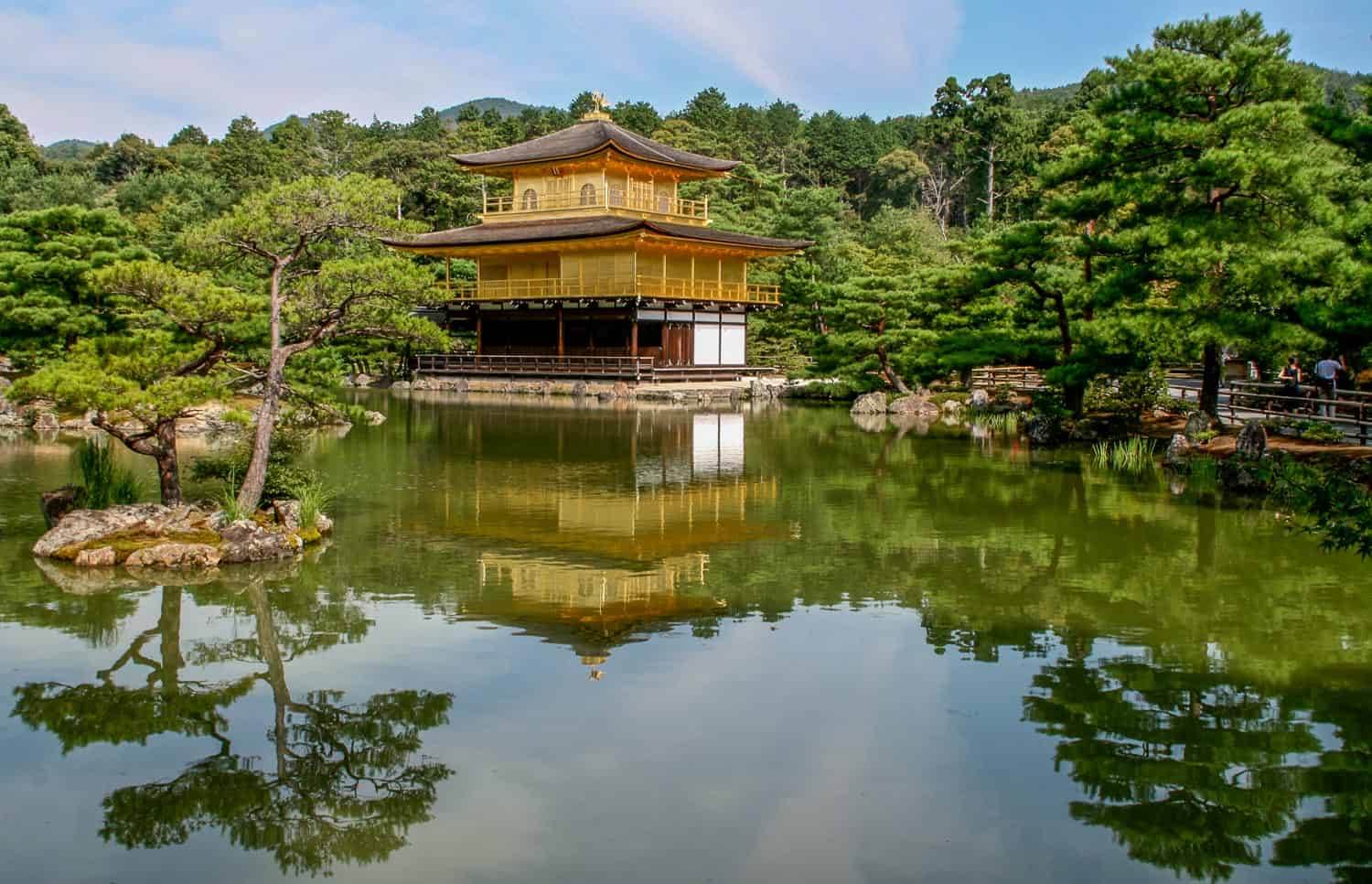
16 Unmissable Places to Visit in Japan in 2024
This page contains affiliate links. Please read our disclosure for more info.
Japan is somewhere I think everyone should visit. From futuristic skyscrapers to tranquil bamboo forests and neon arcades to serene temples, it’s like nowhere else on the planet.
The food is incredible, the people are ultra polite, and it has one of the most efficient public transport systems in the world. We love the combination of ease of travel and glorious bewilderment.
Japan has so much to offer but where should you start? These are our picks for the 10 best places to visit in Japan, perfect for your first or second trip to the country (plus extra suggestions for the repeat visits that are likely to happen!).
I’ve included our favourite things to do in each place, how long to spend there, and where we stayed. At the end of the post you’ll find a map of all these Japan destinations to start planning your route.
I recommend mixing a few of the popular cities (most people won’t want to miss Tokyo and Kyoto) with some quieter, more rural places in Japan to see a different side of the country and take a break from the crowds.
Video of Japan Must Sees
Top places to visit in japan, more amazing japan destinations, and a few more places to go in japan, best places to visit in japan map, japan travel tips.
Watch our short video for ideas on where to go in Japan for an amazing trip.
Back to Contents
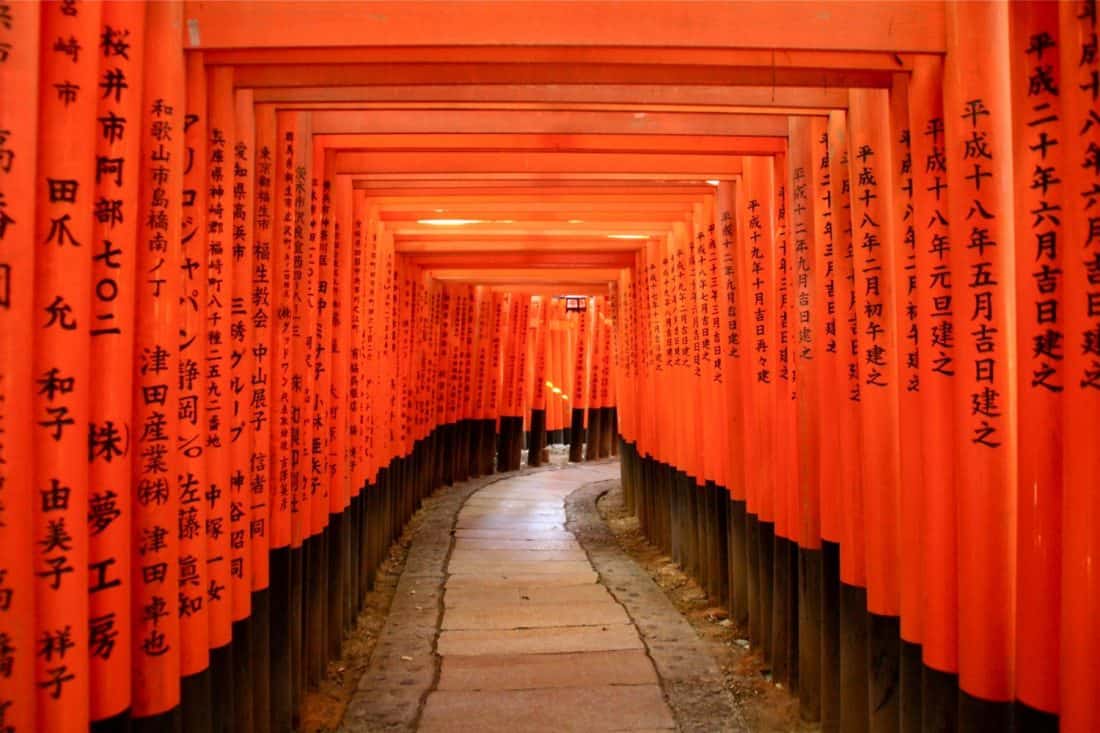
If you only have time for one Japan destination, make it Kyoto.
This is traditional Japan as you imagined it—geisha in brightly coloured kimonos emerging from wooden teahouses, forests of bamboo, temples and shrines in gold and silver and scarlet, raked gravel Zen gardens, intricate feasts served on lacquered plates, graceful tea ceremonies, and markets full of intriguing but unidentifiable ingredients.
The concrete high-rises of downtown Kyoto can be disappointing, so head out towards the mountains to the surrounding neighbourhoods where you’ll find narrow stone streets, old wooden houses, monks in flowing robes, and the sounds of chanting and gongs from the many temples and shrines.
Gion is the place to spot geisha, Higashiyama has many beautiful temples to explore, and Arashiyama, up in the western hills, is one of the most traditional neighbourhoods and home to bamboo groves, quirky temples, and monkeys.
Kyoto is one of the top Japan tourist spots, so try to visit the popular temples early in the morning as they do get crowded.
In Kyoto don’t miss:
- Wandering through the red torii gates of Fushimi Inari shrine.
- Drinking matcha in a traditional tea ceremony. We loved Tea Ceremony Ju-An at Jotokuji Temple.
- Learning to cook traditional Japanese cuisine in a Kyoto cooking class .
- Taking the train to the village of Kibune and walking across the valley to the beautiful Kurama-dera temple.
- Retreating from the busy streets of Gion to the magical Yasaka-jinja at night.
- Strolling the Philosopher’s Path.
- Experiencing Zen Buddhist cuisine at the Tenryu-ji temple.
- Getting off the beaten track at the quirky Otagi Nenbutsuji temple .
- Exploring these magical Kyoto cherry blossom spots if you visit in late-March or early-April.
- Enjoying the magnificent autumn colours if you visit in mid to late-November (Eikando and Enkoji are our favourite temples in autumn).
How Long to Spend: 3 nights minimum but 5 nights would be better. We’ve spent two months in Kyoto and still haven’t done everything! A longer stay also allows you to avoid the crowds more easily (you have more early mornings available) and take some of these wonderful day trips from Kyoto .
Read: Our post on the many amazing things to do in Kyoto (and how to avoid the crowds) and our guide to Kyoto’s temples and shrines and the best vegetarian restaurants in Kyoto
Where to stay in Kyoto: For a traditional ryokan, we loved our huge room with private bath overlooking the garden at Ryokan Yachiyo near Nanzenji temple (choose a suite not a standard room). At central Sora Niwa Terrace we enjoyed the amazing view from its onsen and rooftop bar. Or in a quiet part of Gion, Hotel The Celestine is stylish and close to temples. Find more accommodation in Kyoto here .
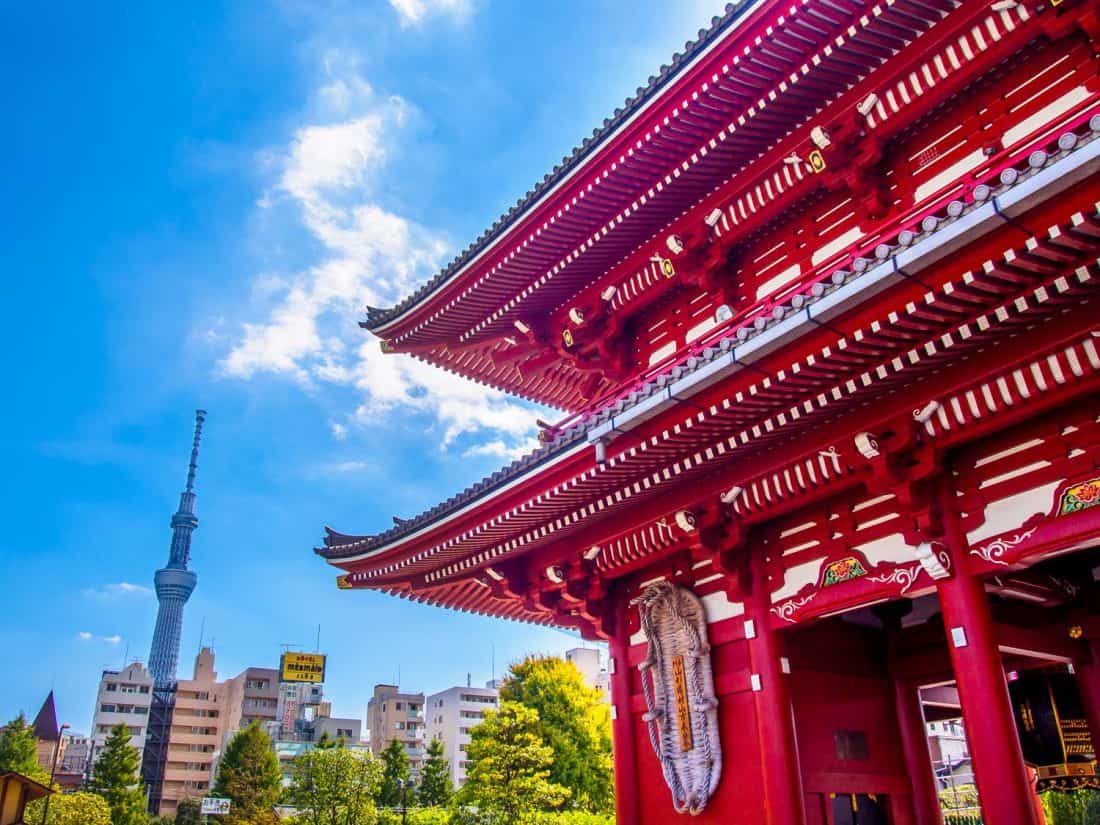
If Kyoto is the heart of traditional Japan, Tokyo is its ultramodern counterpart.
It’s here you’ll find the skyscrapers, noisy arcades, busy pedestrian crossings, quirky youth fashions, and many many incredibly delicious restaurants.
If all you do in Tokyo is eat, you’ll have an amazing time—even as vegetarians we ate so well.
Tokyo is also home to some of the weirdest activities we’ve ever done. From themed cafes (cats, owls, maids, robots, goats—you name it, Tokyo has it) to sensory-overload shows and arcades to cos-play go-karting.
On my first trip to Tokyo I was overwhelmed by the sprawling city and couldn’t help comparing it unfavourably to Kyoto.
On repeat visits I’ve grown to love the city (the food certainly helped) and while it isn’t as attractive as Kyoto, there is so much to do that you won’t want to skip it.
In Tokyo don’t miss:
- Driving a go-kart on the real roads while dressed as your favourite character. Insanity but so much fun!
- Eating in a tiny restaurant on atmospheric Memory Lane in Shinjuku .
- Gazing at the 360º skyline from the Shibuya Sky observatory (go at sunset for day and night views)
- Walking across the famous Shibuya Crossing.
- Gawping at the outrageous outfits on Takeshita Street in Harajuku.
- Visiting the brilliant DisneySea (our favourite Disney park in the world!) or neighbouring Tokyo Disneyland (or both if you have two days spare).
- Immersing yourself in the colourful digital art museum, TeamLab Planets (and don’t miss Uzu vegan ramen afterwards).
- Watching sumo wrestlers train— we did this morning sumo stable visit and it felt such an honour to see these impressive athletes close up.
- Drinking green tea at the relaxing Sakurai Japanese Tea Experience (the tea course is worth it).
- Exploring the cool neighbourhood of Shimokitazawa for cafes, vintage clothes, and record stores.
How Long to Spend: 3 – 5 nights or longer if you want to take day trips (such as to Nikko, Kawaguchiko or Hakone (for Mt Fuji), and Kamakura). We’ve spent over 6 weeks here on various trips and still find new things to do. If time is limited, I would allocate more time to Kyoto than Tokyo.
Read: 23 cool things to do in Tokyo and the best vegetarian restaurants in Tokyo .
Where to stay in Tokyo: Read why I think Shinjuku is the best area to stay in Tokyo . My top pick is Hotel Century Southern Tower next to Shinjuku Station—our panoramic king room had an incredible view and was more spacious than most Tokyo hotel rooms. Or splurge on the luxurious Hotel Park Hyatt where the film Lost in Translation was filmed. Search for hotels in Tokyo here .
Top tip: Consider buying a Japan Rail Pass in advance as it’s so easy being able to hop on and off trains all over the country. Read our Japan Rail Pass guide for full details.
More Tokyo, Direct to your Inbox!
Thank you for subscribing! You should receive an email from us very soon. Click on the link in the email to confirm your subscription.
3) Takayama

Takayama is an utterly gorgeous small town on the edge of the Japan Alps and one of the best less-visited places to go in Japan.
I loved wandering the historic centre full of traditional wooden houses, colourful shrines, neatly shaped trees, and bright red bridges over the river.
In Takayama don’t miss:
- Wandering the old town in the early morning before the crowds arrive.
- Buying delicious fruit from the morning markets.
- Snacking on mitarashi-dango (rice balls grilled in soy) from a street stall.
- Seeing the extravagant floats at the Festival Floats Exhibition Hall.
- Visiting the Hida Folk Village to see traditional thatched houses.
- Cycling through the countryside with Satoyama Experience .
How Long to Spend: 2-3 nights. We had 2 nights and wished we’d had longer because there’s lots to do in the surrounding countryside. With a longer stay you could take day trips to the traditional thatched roof houses of Shirakawa-go and go hiking in Kamikochi in the Japan Alps.
Read: 54 Best Things to do in Japan for an Unforgettable Trip
Where to stay in Takayama: We stayed at Super Hotel Hida Takayama , a good mid-range business hotel near the train station. Next time I want to stay at Oyado Koto No Yume , a ryokan with onsen which gets excellent reviews. Find more hotels in Takayama here .
Top tip: See our Japan 2 week itinerary for more details on combining these top places in Japan for an amazing trip.
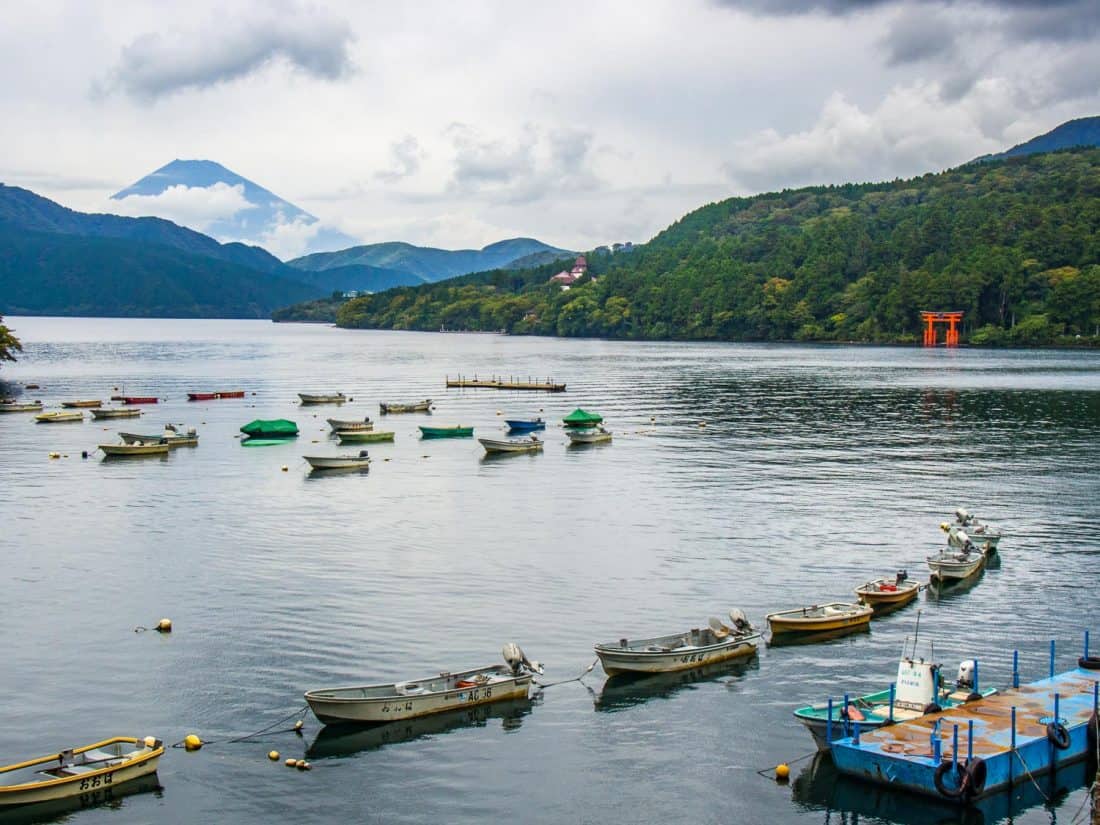
Mount Fuji is on most people’s lists of places to visit in Japan, but this must-see Japan landmark can be rather elusive and is often hidden by clouds.
There are a number of places you can see the mountain from ( Kawaguchiko is another great option), but Hakone is easy to reach from Tokyo and there are lots of other things to do in the area in case you are out of luck with a sighting.
Despite visiting on a cloudy, drizzly day, we were lucky that Mount Fuji emerged from the clouds above Lake Ashi and it was magical!
Hakone is also fun to visit because you can do a loop of the sights on different modes of transport—train, bus, pirate boat (yes, really!), and cable car.
In Hakone don’t miss:
- Buying a Hakone Free Pass so you can hop on and off all the transport options on the Hakone Loop.
- Seeing Mount Fuji from the lake or cable car.
- Eating a black egg cooked in the hot sulphur springs at volcanic Owakudani (not really, we skipped this, but the Japanese love them).
- Soaking in an onsen.
- Staying in a tatami room in a ryokan (traditional inn) and enjoying an elaborate dinner.
- Wandering the outdoor sculpture gallery at Hakone Open Air Museum .
How Long to Spend: You could visit on a day trip from Tokyo but I recommend 1-2 nights to experience a ryokan and onsen. We had one night and did part of the loop in the afternoon we arrived and the rest in the morning. While it was just enough for the main sights, we wished we’d had longer to enjoy our ryokan.
Where to stay in Hakone: Hotel Musashiya was one of the best places we stayed in Japan. It’s a modern ryokan on the shores of Lake Ashi in Moto Hakone. We loved our comfortable tatami room with lake views, the indoor and outdoor onsen baths (also with lake views), and the delicious vegetarian feast we were served in our room. It was wonderfully relaxing. Find more hotels in Hakone here .
5) Kanazawa
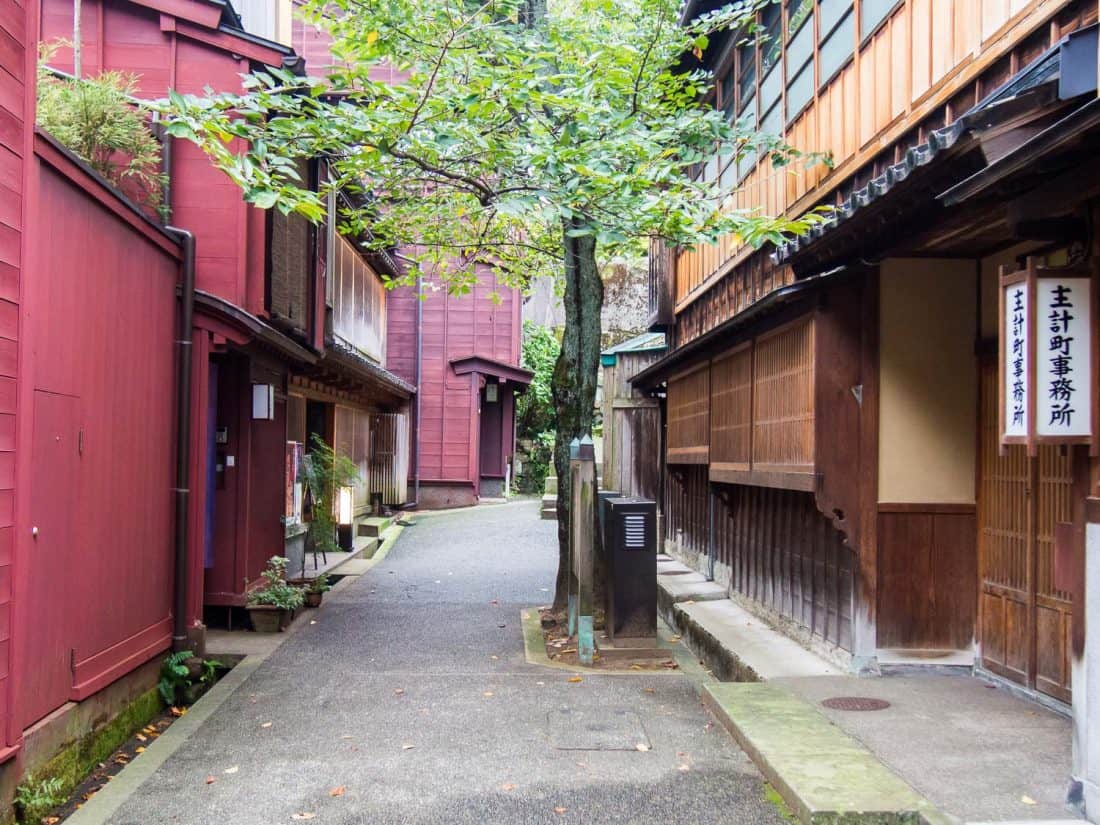
Kanazawa is one of the best cities to visit in Japan, but few foreign tourists make it here.
Consider Kanazawa as a quieter alternative to Kyoto to experience geisha districts with preserved wooden buildings.
There is also one of the most beautiful gardens in the country, a stunning castle, and many art museums to explore.
In Kanazawa don’t miss:
- Wandering Kenroku-en Garden , one of the top three gardens in Japan.
- Exploring the wooden teahouses of the geisha districts Higashi Chaya and the quieter Kazuemachi and Nishi Chaya.
- Experiencing a traditional tea ceremony at the exquisite Gyokusen-en Gardens.
How Long to Spend: 2 nights.
Where to stay in Kanazawa: We stayed in a standard business hotel in the centre—there are lots of budget options. Find hotels in Kanazawa here .

Nikko is a temple town and UNESCO world heritage site in the mountains a few hours north of Tokyo and makes a cool retreat from the city. The area is famous for its vibrant autumn colours.
The temples and shrines with their vermillion gates and moss-covered stone lanterns are scattered on the wooded hillside.
The main attraction is Toshogu Shrine, a stunning complex with more than a dozen lavishly decorated red and gold buildings amongst huge, ancient cedar trees. The crowds can be overwhelming, so afterwards head to one of the quieter shrines.
In Nikko don’t miss:
- Visiting Toshogu Shrine early to avoid the crowds
- Playing games at atmospheric Futarasan-jinja
- Exploring Taiyuinbyo
- Hiking up the mountain to the peaceful Takino shrine
- Photographing the bright red Shinkyo bridge
- Munching on dango (grilled rice balls on a stick) from a street stall
- Eating sushi at Komekichi Kozushi
How Long to Spend: You could visit Nikko as a day trip from Tokyo, but it’s worth spending a night or two to explore one of the most beautiful places in Japan including hiking trails, lakes, waterfalls, and hot springs.
We had one night and wished we’d had two so that we could have visited Toshogu Shrine early on the second day.
Where to stay in Nikko: We stayed at Nikko Park Lodge Tobu Station , a good budget option conveniently located close to the train stations. For more character, you could stay in a traditional ryokan with views and outdoor onsen baths such as Nikko Hoshino Yado . Find more hotels in Nikko here .
7) Koya-San
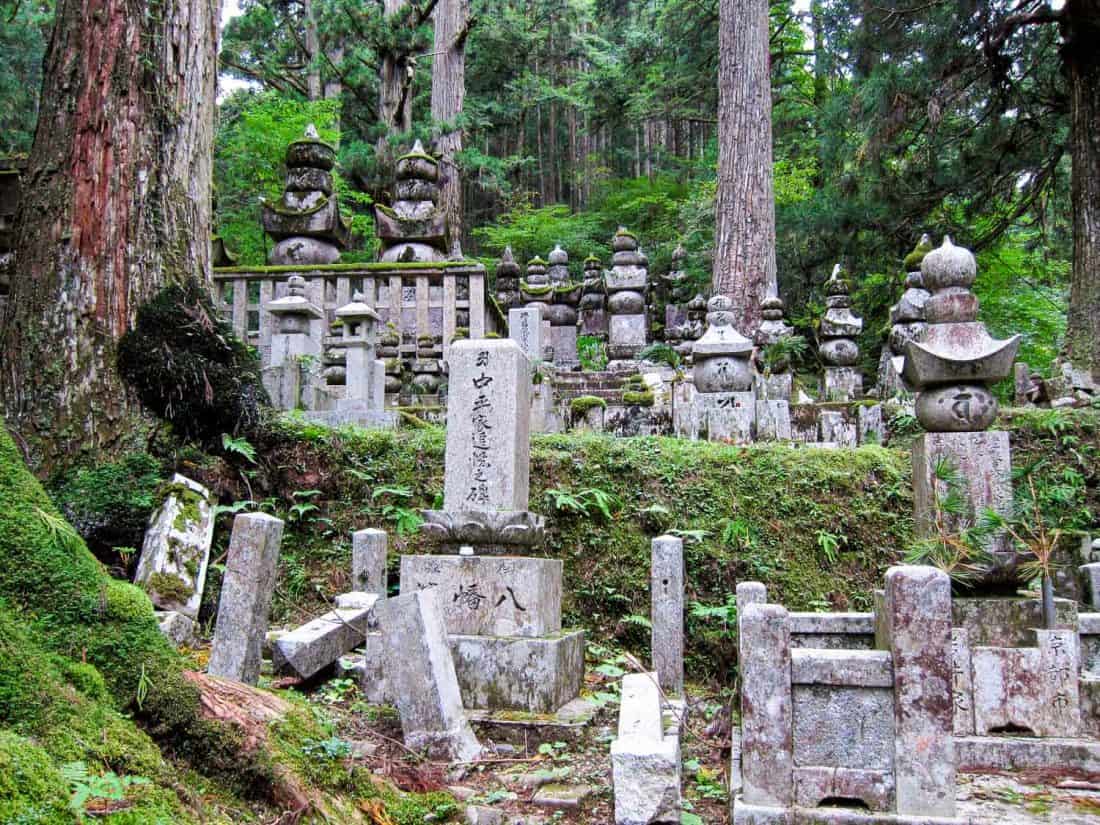
Koya-san (Mount Koya) is one of the most interesting places in Japan to experience the traditional side of the country.
This secluded and sacred temple town is located in the forest-covered mountains of Kansai and is one of the best places to get a taste of life as a monk by staying in a shukubo or temple lodging.
After wandering around the otherworldly Okunoin forest cemetery , we checked into our simple tatami room at the temple, soaked in the communal onsen bath, and enjoyed a delicious shojin ryori vegetarian Buddhist meal.
In the morning we were up early for the chanting and meditation ceremony with the monks.
A temple stay at Koya-san is a fascinating experience and well worth the detour from Osaka or Kyoto.
How Long to Spend: 1 night.
Read: Sleeping with Monks: A Night in a Japanese Temple in Koya-San
Where to stay in Koya-san: We stayed in Haryo-in, the cheapest temple accommodation, but it’s quite basic and I’d recommend paying more to stay at one of the more traditional temples like 1000-year-old Eko-in which gets superb reviews. Find more temple lodgings here .
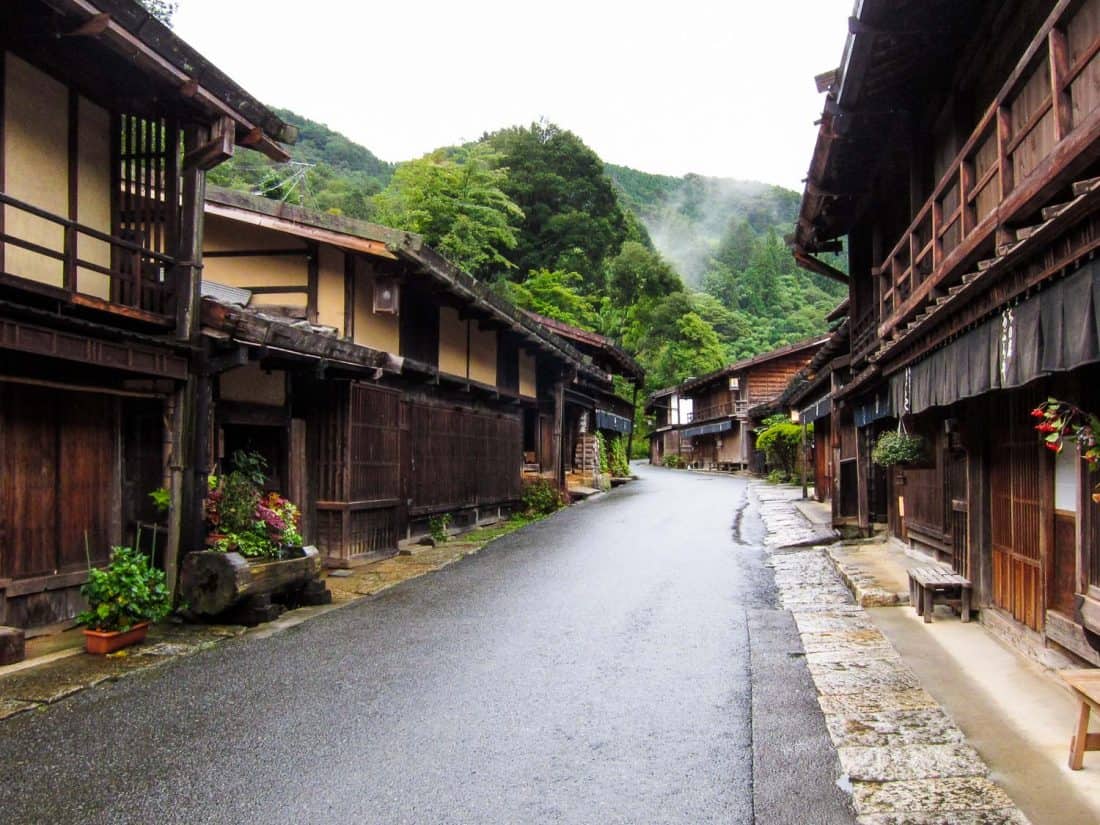
Tsumago is a picture-perfect traditional mountain village in the Kiso Valley.
It is one of the best-preserved post towns in Japan and you feel like you’ve stepped back in time on the traffic-less streets of beautifully restored wooden inns.
During the Edo period 300 years ago, Tsumago was a stop on the Nakasendo Way between Kyoto and Edo (now Tokyo).
You can hike part of this trail to the village of Magome in about two to three hours. Unfortunately, a typhoon prevented us doing this, but it’s supposed to be a scenic and easy walk.
How Long to Spend: 1-2 nights. If you can arrive early enough on the first day to hike the Nakasendo Way in the afternoon, then 1 night is enough as it’s a tiny village.
Where to stay in Tsumago: In keeping with the Edo-era atmosphere, stay in a traditional ryokan or minshuku (a simpler family-run inn). We stayed at the basic Minshuku Shimosagaya . Neighbouring Magome has more choice including the budget Chaya Hotel or historic Tajimaya .
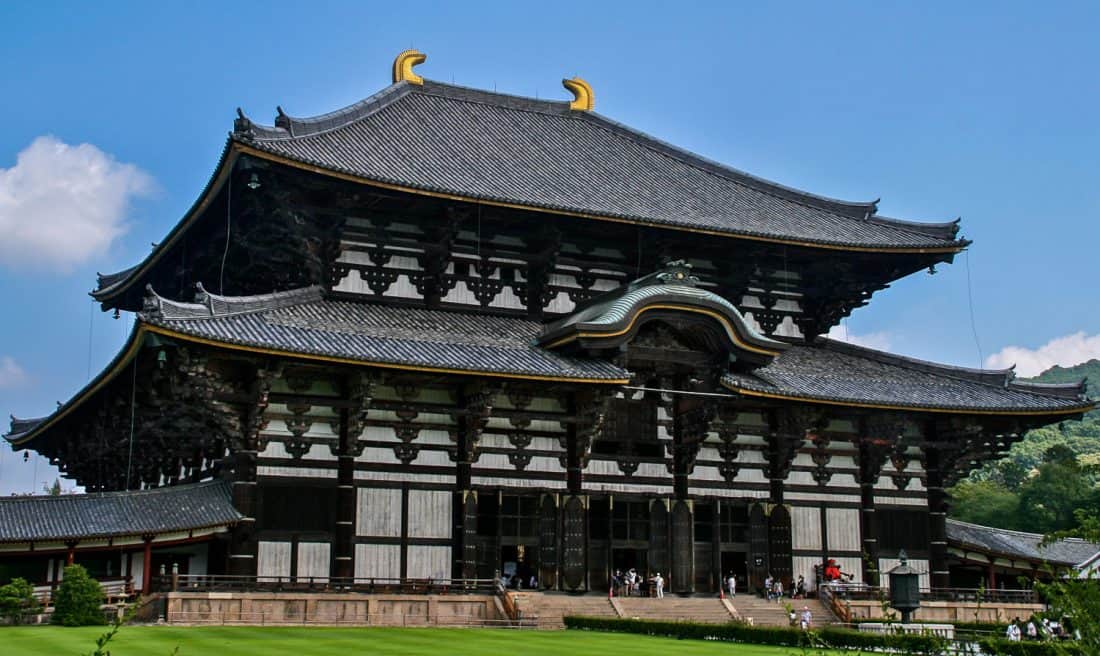
Nara was Japan’s first permanent capital and is full of historic treasures including many UNESCO world heritage sites.
It’s one of the top Japan attractions and makes a rewarding day trip from Kyoto to visit the temples and wild deer in Nara Park.
The Daibutsu-den (Hall of the Great Buddha) at Todaiji is the main sight—it’s the largest wooden building in the world and nothing prepares you for the immense sight.
Inside is the 15-metre tall gold and bronze statue of Buddha that dates back to 751.
We also love the forest shrine complex Kasuga Taisha.
How Long to Spend: Most people visit as a day trip from Kyoto or Osaka. You can see the highlights in half a day but a full day is better.
Where to stay in Nara: The advantages of staying overnight in Nara are avoiding the crowds with an early start and experiencing our favourite ryokan in Japan. Tsukihitei is a small traditional inn with a magical forest setting and delicious meals. It’s only a 15-minute walk to the Nara temples.
Sign Up for more free Japan Content!
10) hiroshima and miyajima.

Come to pay your respects to the victims of the atomic bombing at Hiroshima’s moving Peace Memorial Museum and Park and stay to explore the modern city that was almost entirely rebuilt after World War II.
Hiroshima is usually combined with a visit to the famous floating torii gate at Itsukushima shrine on nearby Miyajima Island.
You’ll also want to try the delicious local speciality okonomiyaki, a thick pancake of batter, vegetables and noodles.
How Long to Spend: 1-2 nights is enough to visit the Peace Memorial Museum and Miyajima Island or you could visit as a long day trip from Kyoto, Osaka or Okayama. We spent 1 night in Hiroshima then 1 night on Miyajima.
Read: 14 Best Day Trips from Kyoto .
Where to stay in Hiroshima: The Sheraton Grand Hiroshima was the most spacious Western-style hotel we stayed in in Japan. We really appreciated the king size bed after a few weeks of small Japanese hotels. It’s right next to the station too. Find more hotels in Hiroshima here . Where to stay in Miyajima: While you could visit the island on a day trip, we loved seeing the top sights without the crowds at night and early in the morning. Iwaso Ryokan has the perfect location (secluded but central), beautiful meals, and our room had a view of the torii gate.
There are so many incredible places to explore in Japan. Here are some more destinations that we absolutely loved (and it was hard to leave them off the top 10 list!).
If any of these appeal to you more than the ones above (or fit into your itinerary better), then they will be just as enjoyable.
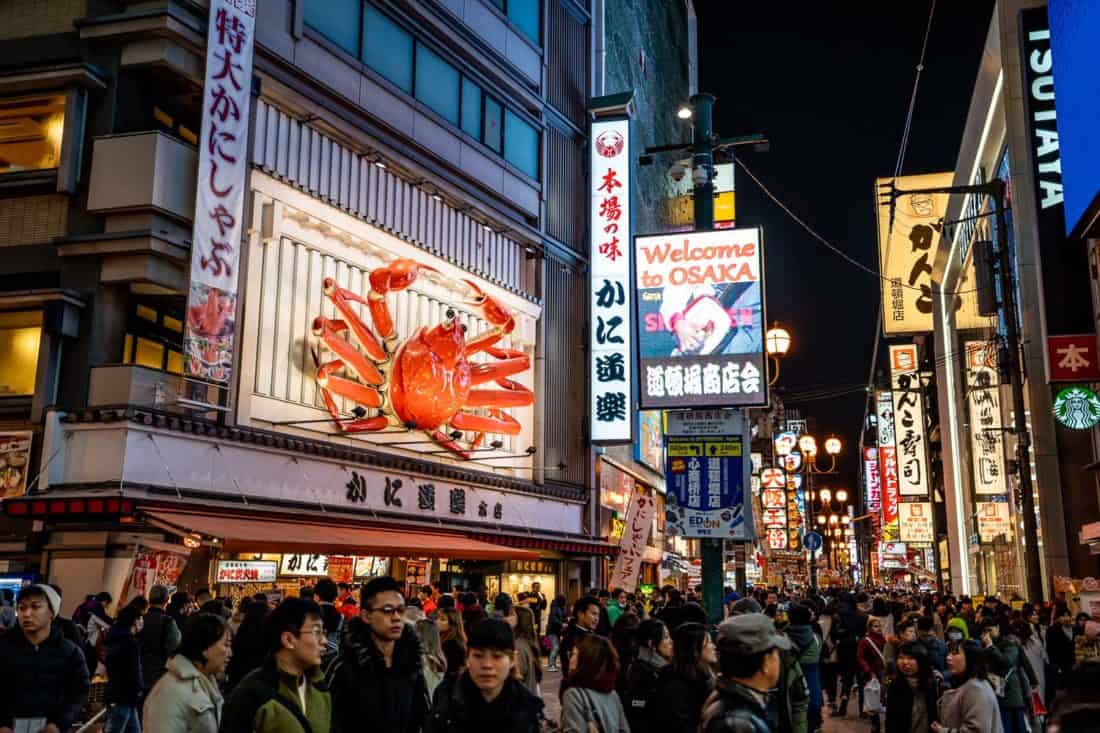
Osaka is a Japan must-see for many visitors. We love the neon craziness of Dotonburi, the amazing food ( for vegetarians too ), friendly people, affordable prices, and the scary rides and brilliant Harry Potter World at Universal Studios Japan .
But, if you have limited time on your first trip to Japan, I would probably say choose Osaka or Tokyo as they are both sprawling modern cities.
If you are flying into or out of Kansai airport then it makes sense to spend a night or two in Osaka. You could also visit as a day trip from Kyoto.
In Osaka, we loved staying in Shinsaibashi . The location is ideal—quiet but close to lots of cool shops and restaurants and within walking distance of Dotonburi. Hotel options include the stylish Hotel The Flag .
12) Kinosaki Onsen
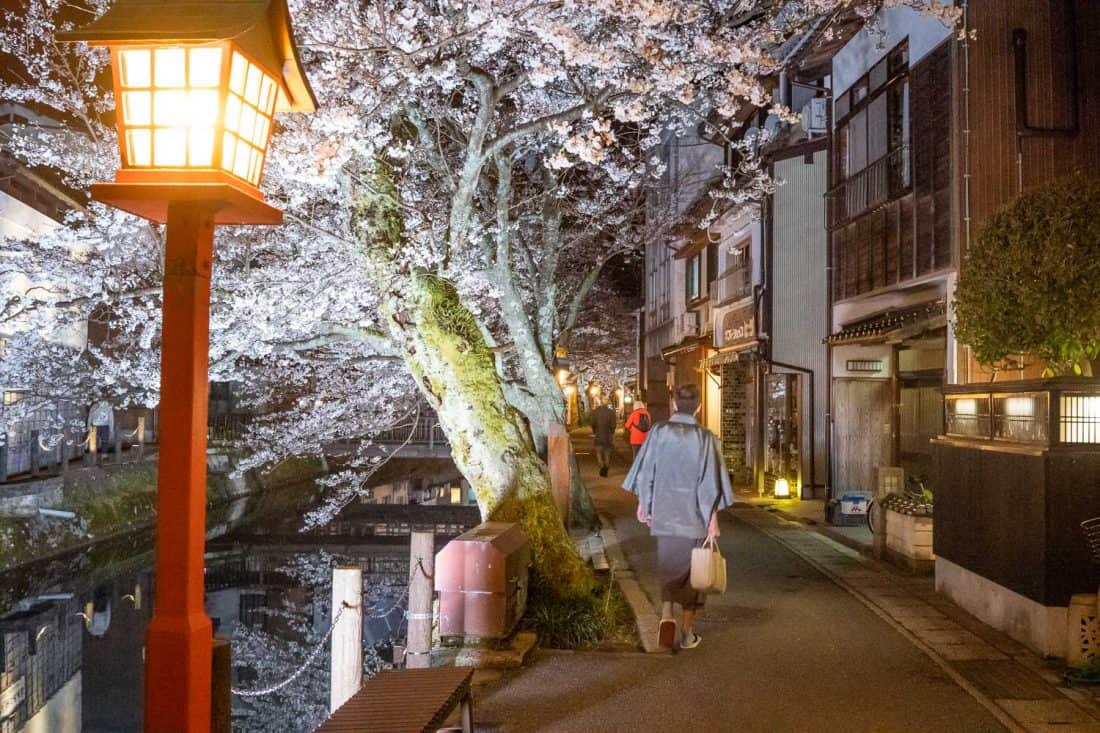
On our first Japan trip we were terrified of getting naked in onsens, but on our latest visit we were brave enough to spend a few nights in an onsen town.
Onsen hopping dressed in a kimono in a traditional hot spring resort is a classic Japanese experience. Kinosaki Onsen is a great place to experience it.
It’s only a few hours from Kyoto or Osaka and the canal-side town is very pretty, especially in cherry blossom season.
We stayed in a traditional tatami mat room at Morizuya Ryokan . It’s ideal for first-timers as they speak English and are very friendly, walking you through everything you need to know. The epic meals served in your room are delicious too.
Read our Kinosaki Onsen guide for all the details including onsen etiquette and how to get over your fears.
13) Naoshima Island
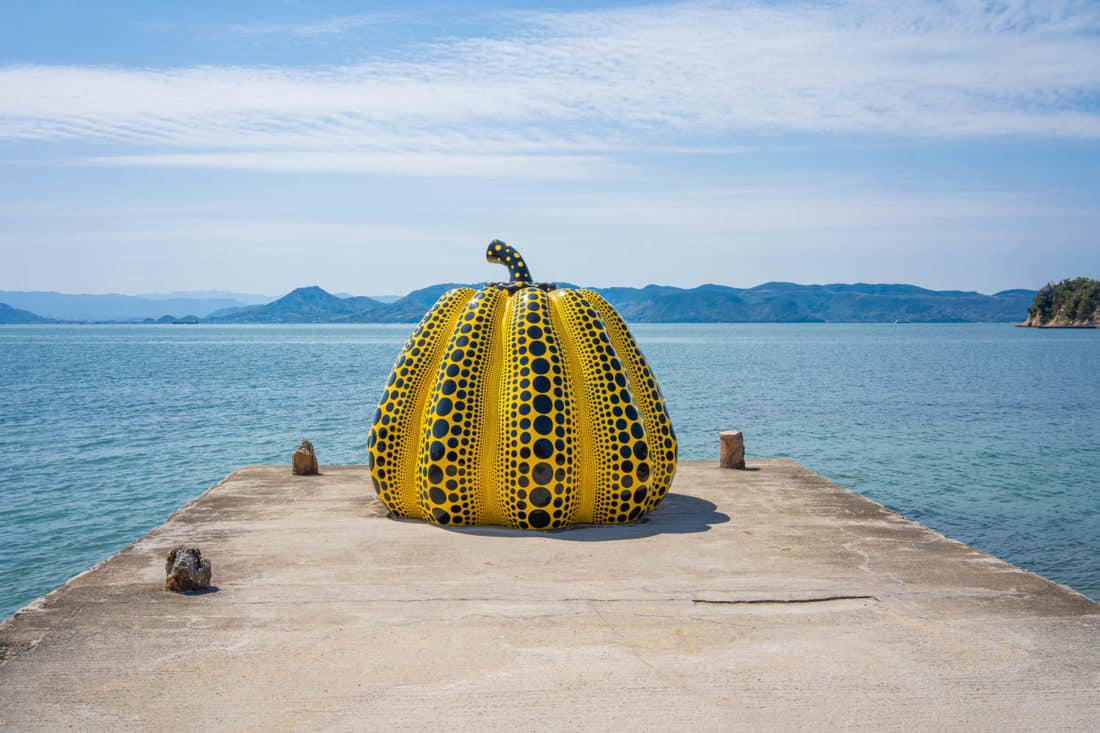
Contemporary art fans will love Naoshima, a sleepy island in the Seto Inland Sea known for its art galleries and outdoor sculptures.
We visited on a day trip from Okayama and had a wonderful day cycling around and combining art with beautiful sea views and tiny fishing villages.
Read our Naoshima Island guide for a recommended one day itinerary.
14) Okayama
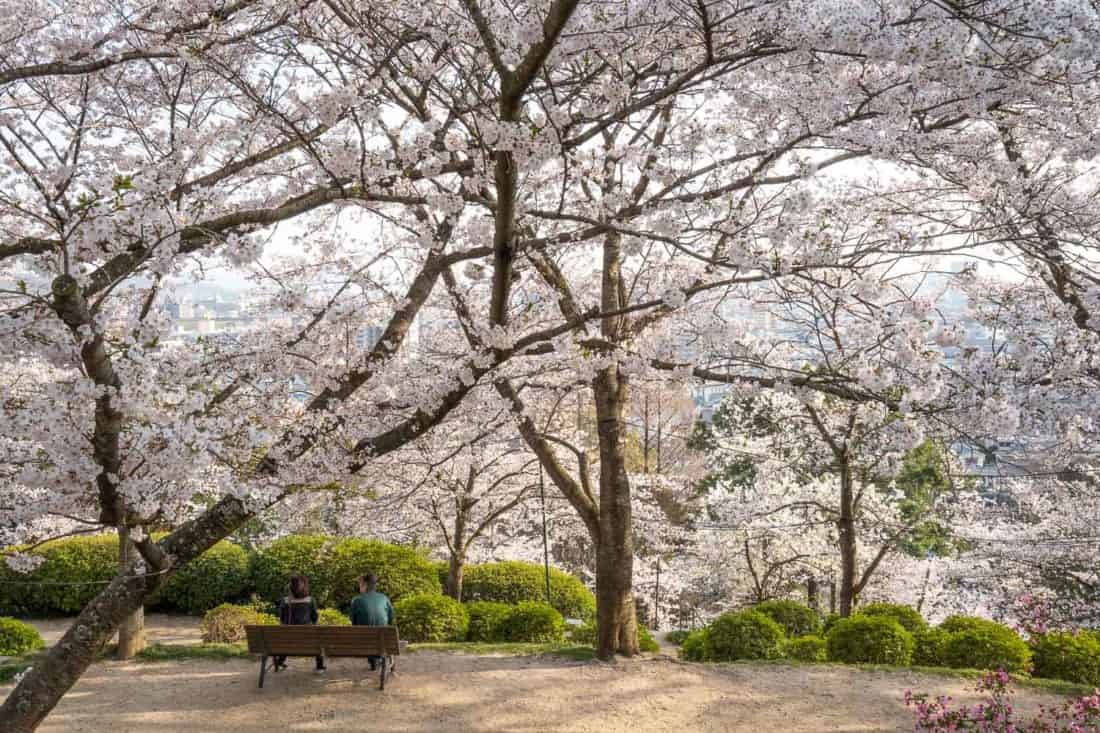
If you are interested in getting off-the-beaten-track, Okayama is a great place to visit in Japan.
This modern city is home to one of the best gardens in the country and is especially beautiful in sakura season when you can enjoy the cherry blossoms without the crowds of Kyoto or Tokyo.
As it’s on a bullet train line, it’s a convenient and affordable base for exploring the area including the historic Kurashiki, Naoshima Island, Himeji Castle, and Hiroshima.
We also did a fantastic bike trip on the Kibiji Bike Trail through rice fields to untouristy temples.
Our post on the best things to do in Okayama has all our tips.
15) Himeji Castle
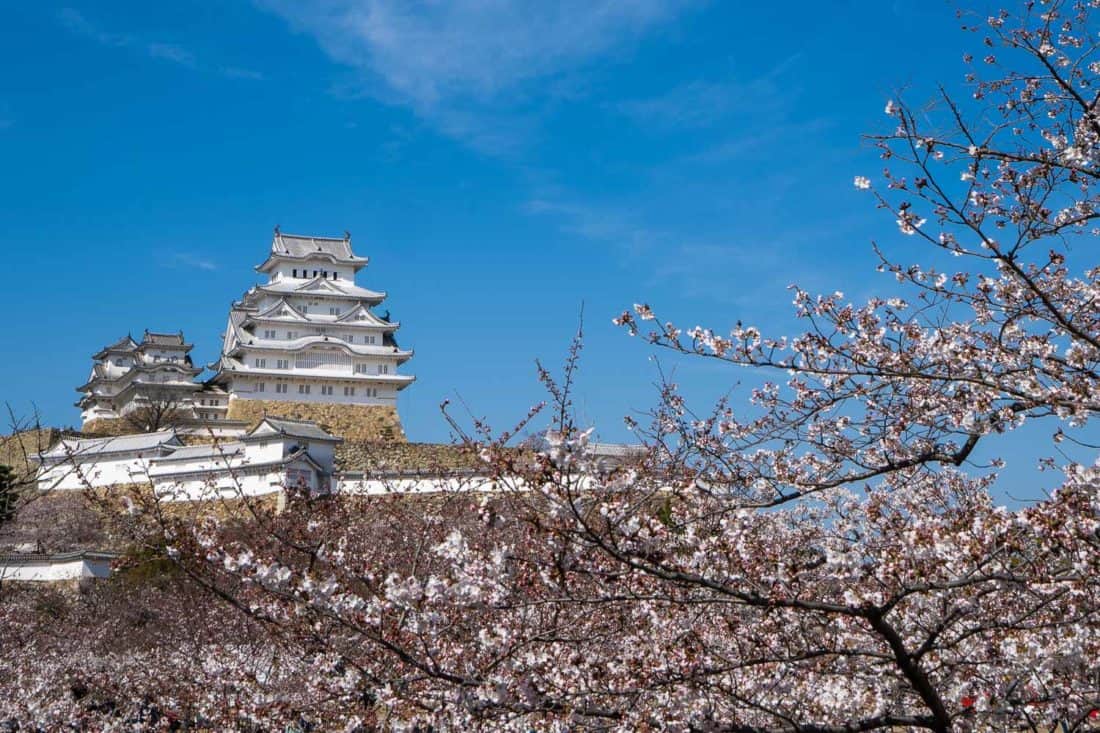
Himeji Castle is one of the few original castles in Japan (most were destroyed at some point and rebuilt). It’s well worth a visit, especially in cherry blossom season.
You can easily visit in half a day from Osaka, Kyoto, Okayama (as we did) or on the way to Hiroshima.
16) Kawaguchiko
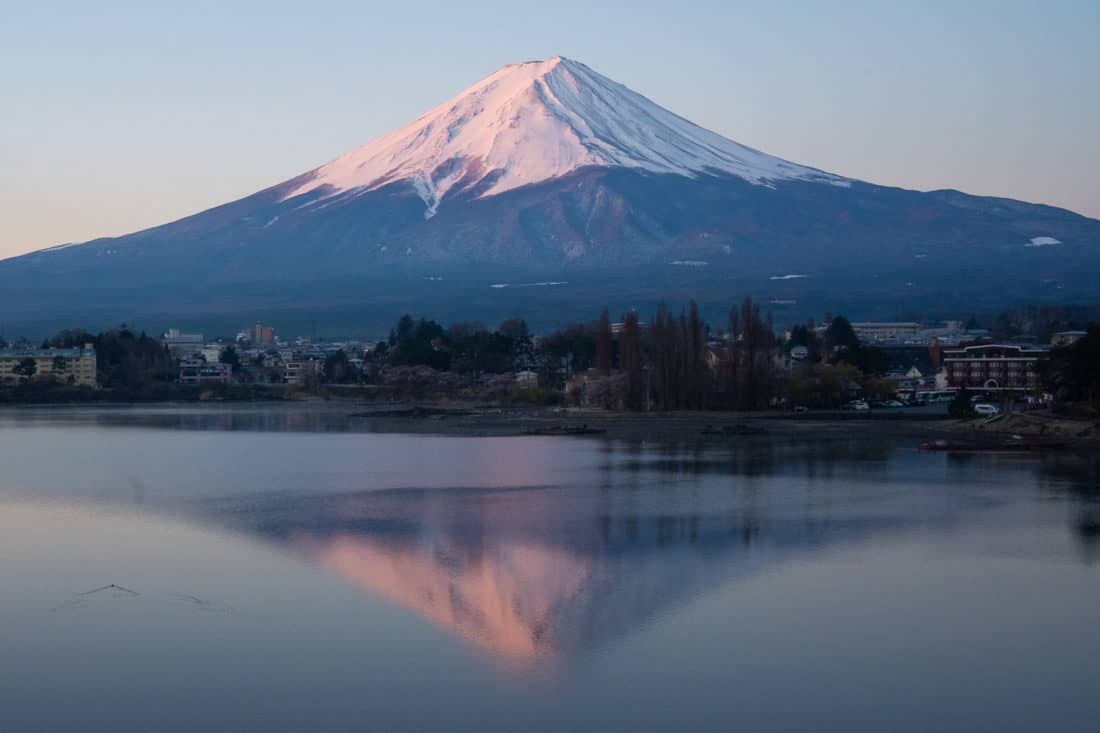
For the best views of Mount Fuji, head to Lake Kawaguchiko. It’s especially lovely in cherry blossom or autumn leaf seasons.
You can enjoy the views by walking or cycling around the lake or taking a trip on a cable car or boat (we hired a panda pedal boat!).
The lake is also home to one of my favourite museums and tea houses in Japan.
Kawaguchiko Lakeside Hotel is an excellent affordable option here. Unusually for Japan, our room was huge, and it’s close to the lake with Mt Fuji views from some rooms.
See my Lake Kawaguchiko guide for more tips.
These Japan tourist attractions and off-the-beaten-path gems are on our list for our next trip:
- Kamakura – Beaches, Buddhas, hikes and vegetarian-friendly food. You could visit as a day trip from Tokyo.
- The Izu Peninsula – Rugged coastline, mountains, and hot springs not far from Tokyo.
- Shirakawa-go – A village of traditional grass-roofed houses in a scenic setting. You could fit in a visit between Takayama and Kanazawa.
- Takaragawa Onsen – A scenic onsen resort a few hours from Tokyo. It has a large mixed-gender onsen, so unusually you don’t have to be naked.
- Hokkaido – The northernmost island of Japan known for its natural beauty and outdoor activities.
- Okinawa – A chain of tropical islands in the far south of Japan.
Read our detailed Japan guides for everything you need to know to plan a brilliant trip.
- 54 Best Things to Do in Japan for an Unforgettable Trip
- Planning a Trip to Japan: Dos and Don’ts
- Two Weeks in Japan: A Detailed Itinerary
- Is a Japan Rail Pass Worth It?
- Where to Stay in Japan: The Ultimate Guide to Accommodation
- 20 Fascinating Books to Read Before Visiting Japan
- Vegetarian Survival Guide to Japan
More Japan, Direct to your Inbox!
I hope this post has given you some ideas of where to go in Japan. Wherever you decide to visit you are sure to have an amazing trip.
What are your favourite places in Japan? Leave a comment and let us know so we can add them to our Japan bucket list.
If you enjoyed this post, pin it!
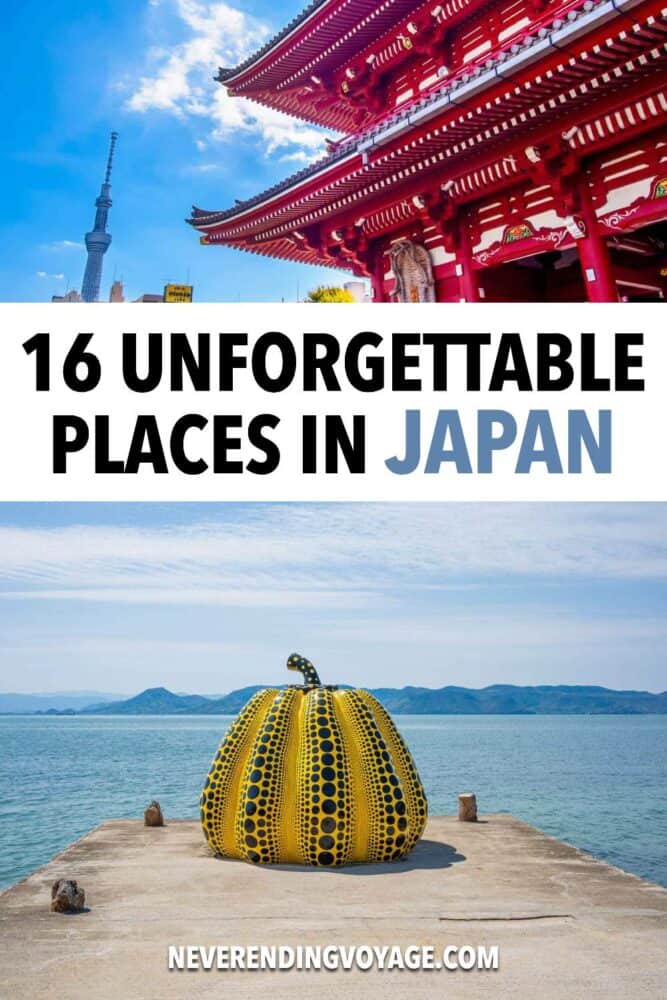
63 Comments
very informative
Reply ↓
Inquisitively you make, I will address you’ll find supporting and shocking things on an incomprehensibly focal level tangled center interests. websitekan
thanks for sharing
First of all – your posts are fantastic and so full of great detail. We are planning our first trip to Japan in November. First draft is 5 days Tokyo – 2 days Hakone – 5 days Kyoto – 3 days Hiroshima – 4 days Tokyo.
I was trying to see how to fit Lake Kawaguchi or Takayama or Kanazawa into the trip but they all seem to require quite the journey time given the other places we have picked. Wondering if it would be better to add some days to the end of the trip and just visit from Tokyo. So maybe do Tokyo to Kanazawa for a couple of days. Not particular keen on 5-6 hour trip from Takayama back to Tokyo so may have to skip that.
Hi Kevin I would do Tokyo – Hakone – Takayama – Kyoto – Hiroshima – Tokyo.
We did Tokyo – Hakone – Takayama – Kanazawa on our 2 week itinerary: https://www.neverendingvoyage.com/japan-2-week-itinerary/
I prefer Takayama to Kanazawa, especially as you already have lots of big cities on your itinerary. If you really want to fit it in, do so between Takayama and Kyoto.
Lake Kawaguchi is harder to fit in. You could do it as a day trip from Tokyo at the end if you didn’t see Mt Fuji at Hakone (due to clouds) and if you have the energy.
One thing you might also consider is reducing Hiroshima to 2 nights and adding a night on Miyajima Island. We did that last October (one night in each) and really preferred the island after the day trippers had left and early in the morning. You might catch the autumn colour on the island if you are visiting later in November. Again, it changes up the pace from the cities.
If you have big suitcases, you could use a luggage delivery service from Hiroshima to Tokyo and just take a day bag for the overnight (we decided against that but only had a carry on suitcase and laptop bag each).
Good luck with the planning and enjoy Japan!
Erin – Thanks for the advice – good to hear input from someone who has actually experienced it
Apologies for posting the reply so many times – i kept picking the wrong reply option
Awesome guide. Thank you. A lot of the accommodation is around $500aud a night! Extremely expensive. Is that normal around Japan? Me and my partner were wanting to travel around Japan in July this year but if the cost of accommodation us that expensive we might not be able to do the trip. I assume we will be able to find cheap accommodation at most places?
You can definitely find much cheaper accommodation. We did our first few Japan trips on much tighter budgets, but now have the ability to choose more special places to stay.
Your best bet is to look for business hotels in the cities – rooms are usually small but clean and well equipped. Have a browse on Booking.com and you should find plenty of options.
Planning trip(first time ever in Japan) arriving afternoon of December 18th and leaving evening of December 30th. I will be traveling with my 18 and 20 year old boys (privacy should be interesting in the tiny hotel rooms). Planning to stay in Tokyo either 5 nights with day trips to Hakone and either Kamakura or Yokohama OR 4 nights with day trip to either Kamakura or Yokohama and 1 night in Hakone. Is it worth staying the night in Hakone, or just day trip from Tokyo? Then we will spend 3 nights in Kyoto and 3 nights in Osaka (does it matter which order?) with a day trip from each city. One to Nara and one to Hiroshima and Miyajima. My 18 year old wants to have Kobe beef in Kobe, but don’t think it will happen as it’s likely not worth the time away from the other places. I’d love to be able to visit both Kamakura and Yokohama, but don’t think it will work. Likely choosing to go to Kamakura. We will return to Tokyo for the last night and spend the last day (really 1/2 day) in Tokyo before heading to the airport to fly home. Thoughts on the plan? Any specific recommendations?
I think it’s worth spending the night in Hakone if you stay in a ryokan as it will be a unique experience that you won’t get in the cities.
I would probably go to Kyoto before Osaka but it doesn’t make a huge difference. Your day trip choices sound good.
Enjoy Japan!
thank you very much for all the infos and the very beautiful photos!
Hello, Have you been to Tamba-Sasayama in Hyogo? We have a lot of nature, local food, and cultures! Tamba black beans are famous local food and also you can experience a pottery making. I hope you will visit here one day;)
We haven’t but we’ll put it on our list for our next trip this autumn! Thank you for the recommendation!
Wow, this is such a great travel guide. Thanks a lot!
Odd how all of the “best places in Japan to visit” are all in central Japan near Tokyo and Kyoto. How disappointing the travels of the writers to these other parts of the country must have been.
Have you been to the Autumn Takayama Festival? 😊
We did not buy plane tickets yet, but we were going to land on Oct 22 to experience the Kurama Fire Festival in Kyoto. We heard about Takayama festival on Oct 9th and wanted to know if it’s worth changing our plans to fly in earlier for it, and if the weather will be horrible or not during that time? Thank you so mochi for your help! I’m so torn!
We haven’t been but it does look cool! I’m not sure it’s worth changing your plans for. Later in October you’ll have more of a chance of seeing fall colours in Kyoto. If you do decide to go, book your accommodation asap as it gets extremely busy during the festival.
What is the best way to get around these places? Train or car?
Train. You might find this post helpful: https://www.neverendingvoyage.com/planning-a-trip-to-japan/
very nice good work
Thanks for the detailed post with nice photographs
I forgot to include in early to mid December.
I’ve been to all the tourist sites and a few others. Where would you recommend for an overnight not far from Tokyo?
Have you been to the Izu Peninsula? We haven’t yet but our friend who lives in Tokyo recommends it. The onsens would be nice in the winter.
planning on going japan next year, getting lots of ideas from these blogs
Beppu should be on this list!
Hopefully we’ll make it there next time!
nice one thank you i learn lot of things about this web site
what about Harajuku?
I included it in the Tokyo section :)
It’s definitely worth visiting!
Hello I am relooking at your Japan highlights. I had the most amazing trip in Spring 2020 many thanks to your post which seems now to have gone and been replaced by more posts. The one thing I would like to say is that you put before Miyajama on the one i read and i have to say that this was one of my favourite spots. I totally recommend it. We also did the two walks one of which was the edo trail and the other outside of Kyoto. We stayed in Koyasan too thanks to you. Thank you again.
Hi, I’m thinking of planning a trip for me and my daughter to visit Japan but haven’t any ideas of where to start. I was thinking a two week trip but maybe more time would be needed for the things we would like to do. If staying for longer than two weeks is there visas needed ect. I haven’t a clue where to start I’ve looked at your guide which is very helpful. Would I be better of speaking to a travel agent for help and advice ??? Many thanks Paul Miller.
It depends where you are from but many nationalities (including UK and US) can stay in Japan for 90 days without a visa.
Two weeks would give you a great overview (here’s a suggested itinerary: https://www.neverendingvoyage.com/japan-2-week-itinerary/ ) but if you have more time (and the budget), there’s always more to see.
I think Japan is manageable without a travel agent. See our post on planning a trip for ideas to get started: https://www.neverendingvoyage.com/planning-a-trip-to-japan/
We used this page during our six week Japanese adventure and it was brilliantly helpful! Thank you!
I’m glad it helped, Alex. I hope you enjoyed Japan as much as we do.
This page has been very helpful! I am planning a two week trip to Japan next year and this has helped break down each city and what to not miss. Thanks again!
I hope someday, I can visit Japan for some other reasons. As pictures shown, fantastic and very interesting places and educational as well.
Japan has always been a remarkable place for me. I think I missed those places you described about. I hope I can give a shot on my future trip if possible. Btw thanks for sharing your experience with us.
Japanese pachislot, mechanical games,are different from foreign slot machine and popular recently. From 2020 smorking will be prohibited in the pachinko parlors or pachislot parlors. Terefore more and more people will have a good time during playing games. If you come to Japan, you might want to play them.
We keep meaning to try pachinko! That’s good news about the smoking ban!
Hi Great website thanks. We are looking to travel to Japan (arrive Tokyo) in late January for about 14 days. This is our first visit and we don’t mind driving. I would be interested to know what places you could recommend to get a real feel of Japan. Thanks
I don’t recommend driving in Japan. The train system is so efficient and it’ll be less stressful than driving. Here’s our 2 week itinerary: https://www.neverendingvoyage.com/japan-2-week-itinerary/
Thanks for the guidance. If you were going in November for 6 weeks what would you do with your time Cheers Walter
That’s a great amount of time and you should so some great autumn foliage. You could visit everywhere on this list so it really depends on your interests and what pace of travel you prefer.
On our latest 7 week trip we chose to base ourselves in Kyoto for a month then travel around for a couple of weeks and finish with a week in Tokyo. If you prefer to move at a faster pace you could cover a lot of ground.
Hi Guys, great site. I was wondering why you seem to spend so much time in the large cities? I’m planning my first trip and my initial thoughts were to spend just a few days in Tokyo and Kyoto? Arent the more remote sights more rewarding?
I was also wondering about a cherry blossom visit – when if the best time to see them but to avoid the worst of the crowds??
Thanks! Chris
We love the smaller places in Japan and think the ideal trip includes a mix of them with the big cities. I wouldn’t say they are more rewarding, just different. There’s just so much to see (and eat) in Tokyo and especially Kyoto that we keep returning to them.
If you’re not a big city person a few days in Tokyo would be fine. Kyoto has a lot of history, temples, and traditional architecture (and more tourists), so you’ll only cover some of the highlights in a few days.
The cherry blossom are only in full bloom for about a week so there’s no way of avoiding the crowds in popular spots then. It’ll be slightly less crowded at the beginning or end of the blooming period, but it’s hard to predict exactly when that will be (and it varies by location).
I would focus on visiting places that have cherry blossoms but fewer crowds. We were in Kyoto at the beginning of April when the blooms just started (and it was already quite busy) then moved on to Kinosaki Onsen and Okayama where we enjoyed the blossoms without many people around.
I’ve written more about it here (and will be doing an Okayama post at some point): https://www.neverendingvoyage.com/kyoto-cherry-blossoms/
hi guys really nice blog, could you itemize it, how many days you spent in each city, village? and if you would change something, where to stay maybe longer, where shorter?
regards tomek
That’s a good idea! We’re currently travelling in Japan and will update this post soon so I’ll add that info then. If you’d like to know about a specific place now just let me know. Usually we spend a week or more in Kyoto and Tokyo and only 1-3 nights in the smaller places.
My husband and I are interested in making a second trip to Japan in March with our 5 month old baby. This will be our second trip…we’ve done Tokyo, Takayama, and Kyoto previously (along with one night in Osaka). We LOVED Takayama for its food and quaintness. We liked Tokyo but got bored after a few days. Kyoto was probably our least favorite – too touristy, What should we do for our second trip??
It’s very difficult to make recommendations without having any idea of what you like to do, how long you plan to visit, or if your baby goes everywhere with you. Given that you liked Takayama, you might consider Kanazawa, Kurashiki, and Nikko. The first two are small cities of about 400,000 that have delightful walking areas and interesting sights in general. Nikko is very small but houses the shrines of Tokugawa Ieyasu and Tokugawa Iemitsu, who were the first and third shoguns of the Tokugawa Shogunate. These are UNESCO World Heritage and incredible.
You didn’t indicate when you visited Japan on your first trip. If you went to Kyoto during fall foliage you would have encountered a lot of tourists, most of whom are Japanese. Kyoto draws tourists because it is a world class city with a very large number of World Heritage sites in addition to spectacular fall color. I don’t want to sound rude regarding your Tokyo comment. I can understand not liking Tokyo because it is a bit overwhelming in size, although that is part of what makes it so enjoyable for us. However, I cannot comprehend getting bored there.
I wish you luck.
It sounds like you enjoy the smaller, more traditional places so I’d recommend Tsumago, Koya-san and Kanazawa (a bigger city but with some lovely traditional neighbourhoods). Nikko is also beautiful but we found it very crowded (it would have been quieter if we’d stayed overnight and arrived early though).
Your website is terrific. I was provided a link to a couple of regions in Italy for a major summer trip. Your comments, photos and recommendations were of such interest that my wife and I decided to completely change the first 10 days of our trip. Then I got so immersed in the various places you have gone, I decided to look at Japan. We spent a month there five years ago, and then we spent another month this December including Christmas. We have been to all but two of your 10 unmissable places in Japan and have used the trains and metros as our primary modes of transport. We would agree that Japan is a great place to visit and the people are terrific.
Since you asked for additions to your bucket list, I would like to suggest the following. Near Hiroshima is the island of Miyajima. This is the site of the great in the water torii gate, which is quite magical. The museum at the Hiroshima Peace Park provides an incredibly moving experience. Himeji Castle (White Heron Castle) is one of the original late 16th century castles and I believe the largest. It is on the route between Hiroshima and Osaka. It has been recently renovated. Osaka Station is beautifully done with some terrific surrounding buildings. The Dotonburi area is neon heaven with street food in abundance. Kyoto, as you stated, is amazing with probably more UNESCO World Heritage locations than anywhere else in the world. South of Kyoto in Uji is Byodo-in, a world heritage temple with a beautiful new museum.
I agree that Kanazawa is a really nice smaller city. Like Kyoto it was not bombed. The D.T. Suzuki Museum is an outstanding piece of architecture, although of primary interest to people steeped in Buddhism, philosophy. The Seisonkaku Villa is a 10,000 foot samurai home located at the edge of Kenrokuen Gardens and is very interesting. There are two places in Takayama you didn’t mention, each of which is very worthwhile. First, next door to the Float Museum and on the same admission ticket is the Sakurayama Nikkokan. This museum contains scale models of the shrines in Nikko. It took 33 master carpenters and 17 years to complete during the first part of the 20th century. It is incredible. Second, the Takayama Museum of Art houses an outstanding (Michelin 3 star) collection of art nouveau and art deco objects. We visited Matsumoto to see the Matsumoto Castle (Black Crow Castle). It is also one of the oldest castles in Japan.
I would also like to suggest Nagoya, which is one of Japan’s largest and most industrial cities. It is home to Toyota. Three recommendations. First, tour the Toyota Factory to get real insight into a truly sophisticated approach to assembly line manufacture. Second, the Toyota Commemorative Museum of Science and Technology is phenomenal. Many demonstrations of working textile machines and auto robotics. Third, the Nagoya Palace has been rebuilt (just opened in 2018) to exact specifications of the original palace (early 1600s) including all the screens. Even though it is a replica, it’s incredible.
You covered the shrines in Nikko. I would only add that if one did nothing else but see the Nikko shrines, a trip to Japan is warranted. Finally, Tokyo is to us the most exciting city around. Never ending pleasure of wandering around. There are just too many places to enumerate. One little side note: the Isetan Department Store in Shinjuku has a roof garden. You can buy incredible take away food in the basement food halls and take to the roof to eat, if the weather is good. Better than either Harrod’s or Selfridge’s.
Thanks so much for the tips David! We are returning to Japan in a few weeks for two months so we’ll try to visit some of these places.
Hi! Thanks, I am definitely gonna copy your ideas! One question – is it worth to go to Hiroshima instead of Takayama? My husband and I are gonna visit Japan in March 2019 for 9 days. I think it is not enough to fulfil your itinerary and we have to shorten it a bit. Thank you for your blog ;)
Honestly, we preferred Takayama. It’s just so pretty with the traditional Japanese architecture and we like small towns. Hiroshima is more of a big modern city BUT of course, the peace memorial is very moving, so if you really want to see that then choose Hiroshima instead (which is actually what we did on our first trip to Japan).
My husband is wanting to visit , the place that his father served in Japen . He is not sure exactly where that is ?
Hi..!! the blog is very informative.Me and my wife would be visiting Japan in Mar’19 for 8 days.We have opted for a package tour.Based on your recommendations Kyoto & Tokyo seem the 2 top places.Can you please recommend us the third place to visit..??
We are going there on a tour to Himazi with 3 homestays & I want to visit a friend in Miyago. Can we still see Mt Fuji & Kyoto after the tour? Thank you for your wonderful blog. Lynne
If you have time I don’t see why not. You can check train times/distances on the Hyperdia site http://www.hyperdia.com/en/ . Have an amazing trip!
Interesting blog, thank you for sharing your experiences! We will have 9 full days in Japan and hoping to see Tokyo, Mount Fuji ( want to stay two nights there ) Takayama, Kyoto and Hiroshima ( as a one day trip from Kyoto ). We are flying back home from Osaka ( our arrival is at Haneda ).. do you think it is do-able or are we overdoing it? Maybe we should leave out Takayama? but since we are going middle of October we are hoping to see some of autumn there..any recommendations? Thank you!
Hi Nath I think it will be a busy trip but it’s definitely possible to do all that in 9 days. I love Takayama so it’s hard to recommend skipping it. It all depends on your energy levels! If you are up for busy days then go for it! Enjoy! Erin
Wooooow love this post!! I have always dreamed of visiting Japan and seeing real Cherry blossoms.. Though I was able to make one dream a reality – see real cherry blossoms in Atok, Benguet, Philippines (but just a few because we were told that it will took two years for the trees to bloom). They look lovely!! :) I’m still not giving up on the bigger dream which is to go to Japan :D And once I get there, I’d definitely visit Kyoto coz I find their culture very rich.. from geishas to kimonos, to sushi and temples! :) See you soon Japaaaaaaaaan!
Who knew there were cherry blossoms in the Philippines?!
We’re planning to go back to Japan next year for the cherry blossom season, although I’m a little worried the crowds will be crazy. Kyoto is a definite highlight of Japan – I hope you make it there!
Leave a Reply Cancel reply
Required fields are marked *. Your email address will not be published. By clicking the Submit button, you give consent for us to store your information for the purposes of displaying your comment and you accept the terms of our Privacy Policy .
This site uses Akismet to reduce spam. Learn how your comment data is processed .

Touropia Travel
Discover the World
27 Top Tourist Attractions in Japan
By Spencer Leasca · Last updated on May 4, 2024
Rich in history and culture, Japan is graced with traditional ryokans and ancient temples. But it also boasts cities like Tokyo, Kyoto, and Osaka that bustle with modern skyscrapers and high-tech gadgets.
In between, there are landscapes of breathtaking natural beauty. While the country is also a major commercial centre for fashion, cars and entertainment.
Then of course there is the food. From sushi and ramen to tempura and yakitori, Japanese food is renowned for its unique flavors and presentation. Travelers can sample traditional dishes at local eateries around the country, or indulge in Michelin-starred restaurants. Both of which will blow you away with their taste and presentation.
For the tourist, it really is a journey of Far Eastern discovery. However, the sheer diversity and wealth of tourist attractions in Japan can make it very difficult to plan a trip. This is why we’ve put together this list of things to do that will hopefully, provide you with some inspiration for where you will go in the ‘land of the rising sun’.
27. Kenrokuen Garden, Kanazawa
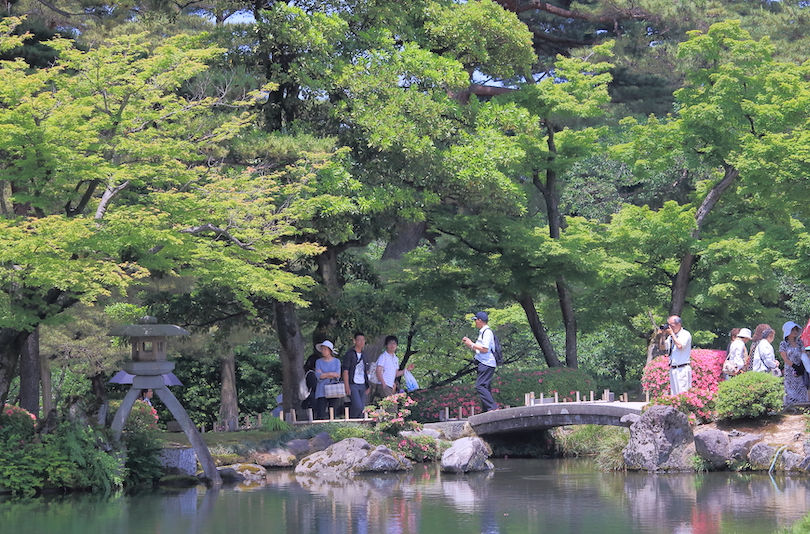
We love looking at beautiful gardens so we were very excited to see the famous Kenrokuen Garden in Kanazawa.
Established back in the 17th century its name means ‘Garden of the Six Sublimities’. This references the six qualities that the Japanese believe make up a perfect garden. Namely abundant water, antiquity, artificiality, broad views, seclusion and spaciousness.
Changing throughout the year with the season, Kenrokuen certainly encapsulates all these elements. In spring, the cherry blossoms are out in force, while in summer, the garden is very lush and green. In autumn, the leaves turn brilliant red and orange. While in winter, the garden is covered in snow, creating a majestic winter wonderland.
Whichever time of year you choose to visit, you’ll be blown away by its beauty.
26. Senso-ji Temple, Tokyo
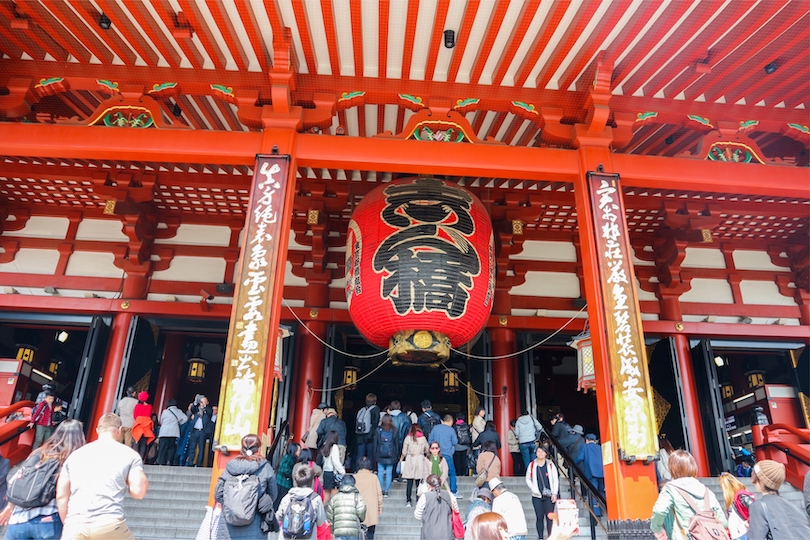
In Japan there are lots of temples. You won’t be able to see them all of course, but one you should put on your schedule is a trip to the Senso-ji Temple.
This Buddhist temple is in the Asakusa neighborhood of Tokyo . It dates back over 1300 years and is one of the city’s oldest and most famous temples.
An impressive structure, it is dedicated to Kannon, the Buddhist goddess of mercy. It is fronted by a main entrance known as the ‘Thunder Gate’. This features a large red lantern and two statues of gods.
Beyond the gate is a long shopping street called Nakamise-dori, where you can buy plenty of traditional Japanese souvenirs and snacks. You’ll also find the temple’s main hall, ‘the Hondo’, as well as a five-story pagoda, and a beautiful garden.
See also: Where to Stay in Tokyo
25. Matsumoto Castle
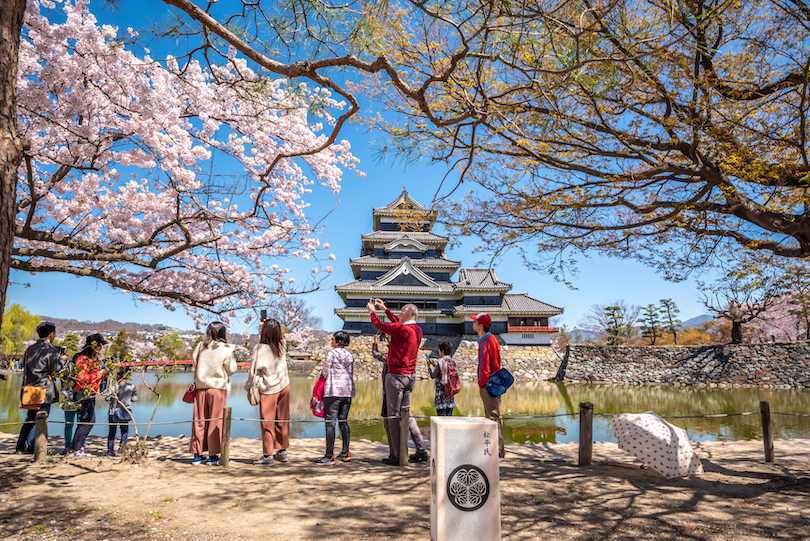
If you plan to head into the central Chūbu region we recommend you venture into the Nagano Basin. For a start, the food is fantastic there. But also, if you love snow sports, you will love the powder-covered peaks that dominate the area.
Should you go there, you’ll be able to see the magnificent Matsumoto Castle. Also called ‘Crow Castle’ because of its stunning black exterior. It is one of Japan’s most photographed structures.
Dating back to the 16th century, the castle’s design is very unique, comprising a three-layered, six-story donjon. It also has a remarkable series of walls and gates that create a maze-like layout.
You’ll be able to tour the castle’s interior. It has several exhibits and displays that relate to its history and construction. Whilst there, be sure to go to the castle’s top floor too. The panoramic views of the surrounding mountains and city are just incredible!
24. Art Island of Naoshima
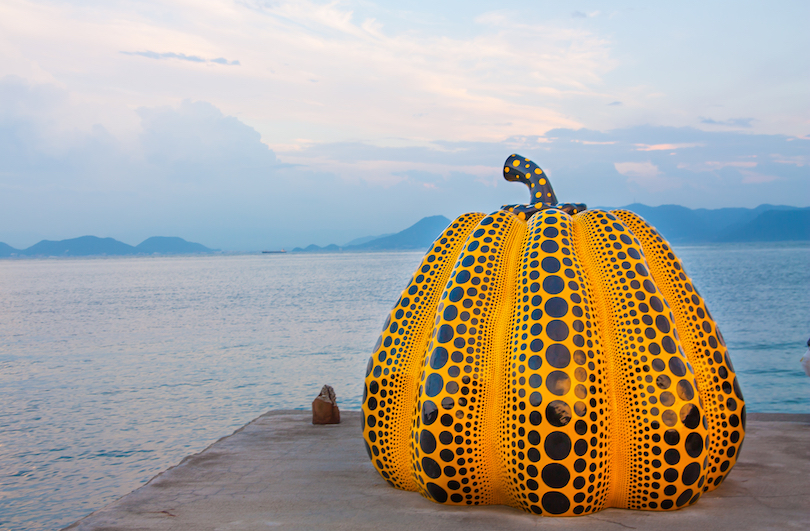
In our opinion, one of the coolest tourist attractions in Japan is The Art Island of Naoshima. Firstly, it has a dramatic location on a small island in the Seto Inland Sea that will captivate you.
But it also houses very impressive contemporary art installations, galleries and museums, you could ever wish to see.
These include the Chichu Art Museum, the Lee Ufan Museum, and the Art House Project. All of which are really pushing the envelope with their displays. If you love art, you’ll love what’s on show here.
As well as these cultural attractions, you can also visit beautiful beaches. Alternatively, you can tackle some of the hiking trails that snake around the island.
Should you want to, you can even stay overnight in one of the island’s art-themed accommodations. This is a very cool thing to do!
23. Tateyama Kurobe Alpine Route
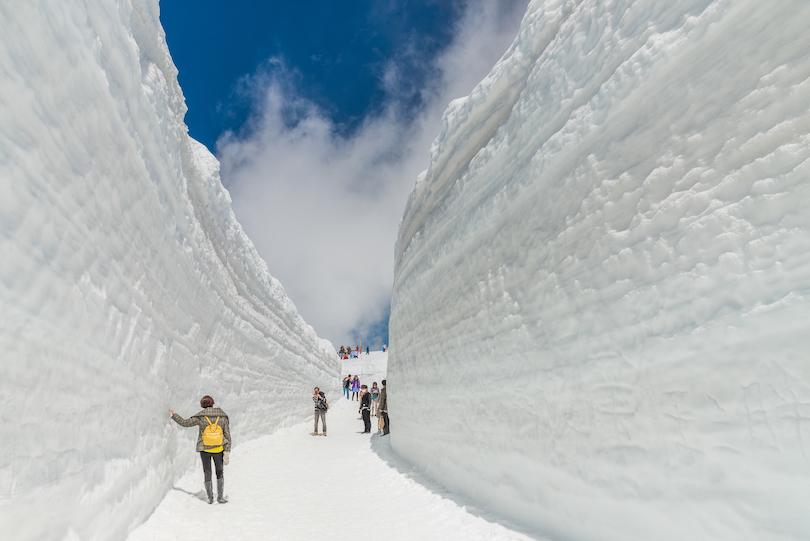
Want to do something with a bit of a wow factor? Then make sure you traverse the Tateyama Kurobe Alpine Route.
Located over in the Northern Japan Alps, this scenic mountain route spans the Toyama and Nagano Prefectures. It is known for its spectacular views of the surrounding mountains, including Japan’s highest peak, Mount Fuji.
It is also home to the Kurobe Dam, one of the world’s largest arch dams. It also accommodates the Mikurigaike Pond, which is known for its beautiful blue-green water. So there is plenty to see along the way.
The route is open from mid-April to mid-November and is a marvel of Japanese engineering. You can choose to traverse this route via bus, tunnel trolley bus, cable car or even on foot.
If you go in the spring, be sure to look out for the famous ‘Snow Wall’. This is a formidable 20-meter-high wall of snow that forms along it.
22. Osaka Dotonbori
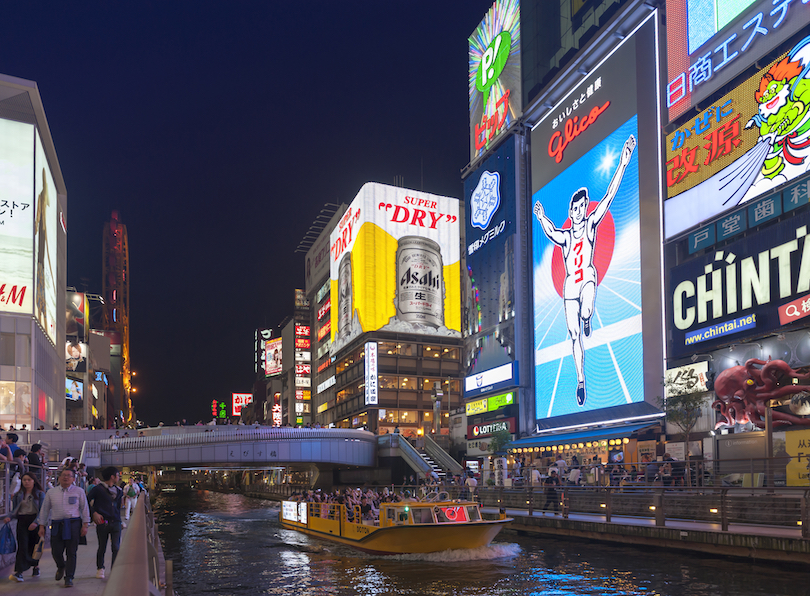
For its sheer spectacle, one of our favorite things to do in Japan at night is wandering around the Osaka Dotonbori. Not only is it a great place to people watch, but it also has a real ‘wow’ factor.
Centered around the Dotonbori Canal, you’ll instantly recognize this popular shopping and entertainment district. It has all those colorful giant neon signs and billboards, which you’ve no doubt seen on TV.
These include the iconic Glico Running Man and the Kani Doraku crab. If you are anything like me, you’ll be transfixed by both!
As well as the lights, the area is lined with shops, restaurants and bars. It also accommodates an awesome collection of street food vendors. So be sure to try the takoyaki (octopus balls) and okonomiyaki (savory pancakes) whilst you are there.
The kushikatsu (deep-fried skewers), are delicious too.
Your taste buds will thank you for it!
21. Okinawa Churaumi Aquarium
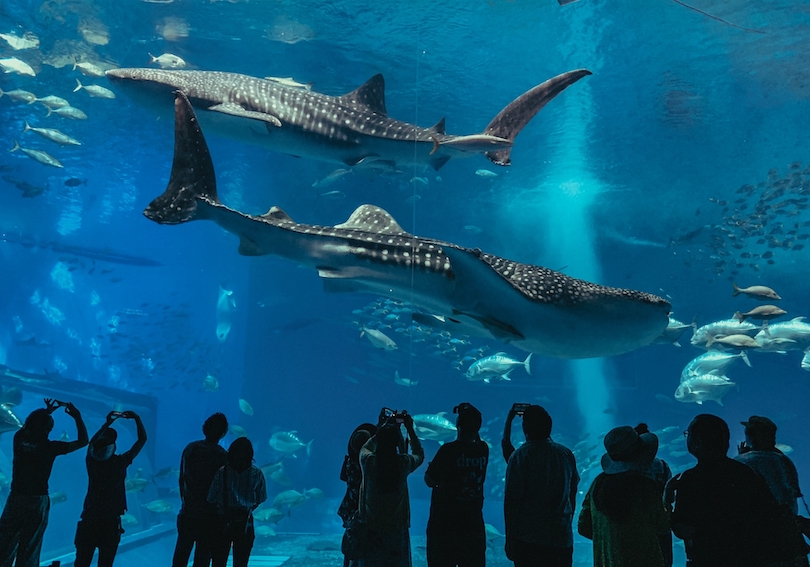
Okinawa is a lovely part of Japan to visit.
If you find yourself there with some time on your hands, make your way to the Motobu area. There you can visit the Okinawa Churaumi Aquarium. It is a terrific base to visit some of the surrounding islands.
It is one of the largest aquariums in the world. If you love looking at marine life, you’ll love what is on display here. Its main tank, the Kuroshio Sea, is one of the largest in the world. It houses whale sharks, manta rays, and giant groupers which will captivate you.
It also has a number of other cool exhibits. These include a coral reef tank, a dolphin lagoon, and an exhibit dedicated to sea turtles.
Whilst there, you can watch feeding demonstrations and attend educational programs. You can even take part in interactive experiences like touching rays and sea cucumbers too.
20. Ride A Bullet Train
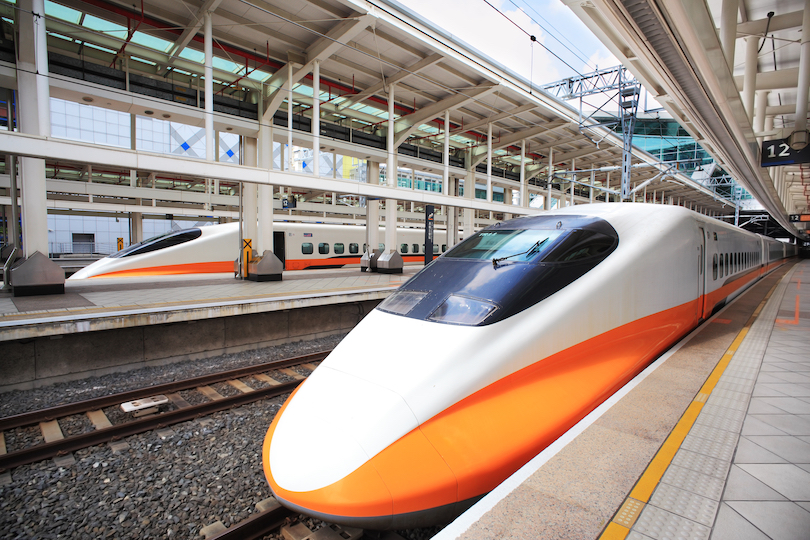
For any tourist, Japan is a big country to get around. While many people choose to fly, riding on the bullet train is an experience I can’t recommend highly enough.
Also known as a Shinkansen, these trains can reach up to 320 km per hour. They can take you from Tokyo to Osaka in just two hours!
Yet despite this, it is actually a fairly smooth and quiet ride. They are also incredibly punctual, to the point where being even a minute or two late is unheard of.
The Shinkansen network spans most of Japan’s major cities and there are regular departures and arrivals throughout the day. The trains are equipped with comfortable seats and very clean restrooms. Their food and beverage services are pretty good too.
19. Nara Park
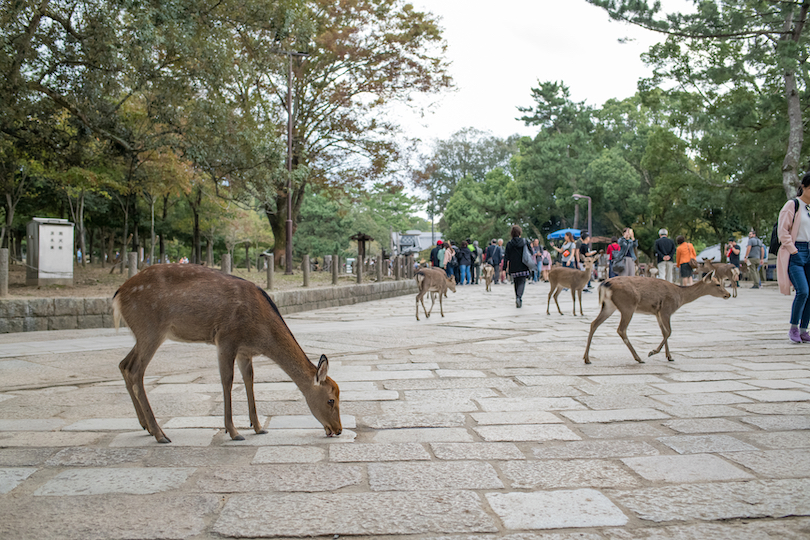
You might not have been aware of this, but deer are considered sacred in Japanese culture.
For this reason, we would suggest adding Nara Park to your itinerary of things to do if you visit Nara .
This large public park covers over 500 hectares. It is known for its population of free-roaming deer, of which there are hundreds.
If you love animals, you can buy special crackers to feed the deer, and even take photos with them.
As well as the deer, the Park also houses several famous temples and shrines, including the Todai-ji temple. This is also worth checking out because it is home to the largest bronze Buddha statue in the world.
18. Koyasan Okunoin
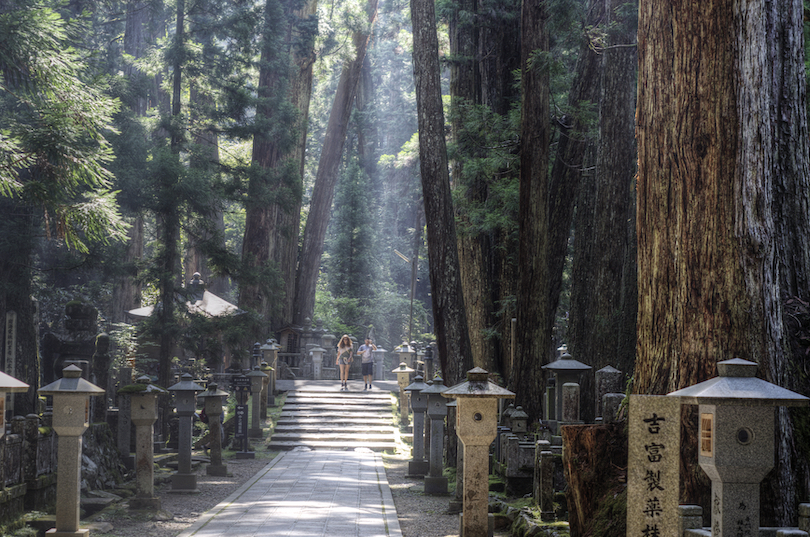
Ok, so visiting a cemetery might not be everyone’s idea of a good time when on vacation. However, the Koyasan Okunoin is a unique exception everyone should make.
Located in the Koyasan mountain range, within the Wakayama Prefecture, this sacred site is the largest cemetery in Japan. It is also the final resting place of many famous figures in Japanese history.
The impressive site is centered around the magnificent Okunoin temple. This is surrounded by a large cemetery, which contains over 200,000 tombstones and monuments.
If you want to come here, you can explore the cemetery. You can also visit some of the various temples and shrines that are dotted around the area. Additionally, the site is also famous for its lanterns. They line the paths and are lit every evening.
17. Shirakawago
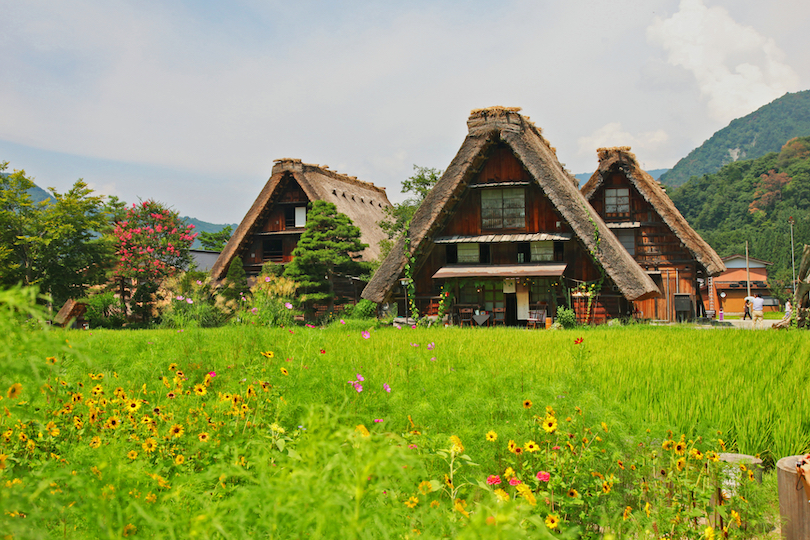
Japan is known for its cutting-edge technology. But if you want to experience life before the tech age, then it’s worth visiting Shirakawago.
Located in the mountains of Gifu Prefecture, this picturesque village is known for its authentic gassho-zukuri farmhouses. They boast inclined thatched roofs that look a lot like hands held together in prayer.
The village is actually a UNESCO World Heritage Site that showcases traditional Japanese rural life. Whilst there, you can go on a tour of the farmhouses to see its traditional architecture and lifestyle. You will also be able to learn about the history and culture of the area.
We found Shirakawago fascinating, as it provided a point of reference to what Japan used to be like. Next time we’ll time our visit with either their traditional New Year’s celebration or summer dance festival. Both of which are meant to be amazing spectacles.
16. Nikko National Park
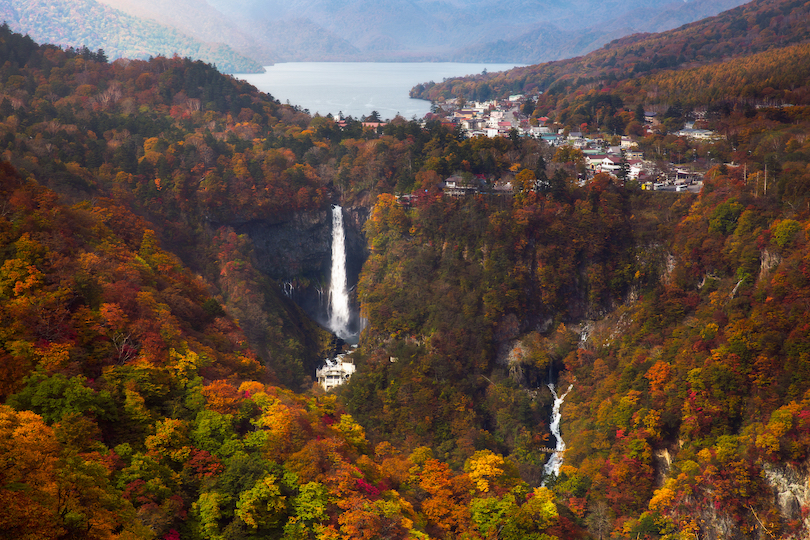
One of the most beautiful places we have ever been to in Japan is Nikkō National Park.
We visited here when we were in Tochigi Prefecture. Its stunning landscape of waterfalls, lakes, and mountain ranges blew us away.
You’ll probably need to spend a couple of days in Nikko as the park is home to several famous landmarks. Namely, the Toshogu Shrine, which is a UNESCO World Heritage Site. The Kegon Falls, is also a beautiful cascade worth visiting.
The park offers a variety of activities, including camping, fishing, and hot springs. It also hosts several traditional festivals and celebrations throughout the year.
15. Sapporo Snow Festival
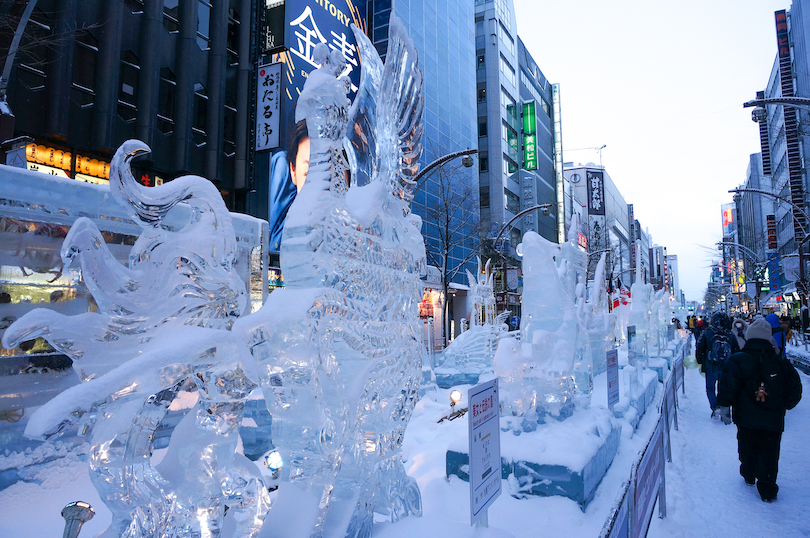
If you happen to be in Japan in January and February, then visiting the Sapporo Snow Festival is one of the smartest things to do. It is a fantastic celebration of winter sport, art and gastronomy that provides a great insight into Japan’s culture.
This popular festival is held every year in the capital city of Hokkaido. As it attracts millions of visitors, we would suggest planning ahead.
The festival is famous for its impressive snow and ice sculptures which range in size. Some are small ornate figurines. While others are massive two or three-story high structures that tower over the crowds.
The sculptures are created by insanely talented artists who showcase their skills and creativity. We really don’t know how they do it! However, their work is mightily impressive.
Being winter and with lots of snow around it will be cold. Thankfully there are lots of places to get hot chocolate or ramen to keep you warm and fed.
14. Takachiho Gorge
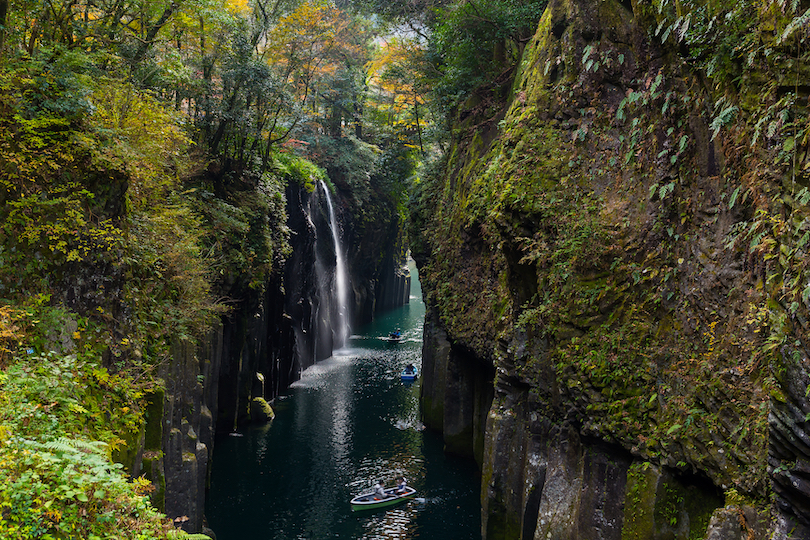
Japan is a country steeped in mythology and legend. There are lots of places you can go to experience it. For those who want to explore this folklore, one place we would suggest is the Takachiho Gorge.
According to Japanese mythology, the gorge was where the sun goddess Amaterasu hid in a cave. Thus, causing the world to fall into darkness. It is also believed to be the location where the god Susanoo slayed the eight-headed serpent Orochi.
Formed over thousands of years by the Gokase River, the gorge is a natural scenic wonder in Miyazaki Prefecture. It is known for its towering cliffs, cascading waterfalls, and emerald-green waters. These are best seen on foot via hiking trails or by traversing down the river in a rented rowboat – which, take it from us, is a lot of fun.
13. Watch Sumo Wrestling
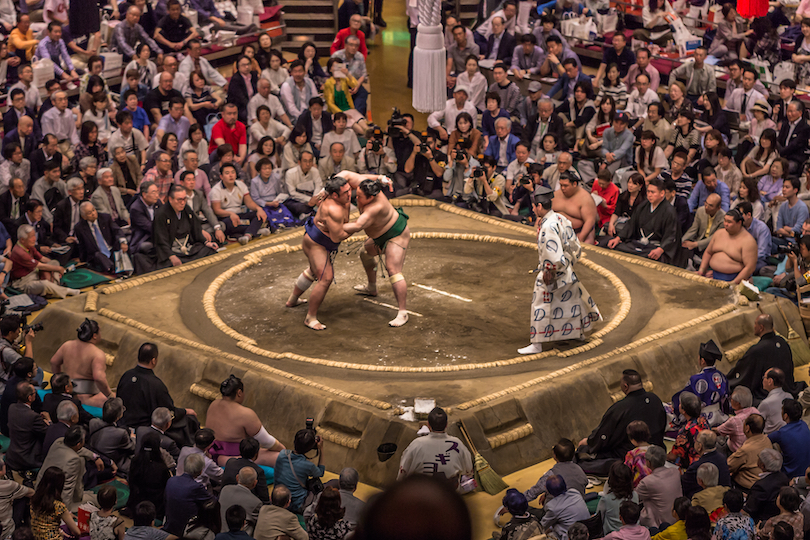
Sumo Wrestling captivated us from the first time we saw it at the Ryogoku Kokugikan in Tokyo. Located in eastern Tokyo, we went because the stadium was a short walk from Ryogoku Station. Although it cost about 10,000 yen per person to watch, it was an amazing spectacle.
Sumo is a traditional Japanese sport that dates back over a thousand years. It is not just two large men wrestling each other dressed in little more than a loin cloth. But rather a combat sport steeped in history and ritual.
If you can get to a professional sumo match it is something we would urge you to do. The matches are fast-paced and intense, and the wrestlers are incredibly skilled and agile. The atmosphere is really good too and you’ll soon find yourself cheering for your favored competitor!
Six tournaments are held in Japan each year. Three of which take part in Tokyo – which is considered to be the Sumo capital of the world.
12. Itsukushima Shrine, Miyajima
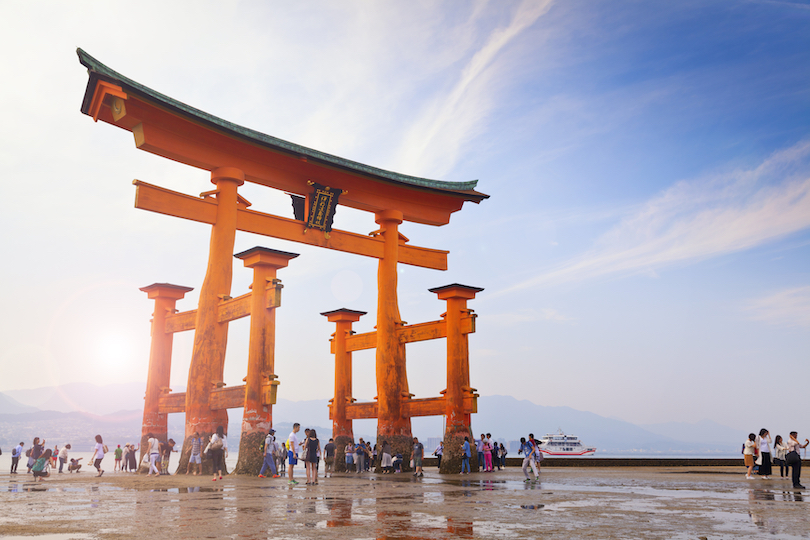
The Itsukushima Shrine is just one reason to head to the Hiroshima Prefecture . But it is a very compelling one.
One of Japan’s most iconic landmarks, it is known for its captivating torii gate. This has the incredible illusion of floating on the water. Dating back to the 6th century, the shrine is a UNESCO World Heritage Site that has mystical properties.
We were mesmerized by its magical appearance and ornate detail as we explored its various buildings and courtyards.
The shrine is easy to get to by ferry from the mainland at Miyajimaguchi Station. While you are there you can also relax in the surrounding park or hike some of its scenic trails.
11. Shibuya Crossing, Tokyo
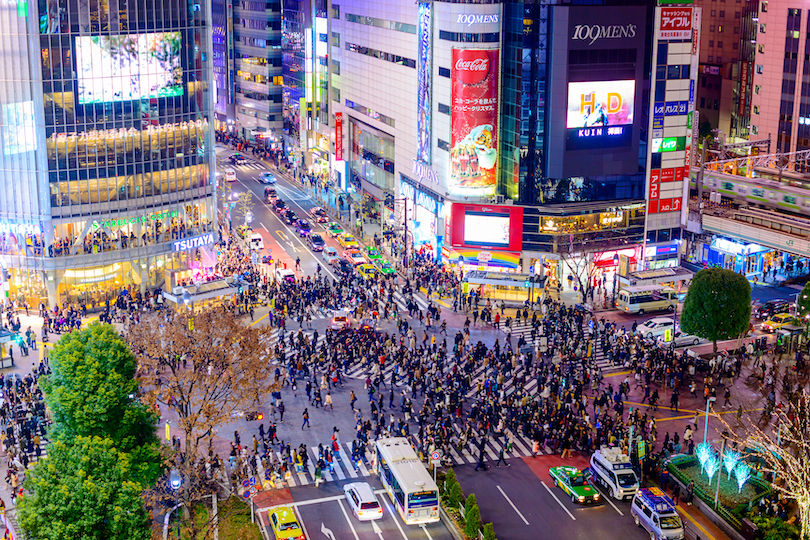
Shibuya Crossing is not a place you are likely to have to yourself. In fact, it is the world’s busiest pedestrian crossing. So, you’ll have on average about 3,000 people around you whenever you cross it.
However, it is a captivating and enchanting place to go to. Not least because of the unique atmosphere created by the sea of people that traverse it.
One of Japan’s most iconic sites, Shibuya Crossing is characterized by its large neon billboards, flashy signs and noise. It is a symbol of Tokyo and modern Japan and has appeared in countless films and television shows.
We crossed it a few times when we visited Tokyo and also spent a bit of time looking down at the pedestrians from one of the cafes perched above it.
10. Fushimi Inari Shrine, Kyoto
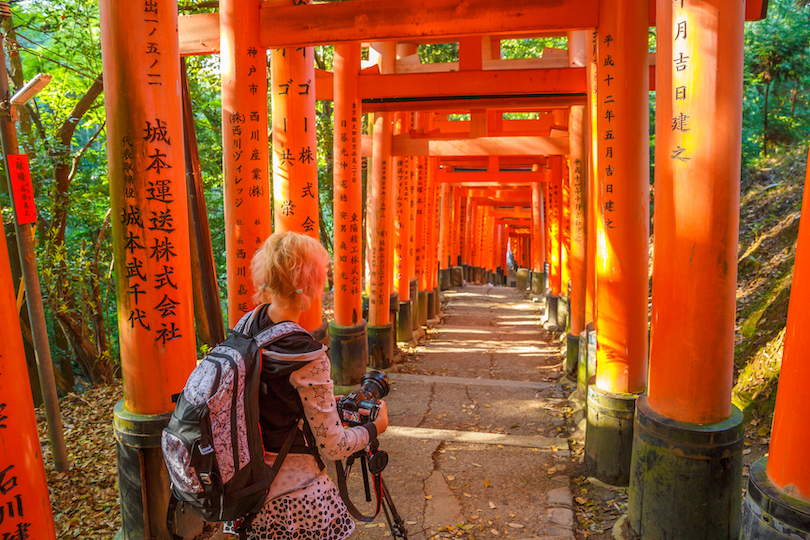
The Fushimi Inari Shrine is a remarkable site. We would strongly advise you to check out if you are in Kyoto .
Dedicated to Inari, the god of agriculture, it was founded in 711. It is famous for its over ten thousand vermillion-colored torii gates. They create a stunning site as they form a tunnel-like path up the mountain.
Many people, myself included, have walked the torii gate path, taking in wonderful views of Kyoto from the mountain. On a clear day you can see for miles, so be sure to have your Smartphone with you.
This path takes visitors through a dense forest of cedar trees. It also showcases smaller shrines and other offerings like statues of foxes. They are thought to be messengers of the god Inari.
9. Hiroshima Peace Memorial
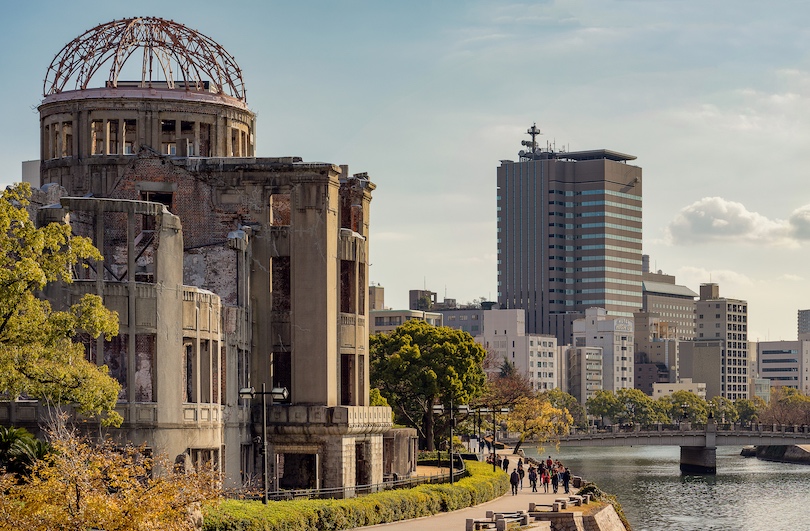
The Hiroshima Peace Memorial is one of the world’s most thought-provoking places to visit. It certainly made us think about the tragic waste of human life. As well as how the incident changed the world.
A powerful symbol of peace, it is a sombre reminder of the devastation caused by the bombing of Hiroshima.
The memorial is made up of the remains of the Genbaku Dome. This is one of the few buildings in the city to survive the bombing. It also features the surrounding Peace Park.
The surrounding park is a pleasant space to wander and features various monuments and sculptures dedicated to peace. One of which is the Children’s Peace Monument, which was inspired by a young girl called Sadako Sasaki, who died of leukaemia caused by radiation from the bomb.
8. Jigokudani Monkey Park
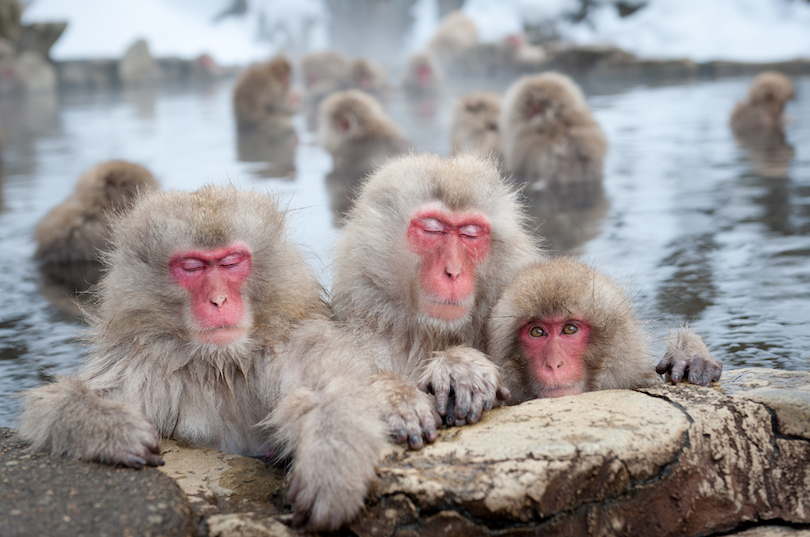
If you are not a big fan of monkeys you might want to skip to the next attraction. But if you are then you should pay a visit to the Jigokudani Monkey Park.
This popular wildlife attraction can be found in the Yamanouchi region of Nagano Prefecture. It is home to a large population of wild Japanese macaques, who are better known as snow monkeys.
What makes these creatures unique is that they are known for their unique behavior. This involves them taking hot spring baths during the winter months.
Getting to the park involves a short hike through a scenic forest trail in a mountainous region. However, the sight of the monkeys in the hot springs is worth it.
7. Kiyomizu-dera, Kyoto
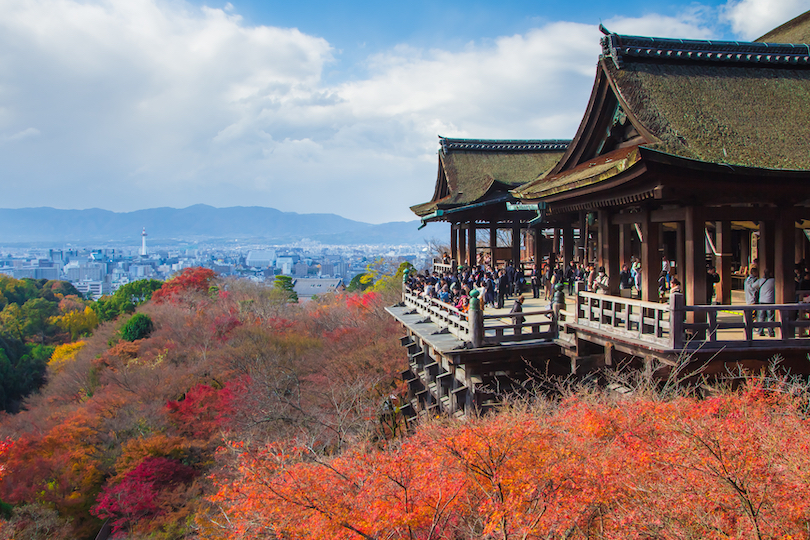
Japan has its fair share of UNESCO World Heritage sites and another one worth visiting is the Kiyomizu-dera.
This historic Buddhist temple is found in eastern Kyoto. Impressively, its main hall is built on a steep slope and is supported by wooden pillars.
The temple has the nickname ‘Pure Water Temple’ on account of its Otowa Waterfall. Here visitors can drink from one of three streams of water. Each of them is believed to have different healing properties.
If you can get there in spring, Kiyomizu-dera is particularly beautiful as cherry blossoms are in bloom. During fall, it is also spectacular when the leaves change color.
Whatever time of year you visit, as well as drinking the water, you can also enjoy panoramic views of the city from the temple’s large veranda.

6. Mount Fuji
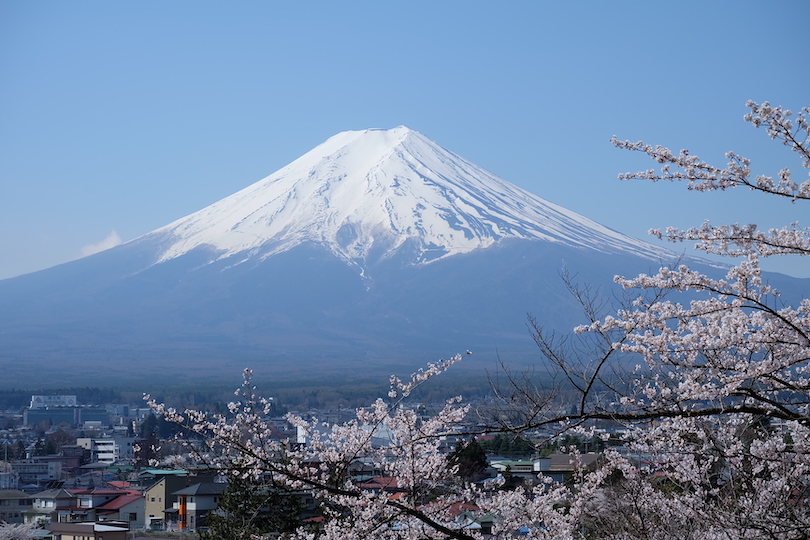
Mount Fuji is one of Japan’s most active sites, but if you intend to visit it, just be aware it is an active stratovolcano.
Situated on Honshu Island, it is the highest peak in Japan, soaring to a height of 3,776 meters. It is also considered a sacred site in Japanese culture, although it is a popular destination for hikers and tourists to climb.
The best time to do this is between early July to mid-September. Overall there are several trails that will lead you to the summit. Just make sure you are wearing proper shoes when you do it.
Surrounding the mountain is a beautiful national park. The landscape of which you will be able to best see on the way up.
5. Himeji Castle
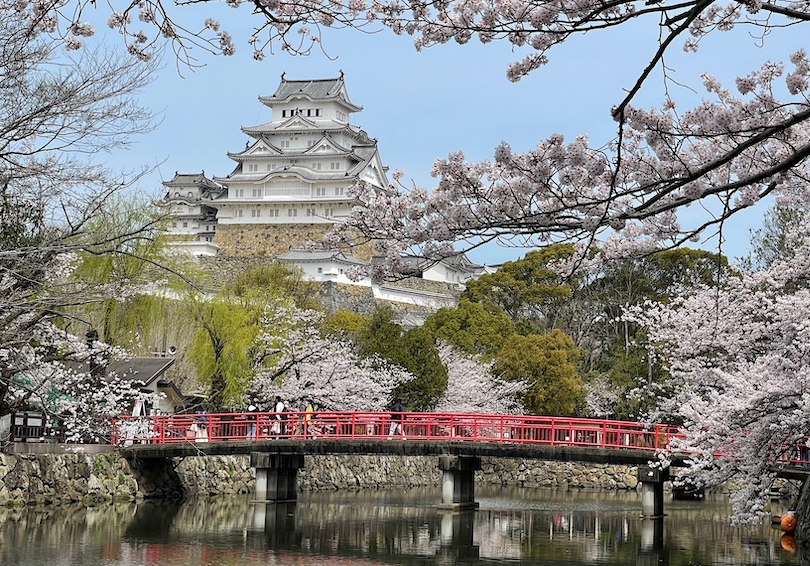
Himeji Castle is yet another UNESCO World Heritage site, but with good reason.
Known as the ‘White Heron Castle’ because of its white exterior and the way it resembles a bird taking flight, it is one of the most impressive castles we’ve ever seen.
It is also one of the few surviving original castles in Japan, as most were destroyed during wars, or by earthquakes.
The castle is surrounded by a beautiful park with cherry blossom trees and a moat. It also has numerous defensive features, including walls, gates, and towers that can be explored on a guided tour.
Inside, its ornate decor features beautifully painted screens, intricate wood carvings, and other works of art which are really impressive.
4. Great Buddha of Kamakura
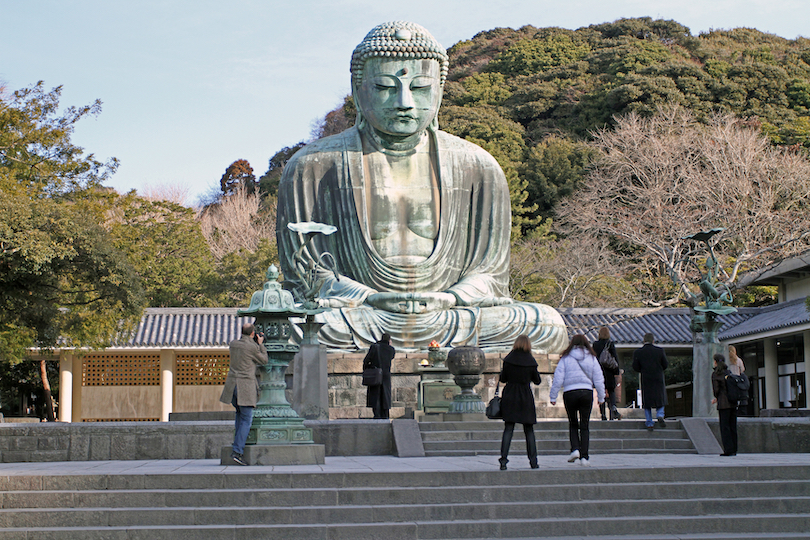
You’ll see plenty of statues of Buddha in Japan but none quite like The Great Buddha of Kamakura.
Standing approximately 44 feet tall and weighing approximately 266,000 pounds, it is considered one of Japan’s most iconic and beloved cultural treasures.
Originally cast in 1252, you will have to go to the city of Kamakura if you want to see this monumental bronze statue.
Apparently, the statue has survived numerous earthquakes and other disasters over the centuries and is considered a symbol of resilience, hope and strength.
If you go there, you will be able to explore the statue and its surroundings. There is also a small museum that presents information about the statue’s history and significance.
3. Todaiji Temple, Nara
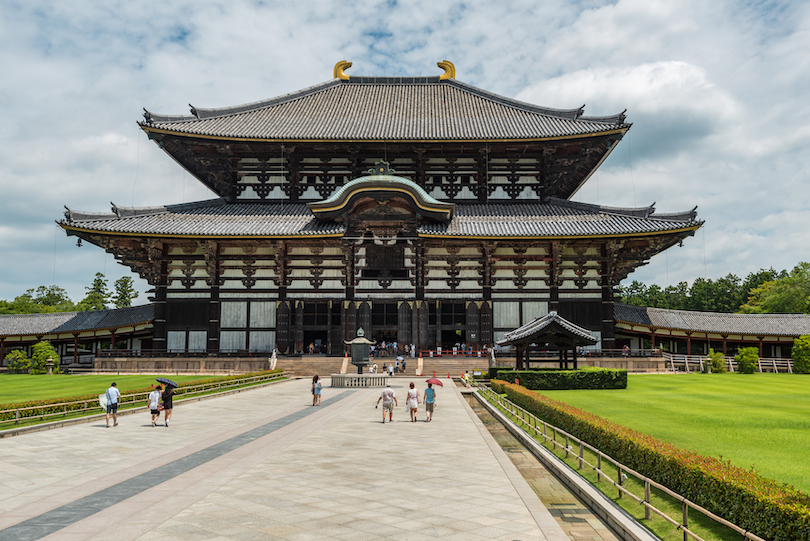
Another place where you can see a massive statue of Buddha is the Todaiji Temple.
This impressive Buddhist temple is situated in Nara and is renowned for the 52 feet high and 1.1-million-pound massive bronze statue of the extraordinary being.
The temple dates back to the 8th century and is located in Nara. Over the years it has been destroyed and rebuilt several times. However, its main hall – the Daibutsuden – remains one of the largest wooden structures in the world.
As it is a UNESCO World Heritage Site, it also contains thousands of precious art objects. While there you can also walk around its beautiful park, which features cherry blossom trees and roaming deer.
2. Tokyo Imperial Palace
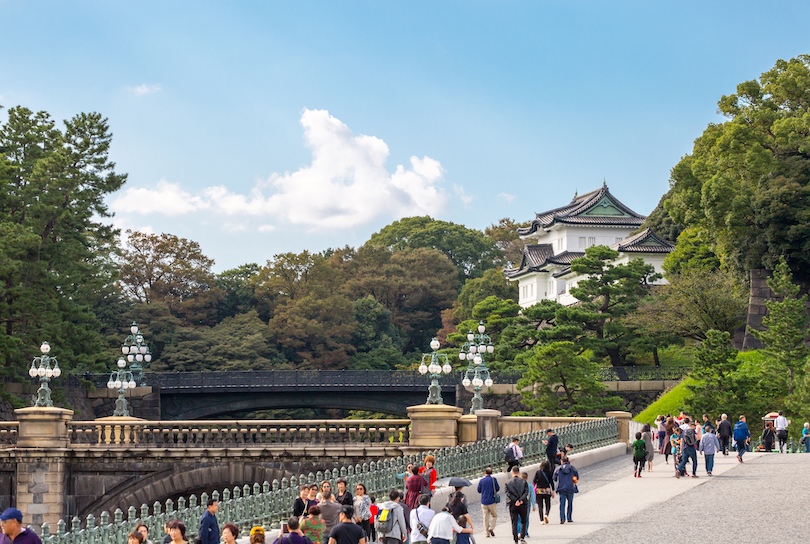
For anyone visiting Tokyo, a visit to The Tokyo Imperial Palace is a must!
Nestled in the heart of Tokyo, it is the primary residence of the Emperor of Japan. Dating back to 1457, the palace is surrounded by beautiful gardens and is a very popular tourist attraction. We would recommend you go there early to avoid the crowds.
Once there, you can take a guided tour of the palace grounds. This includes the palace gardens, as well as the outer areas of the palace complex.
The palace also houses a museum that features exhibits on the history and culture of the Japanese imperial family. This enables visitors to learn about the rituals and customs of the royal family. You can also view a collection of imperial treasures and rare artifacts.
1. Golden Pavilion, Kyoto
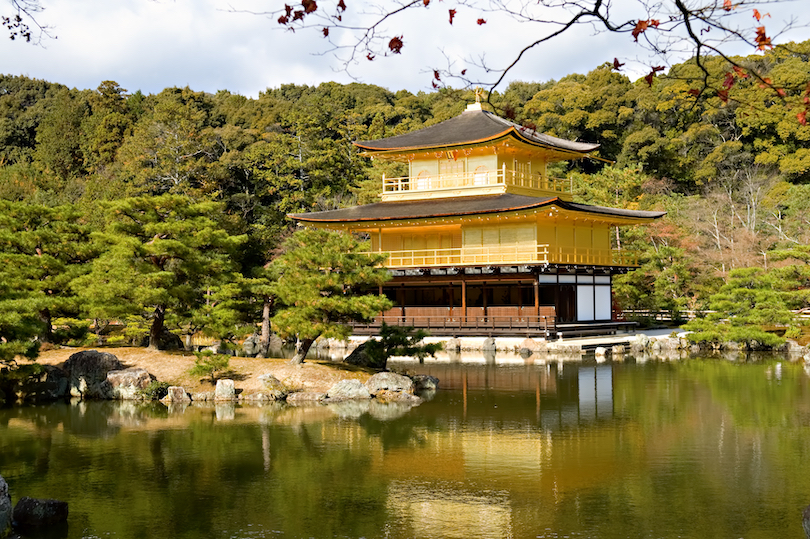
The Golden Pavilion is one of Japan’s most popular tourist attractions, and it is not difficult to see why.
Also known as Kinkaku-ji, this Zen Buddhist temple is situated in Kyoto. It is highly regarded for its stunning architecture. This notably features the top two floors of its pavilion lavishly decorated in gold leaf.
Originally it was built in the 14th century as a retirement villa for a shogun. The temple is backed by lush forest and fronted by a beautiful garden and lake.
Both of these are lovely places to stroll by – we found the lake especially enjoyable. The flora around it was beautifully arranged and reflected on the water with perfect clarity. We stopped here for a good five minutes to really appreciate the scene.
There were several other buildings, including a temple hall and a tea house that we enjoyed looking at too.
This is another place that gets very busy. So try and avoid coming in the middle of the day.
Map of Tourist Attractions in Japan
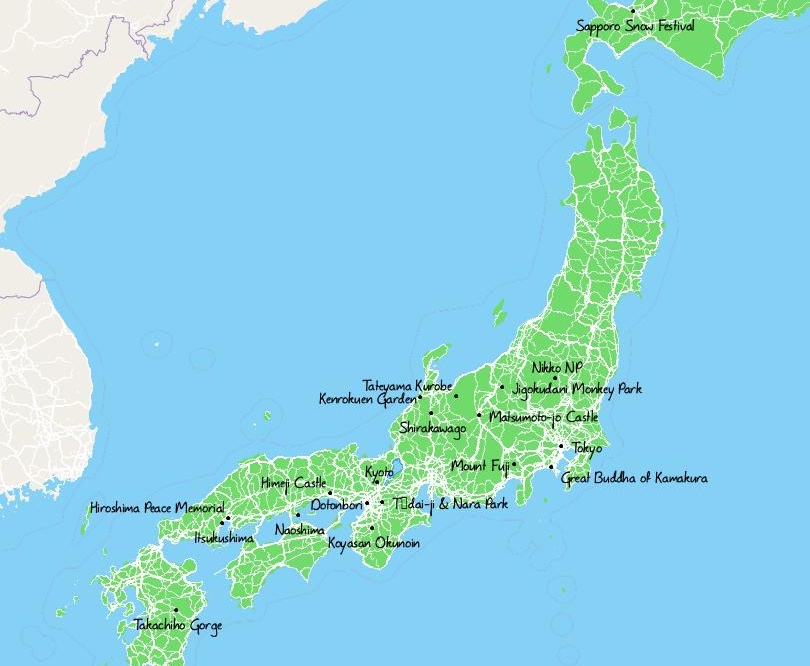
Share this post:

10 Most Beautiful National Parks in Japan

17 Best Places to Visit in Japan

9 Most Amazing Hotels in Japan

12 Most Beautiful Castles in Japan

12 Most Beautiful Volcanoes in Japan

10 Largest Islands in Japan

9 Most Beautiful Regions in Japan

15 Best Cities to Visit in Japan
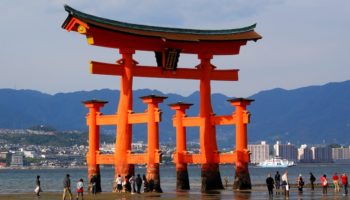
7 Best Day Trips from Kyoto
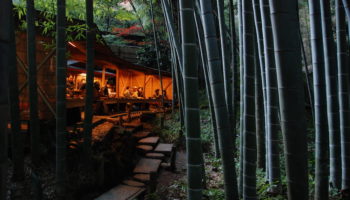
10 Best Things to do in Kamakura, Japan
Reader interactions.
May 6, 2020 at 8:39 pm
I had been tour some famous places in Japan like Golden pavilion, Tokyo Imperial place , Tokyo tower, Todaiji Temple, and so on. I think Japan is a good place for tourism. Keep it on in the near future
September 26, 2019 at 2:45 pm
Taking the Bullet Train to Sendai and that area is nice. So many Shrines and Temples in Japan make it a very enjoyable educational experience. Love the food!
June 2, 2019 at 7:30 am
There are a ton of other great places in Japan as well, Tokyo Tower can be kinda a tourist trap, the metropatilan building gives a better view and is free.
April 24, 2019 at 9:07 am
i so want to go to japan because of reading these comments, it sounds so nice
April 2, 2019 at 1:20 am
I love Japan, especially their clean and incomparable rest rooms, their kind of discipline is so amazing!
April 21, 2017 at 3:20 pm
When I lived in Kyoto for 3 months, I fell in love with the country, Although I have to admit the Golden Pavilion I would not even put in my top 100 attractions even in the Kyoto area I hope people don’t go to it expecting much and get disappointment in Japan, my favorites were lot of the area around Uji, and Gion, or fushimi inari, or even some back allies are many times more beautiful than the Golden Pavilion in my opinion.
Rest of this list is nice tho 🙂 needs more Osaka, The Sky Garden view is breathe taking at night.
February 19, 2016 at 11:09 am
Golden Pavillion , Kyoto, is very overvallued. You can see it from long distance. Entrance fees high. My tips: 1. Tokyo; 2. Fuji-Hakone; 3. KANSAI: Kyoto; Nara; Osaka (castle-alternat. Himeji); 4. Hiroshima and Miyajima. My last trip: Tokyo – Okinawa (ANA) – Kagoshima (JRPass) – Miyazaki/Aoshima – Kyoto – Osaka – Takushima (ferry)- Osaka – Nara – Tokyo.
February 15, 2016 at 12:09 pm
So helpful and loved the monkeys
December 11, 2015 at 3:32 am
We have been to all of these during our 18 visits to Japan. We keep finding new places to go. In 2016, go to the Setouchi Triennale art festival on the islands of the inland sea. We went in 2013 and will return next year.
February 5, 2015 at 8:21 pm
i loved Japan I have been 5 times in Japan
January 30, 2015 at 1:03 am
I love Japan and want to see the Tokyo imperial Palace,mount Fuji,Tokyo Tower,Golden Pavilion.
January 12, 2015 at 6:36 pm
I love Japan it is very safe. Especially the very kind and friendly people that I met there. Experience the 100 yen stores, shinkansen, yakiniku, onsen, asakusa temple, inari temple in kyoto, himeji castle, golden pavillion was definitely amazing.
September 18, 2014 at 12:12 am
You should put skytree there
August 4, 2014 at 10:09 am
I love Japan. After around 70 countries visited it’s easily in the top 5 seen. There are many things to do there that could be in the top 10 attractions. I personally found the Golden Pavillion, although beautiful, definitely wouldn’t be number one on that list, with so many other better things to see and do.
June 11, 2014 at 4:36 pm
This website is awesome thanks for this
June 5, 2014 at 1:41 am
the himeji castle was amazing;)
May 1, 2014 at 2:52 am
Thanks for this nice sharing i also have been visited Japan about a year ago with my friend. It offers a wide range of beautiful and attractive places for the tourist. A lot of places that i like there but one place that i like the most is “Golden Pavilion”. It is a beautiful and famous temple that is located in Kyoto.
April 29, 2014 at 8:14 am
The monkeys are so cute! I was born in Japan but never knew such beautiful things were there. But, hey, where’s the SkyTree?
February 23, 2014 at 5:35 pm
I have been to a few places in your list and they are remarkable. My favourite is still Kiyomizudera in Kyoto.
August 28, 2013 at 1:35 am
so nice places i just love them.
July 26, 2013 at 4:46 am
I love Japan and specially want to see Fuji Mount.
July 17, 2013 at 2:28 am
the japan is a very nice place i love it
June 16, 2013 at 12:53 pm
The monkeys were SO CUTE!!!!!
March 20, 2013 at 12:35 am
Thankyou i found this page very interesting and helpful please produce more :):):):):) (the monkeys are very cute)
June 20, 2012 at 12:44 am
Hey you didn’t include anywhere in Osaka, there’s some great places to explore there, the arcades alone are enough of a reason to go to Osaka.
Leave a Reply Cancel reply
Your email address will not be published. Required fields are marked *
This site uses Akismet to reduce spam. Learn how your comment data is processed .

16 Top-Rated Tourist Attractions in Tokyo
Written by Meagan Drillinger and Bryan Dearsley Updated Mar 19, 2024 We may earn a commission from affiliate links ( )
When it comes to the greatest cities in the world, you cannot do better than Tokyo. A juxtaposition of deep tradition and fast-paced, modern energy, Tokyo, the capital city of Japan, is one of the best places to visit in Asia . It is home to the Imperial Palace and the seat of Government and Parliament, as well as luxury hotels, Michelin-starred restaurants, and fantastic shopping. Located in East-Central Honshu, the largest of Japan's main islands, this heavily populated city serves as a great base from which to explore other parts of the country.
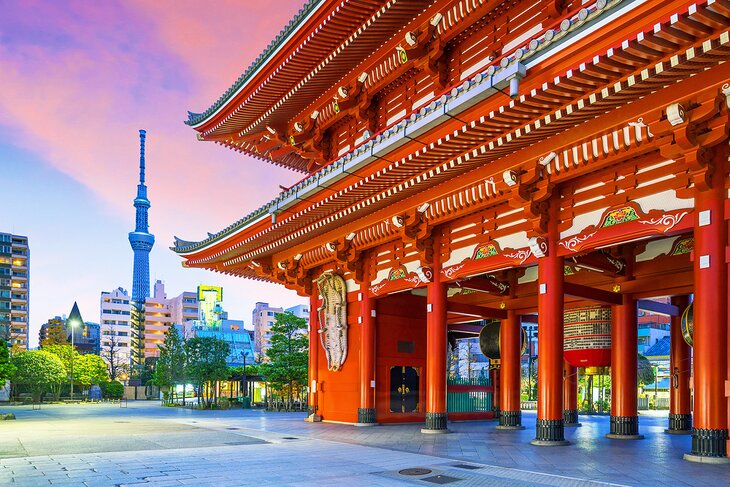
One of the world's most modern cities in terms of its infrastructure and design — due largely to the 1923 earthquake and the devastation of WWII — Tokyo also holds the title of the world's most expensive city in which to live. Fortunately, it's also one of the easiest to get around thanks to its superb rail and subway networks.
The cultural side of Tokyo is famous for its numerous things to do and top attractions, including museums; festivals; internationally noted cuisine; and professional sports clubs, including baseball, football, and traditional Japanese pursuits like sumo wrestling. It's also a city rich in music and theater, with numerous venues featuring everything from Japanese modern dramas to symphony orchestras and pop and rock concerts.
Explore the city with our list of the top things to do in Tokyo.
1. Enjoy Nature and Art at the Meiji Shrine
2. explore the shinjuku gyoen national garden, 3. enjoy nature at ueno park and ueno zoo, 4. visit the sensō-ji temple, 5. shop 'til you drop in the ginza district, 6. see the view from the tokyo skytree, 7. wander through the tokyo national museum, 8. tour the imperial palace, 9. visit the miraikan and edo-tokyo museums, 10. stop in at the national museum of nature and science, 11. spend time at the national museum of western art, 12. enjoy the collections at the national art center, 13. see a show at the kabuki-za theatre, ginza, 14. get lost at yomiuriland, 15. scope the fashion in harajuku, 16. take a walk at shibuya crossing, where to stay in tokyo for sightseeing, tips and tours: how to make the most of your visit to tokyo, map of tourist attractions & things to do in tokyo, best time to visit tokyo, japan.
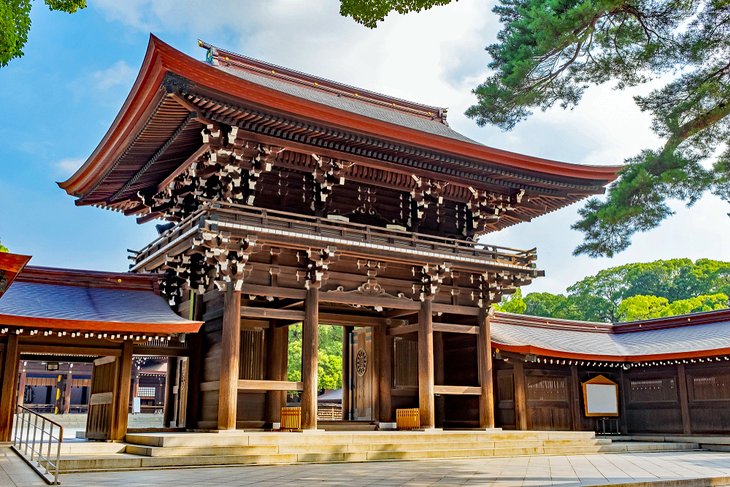
Highlights : An important religious site surrounded by 175 acres of forest
Dedicated to Emperor Meiji and his wife, Empress Shōken, the construction of the splendid Meiji Shrine (Meiji Jingū) began in 1915 and was completed in 1926. Although the original structure was destroyed during WWII, it was rebuilt in 1958 and remains one of Tokyo's most important religious sites.
Surrounded by a 175-acre evergreen forest that is home to some 120,000 trees representing species found across Japan — as well as the interesting "wishing tree," on which visitors can write and hang their deepest wishes — the shrine's highlights include its Inner Precinct (Naien) with its museum containing royal treasures, and the Outer Precinct (Gaien).
It's in the Outer Precinct that you'll find the Meiji Memorial Picture Gallery with its superb collection of murals relating to the lives of the emperor and empress. Be sure to also visit the adjacent Meiji Shrine Inner Garden (Yoyogi Gyoen), an attractive public garden complete with a teahouse, iris garden, and a pleasant arbor.
Address: 1-1 Yoyogikamizonocho, Shibuya City, Tokyo
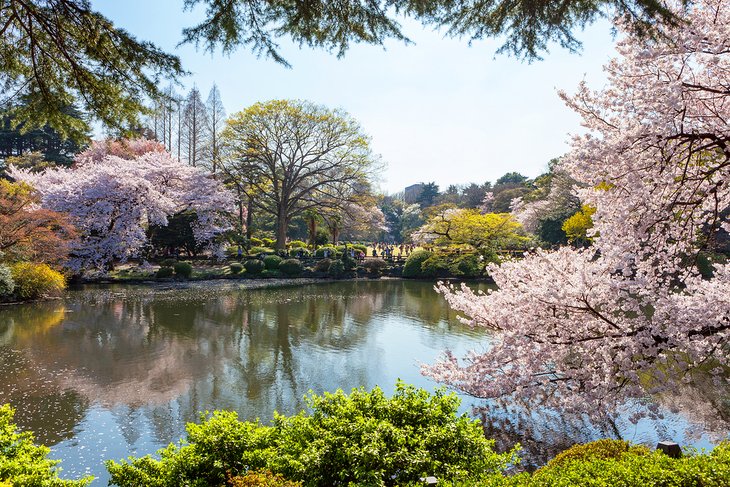
Highlights : Three types of traditional gardens in one, including 1,500 cherry trees
Walk through one of Tokyo's most historic pieces of land when you visit the Shinjuku Gyoen National Garden. Formerly the residence of the Naito family during the Edo period (17th-19th centuries), it was transferred to the Imperial Family. It is now a national garden, which opened in 1949, and is considered to be one of the most beautiful in Japan.
The garden is considered one of the best because it fuses together three types of traditional garden: French Formal, English Landscape, and Japanese traditional. It also happens to be one of the best spots in Tokyo to view the cherry blossoms , as the garden has roughly 1,500 cherry trees. You'll also find Himalayan cedars, cypresses, and tulip trees. The garden is very popular in the autumn, when the leaves start to change to crimson and gold.
Other features of the garden include a greenhouse, beautiful ponds, and several pavilions.
Address: 11 Naitomachi, Shinjuku City, Tokyo
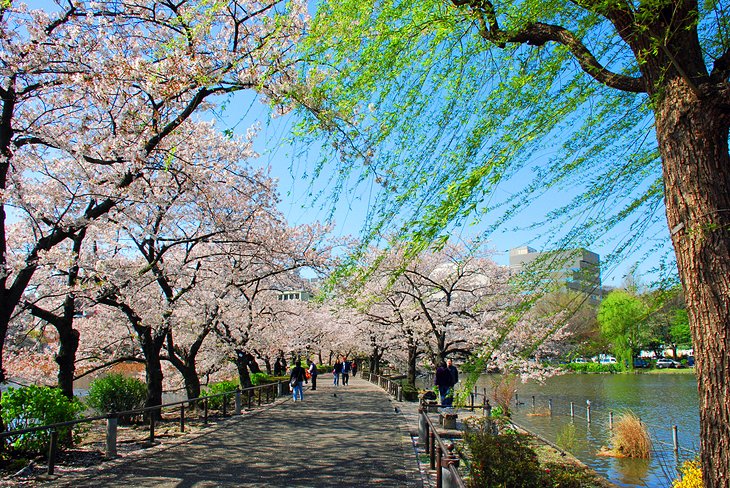
Highlights : A 212-acre park home to ponds, historic shrines, and the Ueno Zoo
A paradise-like oasis of green in the heart of busy Tokyo, Ueno Park (Ueno Kōen) is the city's largest green space and one of its most popular tourist attractions. In addition to its lovely grounds, the park also boasts numerous temples and museums to explore.
Criss-crossed by pleasant gravel paths, this 212-acre park includes highlights such as a trip on a small boat on the reed-fringed Shinobazu pond , around a little island with its Bentendo Temple. Be sure to also visit the 17th-century Toshogu Shrine (Nikkō Tōshō-gū), with its 256 bronze and stone lanterns.
Another highlight here is Ueno Zoo (Onshi Ueno Dōbutsuen). Opened in 1882, it is Japan's oldest zoo, and is famous for the pandas presented by the People's Republic of China.
While it's a large attraction and houses more than 3,00 animals representing some 400 species, having a fun monorail connecting its various components can help speed up a visit (and make it even more enjoyable).
The Aqua-Zoo , one of the largest aquariums in Asia, is also worth a visit, especially if you're traveling with kids.
Address: 9-83 Uenokoen, Taito City, Tokyo
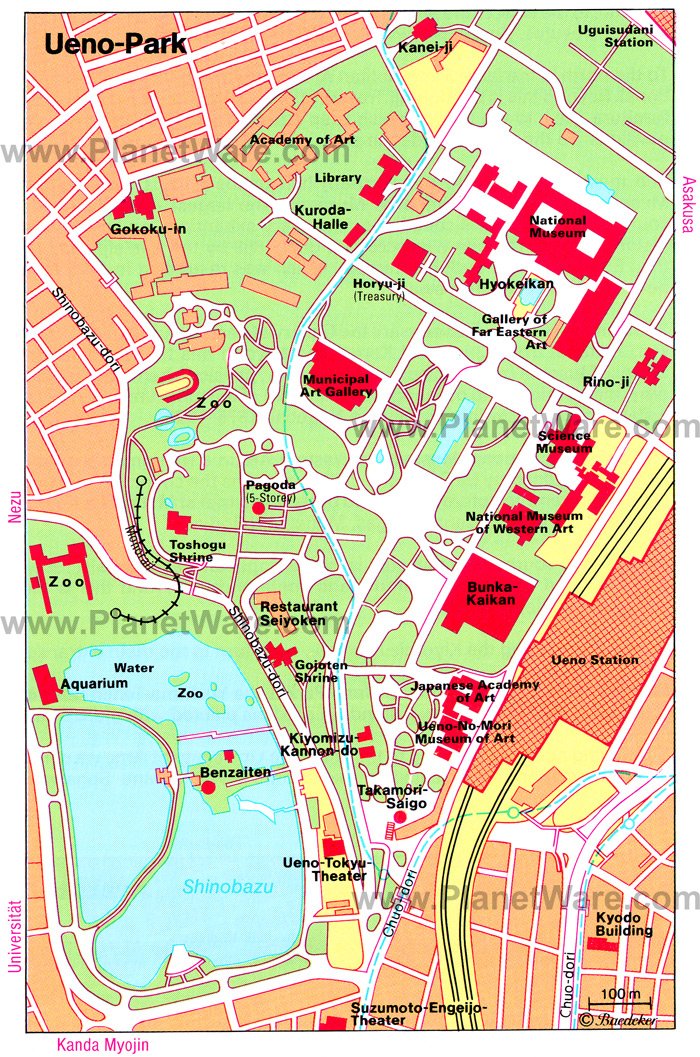
Highlights : A centuries-old temple with a 3.3-meter-high red paper lantern and incense that is said to heal ailments
In the Asakusa district of Tokyo, the exquisite Sensō-ji Temple (Kinryū-zan Sensō-ji)) – the city's most famous shrine – stands at the end of a long street market hosting vendors selling masks, carvings, combs made of ebony and wood, toys, kimonos, fabrics, and precious paper goods.
Dedicated to Kannon, the Buddhist goddess of compassion, the temple was established in AD 645 and retains its original appearance despite having been rebuilt numerous times.
Highlights of a visit include seeing the Kaminari-mon Gate with its 3.3-meter-high red paper lantern bearing the inscription "Thunder Gate," as well as the famous and much-loved Incense Vat, reputed to drive away ailments (you'll see people cupping their hands around the smoke and applying it to the part of their body needing healing).
Also of note are the fascinating temple doves, said to be Kannon's sacred messengers. Be sure to drop a coin in the Omikuji boxes near the entrance, from which you can retrieve a piece of paper that will tell your fortune.
Afterward, be sure to explore the rest of the 50-acre temple precinct with its warren of lanes. If you can, revisit the temple again at night for a completely different (and far less crowded) illuminated experience.
Address: 2 Chome-3-1 Asakusa, Taito, Tokyo 111-0032
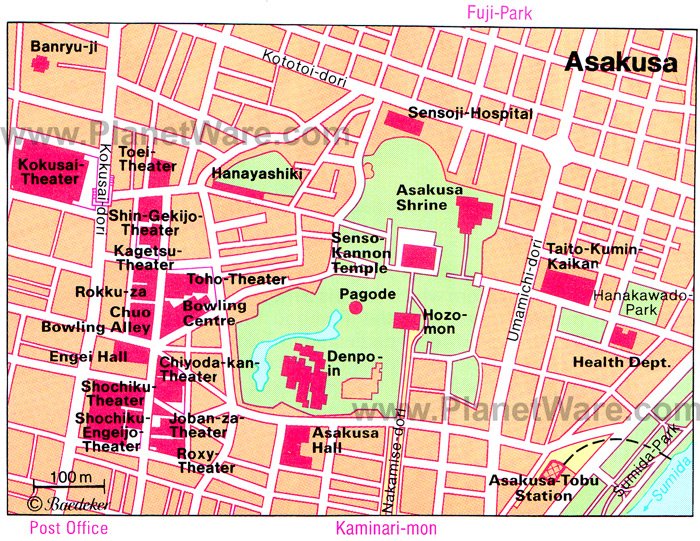
Highlights : A paradise for shoppers with hundreds of shops and restaurants in one of the world's largest pedestrian zones
Ginza is Tokyo's busiest shopping area and it's as iconic as Times Square in New York, and much older. It has in fact been the commercial center of the country for centuries and is where five ancient roads connecting Japan's major cities all met. Lined by exclusive shops and imposing palatial stores, the Ginza district is also fun to simply wander around or. Better still, sit in one of its many tea and coffee shops or restaurants while watching the world rush past.
At weekends, when everything is open, it's a shopper's paradise as traffic is barred, making it one of the world's largest pedestrian zones. Come nightfall, gigantic advertising panels on its many buildings bathe Ginza in bright neon light.
It's also where you'll find the famous Kabuki-za Theatre (see #12 below), home to traditional Kabuki performances, as well as the Shinbashi Enbujō Theatre in which Azuma-odori dances and Bunraku performances are staged.
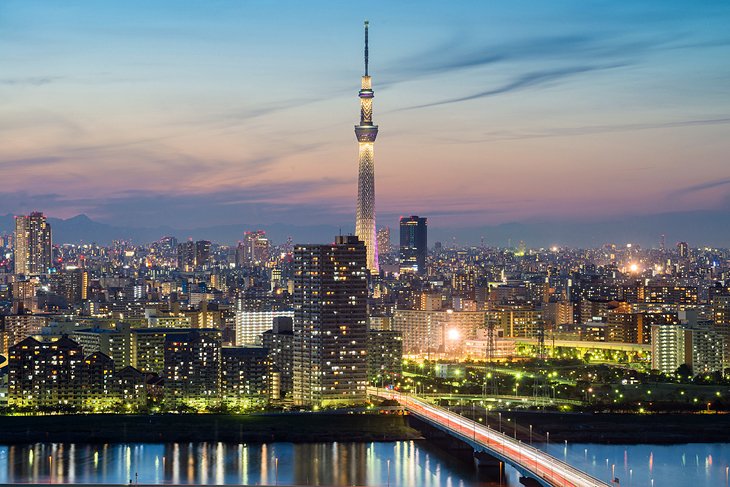
Highlights : The tallest structure in the country, featuring a restaurant and multiple observation decks
It's hard to miss the Tokyo Skytree (Tōkyō Sukaitsurī). This 634-meter-tall communications and observation tower rises out of the city's Sumida district of Minato like a huge rocket ship.
The country's tallest structure (and the world's tallest freestanding tower), the Tokyo Skytree opened in 2012 and has quickly become one of the city's most visited tourist attractions thanks to the incredible panoramic views from its restaurant and observation decks.
With a base designed in the form of a massive tripod, the tower includes a number of cylindrical observation levels, including one at the 350-meter mark, and another at the 450-meter point - the latter includes a unique glass spiral walkway to an even higher viewpoint with glass floors for those with strong stomachs.
Be sure to also check out the smaller and much older Tokyo Tower , built in 1958 and once the city's tallest structure.
Address: 1 Chome-1-2 Oshiage, Sumida City, Tokyo
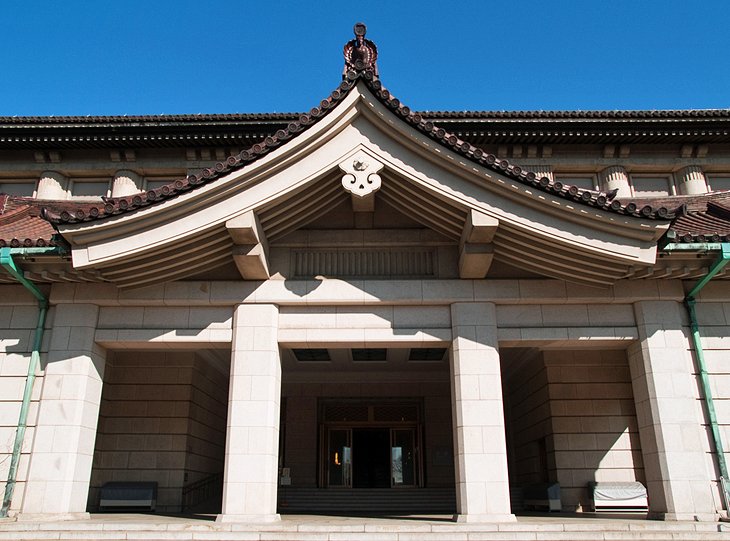
Highlights : One of the largest collections of historic Japanese clothing and pottery from across Asia
Tokyo National Museum (ōkyō Kokuritsu Hakubutsukan) houses more than 100,000 important works of Japanese, Chinese, and Indian art, including more than 100 national treasures.
Opened in 1938, the TNM, as it's usually known, includes highlights such as numerous Buddhist sculptures from Japan and China dating from the 6th century to the present, as well as fine collections of old textiles, historical weapons, and military equipment.
Also noteworthy are its large collections of historical Japanese clothing and Asian ceramics and pottery. Important artwork includes Japanese paintings from the 7th to the 14th centuries, and another must-see is the museum's exquisite collections of Japanese and Chinese masterpieces of lacquer work of various centuries, including examples of lacquer-carving, gold lacquer, and lacquer with mother of pearl. There are also many fine examples of calligraphy.
English-language guided tours are available. Also worth a visit is the museum's traditional Japanese landscape garden with its three pavilions, including the 17th-century Tein Teahouse (Rokuso-an), and the nearby Museum for East Asiatic Art with its 15 exhibition galleries.
Address: 13-9 Uenokoen, Taito City, Tokyo
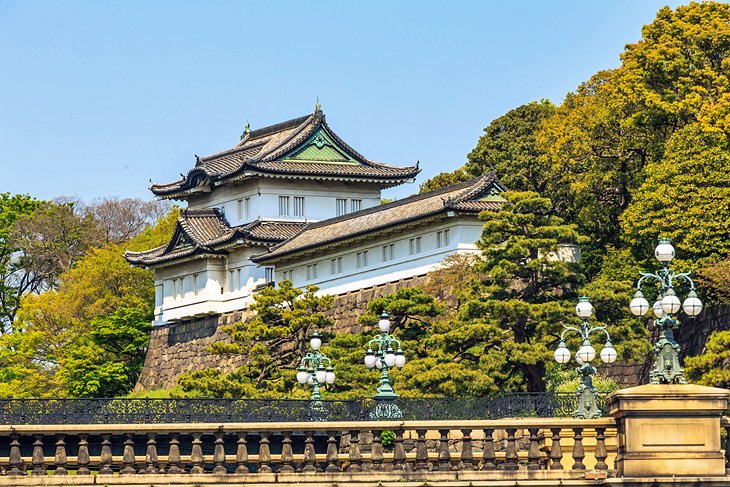
Highlights : A 17th-century palace known for its historic walls, bridge, gate, and garden
The chief attraction of Tokyo's Marunouchi district is the Imperial Palace (Kōkyo) with its beautiful 17th-century parks surrounded by walls and moats. Still in use by the Imperial family, the Imperial Palace stands on the site where, in 1457, the Feudal Lord Ota Dokan built the first fortress, the focal point from which the city of Tokyo (or Edo, as it was then) gradually spread.
As famous as the palace is the Nijubashi Bridge leading to its interior, a structure that takes its name ("double bridge") from its reflection in the water. Other notable features include the two-meter-thick wall surrounding the palace and its gates, one of which leads to the East Higashi-Gyoen Garden.
Tours of the Imperial Palace are available (pre-registration required) and include the Kikyo-mon Gate, Someikan (Visitors' House), Fujimi-yagura ("Mt. Fuji View" Keep), the East Gardens and Inner Gate, the Seimon-tetsubashi bridge, and the Imperial Household Agency Building (be sure to plan ahead).
Another fortress that can be visited is Edo Castle (Chiyoda Castle). Built in 1457, it's located in Tokyo's Chiyoda district.
Address: 1-1 Chiyoda, Chiyoda City, Tokyo 100-8111
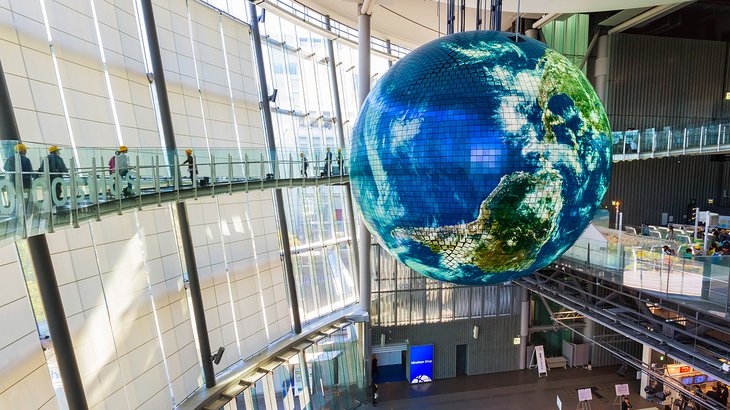
Highlights : Hands-on exhibits that teach visitors about everything from earthquakes to weather, energy, robotics, and much more
One of Tokyo's newest museums, the impressive National Museum of Emerging Science and Innovation (Nippon Kagaku Mirai-kan) – usually simply referred to as the Miraikan – offers a fascinating insight into Japan's leading role in the field of technology.
Created by Japan's Science and Technology Agency, this ultra-modern, purpose-built facility includes many hands-on interactive exhibits dealing with everything from earthquakes to weather, as well as renewable energy and robotics. Highlights include a number of displays relating to modern transportation such as a superb model of a Maglev train, as well as a robotics exhibition.
Also worth visiting is the Edo-Tokyo Museum. Completed in 1993, the museum's exhibits deal with the region's rich past, present, and future. Of particular interest is a replica bridge leading into a mock-up of dwellings in the original old city of Edo.
Address: 2-3-6 Aomi, Koto City, Tokyo
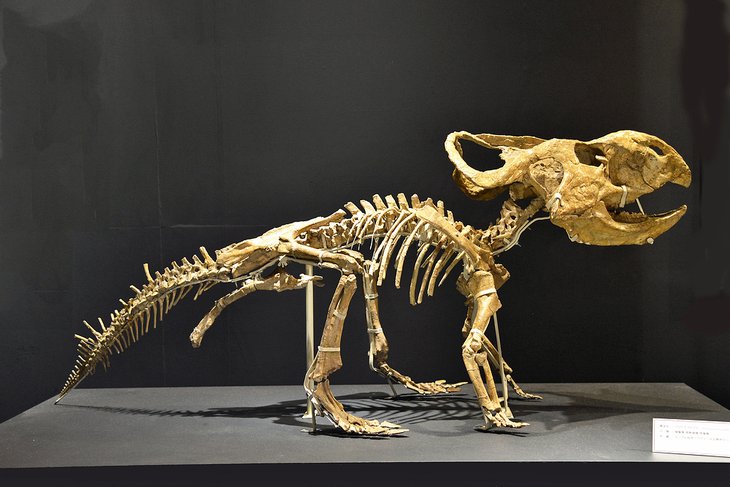
Highlights : A newly renovated museum housing 250,000 items related to natural history and science
Located in Tokyo's Ueno Park , the superb National Museum of Nature and Science (Kokuritsu Kagaku Hakubutsukan) opened in 1871 and is one of the country's oldest museums.
Now completely renovated and modernized, the museum also boasts a reputation as one of the country's busiest and largest museums, housing a vast collection of some 250,000 materials related to natural history and science.
These include many fascinating interactive displays on space development, nuclear energy, and transportation, each allowing visitors a unique insight into the latest scientific and technological advances. Highlights of the Japan Gallery (Nihonkan) include numerous exhibits of prehistoric creatures and the history of the Japanese people, including traditional customs and outfits. In the Global Gallery (Chikyūkan) you'll see many excellent scientific and technology displays, including robotics and vintage vehicles.
Address: 7-20 Uenokoen, Taito, Tokyo 110-871
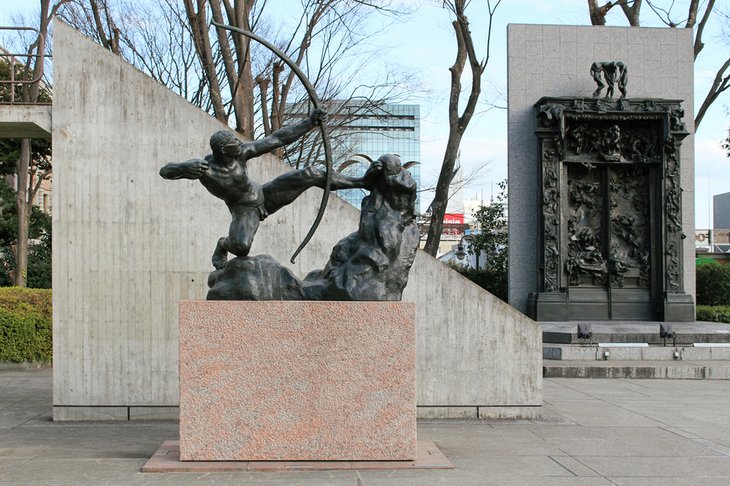
Highlights : A collection of international artists, including Rodin, Monet, Manet, Degas, and many more
Located in Ueno Park and just three minutes' walk from Ueno Station stands the National Museum of Western Art (Kokuritsu Seiyō Bijutsukan). It was built in 1959 to plans by famous Swiss architect Le Corbusier.
The exhibits, largely made up of works by important French artists, come mainly from the collections of Japanese businessman and art collector Kojiro Matsukata, bought during visits to Europe early in the 20th century.
In the courtyard are works by French sculptor Auguste Rodin, while highlights inside are canvases by Impressionists Paul Cézanne, Claude Monet, Edouard Manet, and Edgar Degas. The museum also boasts an excellent restaurant with great views over the courtyard.
Address: 7-7 Uenokoen, Taito City, Tokyo
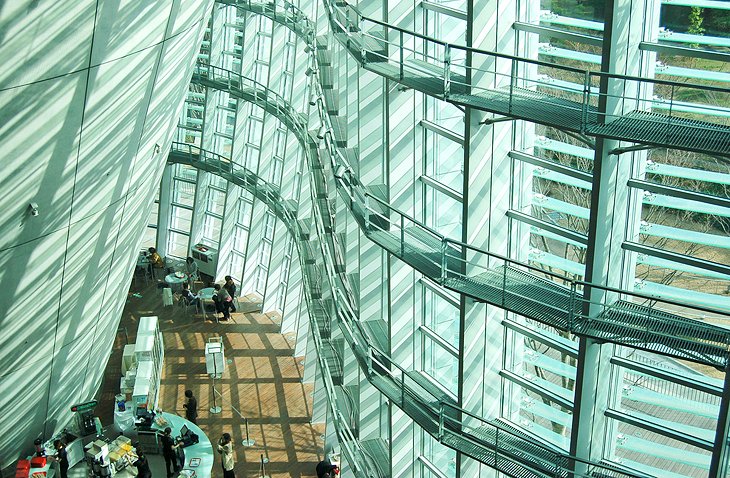
Highlights : A permanent collection of more than 600 paintings from the 20th century
Another of Tokyo's world-class museums, the excellent National Art Center (Kokuritsu Shin-Bijutsukan) is housed in a remarkable curved glass building in the city's Roppongi district. This superb facility only opened in 2007 and has since earned a well-deserved reputation for its fine permanent collection of more than 600 paintings, most from the 20th century. These include many important pieces of modern art and regular visiting exhibitions.
Also worth checking out is the Mori Art Museum (Mori Bijutsukan) on the top floors of the neighboring Roppongi Hills Mori Tower . This fine art museum is notable for its regular exhibits of contemporary artwork from around the globe.
Address: 7-22-2 Roppongi Minato City, Tokyo
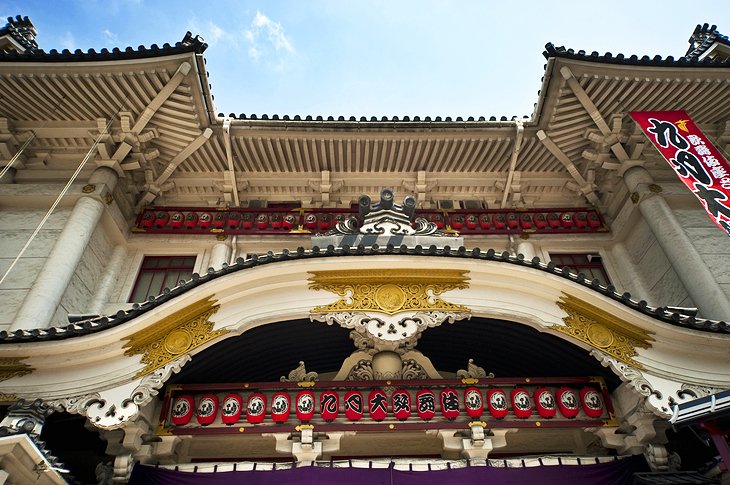
Highlights : A stunning theater showcasing a centuries-old style of performance
Tokyo is home to a number of excellent theaters, none as well known as the historic Kabuki-za Theatre in the city's busy Ginza district , home to famous traditional Kabuki performances.
Based upon a medieval, highly skilled, and often burlesque theatrical form including song and dance, the theater's performances are as popular among tourists as they are with Japanese-speaking people.
The drama and comedy are relatively easy to follow thanks to rich visuals and theatricality. The theater's interior, usually full to capacity with some 2,000 guests, is always intimate and seems more akin to an enormous family get-together than a stage show due to the fact that spectators bring their own food or purchase treats from the various restaurants spread around the auditorium (go for one of the tasty bento box meals).
Performances can last for hours, and spectators stay as long as they wish (or as long as they can bear). And no one seems to take offense at people's comings and goings, nor their loud cheering or jeering.
Address: 4 Chome-12-15 Ginza, Chuo City, Tokyo 104-0061
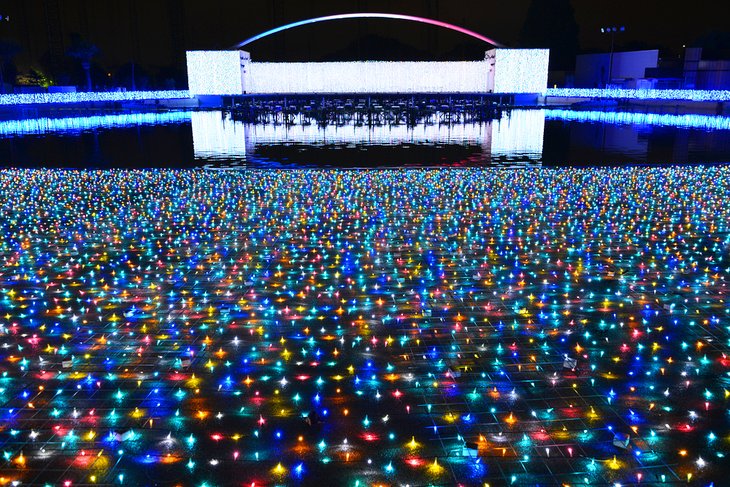
Highlights : An amusement park with hundreds of cherry trees, water attractions, and rides
Sometimes you just want a day to be a kid again, and that's exactly what Yomiuriland has given to the residents of Tokyo since 1964. This amusement park sits 30 minutes from Tokyo and is home to more than 40 attractions and seasonal activities – think roller coasters, rides, light shows, and even a bungee jump.
The park is open year-round and provides something exciting to do at each time of year. In the spring, the park's more than 1,000 cherry trees blush with a blanket of powder-soft pinks. The summer means the opening of the park's many pools and water attractions. Come winter, the landscape is transformed into a twinkling snowscape wonderland.
Most travelers come to Yomiuriland to ride the Bandit, a rollercoaster that snakes its way through the tops of the cherry trees. Of course, the summer pools and waterslides are also a major selling point for this thrill park. Visitors will also find shopping and restaurants and a stage for entertainment.
Address: 4015-1 Yanokuchi, Inagi, Tokyo 206-8566, Japan
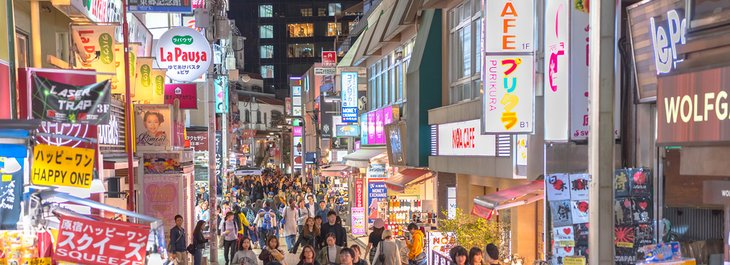
Highlights : Outrageous fashion and futuristic boutiques sit alongside historic attractions and museums.
Nothing is too outrageous when it comes to Tokyo's frenetic Harajuku District. The neighborhood refers to the area near the Harajuku Station, sandwiched between Shinjuku and Shibuya. If you're looking to bend the rules when it comes to everything cultural and fashionable, this is the spot to go.
The main artery of Harajuku (and the best place to spot the crazy teen fashions) is Takeshita Dori, which is flanked on either end by wild and wacky shops. Pink hair, tattoos, and knee-high boots are just the tip of the iceberg here. Even if your style is on the tamer side, fret not – Harajuku has plenty of more mainstream boutiques, as well.
But Harajuku is also home to several historical attractions. Meiji Jingu is located here, as is the small Ota Memorial Museum of Art. Overall, it's the perfect neighborhood to encapsulate Japan's deep-rooted traditions with its surges of futuristic styles.
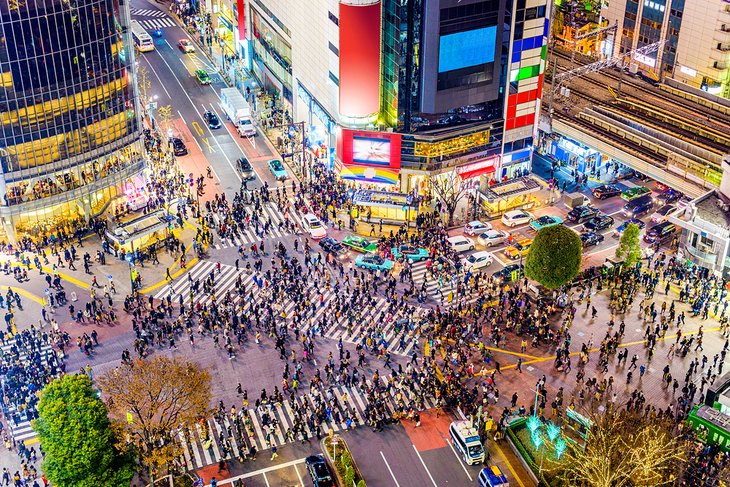
Highlight : More than 3,000 human beings cross the streets at once at this five-way intersection.
If you've never seen an image of Shibuya Crossing, you may want to take a look before you go. Think Times Square, and multiply it several times over. This intersection is one of the most famous in the world, and most definitely the busiest in Japan, flooded with hundreds of thousands of flashing lights from electronic billboards overhead.
At peak times, it is thought that somewhere around 3,000 people cross this five-way intersection at once. It is undoubtedly the mass-transit nucleus of Tokyo. But if the thought of crossing the street with 3,000 of your newest friends is overwhelming, you can always head to the rooftop of the Shibuya 109-2 department store, which has the best bird's-eye view over the organized chaos below.
And even if you aren't in Shibuya to cross the street, you will still find that this neighborhood is absolutely teeming with fabulous restaurants, shopping, and entertainment. It is certainly a neighborhood not to miss when you visit Tokyo.
The best area to stay in Tokyo is the city center within walking distance of top attractions, such as the Imperial Palace, and close to Tokyo Station with its public transit and high-speed rail connections. The following hotels are highly recommended:
Luxury Hotels:
- Perched atop an office tower on the edge of Tokyo's financial district, the high-rise Mandarin Oriental, Tokyo offers excellent views over the city. Rooms and suites are posh, with chic decor and comfy beds. There are 10 restaurants on-site. You'll also find a spa, an indoor swimming pool, and a fitness center.
- Also boasting great views, this time over Tokyo Bay, is the Conrad Tokyo . This luxury hotel is also popular for its proximity to the Ginza district, which is home to great shopping and dining. On-site amenities here include an excellent Cantonese restaurant, a Japanese restaurant with views across the bay, and a third restaurant serving upmarket European fare. You'll also find a swanky spa with an indoor pool and gym in the building.
- Some of the best views in the city are discovered at the refurbished Palace Hotel Tokyo . If you are on a romantic getaway, book one of the posh rooms with a balcony overlooking the gardens of the Imperial Palace. If you're traveling with the kids, many of the suites have kitchens along with separate living rooms. There are multiple restaurants on-site, as well as an indoor swimming pool and a workout room. Finally, treat yourself to a massage at the luxe spa.
Mid-Range Hotels:
- Close to the Imperial Palace and overlooking the magnificent red brick Renaissance-style Tokyo Station, Hotel Ryumeikan Tokyo is also near the city's best dining and shopping. This good-value option offers contemporary rooms with Nespresso machines and mini-fridges. Some have tatami mats and futons. On-site amenities include a few dining options and a traditional tearoom.
- Another good mid-range option near public transport and shopping is Hotel Niwa Tokyo . The hotel is located north of the Imperial Palace and adjacent to the Tokyo Dome baseball stadium. It offers clean and comfortable rooms – some even feature whirlpool baths. There are two restaurants on-site, as well as a gym.
- A great family hotel is the Courtyard by Marriott Tokyo Ginza , just a five-minute walk from the Ginza shopping district. The rooms here feature Japanese-inspired art and comfy beds. The suites also have separate living spaces, which is a bonus for parents. When it comes time to eat, you have three on-site restaurant options, including a Japanese restaurant with hostesses in kimonos and its own tempura counter.
Budget Hotels:
- Just minutes from the iconic Tokyo Tower and Shiba Park, Richmond Hotel Tokyo Shiba offers reasonably priced accommodations. It is especially popular for its proximity to the Haneda Express Monorail, the direct link to Tokyo's international airport. There is free Wi-Fi and a Starbucks café on-site.
- Another economy choice located just across the road from the Kanda River and a quick stroll to the nearest metro station is Hotel Mystays Asakusabashi . The property features tidy but basic rooms with free Wi-Fi. If you want to cook for yourself to save cash, book one with a kitchenette. Amenities include a convenience store on-site, as well as bike rentals.
- If you are really traveling on a tight budget then check out Hotel Yanagibashi , which offers some inexpensive hostel-style shared rooms. There are also cheaper private rooms with shared baths and slightly more expensive private rooms with en-suite baths. There is a communal kitchen so you can cook for yourself, free Wi-Fi, and laundry facilities on-site.
- Sightseeing & History in Tokyo : Tokyo is a big city, and taking a tour is a time-efficient way to see the top sites and one of the best ways to learn about what you are seeing. For a little bit of everything, the 1-Day Tokyo Bus Tour is a great option. This is a 10-hour tour taking in some of the city's top sites, like the Skytree, a cruise on Tokyo Bay, a visit to the Meiji Shrine, the Imperial Palace, and more.
- Day Trip to Nikko National Park: Get outside the steel and concrete of Tokyo and into the lush greenery of Nikko National Park with this full-day excursion. The tour takes you into the rolling countryside, past sacred shrines, and into temples. The Nikko 1-Day Bus Tour features Toshogu Shrine, which is a UNESCO World Heritage Site. You can also visit Lake Chuzenji and Kegon Falls.
- Visit Mt. Fuji : Get up close and personal with one of Japan's biggest attractions: Mount Fuji. On the Mt. Fuji, Hakone, Lake Ashi Cruise, and Bullet Train Day Trip, you'll be whisked out of the city into the countryside for a visit to Mt. Fuji and some of Japan's other top sites. This tour is approximately 12 hours and also includes Mt. Hakone.
Tokyo is a city that enjoys a temperate climate year-round. But the best time to visit Tokyo is March, April, September, October, and November , thanks to its perfect weather and beautiful blossoms and foliage.
September, October, and November are some of the best times to visit Tokyo because they have the best weather. The weather in Tokyo in the fall ranges from 27 degrees to 16 degrees Celsius. The fall is also when the leaves in Tokyo start to change, particularly in October and November. Keep in mind that this is peak time for travelers, so hotel rates may be higher, and expect crowds.
Tokyo is also fabulous during March, April, and May. Temperatures range from 13 to 22 degrees Celsius. April is when Tokyo is awash in pale pink cherry blossoms, as well.
Summers in Tokyo are also top times for tourists, particularly June, July, and August. Expect throngs of crowds during the summer months, as well as heat and humidity. Still, this is one of the top times for tourists to visit Tokyo because schools are out on summer break.
More Related Articles on PlanetWare.com
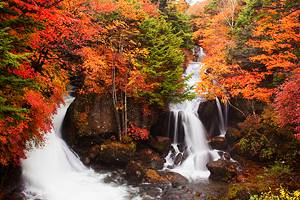
While in Tokyo : Be sure to spend time exploring the many great attractions within an easy day trip of Tokyo . Highlights include family favorites Tokyo Disneyland and Tokyo Disney Sea, as well as a great trip to majestic Mount Fuji .
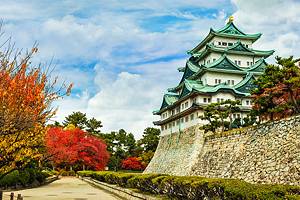
Take the Train : Thanks to Japan's superb rail system, it's possible to use Tokyo as a base to explore numerous other great cities in a day or less. Options include taking a Bullet train to experience the attractions of historic Kyoto (passing Mount Fuji along the way), or heading to Nagoya and exploring the city's many fine shrines and temples, along with its famous castle.
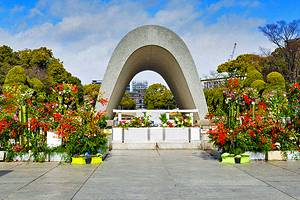
Japan Vacation Ideas : Another city that would serve equally well as a jumping-off point from which to explore Japan is Hiroshima . Here, you can enjoy the amazing Island Shrine of Itsukushima (you can spend the best part of a day here), as well as the many reminders of the city's part in WWII, including Hiroshima Peace Memorial Park and the Peace Memorial Museum. The city of Sapporo on the northernmost island of Hokkaido is also a good place to enjoy the country's rich culture, history, and traditions.

More on Japan

- Group Enquiry? NEW
- 55 Places to Visit in Japan
Japan Tourist Places
Quick navigation.
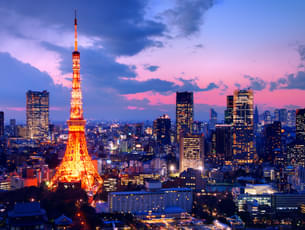
Must Visit Places in Japan

Mount Fuji, located in Japan, is an iconic symbol of the country. Standing at 3,776 meters, it offers breathtaking views and attracts thousands of visitors each year, both climbers and sightseers alike.
Tokyo Tower
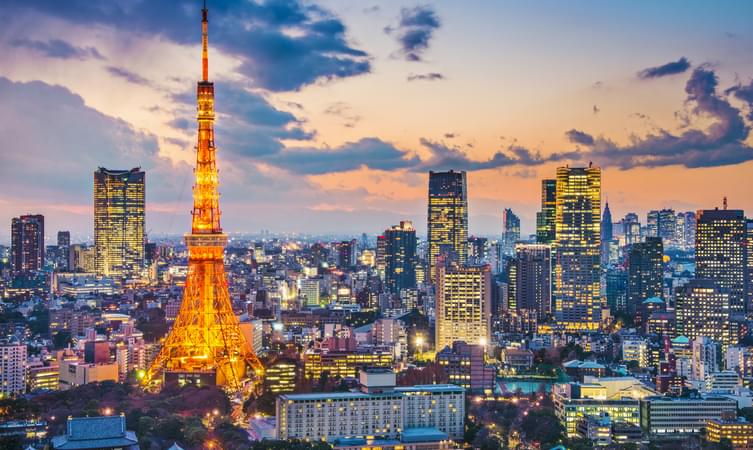
Tokyo Skytree
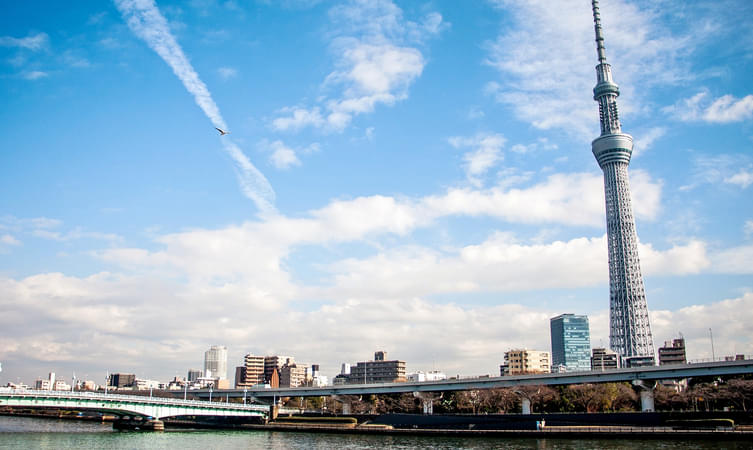
Tokyo Disneyland
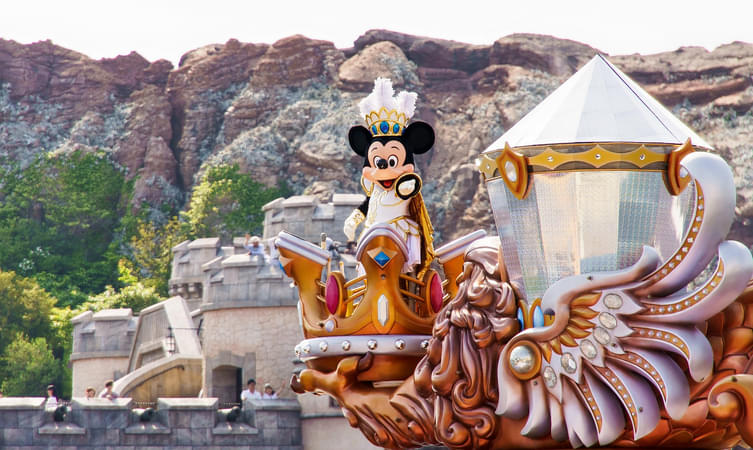
Osaka Castle
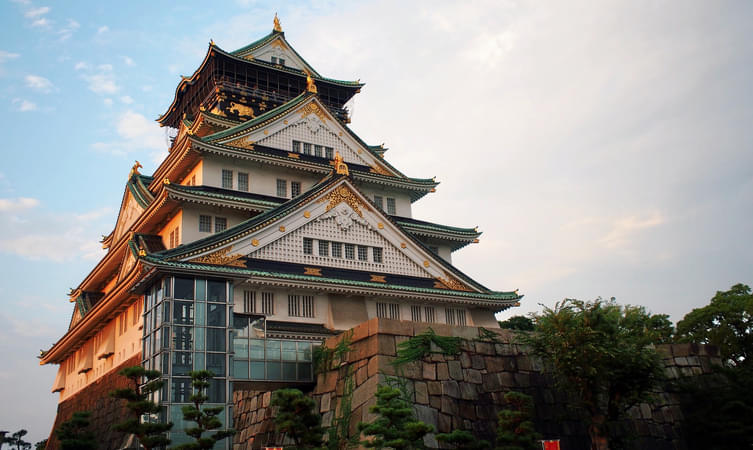
Tempozan Giant Ferris Wheel
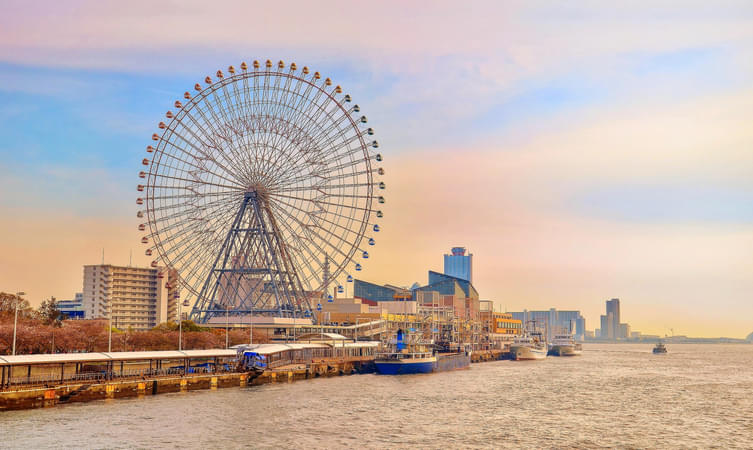
Ride aboard the Tempozan Ferris Wheel and set out on a journey above the busy streets of Osaka. Constructed in 1997, this recognisable landmark towers over Tempozan Harbour Village. Take a seat in your covered gondola and get ready for an amazing flight through the skies. Admire the expansive views of the city as you rise to a height of 369 feet.
Universal Studios Japan

Discover the wonder of Universal Studios Japan, the first Universal Studios location in Asia. It features a colourful assortment of iconic characters, including Spider-Man, Hello Kitty, and Shrek, and its appeal surpasses even Tokyo Disney Resort. Exhilarating rides, immersive movie simulators, and mesmerising parades guarantee nonstop enjoyment for guests of all ages. Thus, enter a world where magic meets science, where surprises await around every corner.
Top Experiences To Do in Universal Studios Japan

Osaka Aquarium Kaiyukan
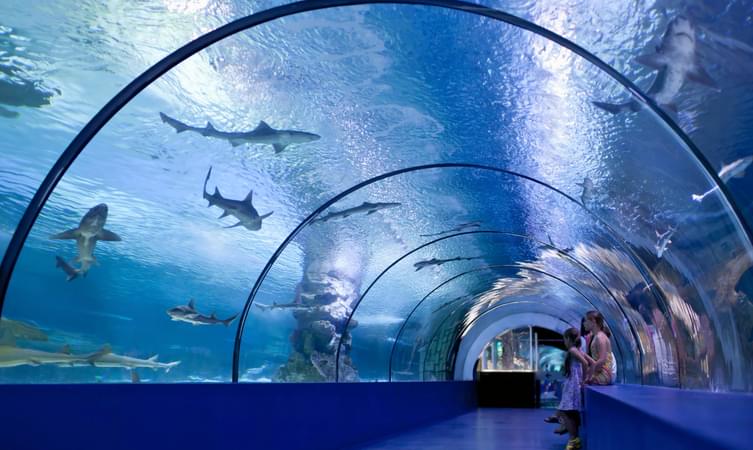
Topping the list of some of the most unique Osaka beautiful places is the Osaka Aquarium Kaiyukan. With a structure that resembles giant blocks of Lego, this aquarium is one of the biggest in the world. It is here where you can see several thousand marine and other wildlife species not just from Japan, but also from Antarctica, the Pacific Ocean, the Great Barrier Reef as well as the Monterey Bay.
Places to Visit in Tokyo
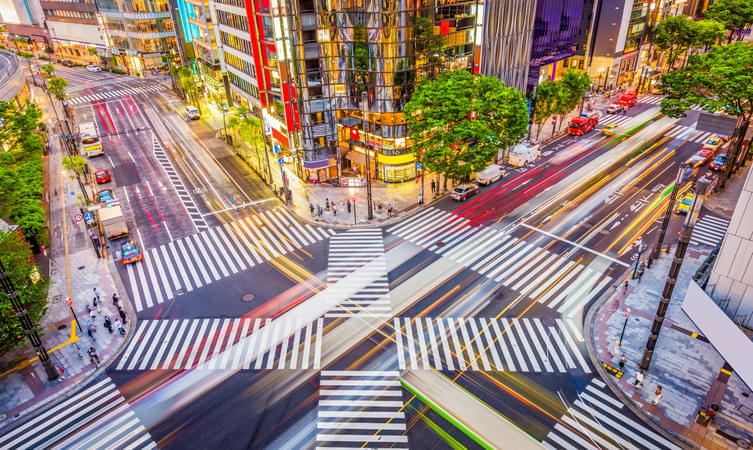
Ginza is one of the poshest, most upmarket places to visit in Tokyo, with an abundance of shops, restaurants, boutiques, lifestyle experiences and much more. You can also explore galleries, nightclubs and cafes for a wholesome experience that will make your visit to Tokyo memorable. All luxury and boutique brands have a store in Ginza, which is considered a shopper’s paradise. The Ginza Wako building is symbolic of the entire district, and the good news is, window shopping here is absolutely free! Location: South of Yaesu, Tokyo
Shinjuku Gyoen
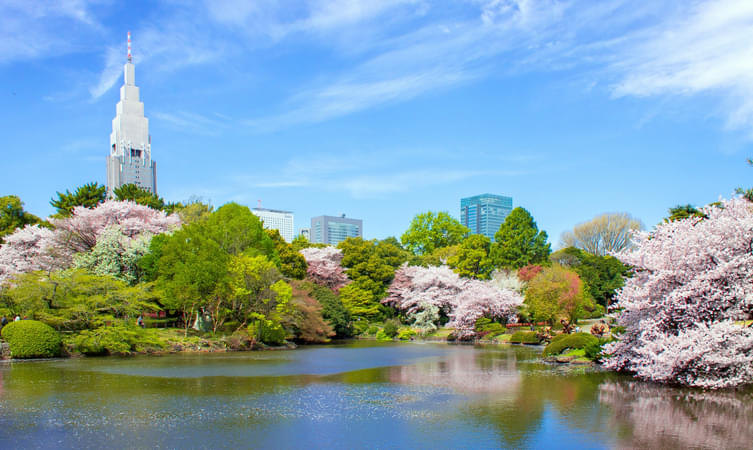
Inokashira Park
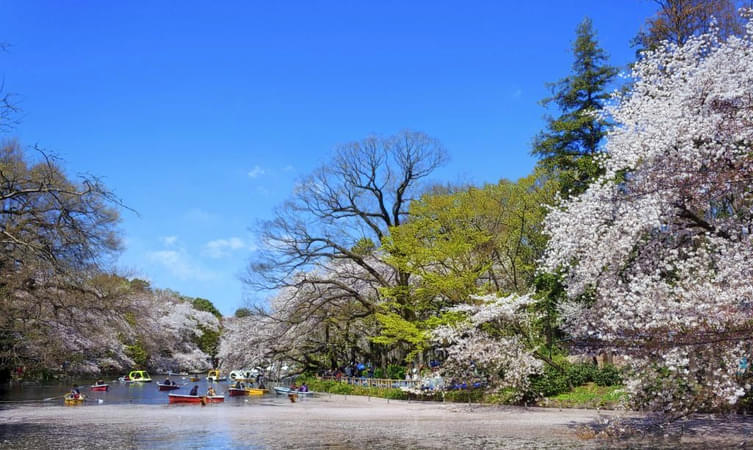
Ghibli Museum
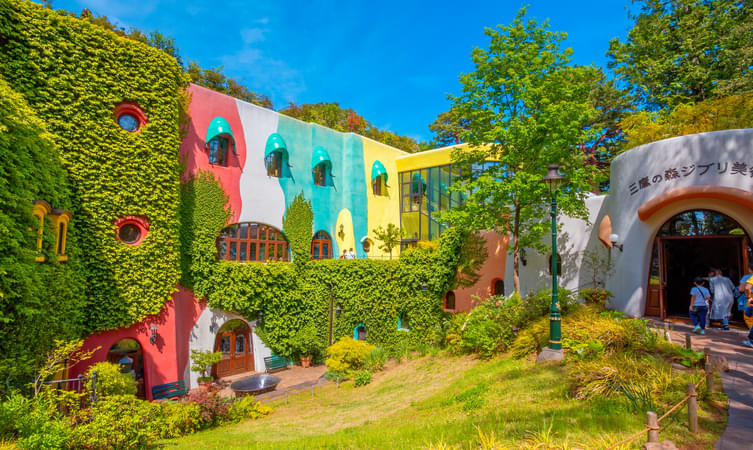
Studio Ghibli is one of the most famous artistic products to have come out of Japan and many people visit the country simply to learn more about the animation studio of Miyazaki Hayao, who has produced some of the most emotional and well-made films in the world. If you too are interested in learning more about these famous films and animation, one of the best places in Tokyo is the Ghibli Museum in Inokashira Park in Mitaka. You can check out life-size figurines, robots, drawings, original drafts and much more at the museum. Location: 1 Chome-1-83 Shimorenjaku, Mitaka, Tokyo 181-0013, Japan Timings: Tuesday to Sunday (10:00 a.m. – 6:00 p.m.) Entry fees: 1000 yen
Tokyo National Museum
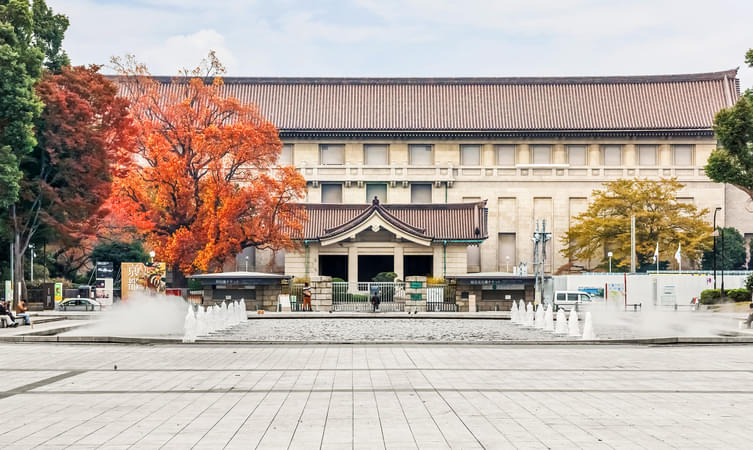
When visiting places in Tokyo, one can’t do without skipping a visit to the Tokyo National Museum – the oldest and biggest of all of Japan’s top-level museums throughout the country. The museum houses over 110,000 pieces of historical artefacts, and over 100 national treasures. Apart from the 4,000 things that are always on display at the museum at any given time, you can also enjoy seasonal exhibitions and shows focusing on various aspects of Japan’s rich history. Location: 13-9 Uenokoen, Taito City, Tokyo 110-8712, Japan Timings: Tuesday to Sunday (9:30 a.m. – 5:00 p.m.) Entry fees: 500-1000 yen
Edo Tokyo Museum
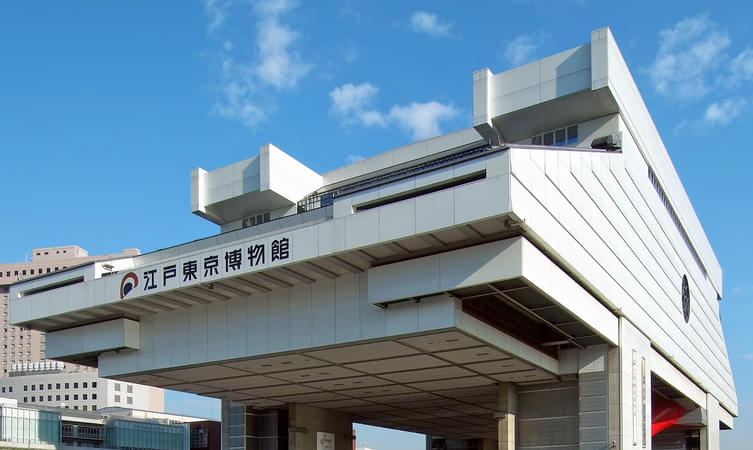
For a comprehensive insight into the life and culture of the people of Japan and especially Tokyo there are no better places to visit in Japan than the Edo Tokyo Museum. The Museum, through interactive installations, displays, artefacts from history and colourful artwork, effectively showcases how Tokyo, formerly known as Edo (till 1869) has developed, grown and thrived. Volunteer guides who speak English and other languages roam the museum for you to have the most authentic and rewarding experience here. Location: 1 Chome-4-1 Yokoami, Sumida City, Tokyo 130-0015, Japan Timings: Tuesday to Sunday (9:30 a.m. – 5:30 p.m.) Entry fees: 600 yen
National Museum Of Nature And Science
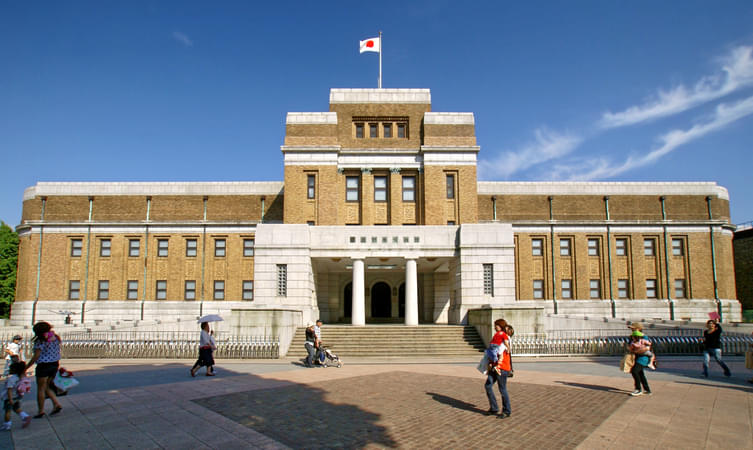
Opened in 1871, the National Museum of Nature and Science is located in the northeastern part of Tokyo’s Ueno Park. Opened in 1871, this museum is a part of the Tokyo Science Museum and is shaped like an aeroplane.
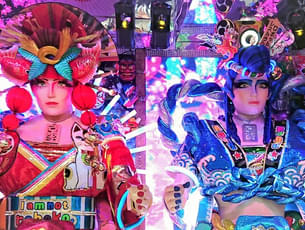
Akihabara Electric Town
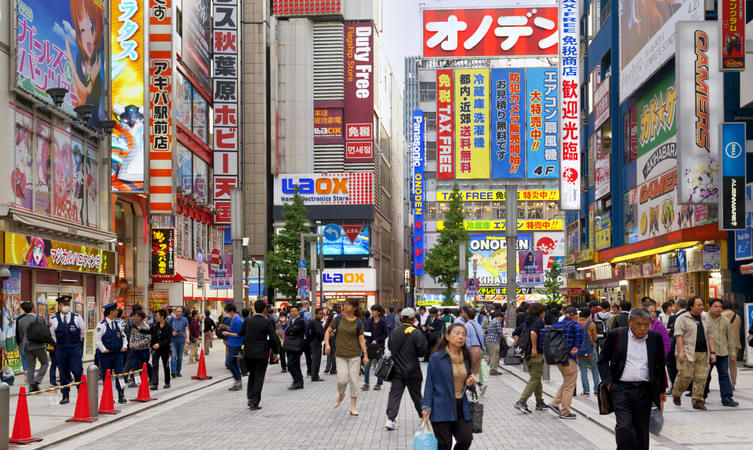
Included in every list of quintessential Tokyo places to visit is Akihabara, a bustling district in central Tokyo that is known for the hundreds of electric shops that can be found there. All tech, business and electric related things can be found here, including shops that specialize in Artificial Intelligence, manga, anime, video games, technology, toys, souvenirs and much more. It is a well-developed district that is rapidly expanding into becoming a hotspot for trade and consumerism in the country.
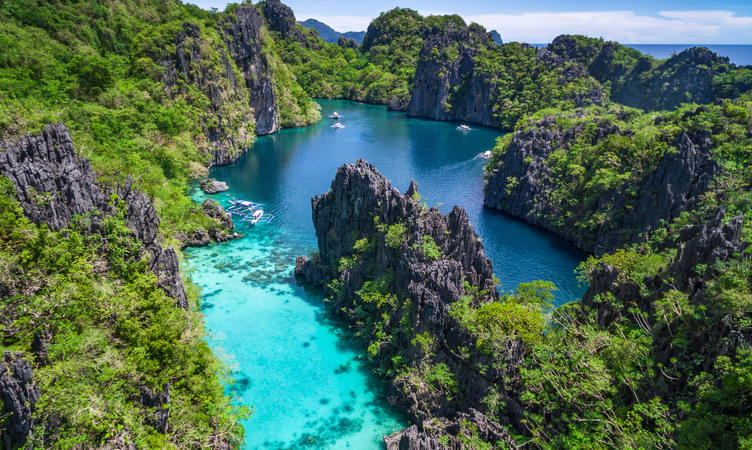
Best of Philippines

Located in the Minato district of Tokyo in Japan, Roppongi is perceived as the entertainment capital of the country. People from all over the world flock to this area to check out the nightclubs, discos, restaurants, bars and clubs that line the street and remain open throughout the night. You can also climb the Roppongi Hills skyscraper, which has an observation deck that can give you a nighttime panoramic view of the gorgeous city.
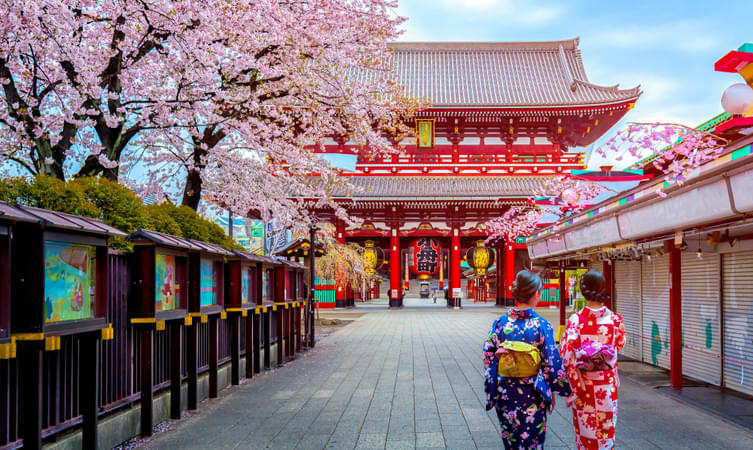
Tsukiji Hongan Ji
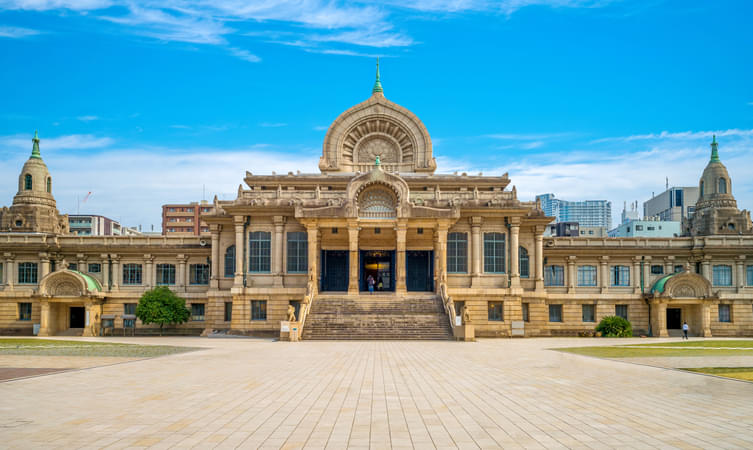
Places to Visit in Osaka
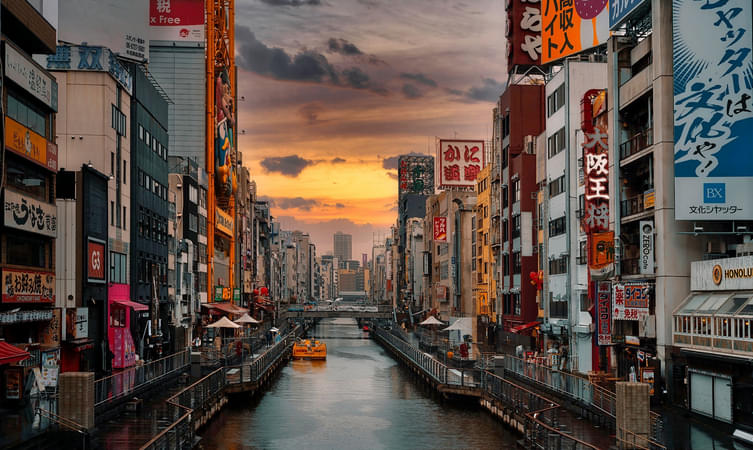
Best of Vietnam

Visit Amemura, often called Amerikamura or the American Village, is a hamlet of Osaka that is teeming with interesting characters and bright energy. This hip neighbourhood is a mix of fashion, culture, and nightlife that makes it attractive to both locals and tourists.
Here, you can explore the avenues adorned with trendy stores, secondhand bookstores, pubs, and eateries, each providing a distinctive experience. The landmark Triangle Park, which features a Statue of Liberty model, attracts skateboarders and adventure seekers, contributing to the lively ambience of the neighbourhood.
Namba Yasaka Shrine
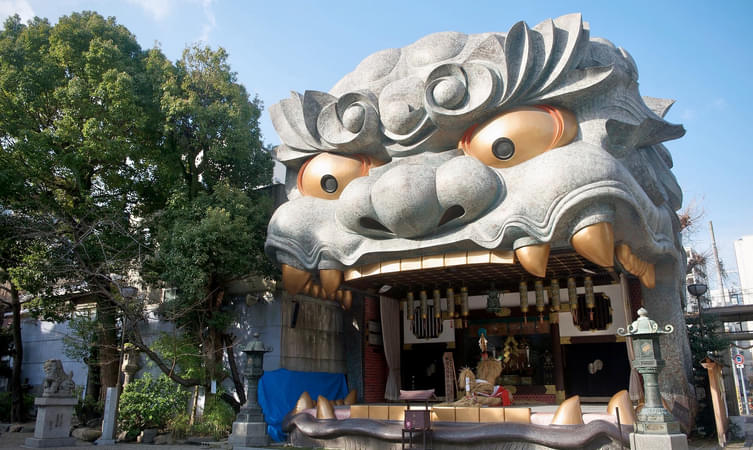
Tsutenkaku Tower
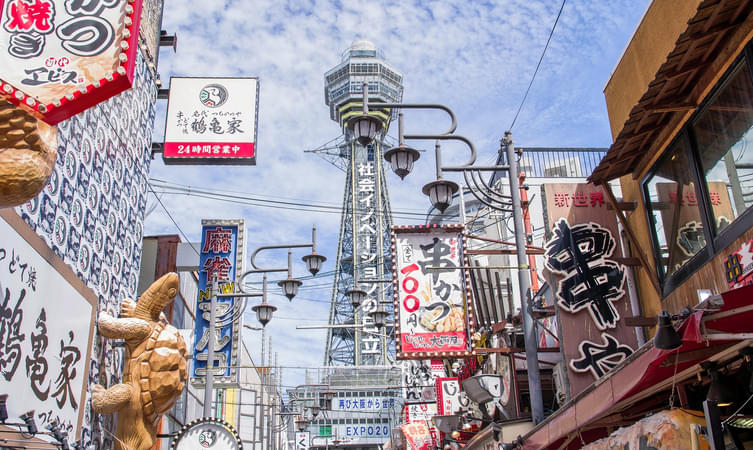
Abeno Harukas

Shitennō Ji Temple
.jpg?w=753&h=450&dpr)
Best of South Korea

Nakanoshima Park
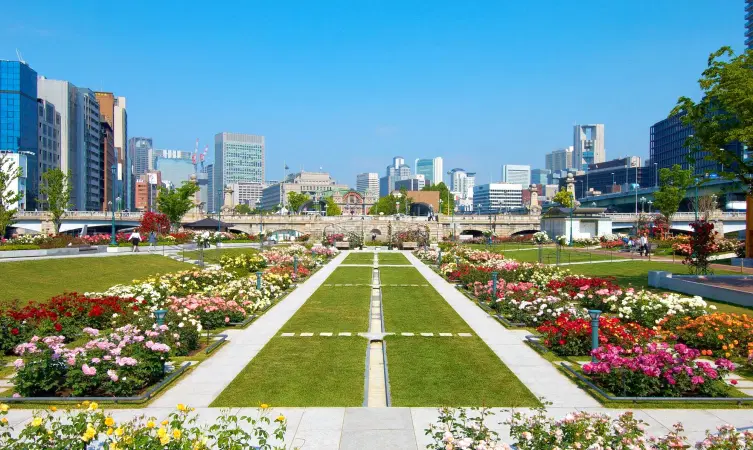
Nakanoshima Park is a waterfront park located between the Dojimagawa and Tosaborigawa rivers. This is a park that resembles an urban oasis and is also the first public park in Osaka. Established in 1891, it also takes pride in being the first beer garden of Osaka. The park comes with a range of recreation activities along with places to just sit and unwind.
The Umeda Sky Building

Mino Park is a forested valley located in Osaka, a little far away from the concrete jungle. This is one of the most sought after places in the Kansai region to admire the autumn colours at its best. During autumn, the park comes alive with its fall colours amidst the temples and gardens, especially in the second half of November.
National Museum Of Art
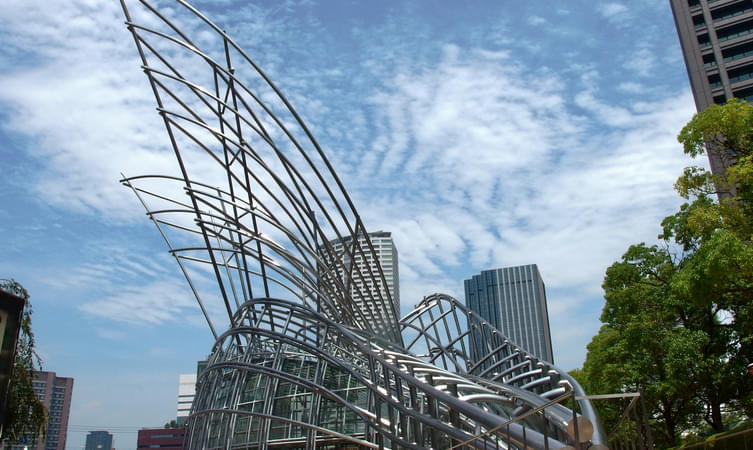
Osaka Tennōji Zoo & Park
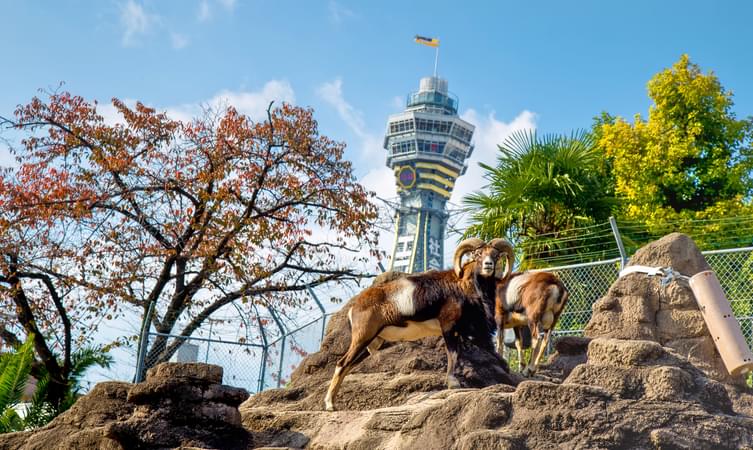
Best of Hong Kong

Places to Visit in Fukuoka
Fukuoka castle.
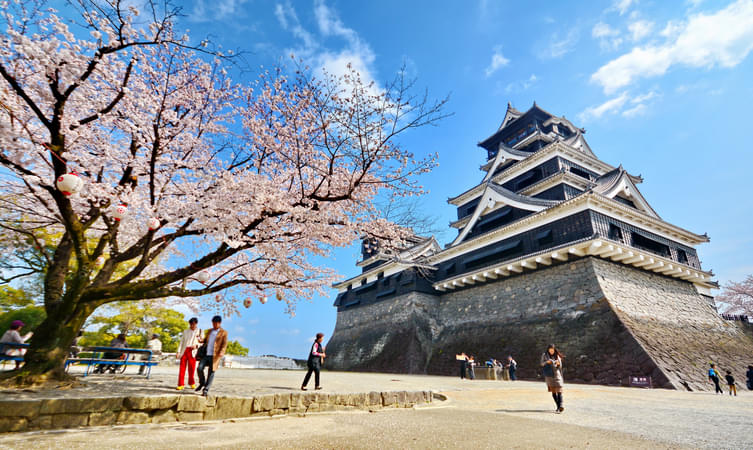
Sumiyoshi Jinja Shrine
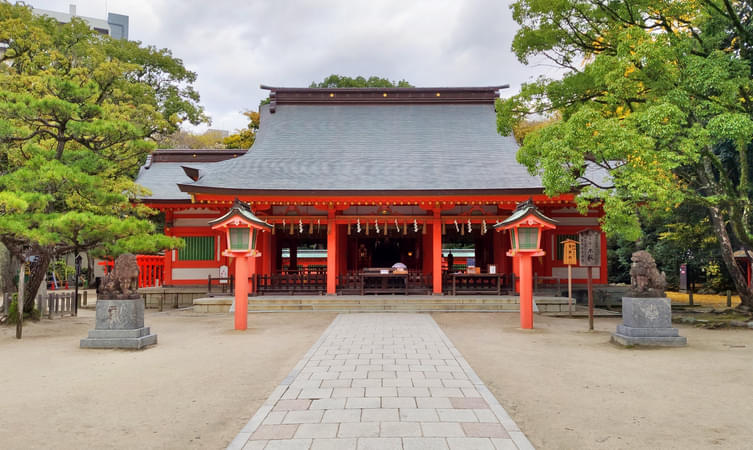
Kyūshū National Museum
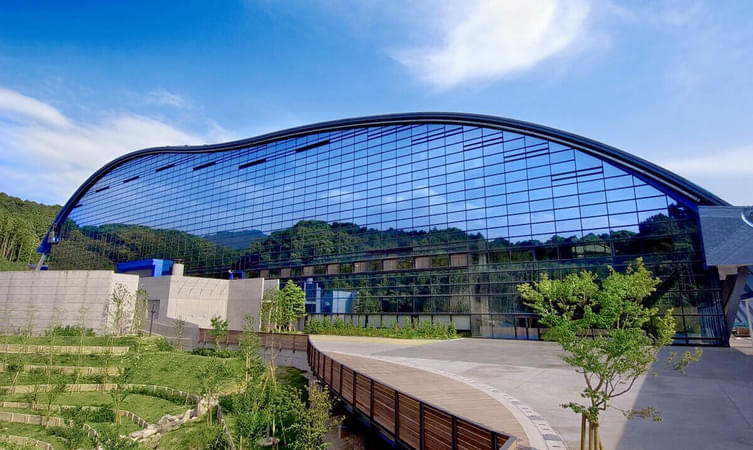
Top Experiences To Do in Kyūshū National Museum
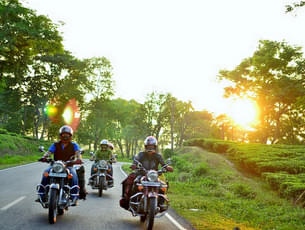
Kushida Jinja Shrine
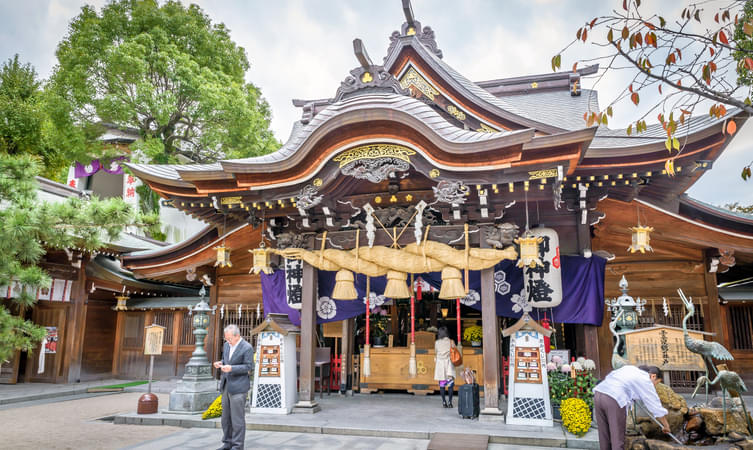
Hakata Machiya Folk Museum
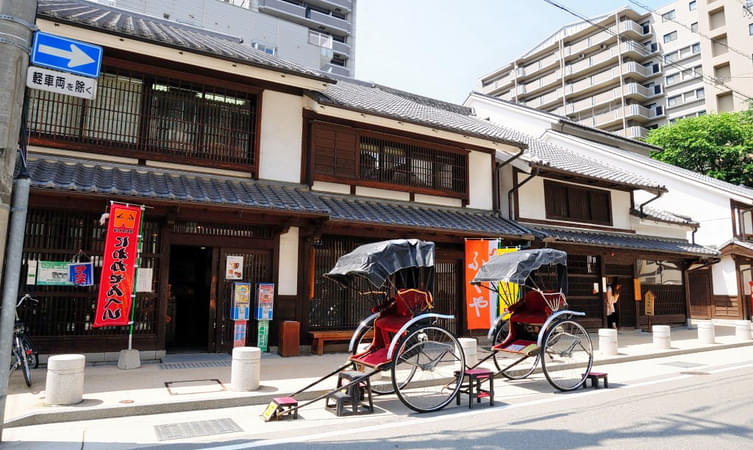
Best of Hanoi

Dazaifu Tenman Gū

The word Ohori in Ohori park translates to Moat in Japanese. This is a park that oversees a pond near Fukuoka Castle. This park was built in the mid 1920s and is a prominent choice of attraction for tourists visiting Fukuoka. When in the park, make sure you explore the simply unwind in the premises for a relaxing time.
Places to Visit in Kyoto
Kyoto imperial palace.
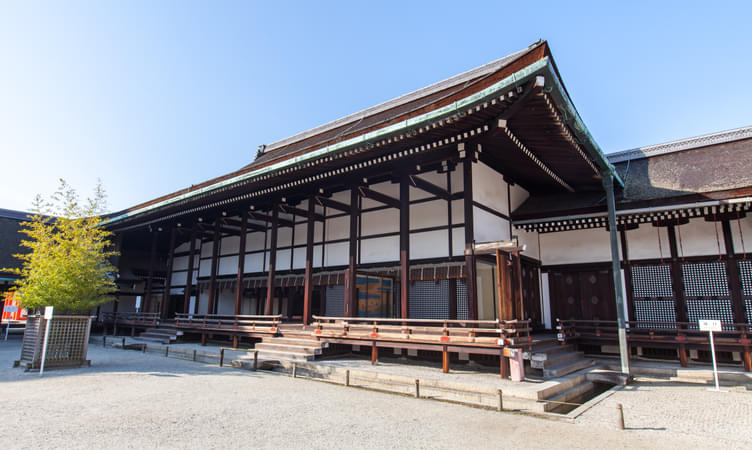
Philosopher’s Walk
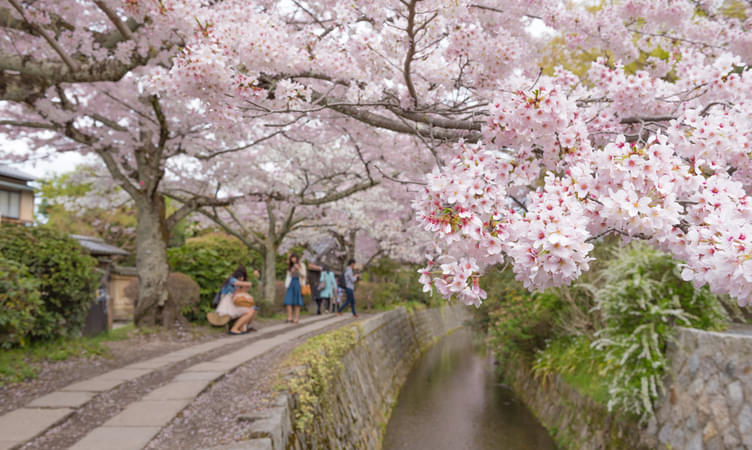
Fushimi-Inari Taisha Shrine
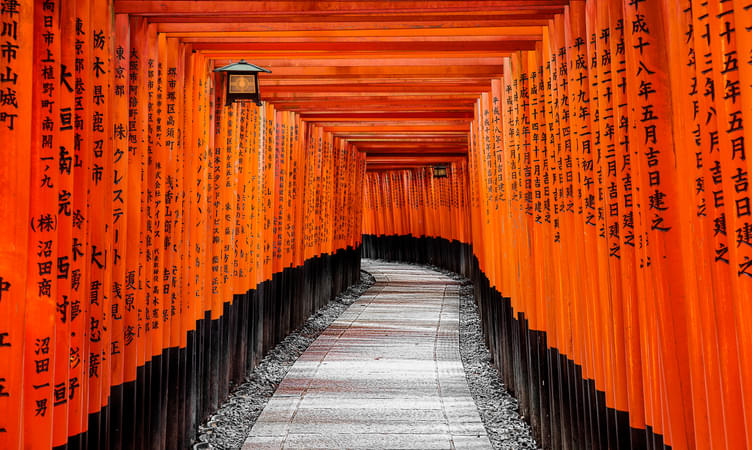
Best of Manila
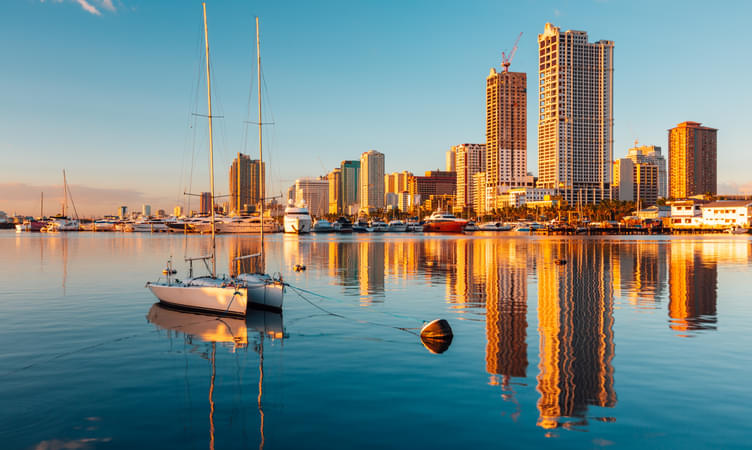
Kyoto Railway Museum
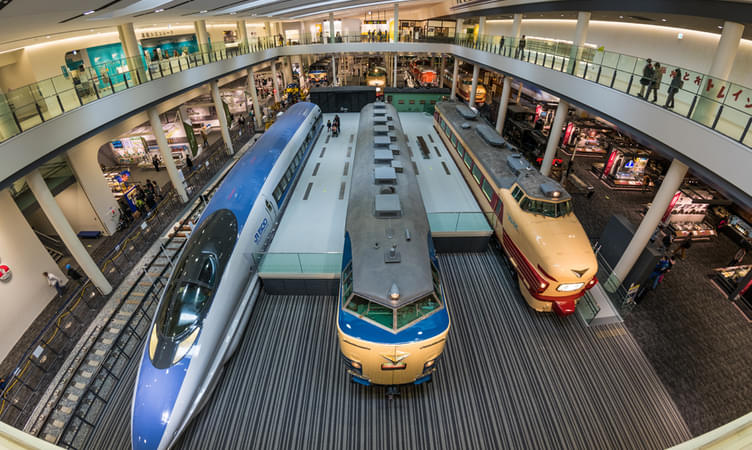
Kyoto National Museum
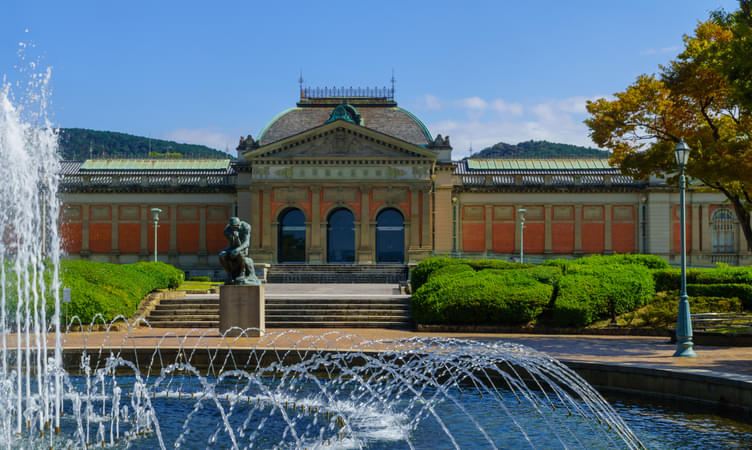
Places to Visit in Nara
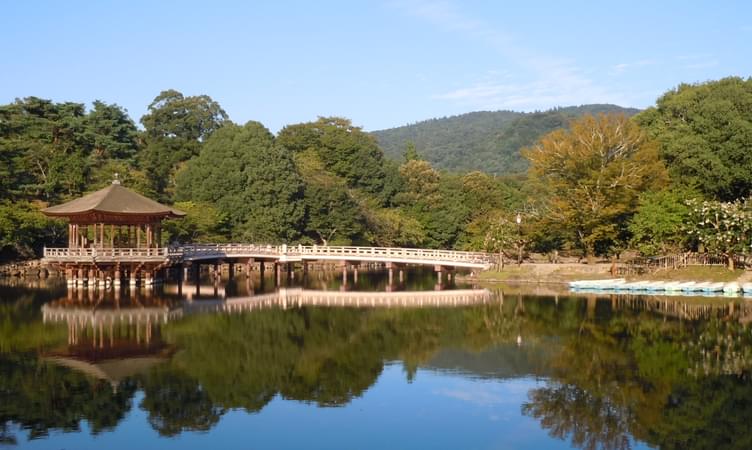
Kasuga-taisha
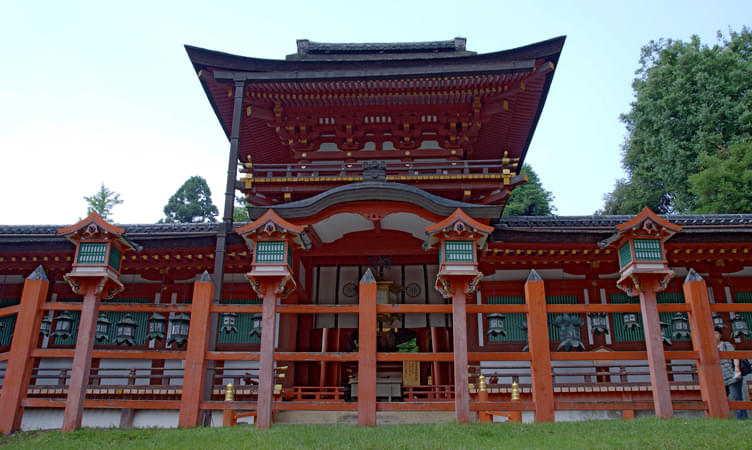
Ninja Museum of Igaryu
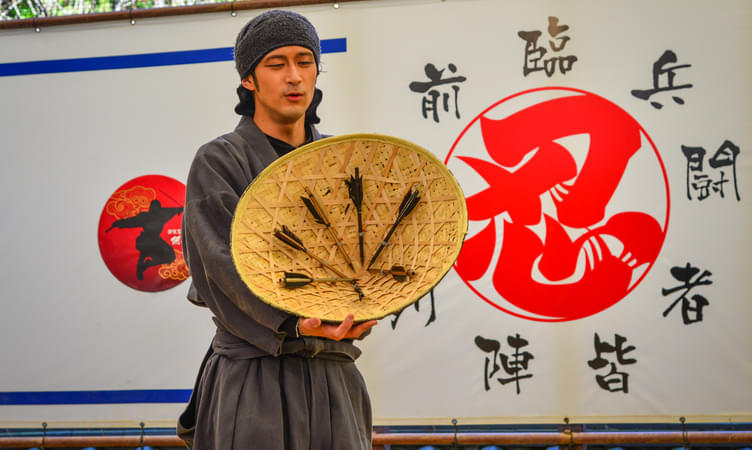
Best of Tokyo
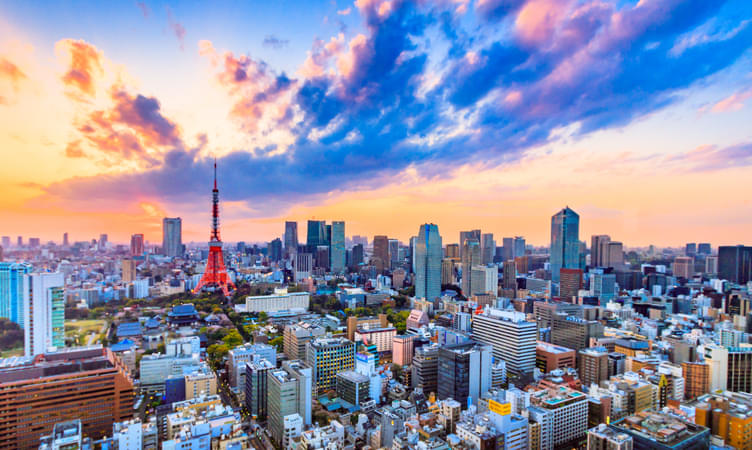
Shin-Yakushi-Ji
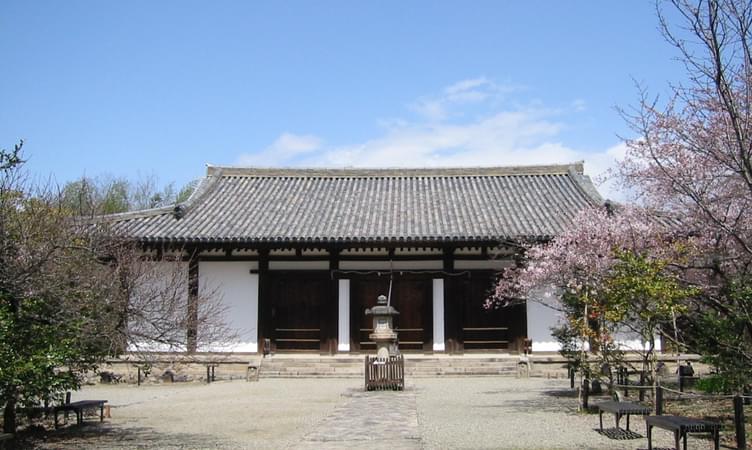
Kofun Tombs
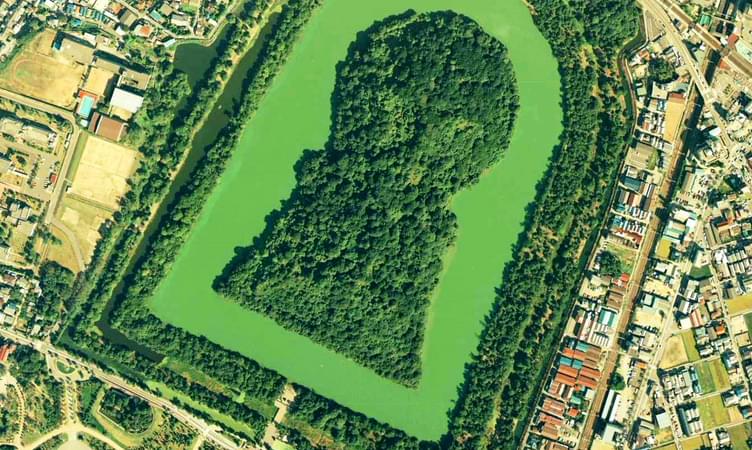
Other Places to Visit in Japan
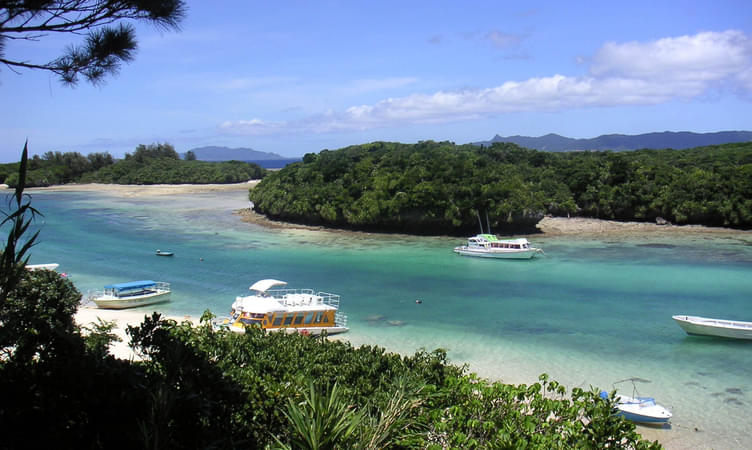
Taketomi Island
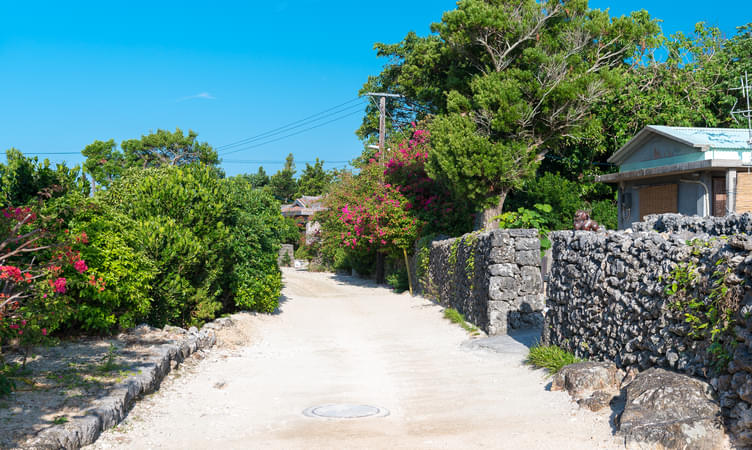
Ishigaki Limestone Cave
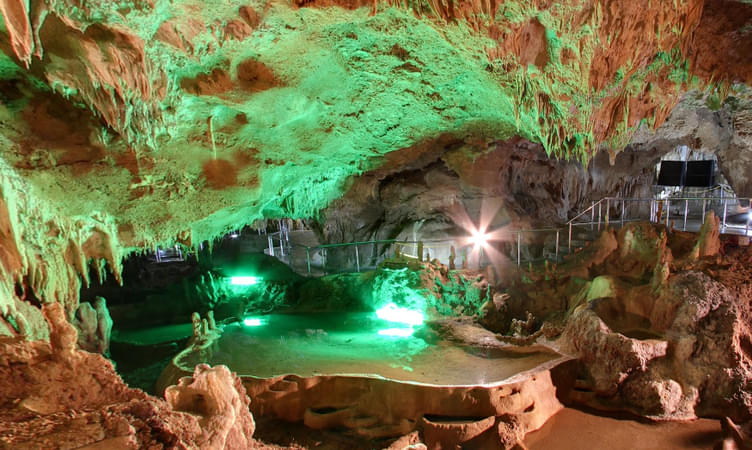
Best of Osaka
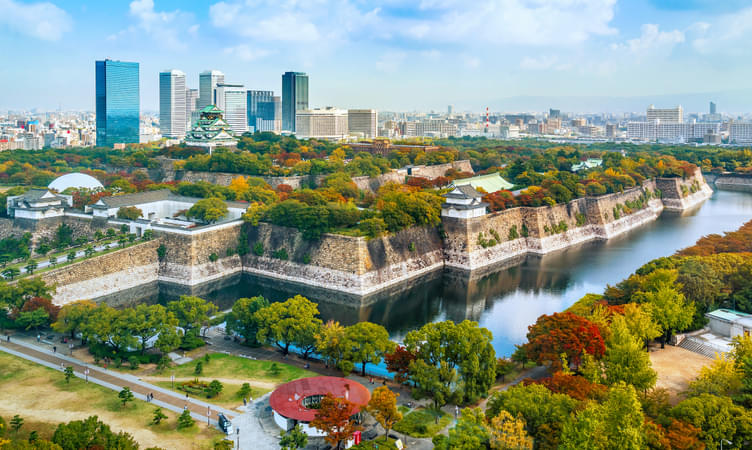
Hiroshima Peace Memorial Park
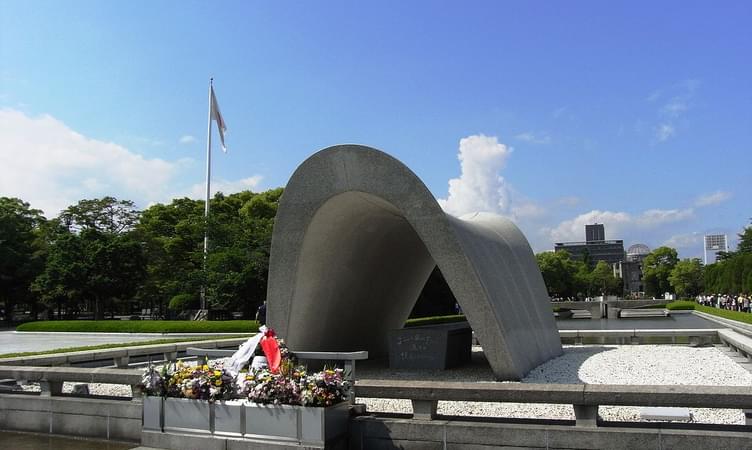
The Island Shrine Of Itsukushima
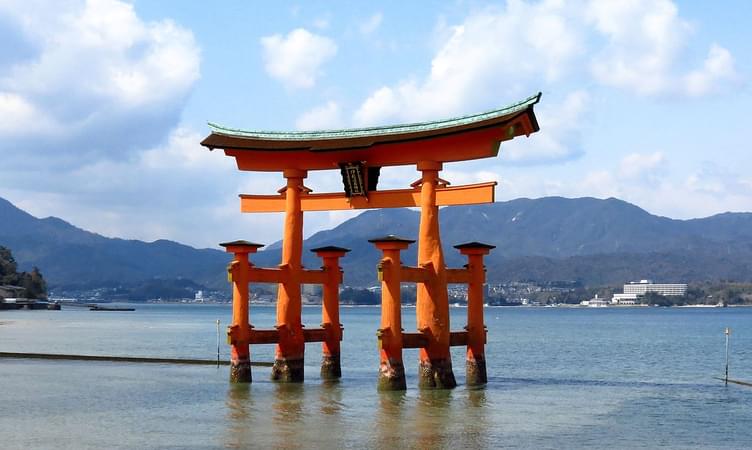
The Atsuta Shrine

Video Game Bar Space Station In Osaka
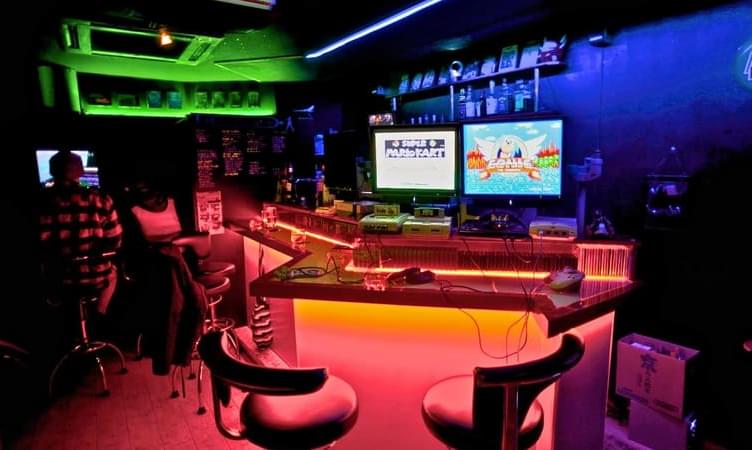
People Also Ask About Japan
Which are the best things to do in japan, which are the best cities to visit in japan, is japan expensive to visit, what is the best time to visit japan, what should i avoid in japan, how many days is enough in tokyo.
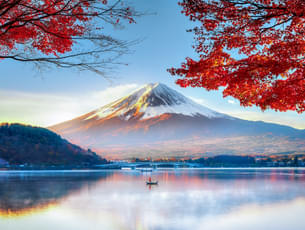
Trending in Japan
Sightseeing tours in japan.
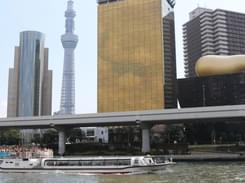
Tours in Japan
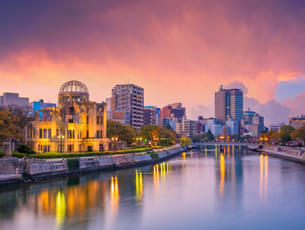
Japan Top Attractions
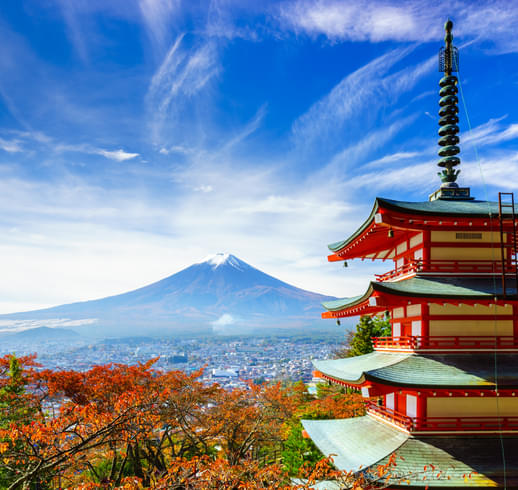
Visitors traverse the approximately 4-kilometer path through a forested mountainside adorned with thousands of torii gates, creating a mesmerizing and vibrant tunnel-like experience. The main shrine complex at the summit offers panoramic views of Kyoto city. Fushimi Inari Taisha is not only a spiritual haven but also a cultural treasure, attracting millions of tourists annually. The shrine represents a unique blend of natural beauty, religious significance, and community involvement, making it a must-visit destination for those seeking a profound cultural experience in Japan.
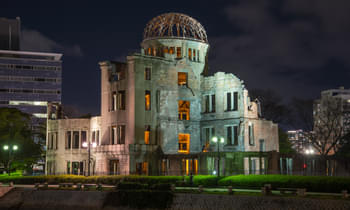
The Atomic Bomb Dome in Hiroshima, Japan, is a haunting testament to the catastrophic events of August 6, 1945. Originally the Hiroshima Prefectural Industrial Promotion Hall, it now stands as a skeletal ruin, preserved as a symbol of peace and a reminder of the devastating consequences of nuclear warfare. Designated a UNESCO World Heritage site, the dome serves as a poignant memorial, urging visitors to reflect on the enduring importance of promoting a world free from the threat of atomic weapons.
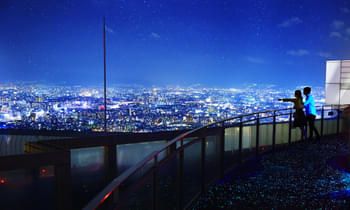
Inside, state-of-the-art observation decks offer panoramic views, allowing visitors to marvel at the beauty of their surroundings from various vantage points. The floating garden observatory often incorporates cutting-edge technology, such as augmented reality displays or interactive exhibits, enhancing the overall visitor experience. This concept represents a futuristic approach to architecture, encouraging a deeper connection between people and the natural world while promoting sustainable design principles. The floating garden observatory stands as a symbol of innovation, blending the boundaries between urban spaces and the serenity of nature.
More Japan Attractions
Japan travel guides.
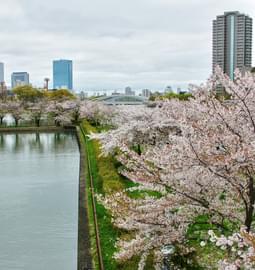
Japan Reviews

Popular Nearby Places Around Japan
More things to do in japan, more on japan tourism, popular related destinations.
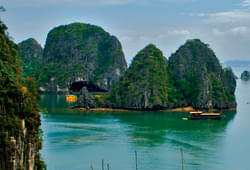
Best Domestic Packages
Best international packages, domestic honeymoon packages, international honeymoon packages, places to visit in india, international places to visit, things to do in india, international things to do, popular on thrillophilia.
- We assure the privacy of your contact data.
- This data will only be used by our team to contact you and no other purposes.
Your enquiry has been received successfully. Our destination expert will reach out to you soon!
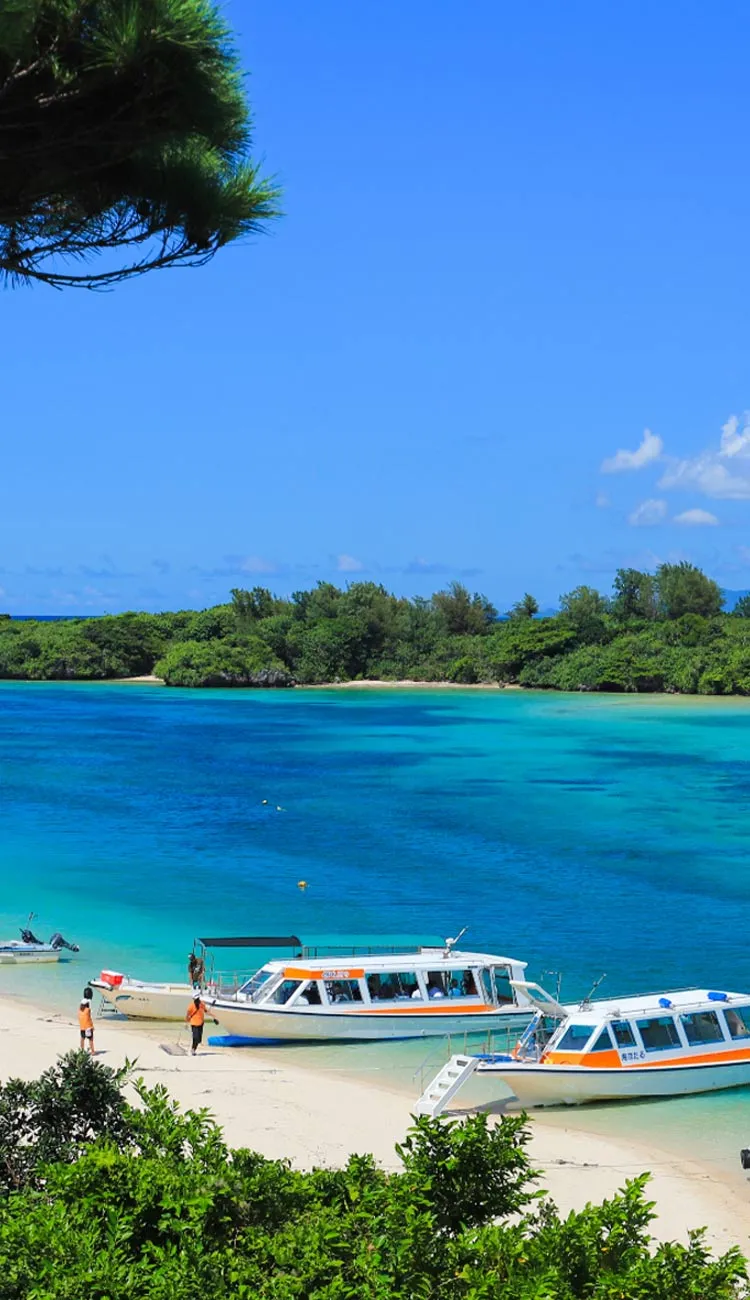
- Okinawa at a Glance
- World Heritage
- Traditional Culture
- Food & Longevity
- Wonderful Nature
- Beach information
- Okinawa Main Island
- Kume Island
- Kerama Islands
- Miyako Islands
- Yaeyama Islands
- Nature & Wildlife
- Heritage & Tradition
- Flavors of Okinawa
- Shopping & Relaxation
- Activities & Experiences
- Okinawa Life
- Recommended Trips
- Getting to Okinawa
- Getting Around
- Useful Information
- When to Visit
- Accommodations
Experience the raw natural beauty and rich cultural heritage of Okinawa, from the castle ruins and heritage sites of the main island to the secluded coves, vibrant reefs, and clear waters of the Kerama and Yaeyama islands. Discover Okinawa at your own pace, island by island, moment by moment.
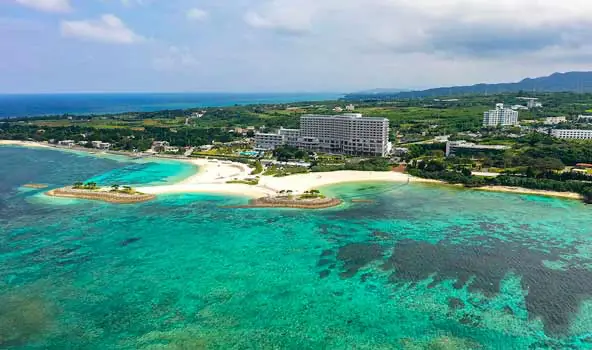
DESTINATIONS
The islands of Okinawa are as diverse as they are plentiful, stretching from the main island in the north to Ishigaki and beyond in the south. There are 160 islands large and small, inhabited and uninhabited. Authentic Okinawan experiences await, with cultural treasures, outdoor adventure, and world-class diving just some of the draws. Choose the perfect destination for your unforgettable Okinawa experience.
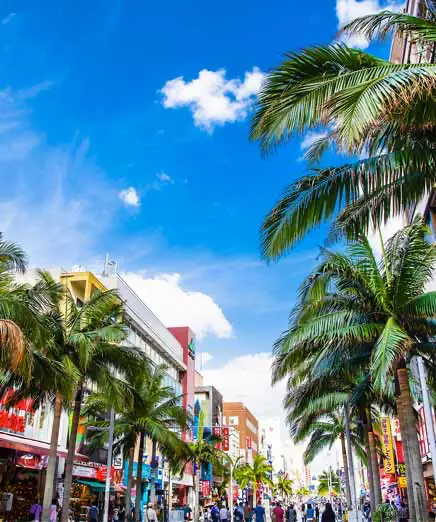
TRAVEL INSPIRATION
With so much to see and do across 160 different islands, deciding what to do is not always easy. Browse recommended trips, new and trending attractions, travel stories and guides. Be inspired by Okinawa.
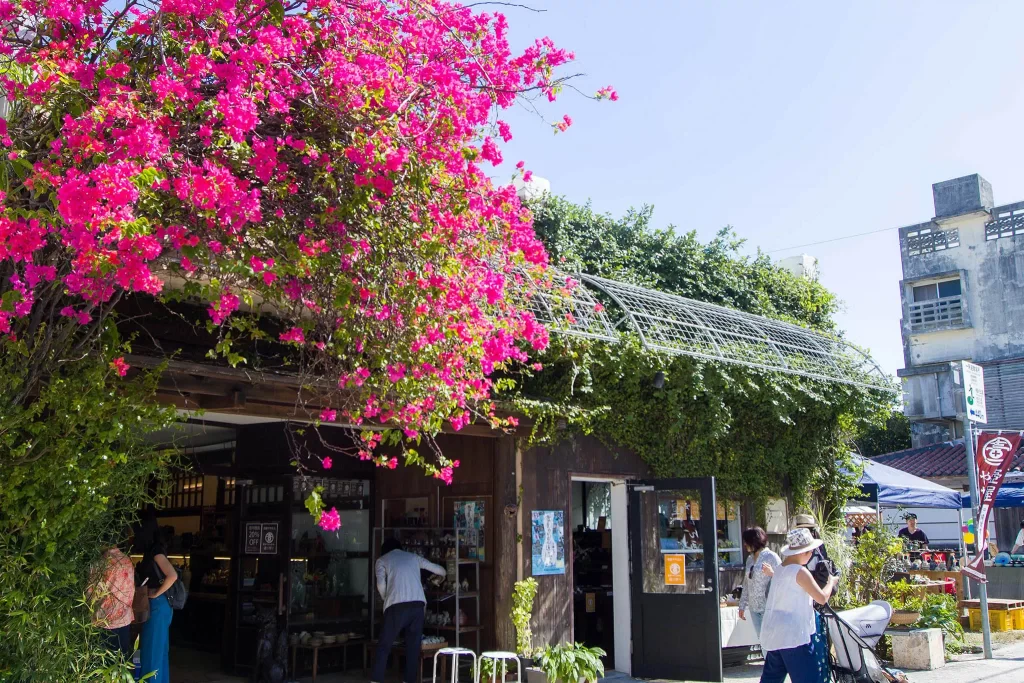
PLAN YOUR TRIP
When to go, how to get here, and how to get around the beautiful islands of Okinawa. Everything you need to know to plan an unforgettable trip.
News & Media
Keep up to date with the latest news and announcements, from updates on restoration work and notifications of traffic restrictions to new openings, temporary closures, and special events.
POPULAR TAGS
- Music & Performing Arts
- Seasonal Flowers
- Remote Islands
- Illuminations
- Main Island
- Firework Displays
- Marine Activities
- Family Friendly
- Food & Drink
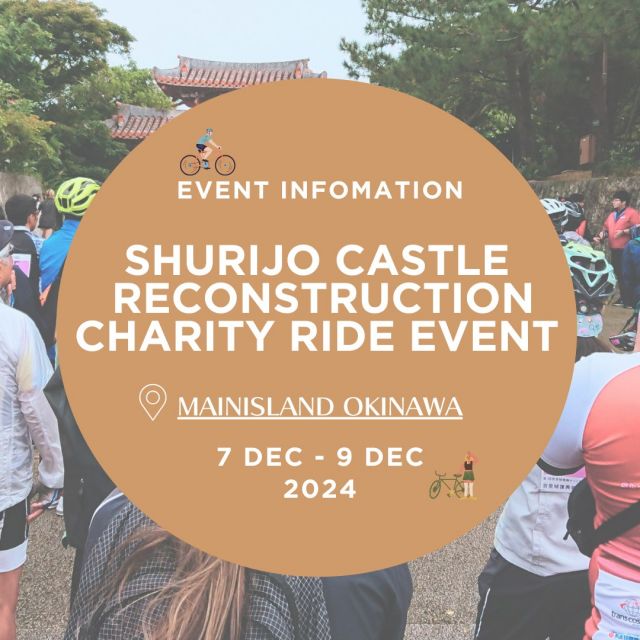

16 Japanese Cities To Visit Besides Tokyo And Kyoto
- Osaka: Experience incredible nightlife and outstanding cuisine in this seaside city known for its energetic atmosphere and delicious food.
- Naoshima: Discover the art island with its galleries, sculptures, and installations, and enjoy the tranquil atmosphere and sea views.
- Himeji: Visit the UNESCO World Heritage Site Himeji-jo castle and explore the picturesque Mount Shosha and Kokoen garden for a diverse cultural experience.
As Japan finally opens its borders to eager travelers after one of the strictest lockdowns that the world has seen, most itineraries focus on the shopping districts of Tokyo and the Buddhist temples of Kyoto. Occasionally, the street food of Osaka might make it to the list.
Few consider venturing beyond the big cities of Tokyo and Kyoto, but for those who dare try, thrilling adventures await in Japan's best cities. From former homes of samurai warriors and current cities of geishas, hot springs spas, traditional architecture, and ski mountains — these cities deserve a spot on everyone’s Japanese bucket list.
UPDATE: 2023/10/09 19:32 EST BY MARIA BOU INK
Japan's beauty is not limited to Tokyo and Kyoto. The country is a hub of wonderful towns that are worth a trip. Therefore, this list was updated to include two of the best cities to visit in Japan besides Tokyo and Kyoto.
Related: Beautiful Tourist Pics Showcasing The Best Things Japan Is Known For
If tourists want to sample some of the greatest cuisine and beverages Japan has to offer, they should head over to Osaka , a seaside city famed for its incredible nightlife and outstanding cuisine. Tokyo's big-city energy is also present here but on a little lesser scale. This way, tourists can visit cities in Japan other than Tokyo and Kyoto while having the same vibes and escaping the crowds. Tourists are recommended to visit the Osaka Castle and Park in between all of their eating and exploring. It is one of the most well-known sights in Japan and is definitely worth visiting.
- Some attractions: Tempozan Ferris Wheel, Universal Studio Japan, Osaka Aquarium Kaiyukan, etc.
The island of Naoshima, which is reachable via ferry, is a wonderful location. The area is referred to as the art island, and tourists may find galleries, sculptures, and installations everywhere they go, especially if they stay at the upscale Benesse House, which serves as both a hotel and a museum of modern art. On the island, there are two towns, both of which include charming stores and little restaurants. There are also sea views everywhere, which enhances the tranquil atmosphere.
- Some attractions: The Yellow Pumpkin, Chichu Art Museum, Naoshima Public Bath I Love Yu, etc.
Home to a UNESCO World Heritage Site castle , Himeji is worth a special trip for the Himeji-jo castle alone. Widely considered to be the finest example of 17th-century feudal-era Japanese architecture that still survives, Himeji-jo may be the reason tourists visit this city in Japan, but Himeji gives them several reasons to stay. On the outskirts of the city is the picturesque Mount Shosha, with a Buddhist temple at its peak. And if a hike isn’t someone’s cup of tea, tourists can spend a day at the Kokoen garden, which is made of nine walled gardens connected by a network of streams, waterfalls, and ponds and sits on the former feudal lord’s residence.
- Some attractions: Himeji Castle, Engyoji, Himeji Central Park, etc.
Related: Three Days In Japan: 10 Cities You Can Explore In Only 72 Hours
Matsue’s location on a peninsula by the Sea of Japan with Lake Shinji on its west and Lake Nakaumi on the east has given the city another name: The City of Water. While the water bodies that surround it have given Matsue its second name, there are also water bodies within the city. Canals with boat tours for tourists flow through the city, old samurai houses flank its streets, and Matsue is home to one of only twelve medieval castles that are preserved in their original state in Japan. But that’s not all: the city has long attracted curious travelers with its rich myths and legends related to Matsue being the place where Japanese gods descend.
- Some attractions: Matsue-jō Castle, Yuushien, Yaegaki Shrine, etc.
Yokohama is the second-largest Japanese city and the first to have opened its ports to the world at the end of the Edo Period. The port city quickly transformed from a small fishing village to a major city when foreign trade introduced new cultures to the old Japanese traditions of the village. As a result, Yokohama offers a contrast between old and new, and travelers can explore the streets of Yokohama to see the Western influence on the Japanese way of life everywhere. Tourists can visit traditional Japanese gardens and tea rooms, ramen and instant cup noodle museums, giant ferry wheels reminiscent of the London Eye, and one of the largest Chinatowns in the whole country.
- Some attractions: Shin Yokohama Ramen Museum, Yokohama Chinatown, Yokohama Cosmoworld, etc.
For those who like the crowds of Tokyo but wish for a city just a tad more quite than the Japanese capital, Fukuoka’s contemporary attractions make it the ideal city. Fukuoka is Japan’s eighth most populous city and balances urban life with the natural beauty that is synonymous with Japan. The port city is filled with hot springs, hike trails, tea plantations, and sake breweries. But the best part, perhaps, is the fact that Fukuoka happens to be the city that invented tonkatsu ramen , so for those who’d like to slurp their way through Japan via its ramen, Fukuoka has to be the starting place.
- Some attractions: Ohori Park, Marine World, Uminonakamichi Seaside Park, etc.
Hokkaido is an island region of Japan that is known for its hot springs, ski mountains, and volcanoes. Hakodate — located on the island’s southern tip — is one of the largest cities in Hokkaido and was voted Japan’s most attractive city in 2015. Visitors can hike to Mount Hakodate and enjoy spectacular views of the city surrounded by the sea, soak in the hot springs, go down ski slopes, or take in the views of the Mount Komagatake volcano from the lakes of Onuma Park. The best part of the port city, however, is its food. Surrounded by the sea, Hakodate is famous for its freshly-caught seafood, and the Hakodate Morning Market is the best place to enjoy it.
- Some attractions: Goryokaku, Goryokaku Tower, Old Public Hall of Hakodate Ward, etc.
Related: After Cherry Blossom Season, Here Are 10 Unique Activities To Enjoy In Japan This Fall
Kyoto isn’t the only city in Japan famous for its Buddhist monasteries and temples. Formerly known as Heijo-Kyo , Nara was once Japan’s capital city and is now home to three UNESCO World Heritage Sites . The Horyuji Area of Nara was the first to be on the list and includes 48 Buddhist sites, all of which are of immense importance to the Japanese culture and religion. Also on the list are areas with several temples and historical monuments from ancient times when Nara was still the capital, as well as pilgrimage routes and sites on the Kii Mountain. Tourists can end their tour of the temples and spiritual sites of Nara with a friendly visit to greet the deers at the Nara Park or stroll through Imaicho — a merchant town preserved from the Edo period that will take everyone back in time.
- Some attractions: Today-ji, Nara Park, Kasuga Taisha Shrine, etc.
Nagasaki is most often associated with the atomic bomb and the tragedy that followed. Still, the city has a lot more to offer beyond the Atomic Bomb Museum and the Nagasaki Peace Park, which attract most tourists. Not only is the city home to several stunning islands off its coast, but Nagasaki has consistently ranked on top of the list of places with the best night views in Japan . Travelers can hop onto a ropeway to the peak of Mount Inasa and enjoy spectacular views of Nagasaki as it lights up after sunset. More surprisingly, however, Japan’s first and oldest Chinatown happens to be in Nagasaki, and it has continued to serve Japanese-Chinese fusion foods since the 17th century.
- S ome attractions: Nagasaki Atomic Bomb Museum, Peace Park, Glover Garden, etc.
For those whose idea of a holiday in Japan includes spending hours soaking in hot water springs, Beppu is the place to be. Beppu’s gushes of hot spring water rank second highest in the world and the highest in Japan, gushing more than 100,000 liters of water each minute through thousands of hot springs. Not only does the abundance of hot springs make Beppu the Onsen City of Japan, but Beppu also has several boiling ponds known as Jigoku or hell. Locals use these Jigoku ponds for cooking food as well, giving rise to a culinary custom known as Jigoku-Mushi, or hell-steaming, that is peculiar to Beppu.
- Some attractions: Kannawa Hot Springs, Beppu Ropeway, Shidaka Lake, etc.
Takayama is several things: A city surrounded by the Japanese Alps, Japan’s ski destination, home to bustling morning markets and festivals dating back to the 1600s, and a place where Japanese tradition flourishes through some of the country’s most beautifully preserved villages. Takayama’s Sanmachi area, in particular, houses preserved thatched-roof houses from which antique dealers and artisans sell their wares, and hidden cafes and brewers dish out hot coffees and icy sake to any visitors who manage to spot them.
- Some attractions: Takayama Jinya, Hida Folk Village, Shinhotaka Ropeway, etc.
The city that served as the seat of the second most powerful feudal clan in Japan during the Edo period, Kanazawa has always been a place of great cultural significance in Japan. More importantly, Kanazawa was the second largest city after Kyoto, which managed to remain safe from the bombings of World War II. As a result, most of the city’s old castles, gardens, samurai, and geisha districts have survived the test of time. That being said, Kanazawa also houses the iconic 21st Century Museum of Contemporary Art and is the city where traditional teahouses and crafts, including Kaga-yuzen (a silk dying technique), ohi ware (tea ceremony bowls), and gold leaf production continue to prosper.
- Some attractions: Kenroku-en, Higashi Chaya District, Myouryouji, etc.
Related: Unwind & Relax In Japan: The Best Onsens To Soothe Your Soul
Shirakawa-go
Shirakawa-go is not a city but a traditional Japanese alpine village stuck in time . It is part of a national park and is a great place to visit to see the way things used to be in Japan. Here (and its sister village Gokayama), visitors may feel like they are living in the world of the 2003 movie, The Last Samurai starring Tom Cruise (although it was actually filmed in New Zealand).
These traditional villages are UNESCO World Heritage Listed and are a great example of how Japan works to preserve its heritage.
- Some attractions: Wada House, Gassho-zukuri Minkaen, Myozenji, etc.
Hiroshima is one of only two cities to ever be hit with a nuclear bomb . It is also a testament to how cities can bounce back from destruction, being today a thriving city of over one million people. It was founded in 1589 as a castle town but transformed into a major industrial hub (which made it a target for nuclear bombing).
Today visitors can see the UNESCO World Heritage Listed Hiroshima Peace Memorial and commemorate the bombing wishing for such destruction to never again return to this planet.
- Some attractions: Peace Memorial Park, Hiroshima Peace Memorial Museum, Atomic Bomb Dome, etc.
Sapporo is the capital of Japan's northern island of Hokkaido. It is the largest city north of Tokyo and is considered the cultural and economic center of Hokkaido. The city hosted the 1972 Winter Olympics and is one of the best places in Japan to enjoy the winter season. Come in early February and attend the Sapporo Snow Festival. The festival draws over 2 million visitors from far and wide. Additionally, Sapporo is home to the only beer museum in Japan - the Sapporo Beer Museum.
- Some attractions: Hokkaido Jingu, Moerenuma Park, Sapporo Beer Museum, etc.
Naha is the capital of the Okinawa Prefecture of Japan ( Okinawa is Japan's fifth major island ). The city has a population of around 300,000 and enjoys a humid subtropical climate (quite the opposite of Hokkaido's Sapporo). It is a stunning city and the gateway to Okinawa Island (which Americans may recall from the costly American invasion of the islands in World War Two). One of the top attractions in the city is the restored and rebuilt Shuri Castle (a former royal palace of the Ryukyu Kingdom).
- Some attractions: Shuri Castle, Naminoue Shrine, Okinawa Prefectural Museum & Art Museum, etc.
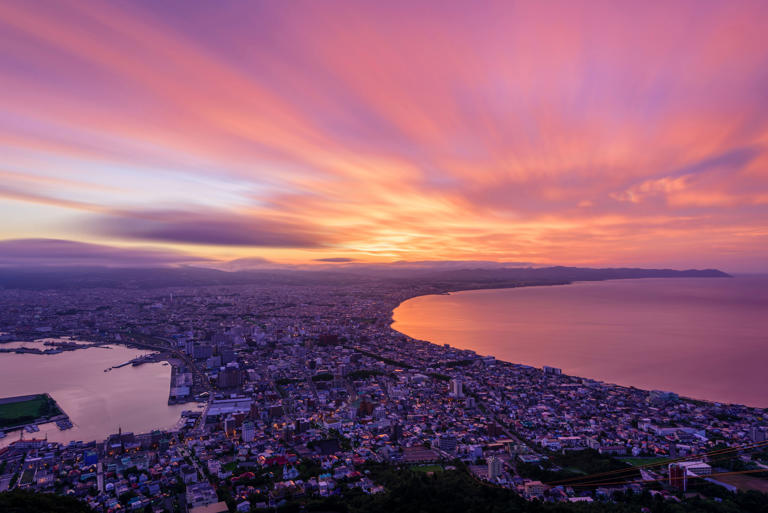

How Affordable Is Japan for U.S. Travelers Right Now, Really?
From hotel upgrades to first-class bullet train rides and multicourse meals, now is the time for u.s. travelers to splurge in japan, while the yen is the weakest it has been in more than three decades..
- Copy Link copied

Go ahead, get an extra pack of sushi.
Nedikusnedi/Shutterstock
Japan is on sale, and there is no better time to visit to take advantage of the value offered than now. The yen is the weakest it has been in 34 years; it’s weakened by about 50 percent against the U.S. dollar since the pre-pandemic era. Not surprisingly, tourism is booming. In March 2024, more than 3 million inbound tourists arrived in Japan, breaking a record.
As of press time, one U.S. dollar is equivalent to about 156 Japanese yen; five years ago, it was hovering closer to 100 Japanese yen. (It’s worth noting that currency exchange rates fluctuate frequently, so all conversions in this story were accurate as of the publication date but may be different at the time of reading.) Why is the yen so weak? Among the reasons is that “the interest-rate difference between cash money in Japan [zero percent] and the U.S. [around 5 percent with the best mutual funds or deposits] is … causing the yen to trade low,” explains Frederick Gundlach, a U.S. CPA and tax preparer currently in Narita, Japan.
So, how can you make the most of your travels in Japan? Now is the time to upgrade your hotel room, travel on the first-class green car on the country’s famed bullet train, and splurge on expensive meals. For instance, if you splash out for an elaborate sushi dinner with a 30,000-yen price tag, that is the equivalent of just under $200. In the past, the same $200 would have been worth only about 20,000 yen.
Shop till you drop
The deals are so good that travelers are purchasing suitcases in Japan to carry back all of their shopping, including knives, clothing, and accessories from fashion labels such as Issey Miyake and Yohji Yamamoto. Many larger department stores like Isetan and Takashimaya and electronics shops like Bic Camera are duty-free, which means you can shop without taxes while traveling around Japan, not just at the airport before your return flight. Be sure to bring your passport with you, and look for the white-and-red “Japan. Tax-free shop” signs. Additionally, many department stores or electronics shops will give foreign passport holders a discount card at the information desk, usually for about 5 percent off, but sometimes more. After all of your shopping is completed, take your receipts to the duty-free counter in the department store and get the tax back: up to 10 percent, depending on what you are purchasing.

Look for the red tax-free shop signs to shop duty-free while out and about in Japan.
MMpai/Shutterstock
Hotel rates
Hotel rates for Japanese-owned hotels have not fluctuated much recently—and that’s a good thing. The Tokyo Station Hotel and Imperial Hotel Tokyo currently are in the 60,000 to 80,000 yen per night ($380 to $500) range, which is comparable to their rates before the yen weakened considerably, but the dollar equivalent is, of course, lower. But some other properties, namely international hotel brands, have tripled their rates as tourism demand has increased at record rates. The Aman Tokyo , for instance, is currently about 300,000 yen ($1,900) per night. In 2018, it cost about 110,000 yen.
For more budget-oriented travelers, however, Japan is a total bargain right now. Basic business hotels with small rooms and private bathrooms that are conveniently near major train stations start at about 7,500 yen per night, which is less than $50.
Train upgrades
A round-trip shinkansen bullet train to Kyoto from Tokyo is currently 26,000 yen ($165) or 38,000 yen ($240) for the first-class green car. Note that the price for the JR rail pass has recently increased , but it still poses a good value depending on how far one travels. The pass allows unlimited travel on Japan Rail trains, including shinkansen bullet trains. The basic seven-day JR Pass is 50,000 yen ($320); formerly it was 30,000 yen. The seven-day Green Car Pass is 70,000 yen ($445)—not a bad deal for a week of first-class bullet train rides.

When a bowl of ramen will only set you back about $6.50, it’s hard to resist.
Photo by Volkan Kacmaz/Unsplash
Meals at a minimum
Breakfast at a kissaten coffee shop with coffee, toast, and a boiled egg is about one coin or 500 yen ($3). A bowl of ramen goes for about 1,000 yen ($6.50). Add potstickers and an ice-cold beer, and the bill will be 2,000 yen ($13). Gundlach reminds travelers that “there is no tipping in Japan.”
Attractions and skiing
Tickets for the contemporary Mori Art Museum or the fine arts institute the Nezu Museum (both located in Tokyo) are 1,600 yen ($10). Entrance into the interactive digital art experience teamLab Borderless at the new Azabudai Hills urban village is 3,800 yen ($24), to get a sense of how much it will cost to soak up some culture in Japan.
For skiers and snowboarders, the renowned Niseko Village ski resort on the northern island of Hokkaido sells daily ski passes starting at 9,500 yen, a bargain at only $60. At Hakuba Valley in Nagano, the daily passes start at 8,500 yen ($55). Note that food at ski resorts is pricier than in the city centers, as are hotel rooms. But for some of the best powder in the world, it is still a bargain compared to, say, ski resorts in the United States that charge upwards of $100 and $200 for a day pass.
How long will the weak yen last?
Gundlach said he can’t forecast how long the yen will remain weak. But even if you aren’t traveling to Japan in the immediate future, you can still head to a foreign exchange office or a bank that exchanges currencies to buy some yen now; later, you can use it for on-the-ground expenses. With the weak yen, U.S. visitors can extend their stay for a few extra days, travel further, and explore more of the country. So, there’s no better time to visit Japan than the present.

STARS AND STRIPES
- Middle East
- Asia-Pacific
- Map Of Memorials
- Entertainment
- - Video Games
- Europe Travel
- - Quick Trips
- - After Hours
- Pacific Travel
- The Meat and Potatoes of Life
- U.S. Travel
- Storm Tracker
- Rewards for readers
- Get Stripes
- Stripes Lite
- Archives/Library
- Special Publications
- Mobile Apps
- Email Newsletters
- Digital Access
- Home Delivery
- Marine Corps
- Coast Guard
- Space Force
- Archive Photo Of The Day
- - Military Matters
- - Force For Hire
- Out of Uniform
- Communities
- Stripes Europe
- Stripes Guam
- Stripes Japan
- Stripes Korea
- Stripes Okinawa
- Our Other Websites
- In Memoriam
- Month of the Military Child
- Best of Germany
- Best of the Pacific
- Letters to Santa
VIDEO: Exploring Japan and cooling off at Polar Science Museum in Tachikawa
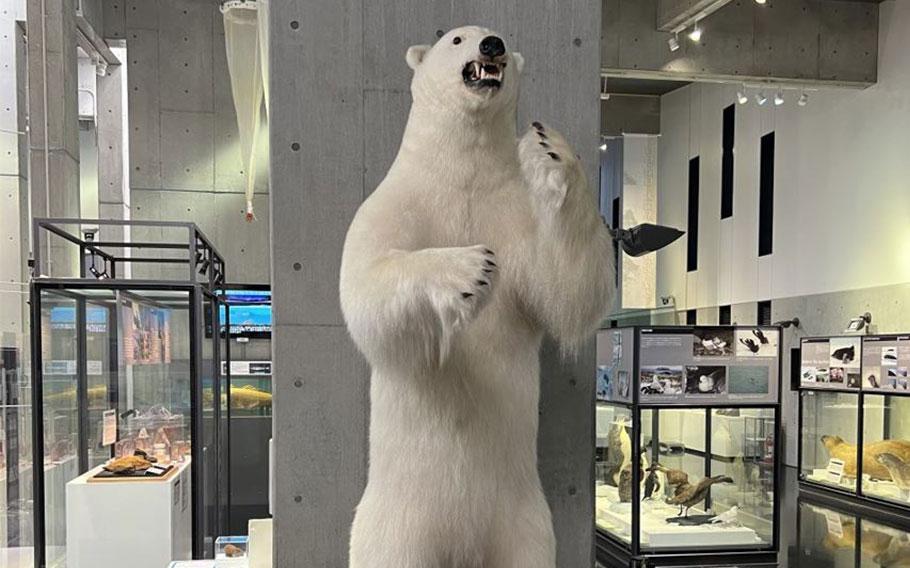
(Photos and video by Luis Samayoa)
If you ever wondered what life is like in Antarctica, the Polar Science Museum in Tachikawa is a great place to visit.
The exhibit inside the museum is based on scientific research done by the Japanese Survey Team in Showa Base Antarctica, and includes Artic equipment, meteors that have fallen to Earth, and replicas of species from the region. Some of the replicas include Polar Bears, penguins, and various species of birds.
Some of the bigger exhibits inside include the track snowmobile and sled that was used back in 1968 during an exhibition from Showa Station to the South Pole. The exhibit also has photos documenting the team’s travels. One of the things I really enjoyed were the interactive stations where you could view things under microscopes.
In the back of the museum, there is a small projection room theater where you can sit, relax and watch the Aurora Australis, better known as the Southern Lights. The 10-minute movie is something I highly recommend (Note: No cameras or recordings are allowed). It’s pretty cool.
But the coolest exhibit, literally, is a small box near the museum’s entrance that contains an actual chunk of ice from Antarctica which was packed up by the survey team and sent to Japan. After a bike ride in very hot weather, I had my hands on this chunk of ice for a while. The commute itself from East Gate at Yokota Air Base is around six kilometers, and it took me only 35 minutes.
So, if you are looking to learn a little about life in Antarctica and the work being done by this Japanese research team, the Polar Science Museum is a great place to check out. It will only take you an hour or so to see everything and it won’t cost you a dime… or yen.
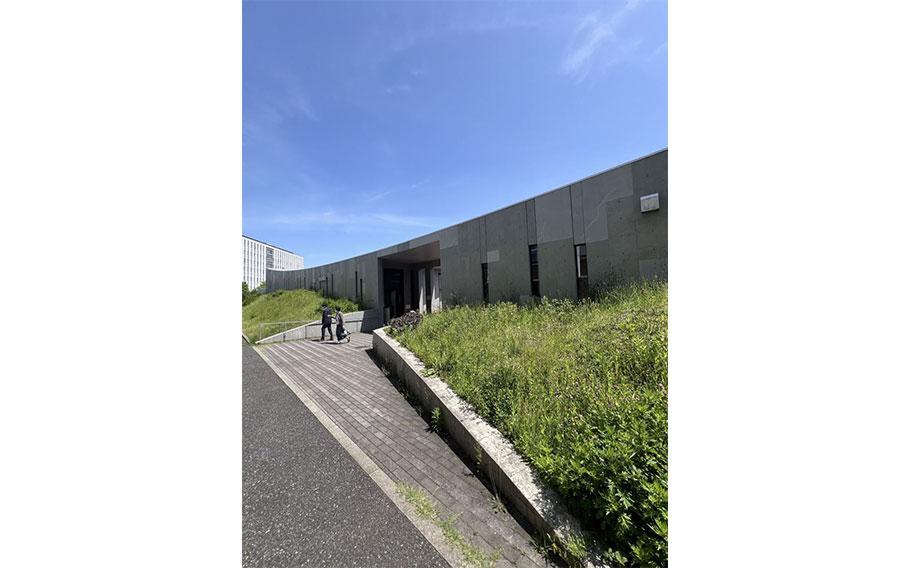
(Ice-touching station)
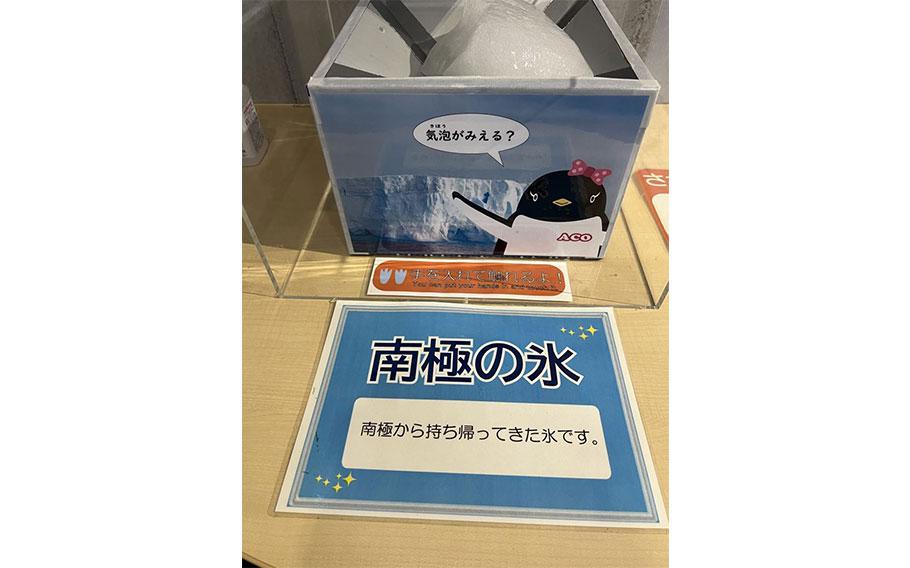
(stamp machine)

(sled display)
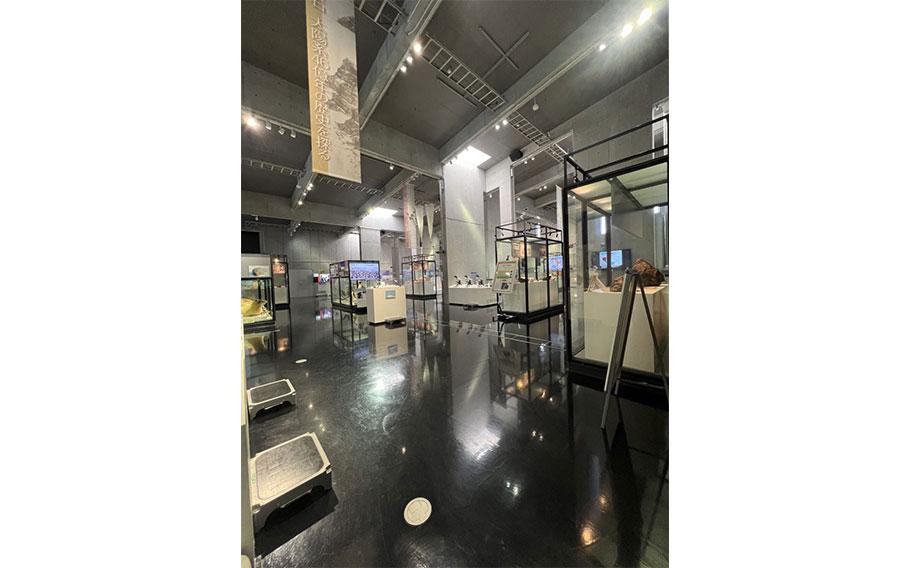
(Animal displays)
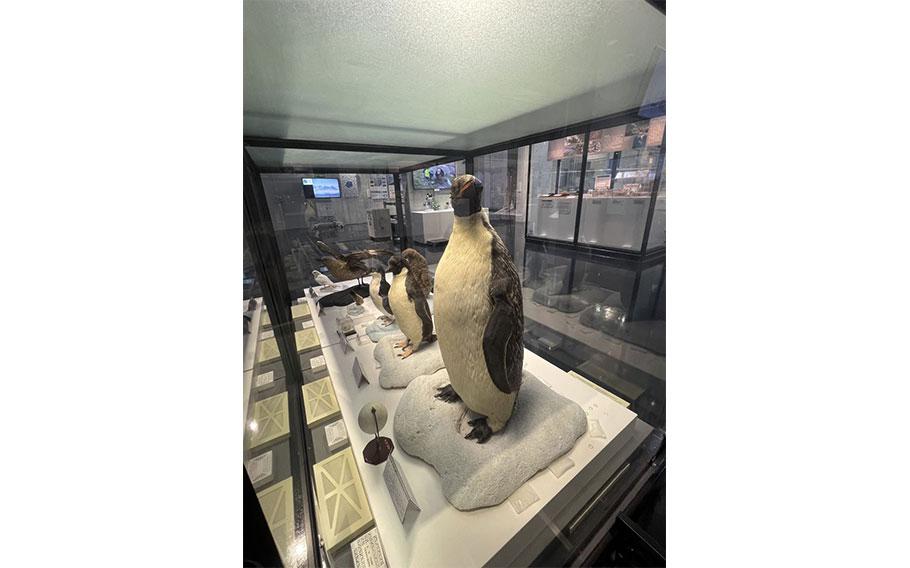
(Penguin display)
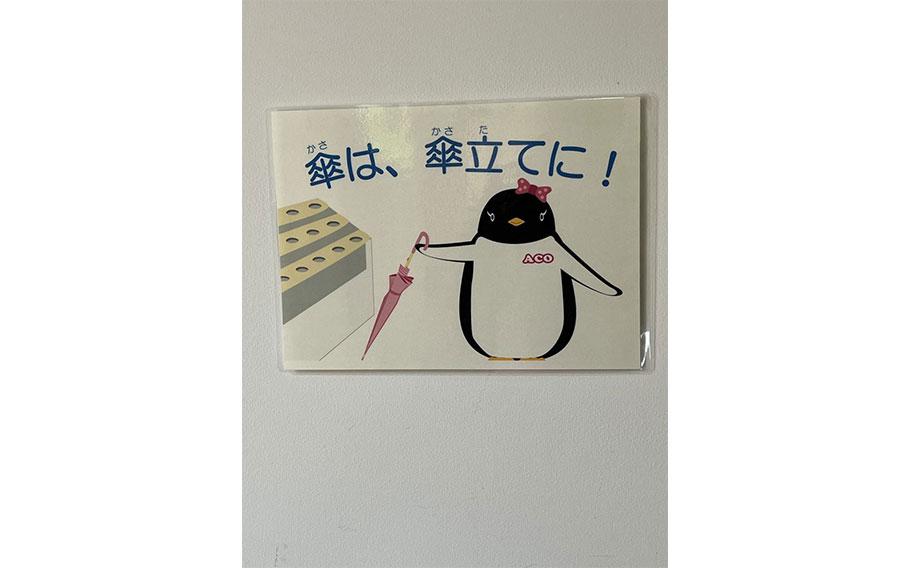
(Penguin sign)
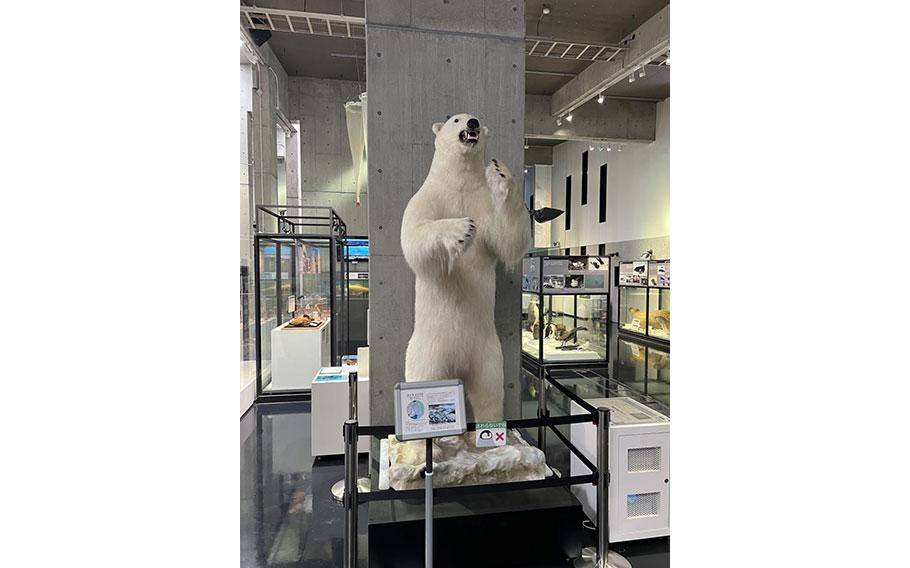
(Polar bear)
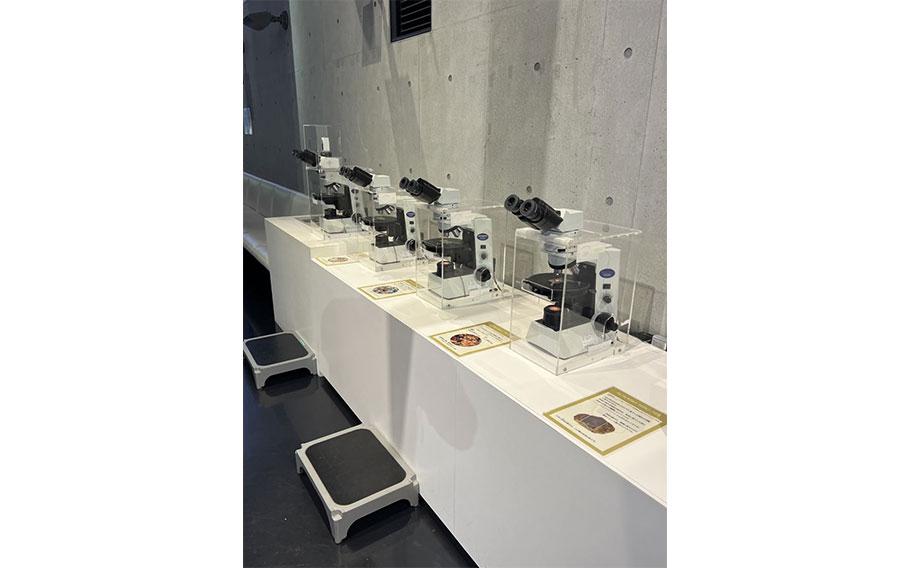
(Microscope)
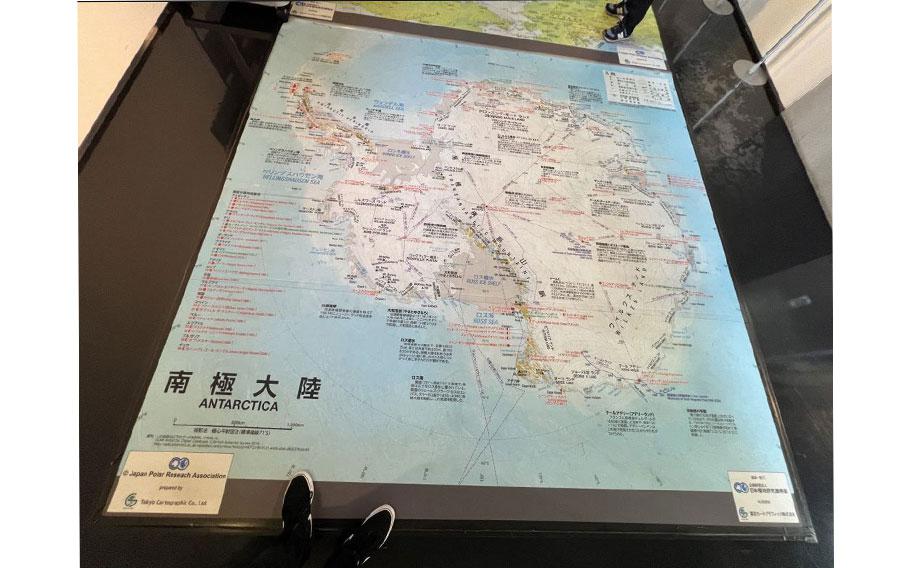
(Boat models)
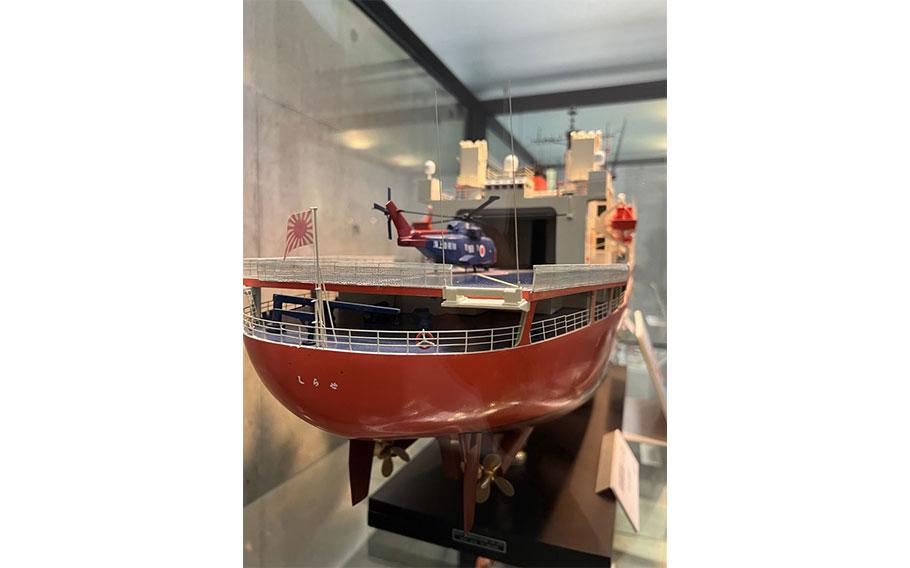
(Boat model)

(Track vehicle)
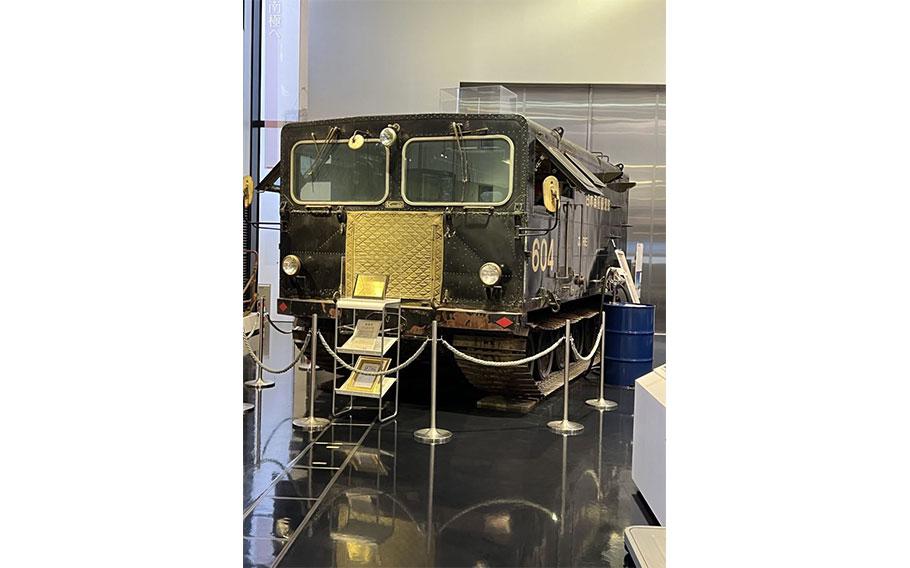
THINGS TO KNOW
Address: 10-3 Midoricho, Tachikawa, Tokyo 190-0014
Hours: 10 a.m. – 5 p.m. Tues., - Sat. Closed Sundays and Mondays.
Parking: Free but limited it is recommended to use public transportation or a bike
Website: National Institute of Polar Research, Antarctic and Arctic Science Museum (nipr.ac.jp)
Notes: The exhibits are in Japanese so use Google Translator: It is needed inside; the only restriction is no phones allowed in the projection room.
related stories
- Tachikawa a city away from the city in Japan
The best stories from the Pacific, in your inbox
Sign up for our weekly newsletter of articles from Japan, Korea, Guam, and Okinawa with travel tips, restaurant reviews, recipes, community and event news, and more.
Sign Up Now
- Media & Industry
- Meetings & Events
- Select Language 简体中文 繁體中文(香港) 繁體中文(臺灣) India (English) Bahasa Indonesia 한국어 ภาษาไทย Tiếng Việt Singapore (English) Philippines (English) Malaysia (English) Australia/New Zealand (English) Français Deutsch Italiano Español United Kingdom (English) Nordic countries(English) Canada (English) Canada (Français) United States (English) Mexico (español) Português العربية Japan(日本語) Global (English)
- India (English)
- Bahasa Indonesia
- Singapore (English)
- Philippines (English)
- Malaysia (English)
- Australia/New Zealand (English)
- United Kingdom (English)
- Nordic countries(English)
- Canada (English)
- Canada (Français)
- United States (English)
- Mexico (español)
- Global (English)
- Fujiyoshida
- Shimonoseki
- Ishigaki Island
- Miyako Island
- Kerama Island
- Tokyo Island
- Koka & Shigaraki
- Hida Takayama
- Ginza, Nihonbashi
- Beppu & Yufuin (Onsen)
- Ginzan Onsen
- Nagasaki Islands

- Kumano Kodo
- Shikoku Karst
- Amami Oshima
- Hachimantai
- Omihachiman
- Aizuwakamatsu

- Diving in Japan
- Skiing in Japan
- Seasonal Flowers in Japan
- Sustainable Outdoors
- Off the Beaten Track in Japan
- Scenic Spots
- World Heritage
- Home Stays & Farm Stays

- Japanese Gardens
- Japanese Crafts
- Temple Stays
- Heritage Stays
- Festivals and Events
- Theater in Japan
- Japanese Tea Ceremony
- Cultural Experiences in Japan
- Culture in Japan

- Local Cuisine Eastern Japan
- Local Cuisine Western Japan
- Local Street Food
- Japan's Local Ekiben
- Japanese Whisky
- Vegetarian and Vegan Guide
- Sushi in Japan Guide
- Japanese Sake Breweries

- Art Museums
- Architecture
- Performing Arts
- Art Festivals
- Japanese Anime and Comics
- Japanese Ceramics
- Local Crafts

- Scenic Night Views
- Natural Wonders
- Theme Parks
- Samurai & Ninja
- Iconic Architecture

- Wellness Travel in Japan
- Japanese Ryokan Guide
- A Guide to Stargazing in Japan
- Relaxation in Japan
- Forest Bathing (Shinrin-yoku)

- Experiences in Japan
- Enjoy my Japan
- National Parks
- Japan's Local Treasures
- Japan Heritage
- Snow Like No Other
- Wonder Around Japan

- Visa Information
- Getting to Japan
- Airport Access
- COVID-19: Practical Information for Traveling to Japan
- Anime Tourism
- Countryside Stays
- Accessible Tourism
- Hokkaido Great Outdoors
- Scenic World Heritage in Tohoku
- Shikoku’s Nature and Traditions
- Southern Kyushu by Rail

- Traveling by Rail
- How to Travel by Train and Bus
- JR Rail Passes
- Scenic Railways
- Renting a Car
- Sustainable Travel in Japan
- Travel Brochures
- Useful Apps
- Online Reservation Sites
- Eco-friendly Accommodation
- Luxury Accommodations
- Traveling With a Disability
- Hands-free Travel
- How to Book a Certified Tour Guide
- Volunteer Guides
- Tourist Information Center

- Japanese Manners
- Spring in Japan
- Summer in Japan
- Autumn in Japan
- Winter in Japan
- Cherry Blossom Forecast
- Autumn Leaves Forecast

- Japan Visitor Hotline
- Travel Insurance in Japan
- Japan Safe Travel Information
- Accessibility in Japan
- Vegetarian Guide
- Muslim Travelers
- Safety Tips

- JAPAN Monthly Web Magazine
- Arts & Cultures
- Nature & Outdoor
- Festivals & Events
- Insider Blog
- Things to do
- Local Guides
- Food & drink
- Traditional
- Hokuriku Shinetsu

My Favorites
${v.desc | trunc(25)}
Planning a Trip to Japan?
Share your travel photos with us by hashtagging your images with #visitjapanjp
DISCOVER JAPAN DESTINATIONS
- Destinations
From the great white north to the sub-tropical south—and everywhere in between
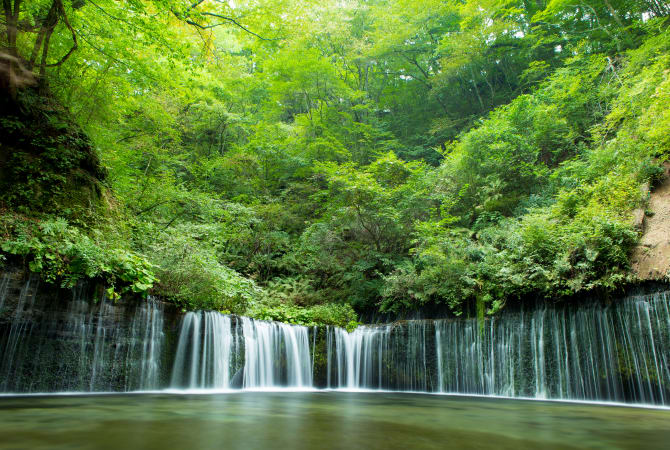
Please Choose Your Language
Browse the JNTO site in one of multiple languages
Niigata's Murakami City: Enjoy Fun Events, Sightseeing, and Local Cuisine!
We use cookies to improve our contents. Check the detail and update your settings here .
We use cookies to improve our services.
For more details, please click here .

- Food & Drink
- Accommodation
- Things To Do
- All the categories
Transportation
- Weather & Seasons
- Long-Term Stay
- Travel Tips
- Event Tickets
- About MATCHA
- Company Profile
- Things To Do in Aichi
- Food & Drink in Aichi
- MATCHA Special Features
The Atsuta revolution that starts with business hotels. "Charichari"'s position connecting attractions

A bicycle share allows you to freely rent and return bicycles at bicycle rental and return points ("Charichari") located in multiple areas. Our company also provides a service called "Charichari" (abbreviated as "Charichari") at four locations in Fukuoka, Nagoya, Tokyo, and Kumamoto, and it is used ...
"Charichari" Nagoya
Business hotel with "Charichari" Report "Excel Inn Nagoya Atsuta"
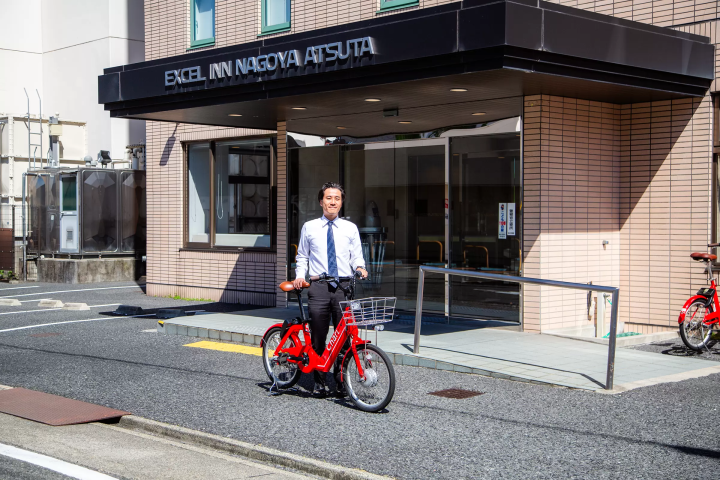
Following on from our last coverage of the Atsuta Miyajuku Kai , we once again visited the business hotel Excel Inn Nagoya Atsuta in Atsuta Ward.
The person who agreed to be interviewed was Mr. Haruki Kariya, manager of Excel Inn Nagoya Atsuta .
Kariya majored in aerospace engineering as a student, then joined a foreign consulting firm where he gained experience consulting for large manufacturing clients. After several years of consulting experience, he was involved in the launch of several venture companies, and then took over the family business as CEO of Excel Inn Co., Ltd., where he still serves as manager, while also running a hotel cleaning business and an IT venture company . He is a truly talented multi-player .

When Mr. Kariya became manager, the business environment was not necessarily smooth sailing and was tough, but thanks to his experience and skills in business improvement, he has since improved the business environment and, in order to increase the appeal of the Atsuta area, is currently undertaking various activities, centered around hotel renovations.
At Excel Inn Nagoya Atsuta, a port for the shared bicycle service " Charichari " (abbreviated as "Charichari"") is neatly installed next to the entrance .
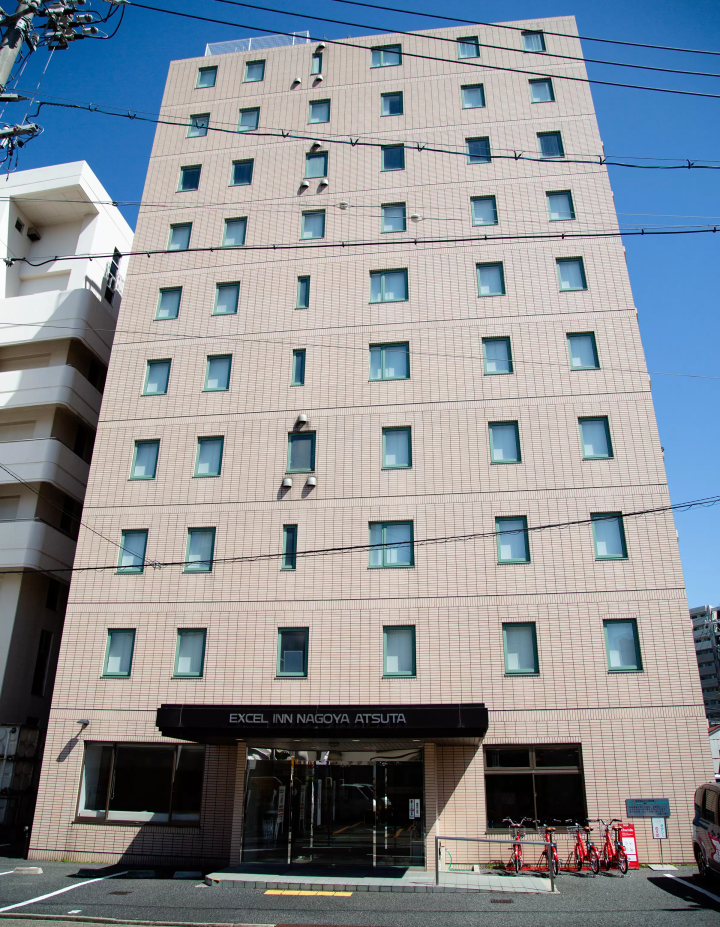
Benefits and unexpected results of having ports
The decision to install a "Charichari" port at Excel Inn Nagoya Atsuta came after a suggestion was made by a sales representative whom Kariya met when he attended a meeting as a member of the Atsuta Miyajuku Association.
By installing a port, ・People who walk around the Tokaido can tour a wider area by bicycle. ・It will be one source of income for the port owner. ・Maintenance will be done by the operating company Charichari, so it will not be a hassle for the port owner. ・The coloring of the port and the bicycles is nice, and it seems that the scenery will be nicer than if it were just a bicycle parking lot. These are the benefits they felt.
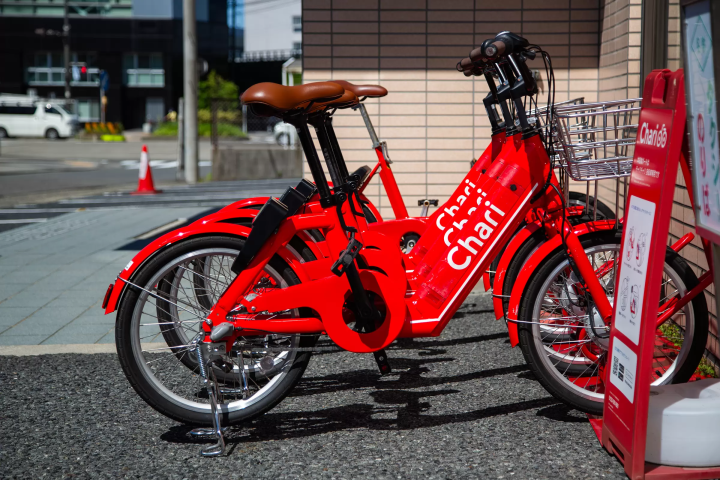
After actually installing the bicycles, they have achieved the effects they expected in that they have become a source of income and require little maintenance . They also say that the neat and tidy view of the bicycles always gives a good impression to the hotel, and that they feel the effects are quite pleasant . Another surprising thing that came as a surprise after the project was set up was that although the bicycle rental port was intended as a means of transportation for tourists, a certain number of people actually use it who live near the hotel, and it appears to be useful for transportation for people living nearby .
Kariya says that there are many people in Atsuta who say, "I want to go, but it's a bit far away.""Charichari" seems to be effective as a form of short-distance mobility.
A clean and relaxing business hotel

Once inside Excel Inn Nagoya Atsuta, you'll be greeted by a clean and bright front desk. When you take the elevator to the guest room area, you'll find a very cozy atmosphere with warm lighting, calming colored walls, and wooden interiors, and the guest rooms continue in the same tone.
It was equipped with a comfortable bed and a desk where I could do business, making it a more than adequate environment for a business hotel room.
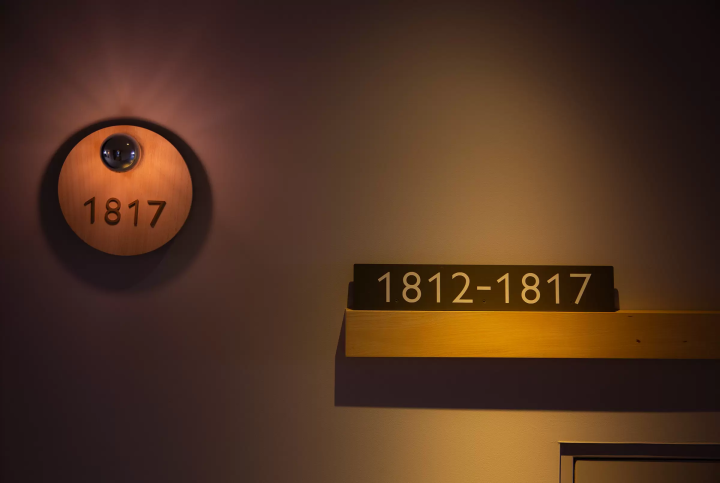
We want to renovate the hotel and revitalize Japan from this business hotel.
When we asked Kariya about the appeal of tourism in Atsuta Ward, he gave us the following answer.
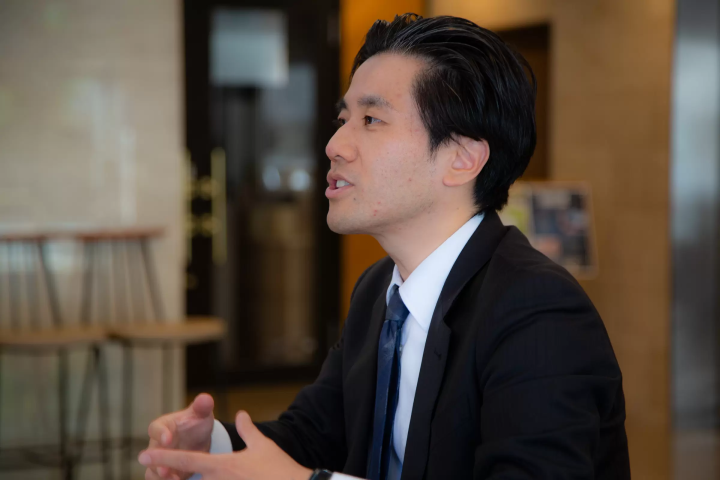
"Atsuta Ward is home to Atsuta Shrine , Atsuta Horaiken , a concert hall within easy reach, and a tourist spot under construction in front of the station ... there are many tourist spots, but there hasn't been much change or innovation in the last 10 years. As the Atsuta Miyajuku Association, we are working to create attractive content, but we are also thinking about how we can promote the attractions of this hotel to users in ways that we can do ourselves. For example, there is an "Night Visit to Atsuta Shrine" where you learn about the history inside the hotel and then go out to visit Atsuta Shrine at night, which is interesting from a different perspective than visiting during the day, and is content that can only be provided by staying overnight.
Although the concept cannot yet be made public, the interior of the hotel will be renovated, and by autumn of 2024 the hotel will be transformed into a place where guests can refresh and unwind while learning about Atsuta's history and charm . However, rather than changing its customer base at all, the hotel will remain a business hotel that is particularly suited to the current large numbers of business users and users involved in manufacturing.
I want to strengthen Excel Inn Nagoya Atsuta as a hotel that people want to visit and stay at, so that people can feel energized and work hard here, and I want to energize Japan . I think that is the way to give back to the manufacturing industry that I was closely involved with during my time as a consultant.
The renovation of Excel Inn Nagoya Atsuta will be one to keep an eye on.
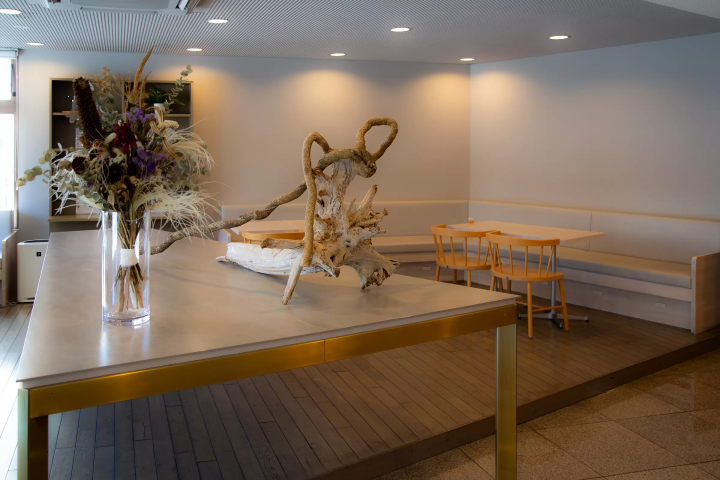
Increase the amount of innovative content available and connect it with "Charichari"
Kariya says that having a venue and funds alone does not guarantee innovative content.
"It's all about people. Innovation doesn't work without passionate people."
First of all, I will innovate hotels to the extent that I can. "Charichari" has become a form of short-distance mobility, but it is still limited to being a means of transportation that connects transportation and life, connecting stations to stations, stations to hotels, and hotels to workplaces.
He wants to increase the number of places with content in Atsuta Ward and create content that makes people think, "I want to go to Nagoya just for this." And he has high hopes that "Charichari" will be a means of transport that connects these content areas .
As a multi-player with a high-level perspective, Kariya is aiming for a future for Atsuta that is likely to be filled with even more shining, polished content.
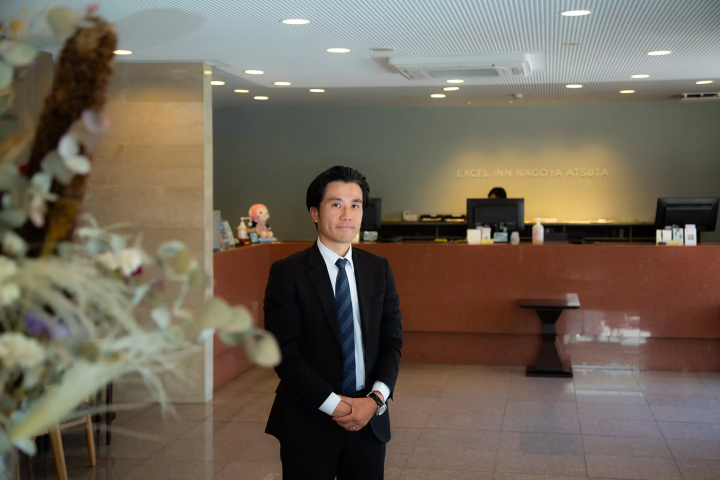
Calling for Port Owners! "Charichari"'s Challenges for Contributing to the Community
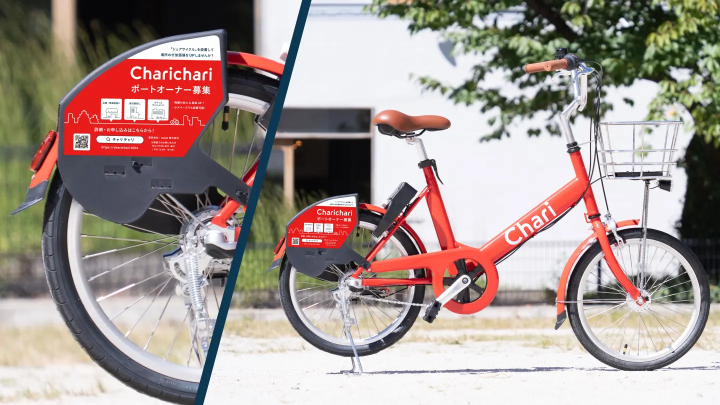
"Charichari" is expected to be a popular form of transportation for tourists in Atsuta Ward, but there are still some issues to be addressed. The first issue is that the number of ports and bicycles is still not sufficient . Ideally, bicycles should be within easy reach, and there are voices calling for more bicycles to be available at ports that are frequently used.
The second is the creation of model courses using bicycle sharing . While bicycle sharing offers flexibility as a form of transportation, there is currently a lack of information on how people can enjoy it. Such initiatives are also essential for revitalizing local areas through bicycle sharing.
In any case, we understand that they are satisfied with the current "Charichari", and we take this as encouragement in the hope that they will continue to evolve the service even further. We would be delighted if any business operators or urban development groups who are willing to set up a port would contact us in order to improve the convenience of tourism in the town.
Interview and writing: Kojiro
""Charichari"" is a bicycle sharing service that allows you to unlock a special red bicycle with a smartphone app and use it easily. Basic bicycles cost 7 yen per minute, and electric assist bicycles cost 17 yen per minute. We aim to provide an experience that allows you to ride whenever and wherever you want. The service began in Fukuoka in February 2018, and has grown to include approximately 3,000 bicycles and over 630 bicycle parking ports, with a cumulative total of over 16 million uses. In addition, the service will be expanded to Nagoya and the Tokyo area from 2020, and will begin in Kumamoto City in April 2022. With per-minute pricing and an easy-to-use app, our service is primarily used for everyday trips in each area.
The contents on this page may partially contain automatic translation.
Related topics
Top articles.

Nagoya: 15 Things to Do in 2024, Ghibli Park, Food, and Travel Tips

How to Travel to Nagoya From Tokyo: A Thorough Comparison 2023
Start planning your trip
Special Features

Popular Searches
Latest news.

Floral Desserts in Kyoto! Itoh Kyuemon's Uji Matcha and Hydrangea Festival

Discover Kyoto's Elegant Geisha Culture at the Gion Kagai Art Museum

Showa Kinen Park Flower Festival 2024: Enjoy Nemophila, Tulips, and More!

A Must for Nature Lovers! Win a Free Stay at Unzen Amakusa National Park

A World of Light and Color! Van Gogh Alive in Japan 2024

Japan's Public Holidays and Long Weekends in 2024

Aeon Mall Okinawa Rycom: A Shopping Mall Featuring a Resort Aura

Suica and Pasmo IC Cards: Prepaid Transportation Passes in Japan

Riding Taxis in Japan: The 6 Best Apps to Grab a Cab

How to Travel to Kyoto From Osaka: The Fastest and Cheapest Ways
New articles.

Very popular with foreign visitors!! Feel like a princess with the Genji-koh Uchikake experience!

Gundam Model Kits: Top 7 Stores in Japan and Collector Tips

3 recommended gourmet foods in Miyako City, Iwate Prefecture!

[Spring/Summer 2024/Fukunone] Sightseeing programs you can experience in Fukui Prefecture ~ Area around JR Tsuruga Station ② ~

[Shizuoka/Izu] June 16th (Sun) Sutra copying session at Shuzenji Temple (reservations required)
"Warm Seats, Precision Spray": Japan's High-Tech Toilets Go Global
Now sales are surging abroad and especially in the United States, led by A-list bidet fans such as Drake, the Kardashians and Alexandria Ocasio-Cortez.

As Japan plays host to a record influx of tourists, one of the country's more private attractions -- the high-tech toilet -- is becoming a must-have in luxury bathrooms worldwide.
With their warm seats and precision spray technology, bidet toilets are the norm in Japan, where more than 80 percent of homes have one, according to a government survey.
Japanese company TOTO, which pioneered the electric bidets it claims have sparked "a global revolution from wiping to washing", says overseas revenue for toilets has roughly doubled from 100 billion yen ($673 million) in 2012.
The pandemic was a key driver, bringing a home-renovation boom but also germ-conscious consumers desperate for an alternative to toilet paper after shelves were cleared by panic-buyers.
Senior TOTO executive Shinya Tamura, who oversees international business, told AFP the brand's growth has been a word-of-mouth success.
When people first learn how the toilets' water jets work, with pressure and temperature controls, "there's an image that it's not pleasant".
But "we can't explain how good it is with words. You need to experience it", Tamura said.
"After a while, most users can't live without it."
The company's international net sales for housing equipment are currently less than a third of those in Japan.
It wants to boost sales in the Americas by 19 percent over two years to "establish a solid position" there and offset less urgent demand in China.
But with more people in the market for a squeaky clean bum, US competitors are challenging TOTO and its Japanese rivals such as Panasonic and LIXIL for their throne.
'Smartest toilet'
At a major tech fair in Las Vegas this year, the marketing manager of US brand Kohler called its Numi 2.0 -- which takes spoken instructions via an in-built Amazon Alexa -- "the smartest toilet that exists".
Just like top-end Japanese models, the Numi 2.0 has an automatic deodoriser and a motion-activated lid that opens when you enter the bathroom and closes when you leave.
Its spray wand has pulsating and oscillating functions, and users can adjust the warm-air dryer in minute detail.
But such pampering comes at a price: around $8,500 to $10,000, compared to around $500 for more basic bidet seats.
Americans who travel to Japan are often inspired to upgrade their toilet, a salesman at Ardy's Bath Collection in Beverly Hills told AFP.
"They see it in the airport, and they see it in public restrooms, and they use it, and they're like, 'wow, this is great,'" he said.
Bidets are "popular everywhere" but it's still a "private experience" and "weird to talk about" for some customers.
Although fancy Japanese-style toilets are fast becoming a status symbol, TOTO's executives have long fought prudishness when trying to expand abroad.
After the US launch of its Washlet bidet in 1986, the firm struggled to place advertisements, and its pop-up event was kicked out of a high-end mall because other stores complained.
'Does it hurt?'
How things have changed in the share-all internet era.
"Why am I nervous? Does it hurt? Is it cold?" 21-year-old Canadian Spencer Barbosa, who has 10 million TikTok followers, said in a clip of her trying a Japanese toilet.
Superstar rapper Drake made a grand public gesture of gifting his friend DJ Khaled luxury TOTO loos in 2022.
And US congresswoman Ocasio-Cortez joked in an Instagram video last year that she was shopping for a bidet after going to Japan because "life will never be the same".
Funnily enough, when TOTO first began selling bidets -- to hospitals in Japan -- it imported them from the United States, but users complained that the stream was unstable.
The company was founded in 1917 as a father and son from a wealthy business family tried to bring Western-style ceramic toilets to Japan.
With sewer systems still undeveloped and squat-style toilets common, the business struggled, so they relied on tableware sales until habits began to change after the 1970 World Expo in Osaka, said Junichi Koga, head of TOTO's history museum.
More than 300 employees helped develop and test the Washlet by specifying their preferred location for the water jet.
Now, worldwide, TOTO has sold 60 million Washlets -- featured in episodes of "The Kardashians" and "South Park", which parodied the company as "TOOTTOOT".
As the bidet craze grows, even the trepidatious might be converted in time, the Ardy's salesman said.
Promoted Listen to the latest songs, only on JioSaavn.com
He recommends customers put in the necessary electrics when they remodel their bathroom, telling them: "You could always buy it down the line".
(Except for the headline, this story has not been edited by NDTV staff and is published from a syndicated feed.)
Track Budget 2023 and get Latest News Live on NDTV.com.
Track Latest News Live on NDTV.com and get news updates from India and around the world .
India Elections | Read Latest News on Lok Sabha Elections 2024 Live on NDTV.com . Get Election Schedule , information on candidates, in-depth ground reports and more - #ElectionsWithNDTV
Watch Live News:


IMAGES
VIDEO
COMMENTS
Here's our pick of the 10 best places to visit in Japan. 1. Tokyo. Best for contemporary culture. Tokyo is a city forever reaching into the future, pushing the boundaries of what's possible on densely populated, earthquake-prone land, and building ever taller, sleeker structures. It's Japan's top spot for contemporary art and architecture ...
8. Chūbu-Sangaku National Park and the Japanese Alps. Chūbu-Sangaku National Park and the Japanese Alps. Japan boasts a number of outstanding areas of natural beauty, many of them designated as national parks or, in some cases, UNESCO World Heritage Sites.
Nikko. #3 in Best Places to Visit in Japan. Nikko is the place to go to see lavish architecture surrounded by nature. Head to Nikko National Park, one of Japan's oldest national parks, to enjoy an ...
Zen temple adorned in gold leaf with serene gardens and reflective lake, ideal for tranquil moments and photogenic views amidst historical ambiance. 3. Kiyomizu-dera Temple. Serene temple complex with stunning architecture and panoramic views, known for its pure water streams and tranquil gardens.
Japan is a country with a fascinating heritage and interesting history - it's just so much fun visiting its many attractions. You can see things like old temples and shrines, royal palaces, hot springs, breathtaking gardens, and even quirky fun attractions like real life Mario Kart.
Nature Wada Beach. Nature Nishibama Beach. Relaxation Beppu Beach Sand Bath. Nature Aoshima Beach Park. Nature Kamakura Beaches. Action & Adventure Kujukuri Beach. Nature Okinoshima Park. Nature Jodogahama Beach. Nature Shirarahama Beach.
Aladimirzakharov/Getty. Off the coast of Hiroshima, Miyajima Island has long been regarded as one of the most scenic spots in Japan. It's often associated with images of the torii gate of the sixth century Itsukushima Shrine; during low tide, you can walk up to the gate, but when the tide is high, it appears to float.
The official site of Japan National Tourism Organization is your ultimate Japan guide with tourist information for Tokyo, Kyoto, Osaka, Hiroshima, Hokkaido and other top Japan holiday destinations. We offer travel information to make your Japan travel more comfortable and enjoyable.
Kinkakuji Temple. One of Kyoto's most famous attractions, this temple was originally built in 1397 as a residence for shogun Ashikaga Yoshimitsu. The structure was completely covered in gold leaf, earning it the name…. 3. Kiyomizu-dera Temple. This most-visited temple in Kyoto was built to honor Kannon, the goddess of mercy.
Arita: The best place to visit in Japan for porcelain. Kamakura: One of the most spiritual places to visit. Osaka: One of the best places in Japan for foodies. Hiroshima: One of the humbling places to go in Japan. Kanazawa: An alternative capital of culture. Hakone (Mount Fuji): One of the best for onsen.
5) Hakone. As Okinawa is known for its glorious beaches, the small town of Hakone is known for the natural beauty of its mountainous terrain, waterways, and hot springs. By far the most prominent and well-known attraction is Lake Ashi that makes Hakone one of the most fun places to visit in Japan.
13. Hasedera Temple (Kamakura, Kanagawa Prefecture) Hasedera Temple enshrines a statue called the Juichimen Kannon, one of the largest wooden statues of Kannon in Japan. First opened in 736, this temple is sometimes known as the Flower Temple for its seasonally flowering plants.
11. Ishigaki. Located west of Okinawa, Ishigaki is Japan's premier beach destination and makes a good base to explore the other islands in the Yaeyama archipelago. Blessed with Japan's best beaches, it is particularly popular with families since the beaches at Fusaki and Maezato are net-protected.
Japan's crown jewel and arguably the most beautiful place in the country, Mt Fuji is a must for any visitor. There are plenty of places to see the grand mountain, but the views from Arakurayama ...
And a Few More Places to Go in Japan. These Japan tourist attractions and off-the-beaten-path gems are on our list for our next trip: Kamakura - Beaches, Buddhas, hikes and vegetarian-friendly food. You could visit as a day trip from Tokyo. The Izu Peninsula - Rugged coastline, mountains, and hot springs not far from Tokyo.
1. Golden Pavilion, Kyoto. The Golden Pavilion is one of Japan's most popular tourist attractions, and it is not difficult to see why. Also known as Kinkaku-ji, this Zen Buddhist temple is situated in Kyoto. It is highly regarded for its stunning architecture.
When it comes to the greatest cities in the world, you cannot do better than Tokyo. A juxtaposition of deep tradition and fast-paced, modern energy, Tokyo, the capital city of Japan, is one of the best places to visit in Asia.It is home to the Imperial Palace and the seat of Government and Parliament, as well as luxury hotels, Michelin-starred restaurants, and fantastic shopping.
Japan Tourist Places. Mount Fuji, Tokyo Tower, Tokyo Skytree, Tokyo Disneyland, Osaka Castle, Tempozan Giant Ferris Wheel, Universal Studios Japan, Osaka Aquarium Kaiyukan and many more. The Japan Trip fascinating places to visit in Japan are just awe inspiring and would entice you a fall for them. You will come across some of the majestic ...
Tourism in Japan is a major industry and contributor to the Japanese economy. Foreigners visit Japan to see natural wonders, cities, historic landmarks, and entertainment venues. Japanese people seek similar attractions, as well as recreation and vacation areas. In 2019, Japan attracted 31.88 million international tourists. [1]
DESTINATIONS. The islands of Okinawa are as diverse as they are plentiful, stretching from the main island in the north to Ishigaki and beyond in the south. There are 160 islands large and small, inhabited and uninhabited. Authentic Okinawan experiences await, with cultural treasures, outdoor adventure, and world-class diving just some of the ...
The city hosted the 1972 Winter Olympics and is one of the best places in Japan to enjoy the winter season. Come in early February and attend the Sapporo Snow Festival. The festival draws over 2 ...
Attractions and skiing. Tickets for the contemporary Mori Art Museum or the fine arts institute the Nezu Museum (both located in Tokyo) are 1,600 yen ($10). Entrance into the interactive digital art experience teamLab Borderless at the new Azabudai Hills urban village is 3,800 yen ($24), to get a sense of how much it will cost to soak up some culture in Japan.
THINGS TO KNOW. Address: 10-3 Midoricho, Tachikawa, Tokyo 190-0014. Hours: 10 a.m. - 5 p.m. Tues., - Sat. Closed Sundays and Mondays. Parking: Free but limited it is recommended to use public transportation or a bike. Website: National Institute of Polar Research, Antarctic and Arctic Science Museum (nipr.ac.jp)
Kushiro & Hokkaido East. Gion & Higashiyama. Ishigaki Island. Around Fukuoka City. Kiyosato & Hokuto. Naha. Sendai City. Hiroshima City. Check out our Japan map, explore Japan's destinations and travel highlights in this comprehensive guide to where to visit in Japan.
It was dug in the 1930s-1940s by the villa's owner for his daughter, who took the train from Kita-Kamakura to her school in Tokyo daily. After the war, he founded a kaiseki restaurant called Kō ...
MATCHA is a media platform that introduces travel information for international visitors to Japan. Our articles feature not only places to visit, but also hotels, hot spring facilities, local food and dining, shopping, access to tourist destinations, and recommended itineraries, all provided in up to 10 languages.
Kitakyushu, Japan: As Japan plays host to a record influx of tourists, one of the country's more private attractions -- the high-tech toilet -- is becoming a must-have in luxury bathrooms worldwide.
One of our favorite places in Kyoto 壟 Check out The Common One Bar https://sunshineandsanddollars.com/world-travel-japan-trip-kyoto-day-eight/...